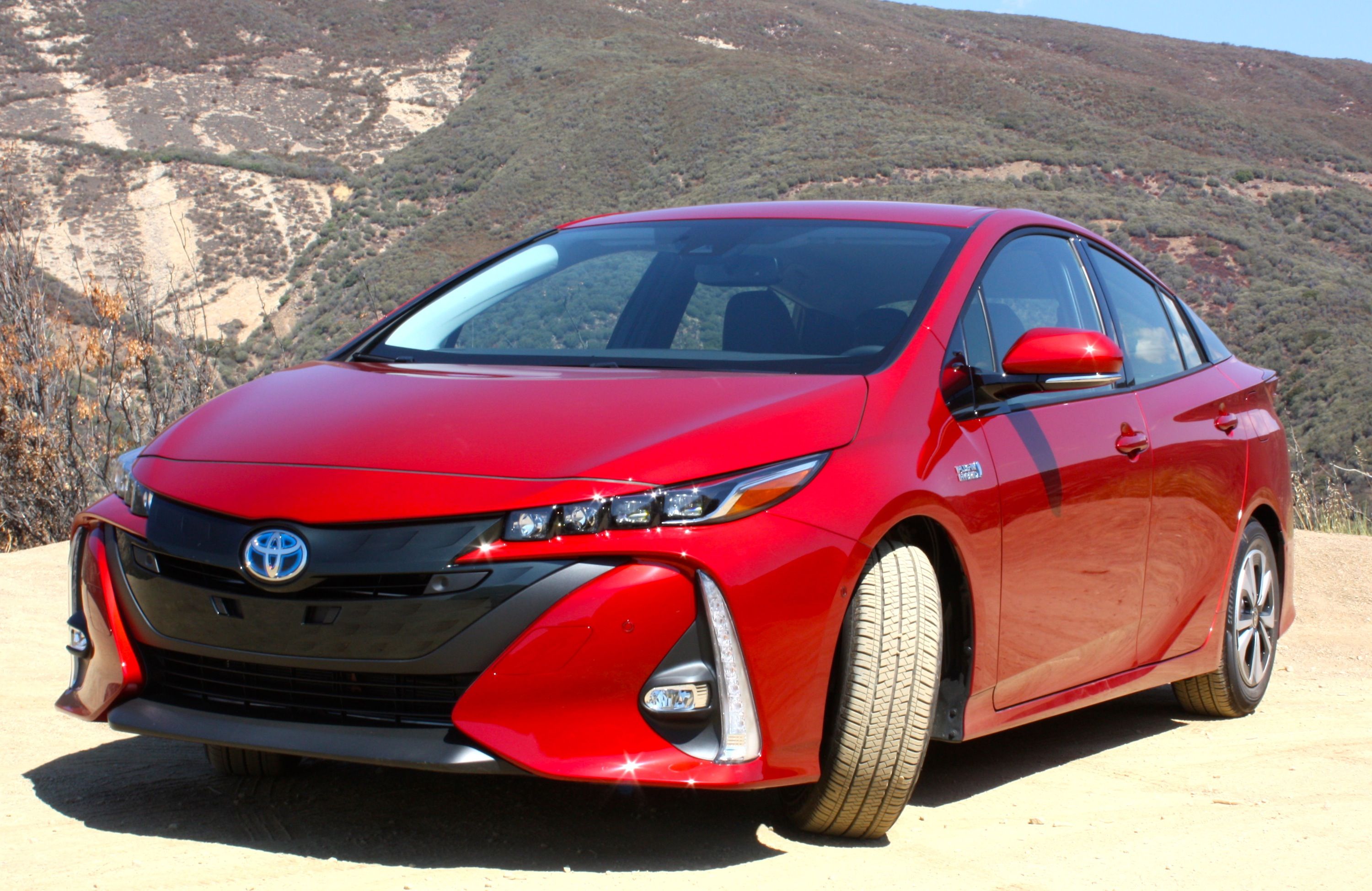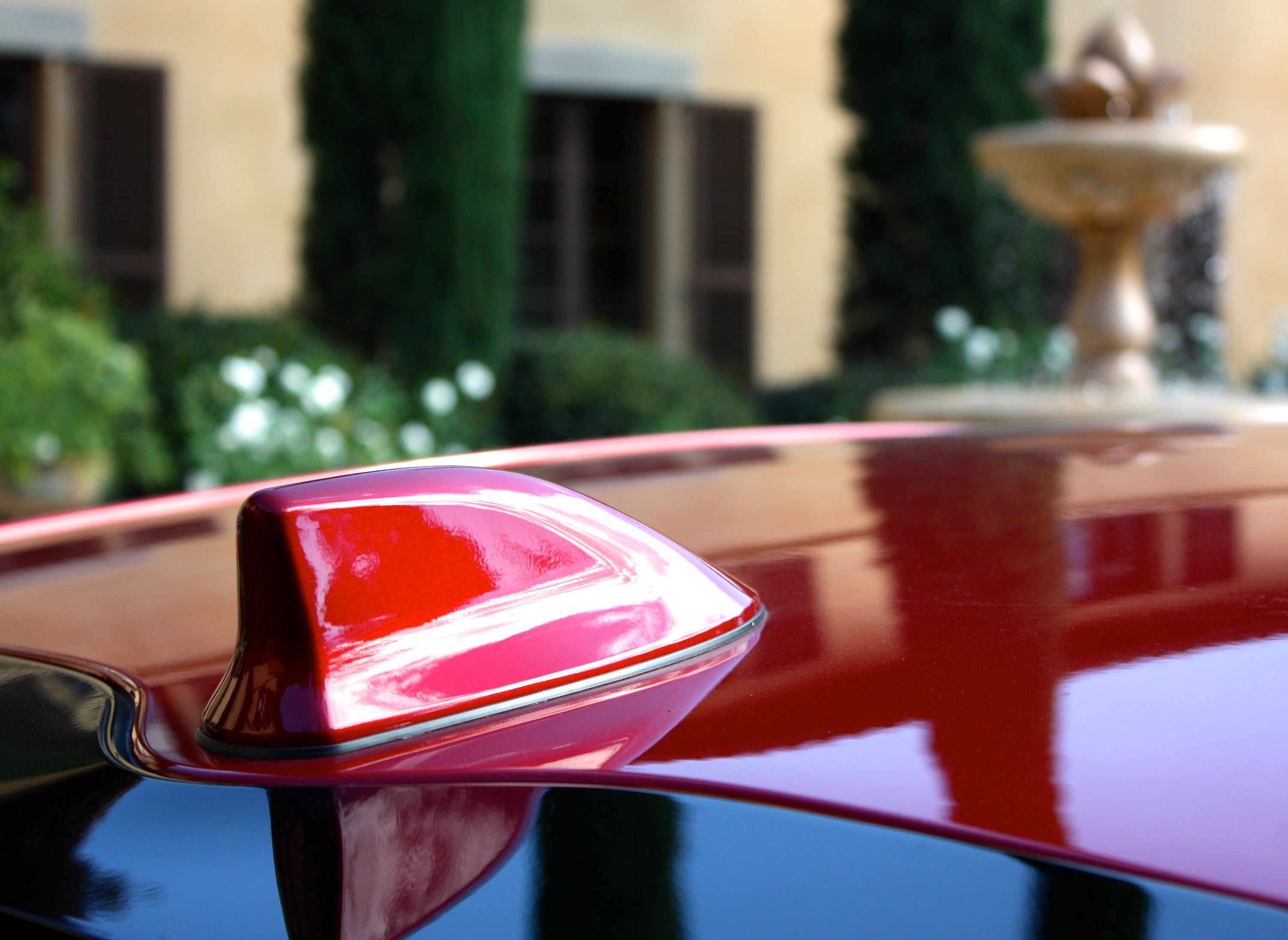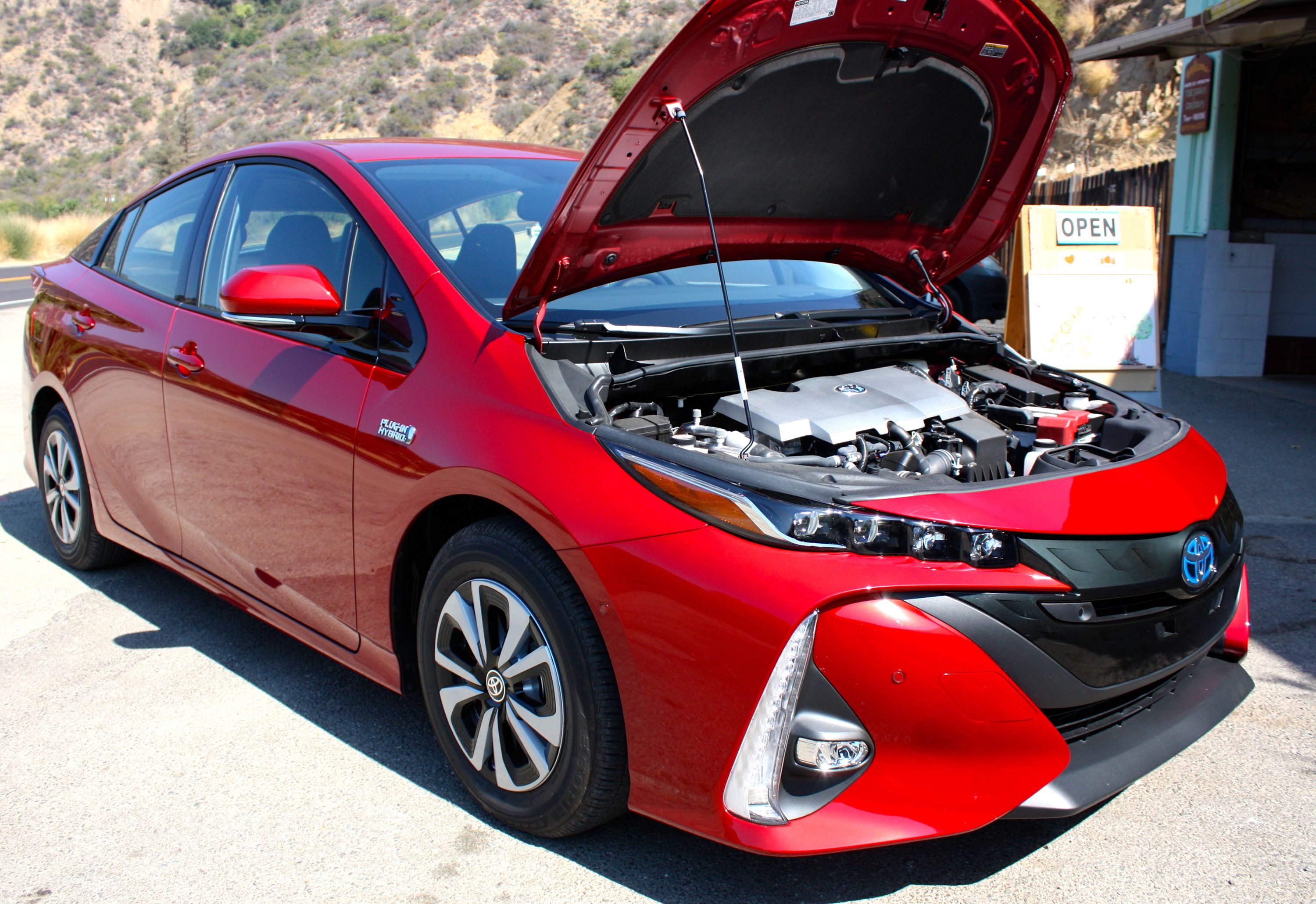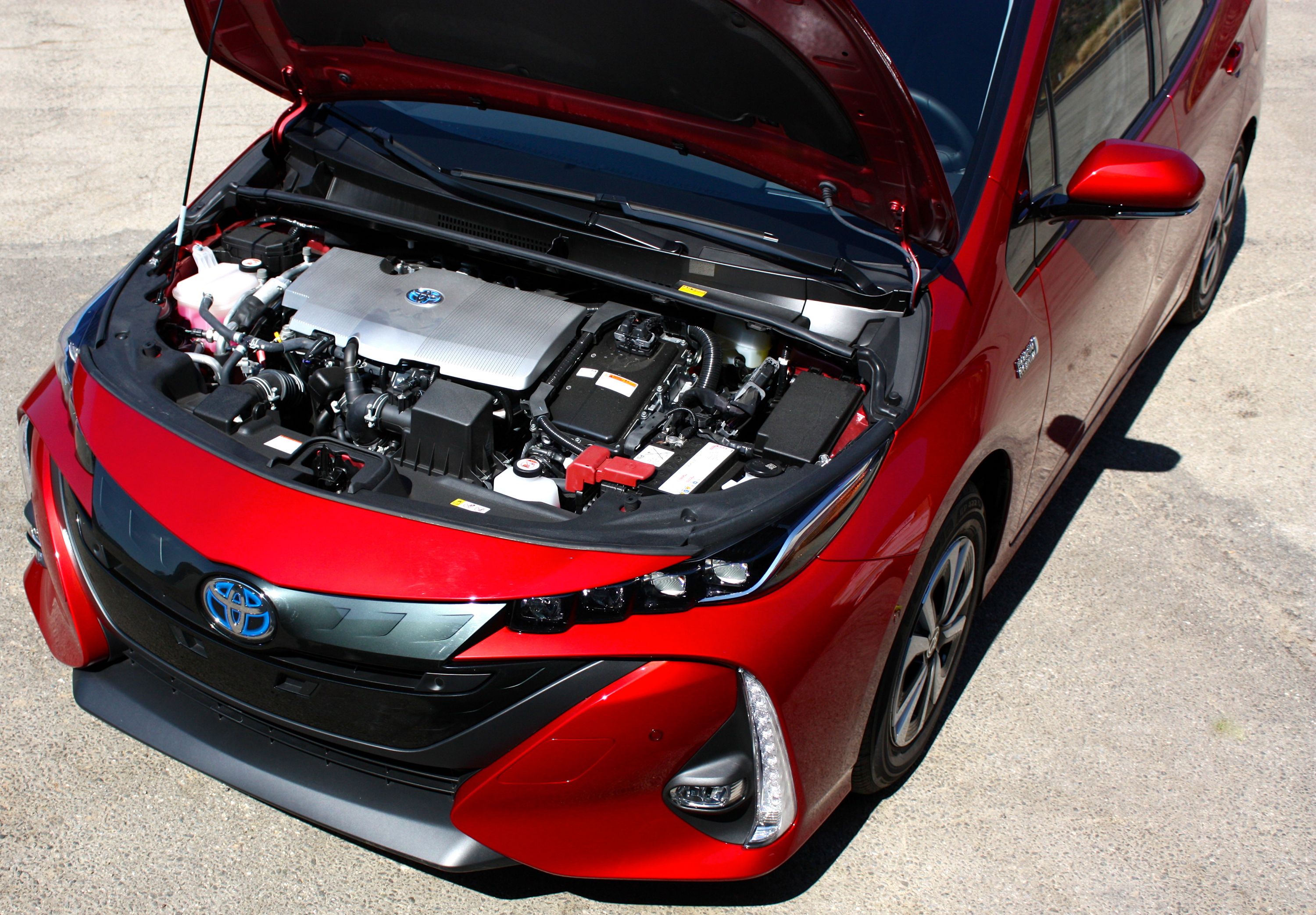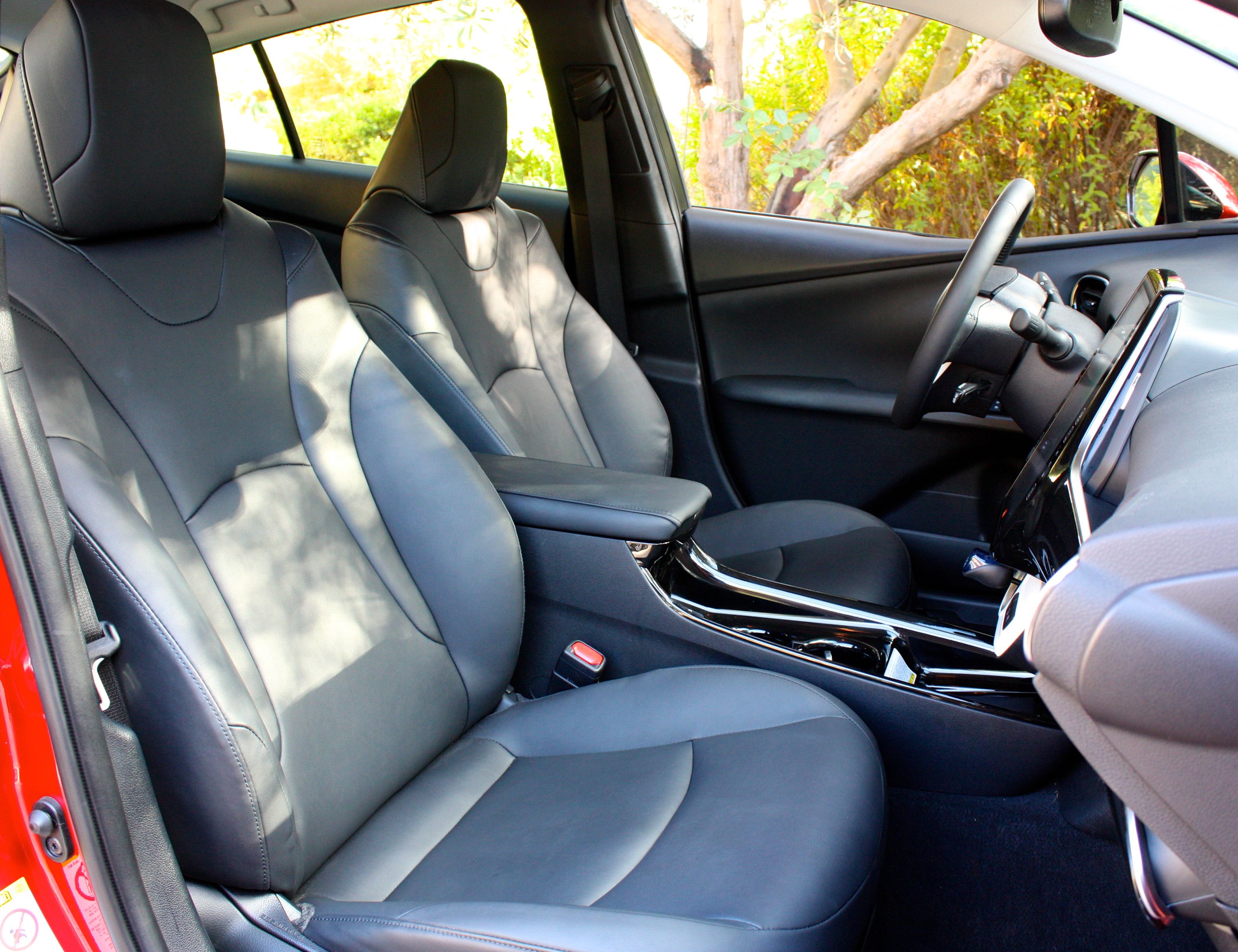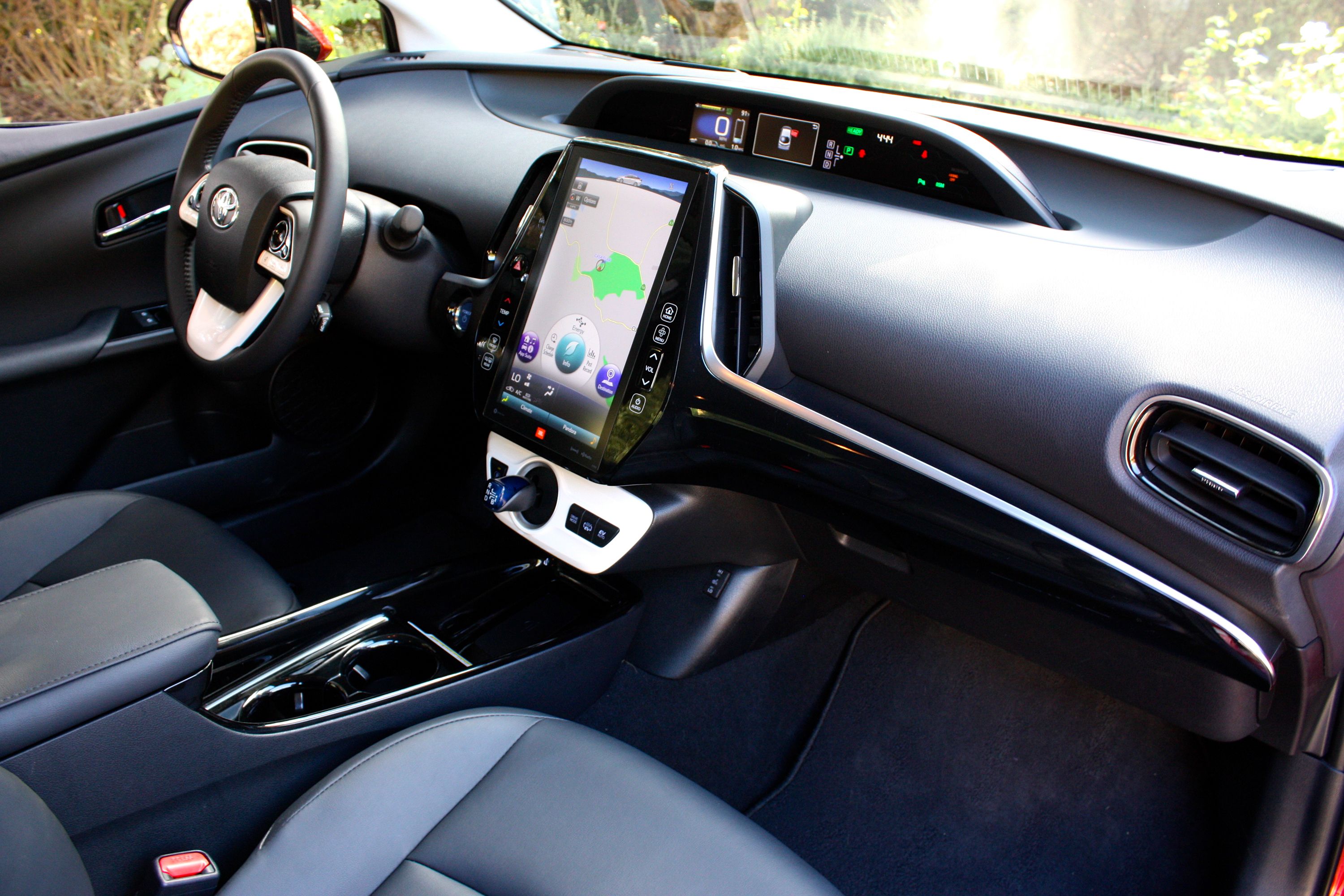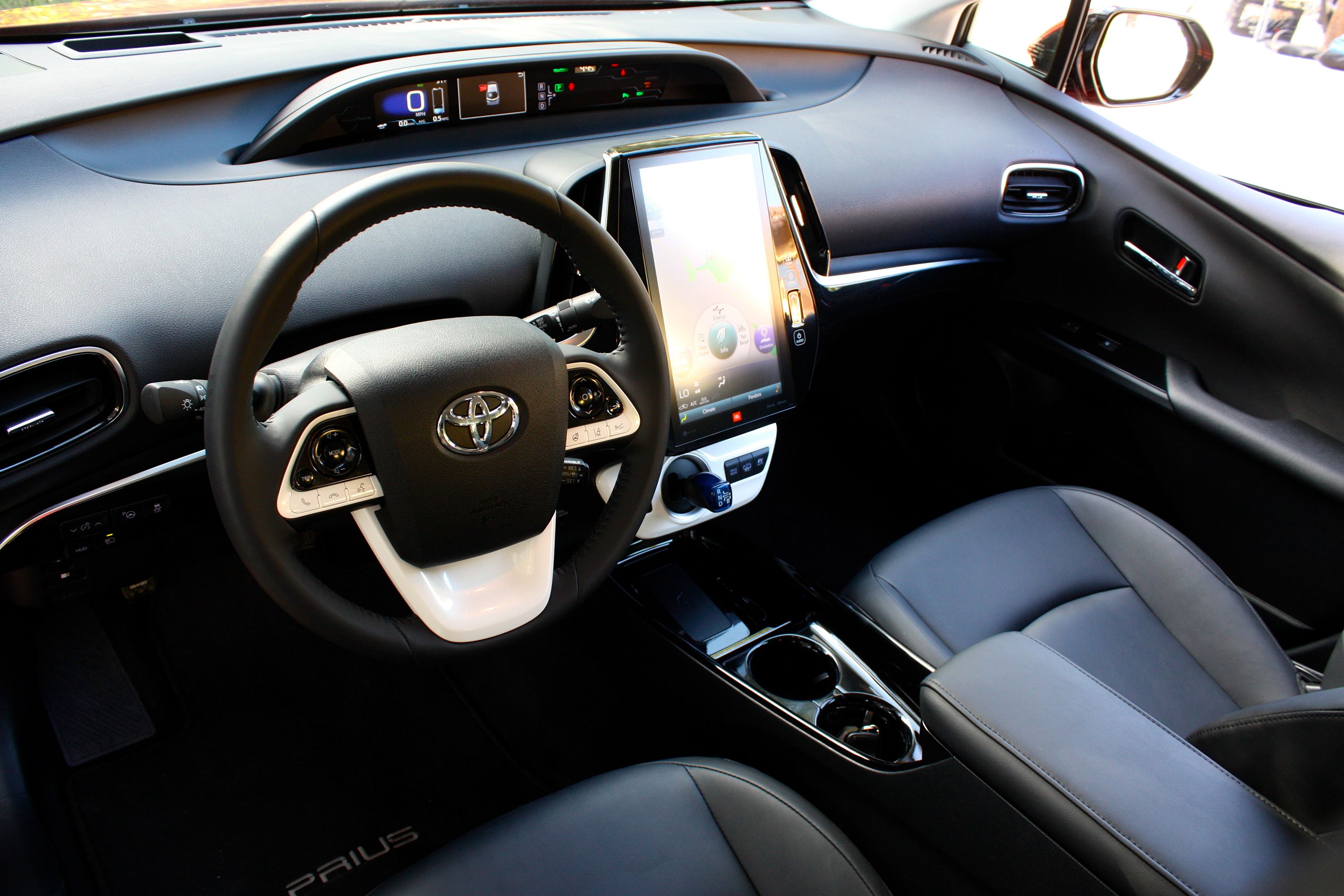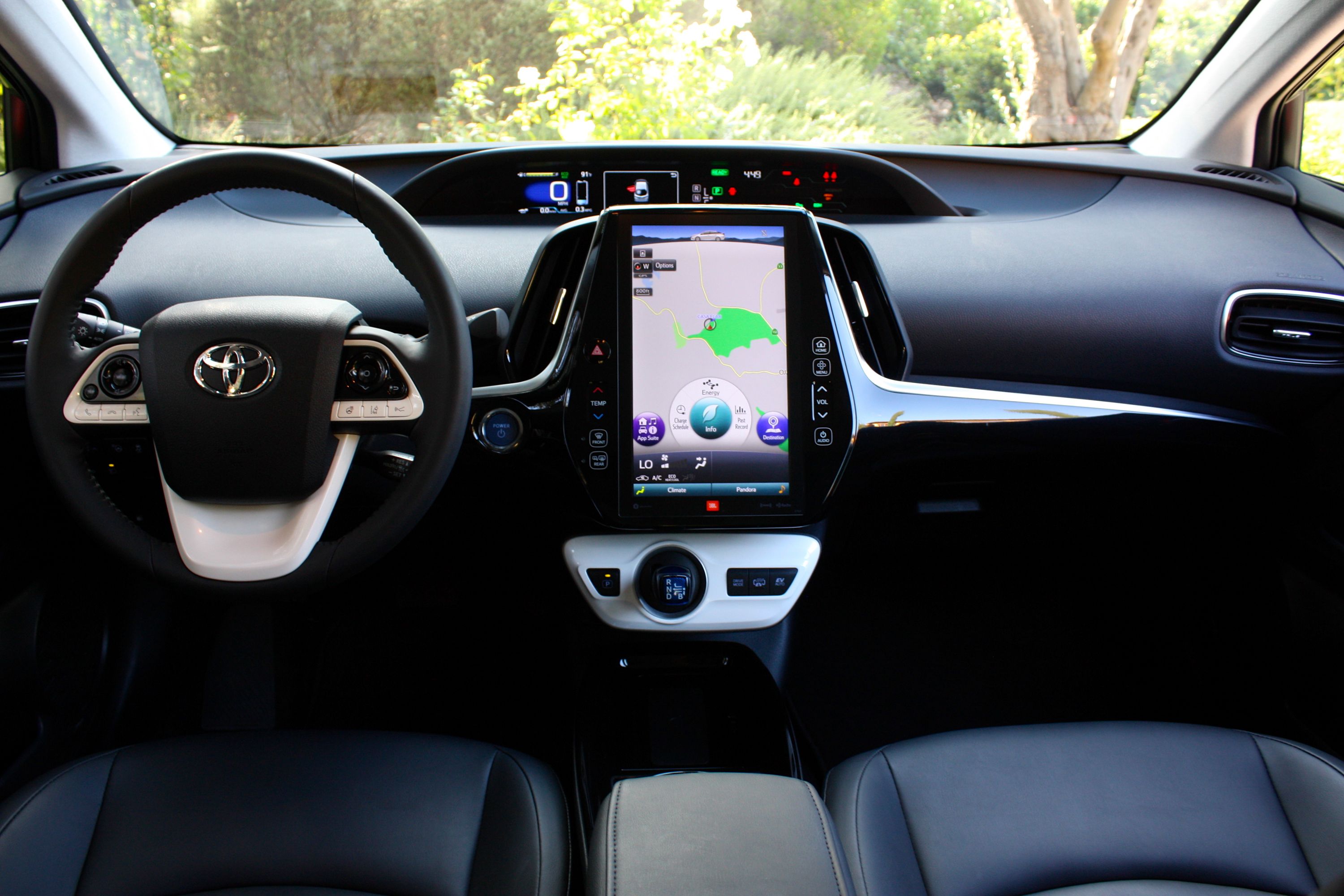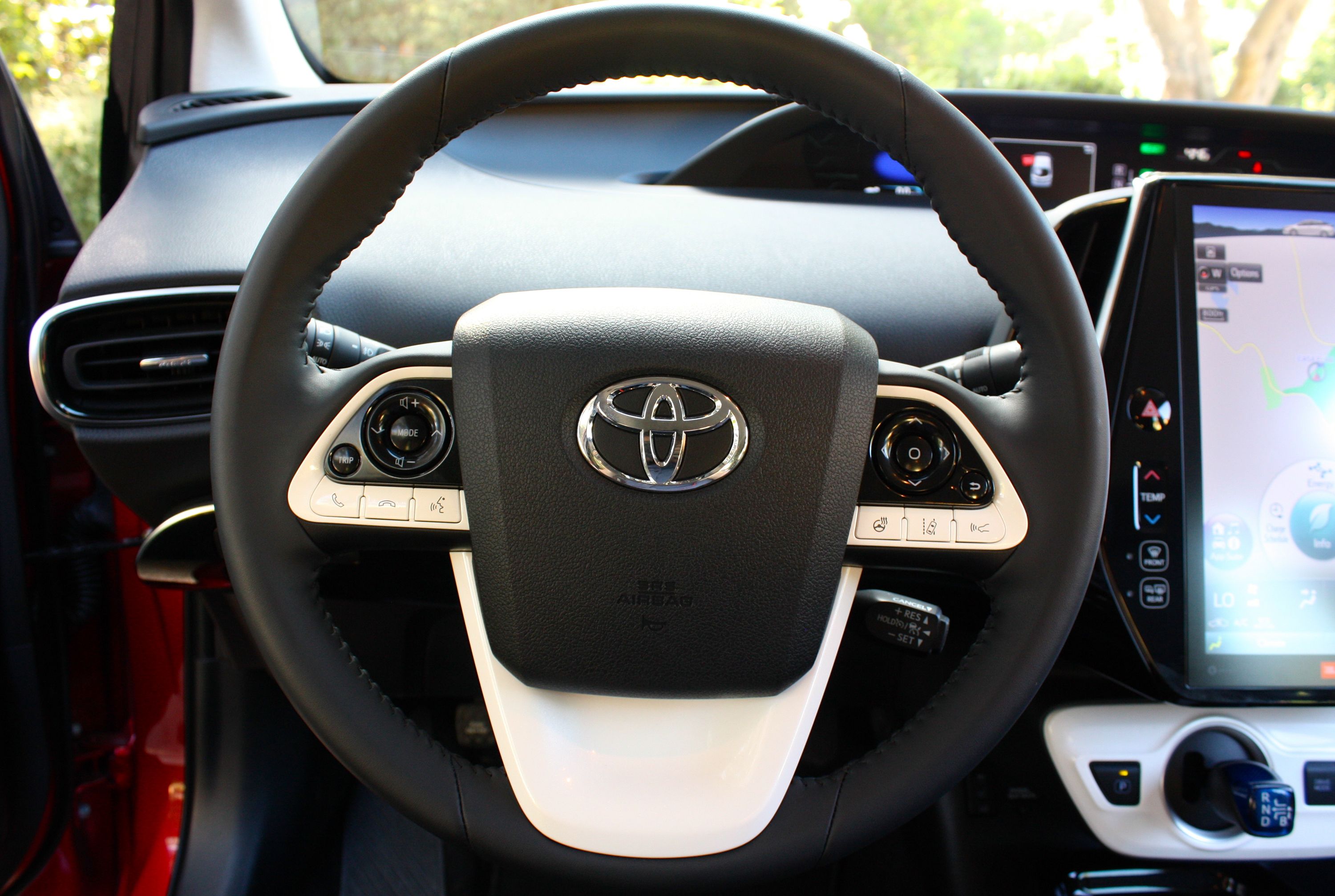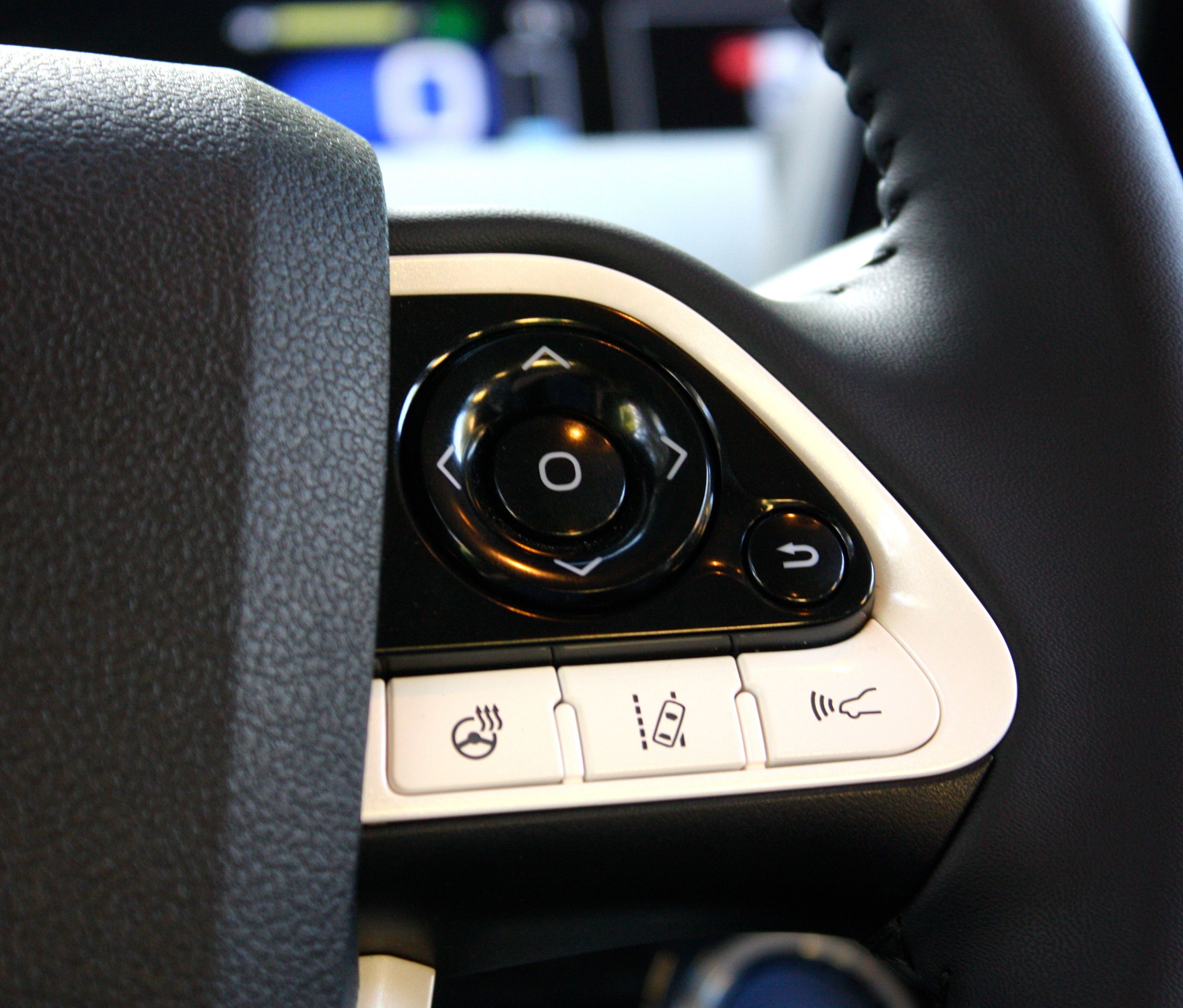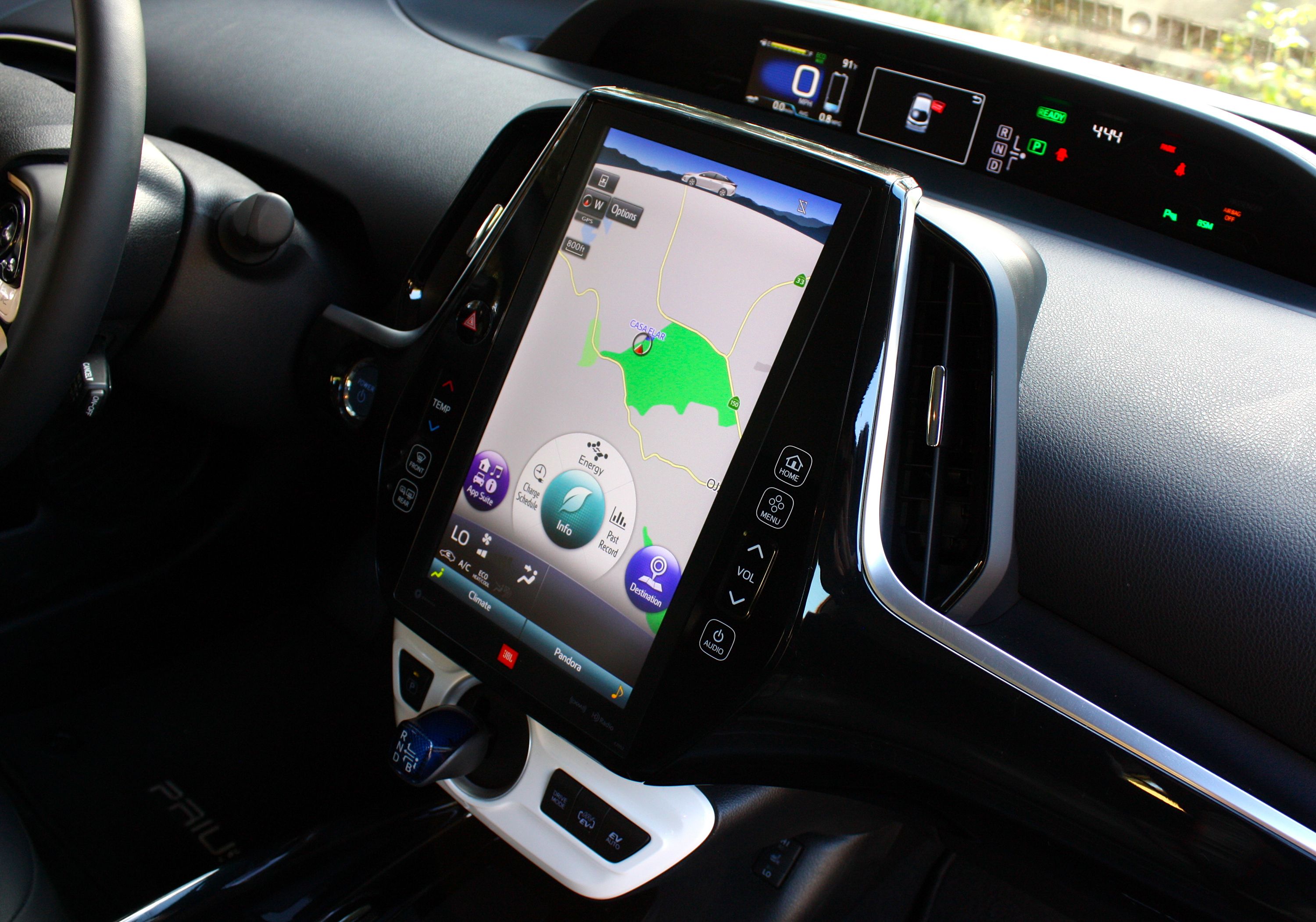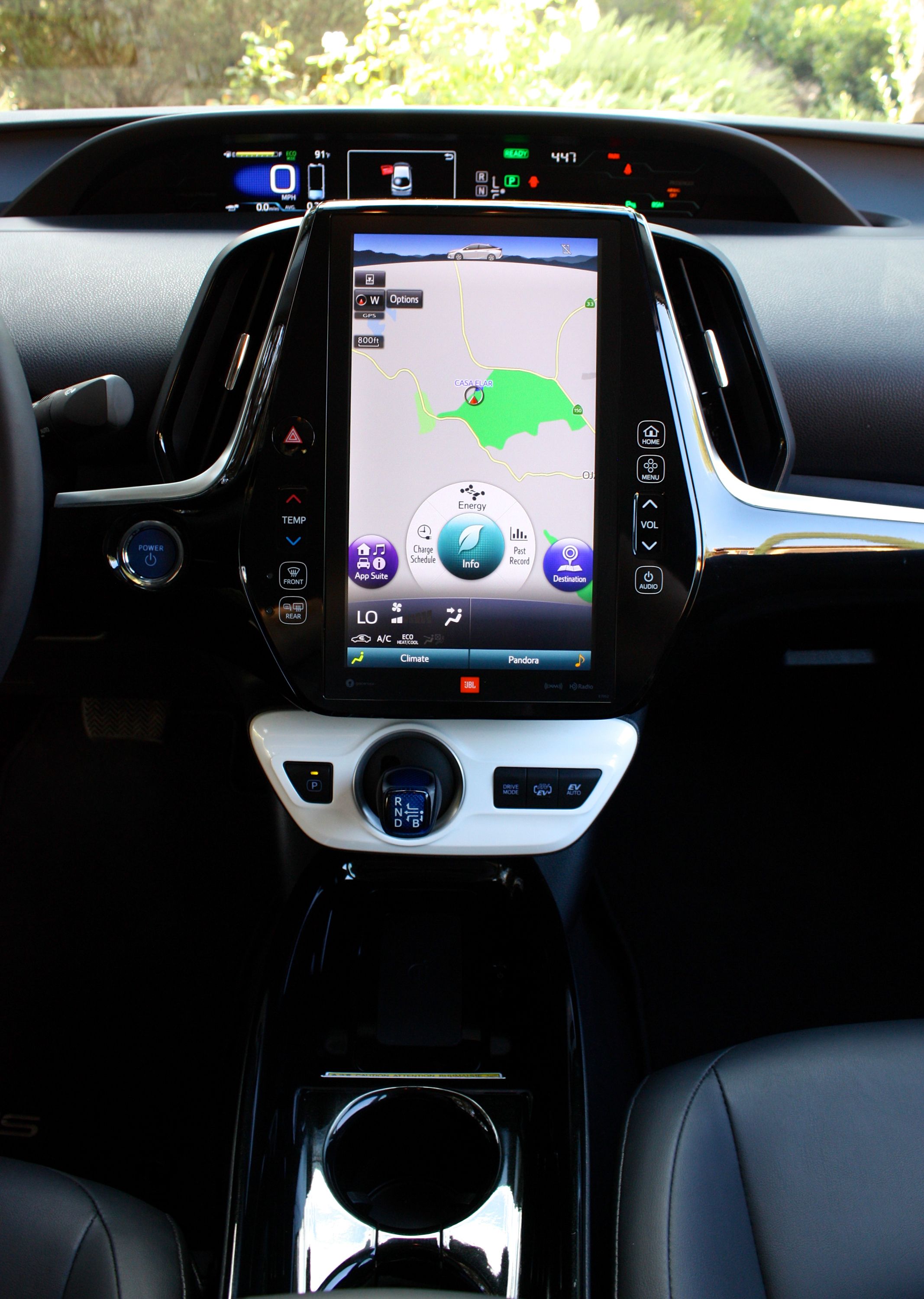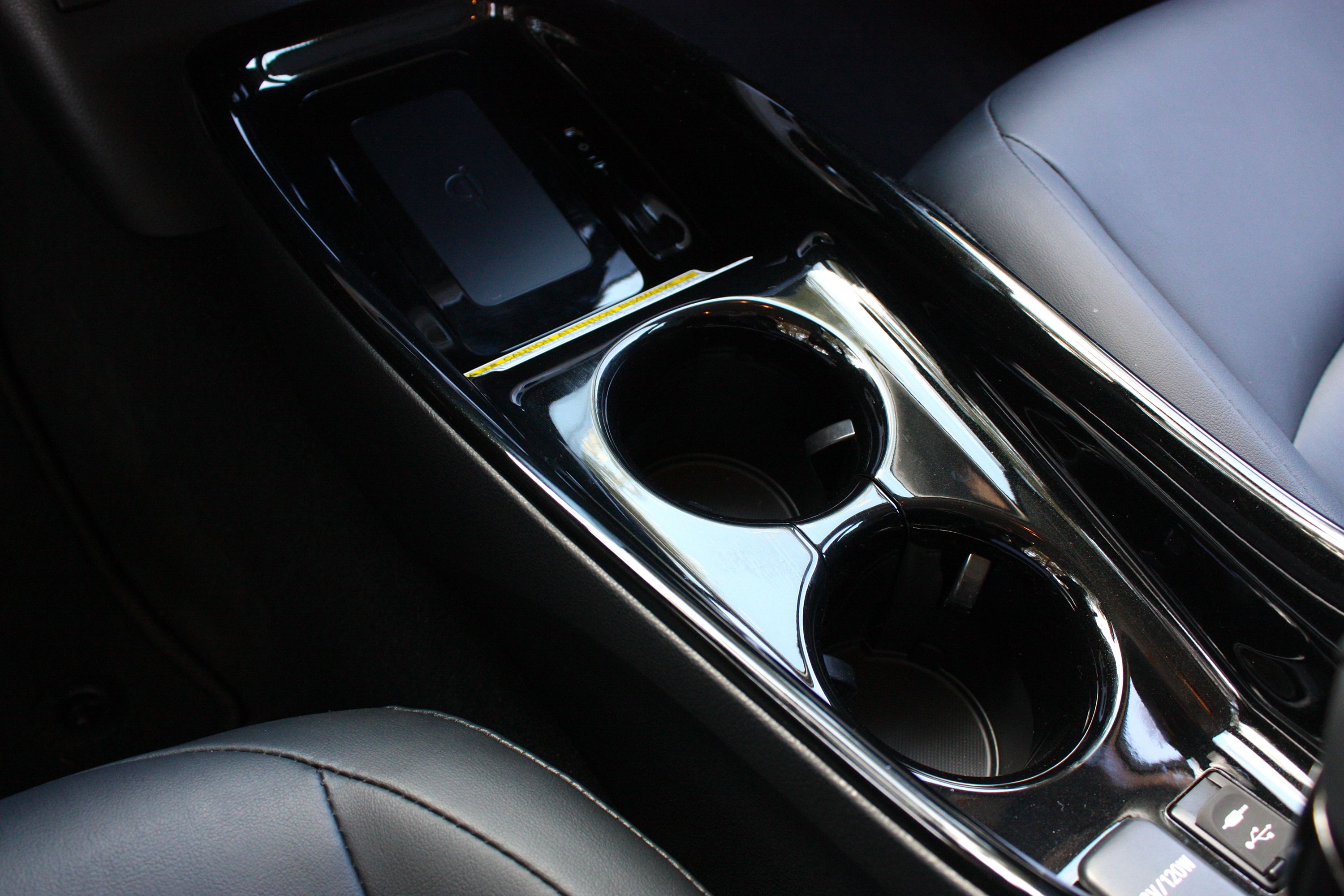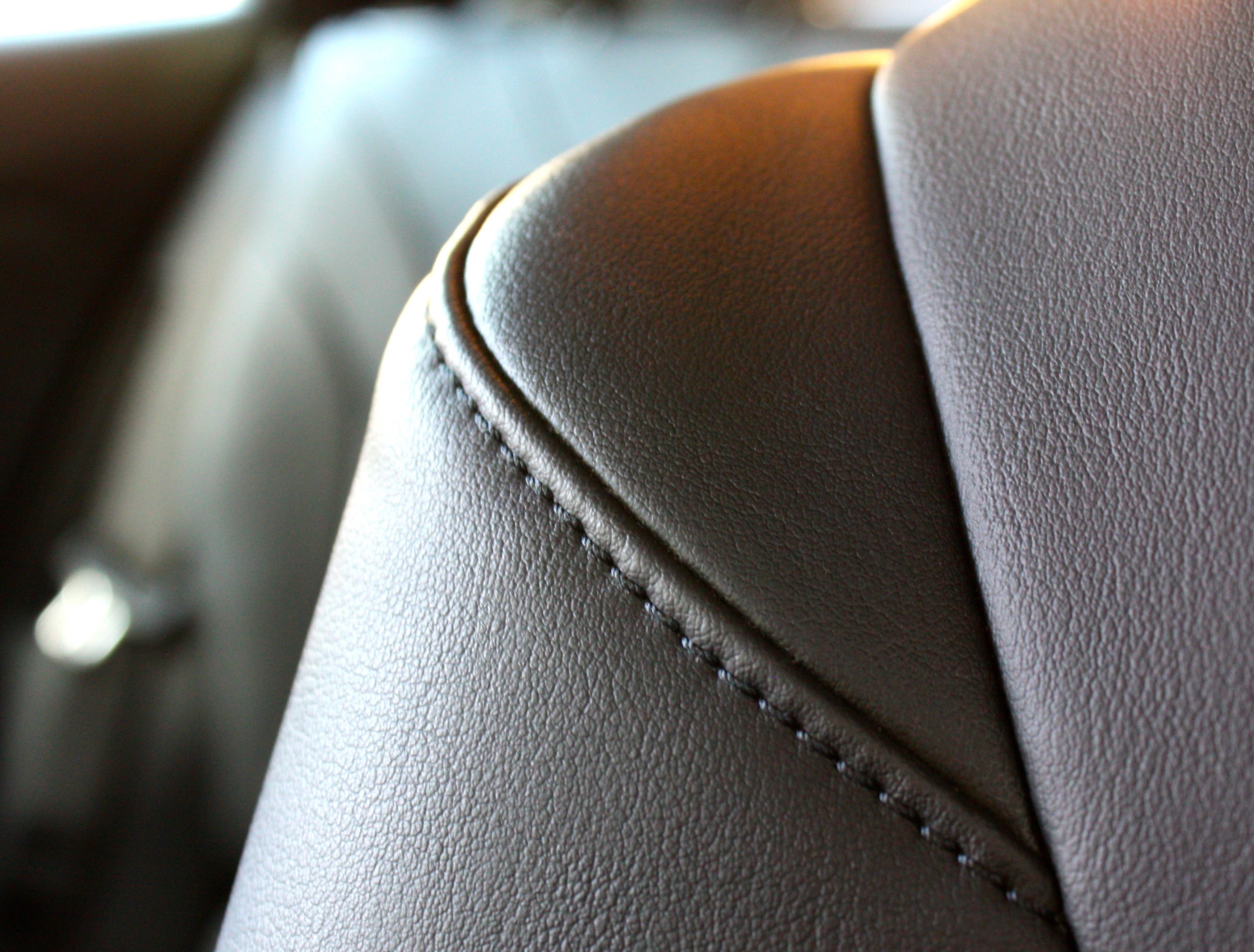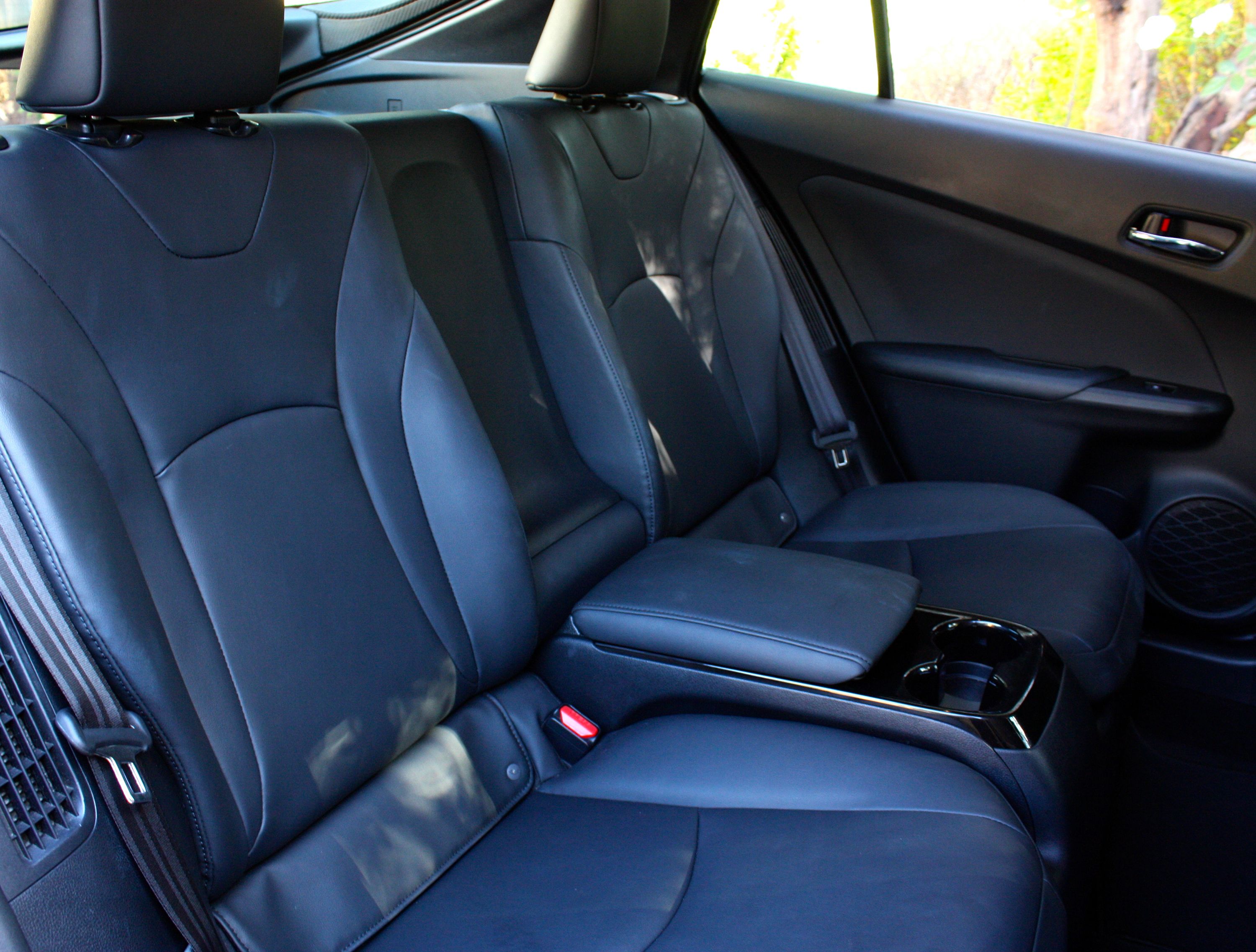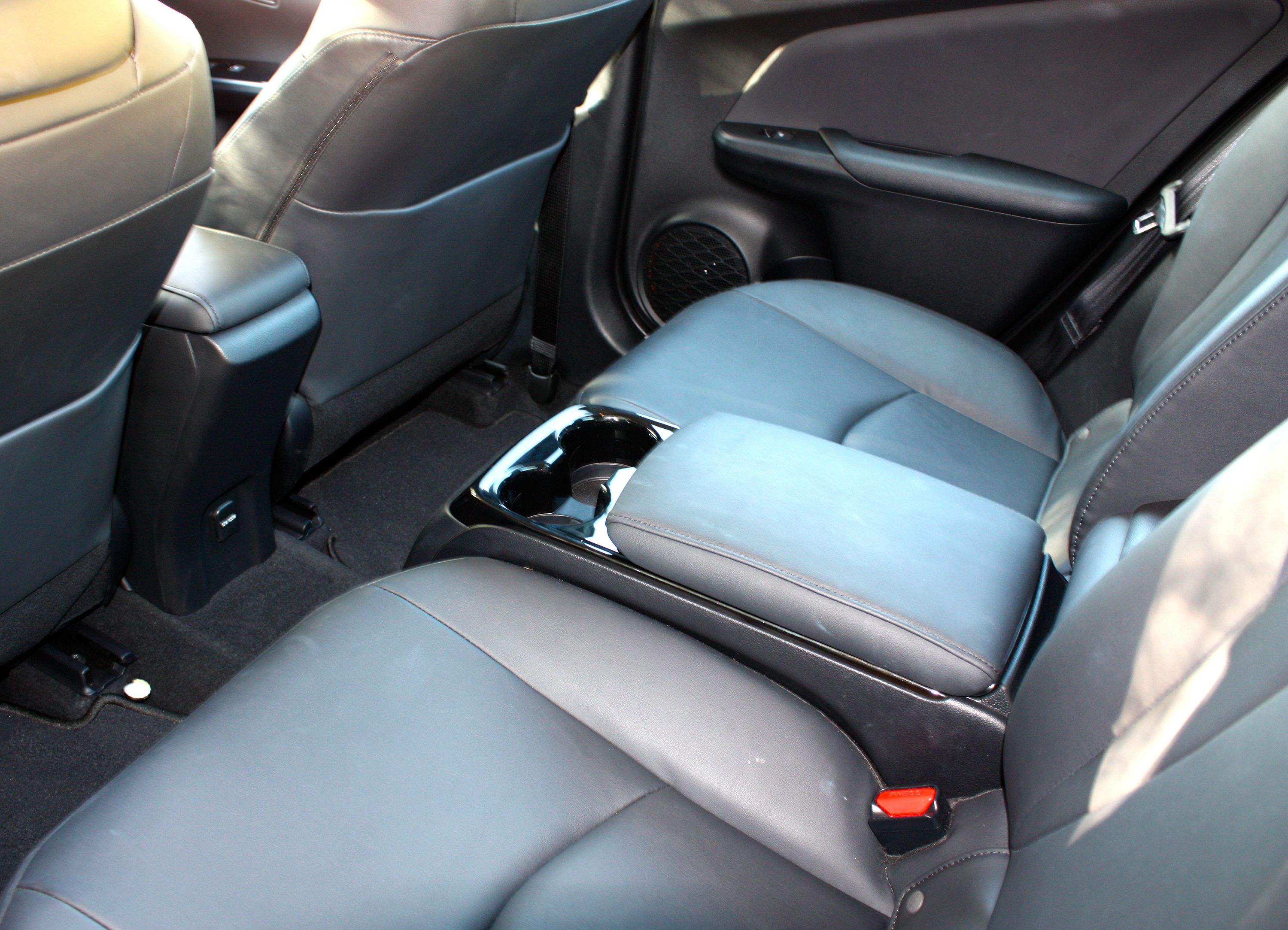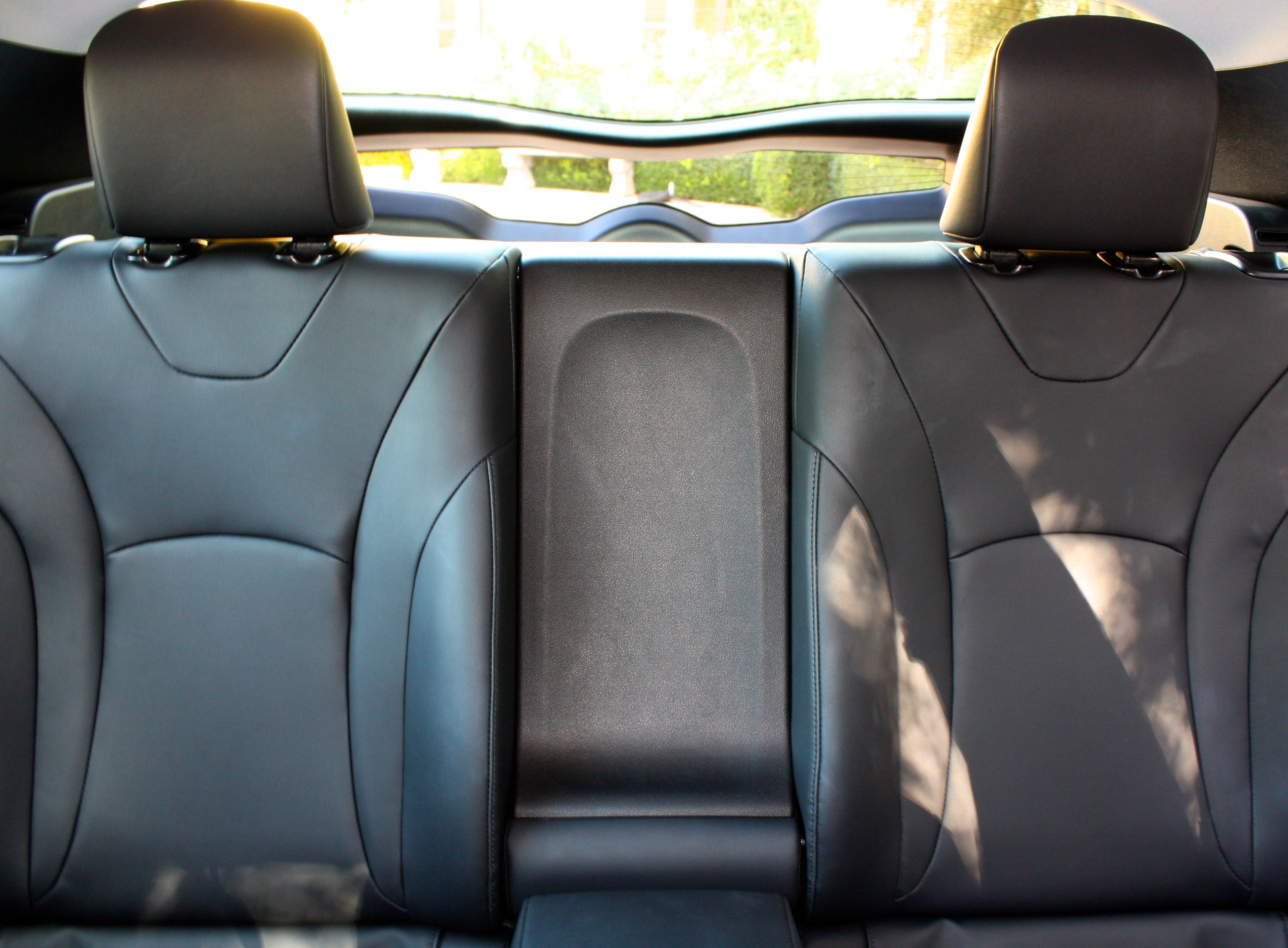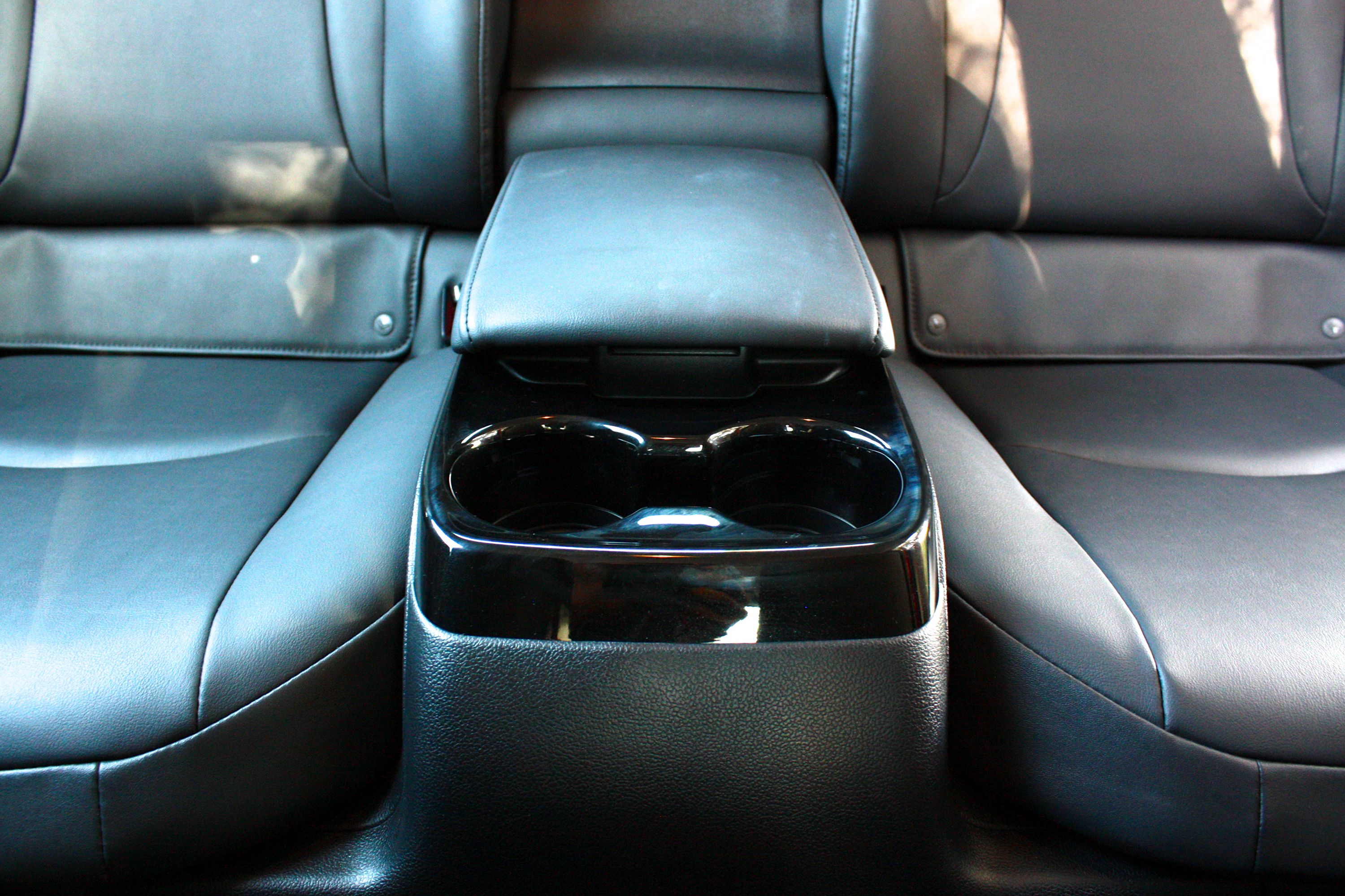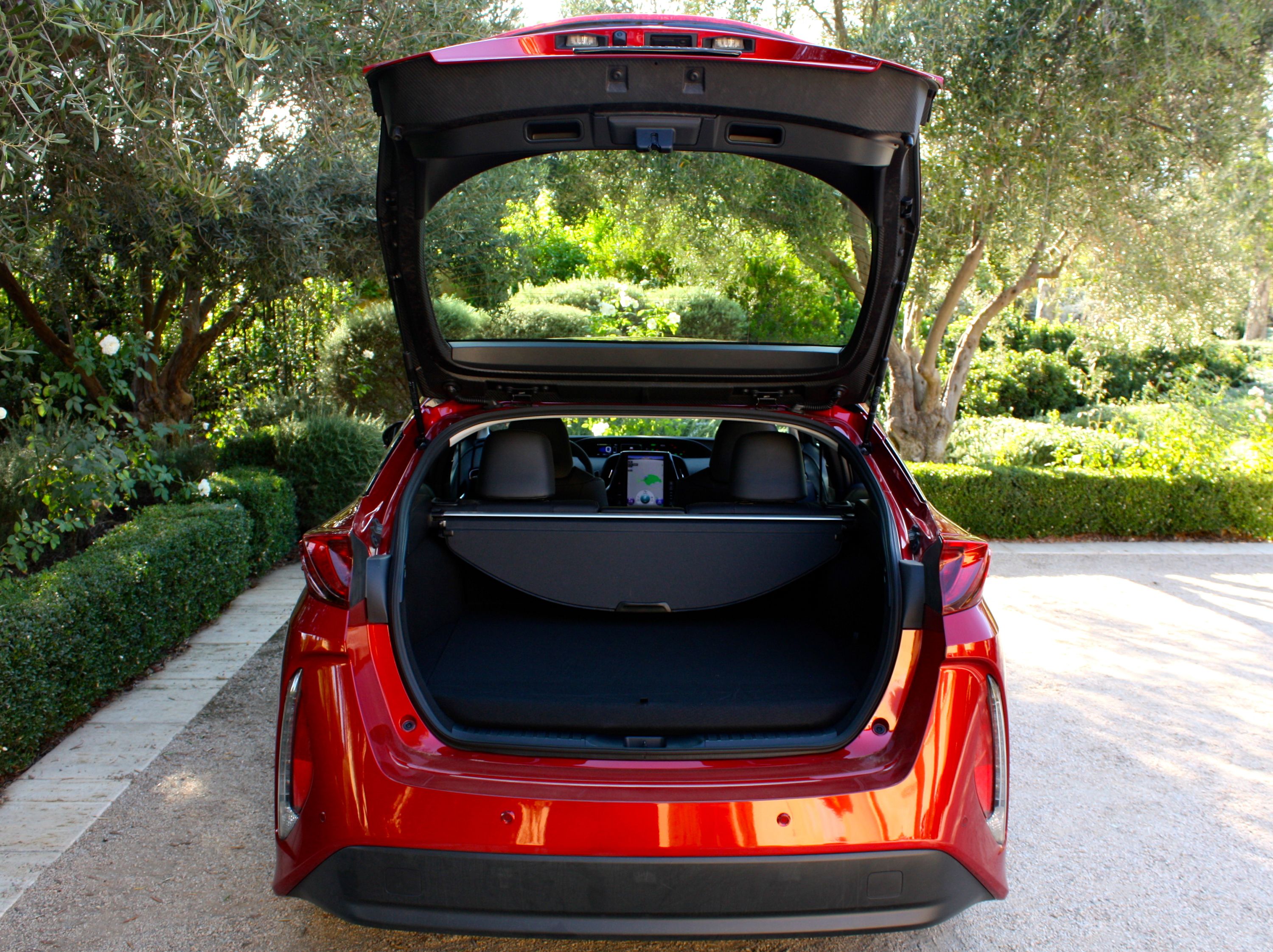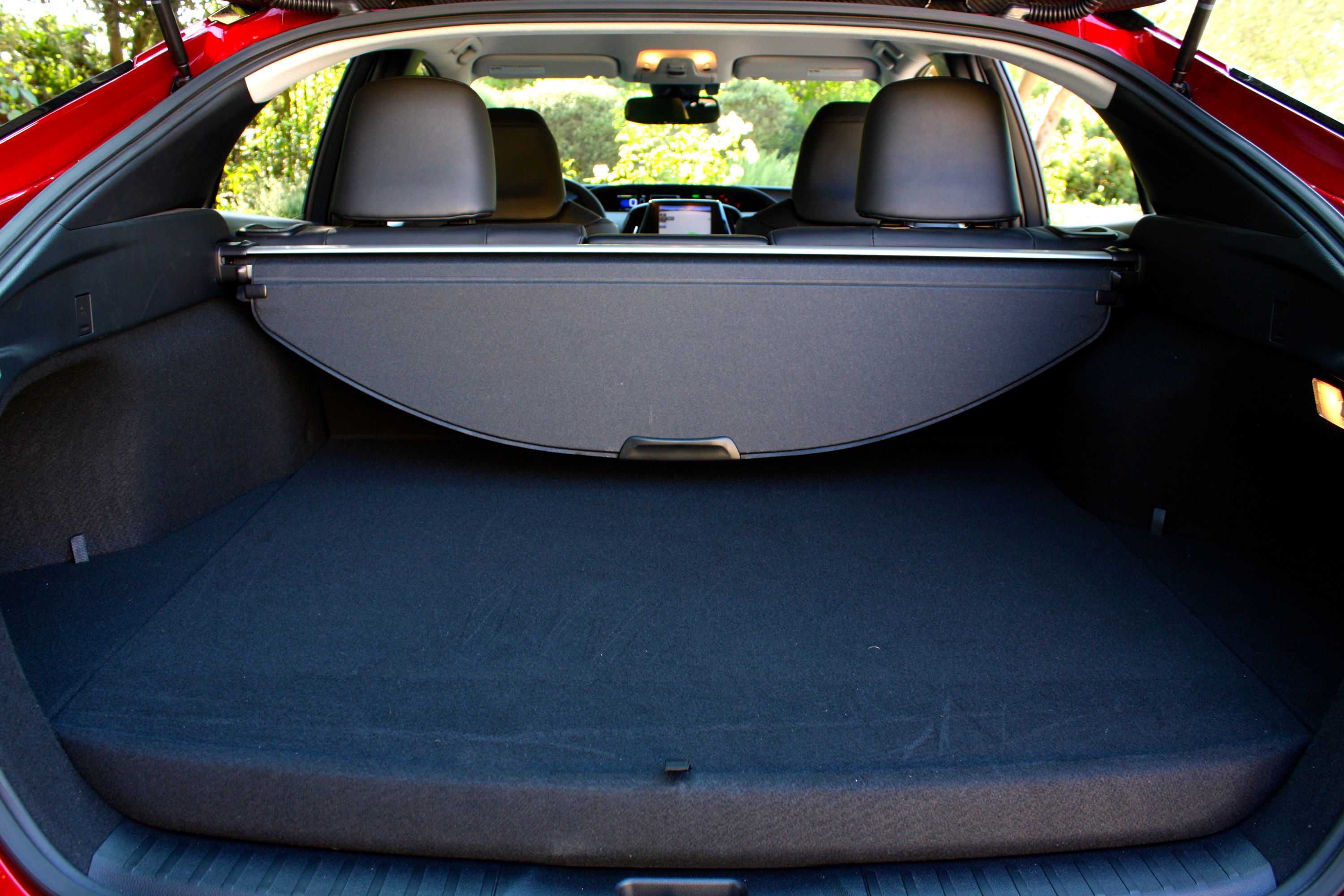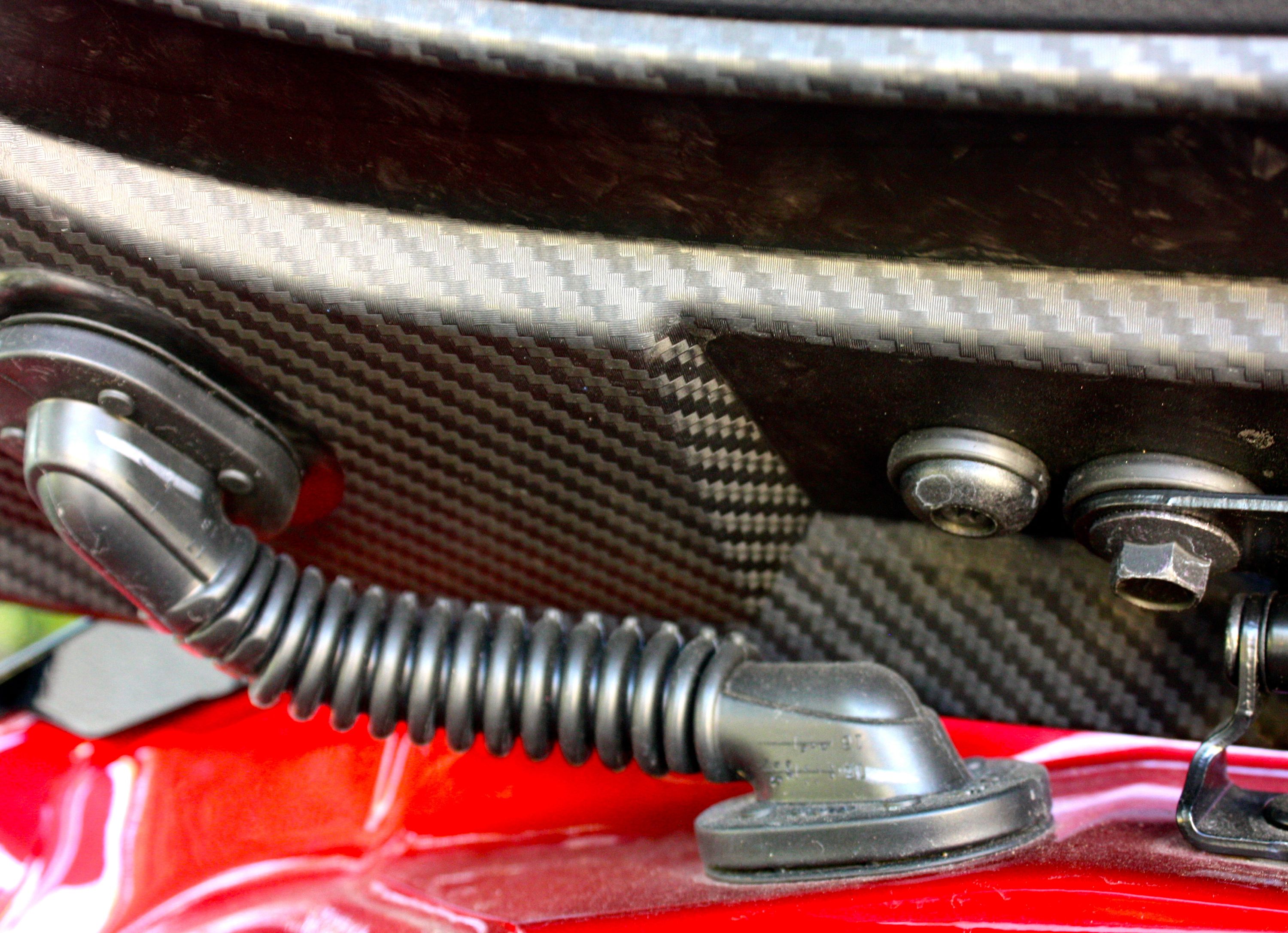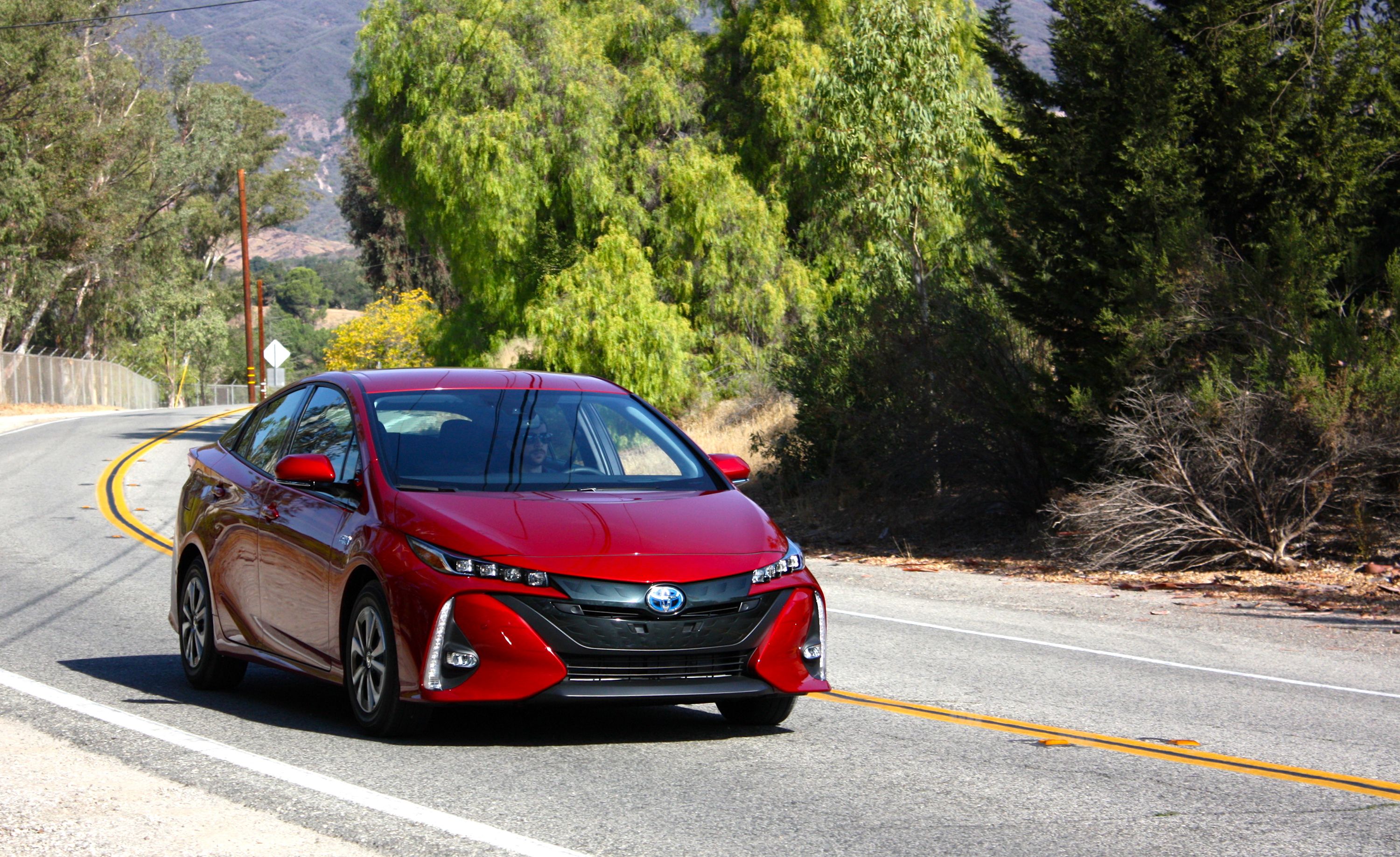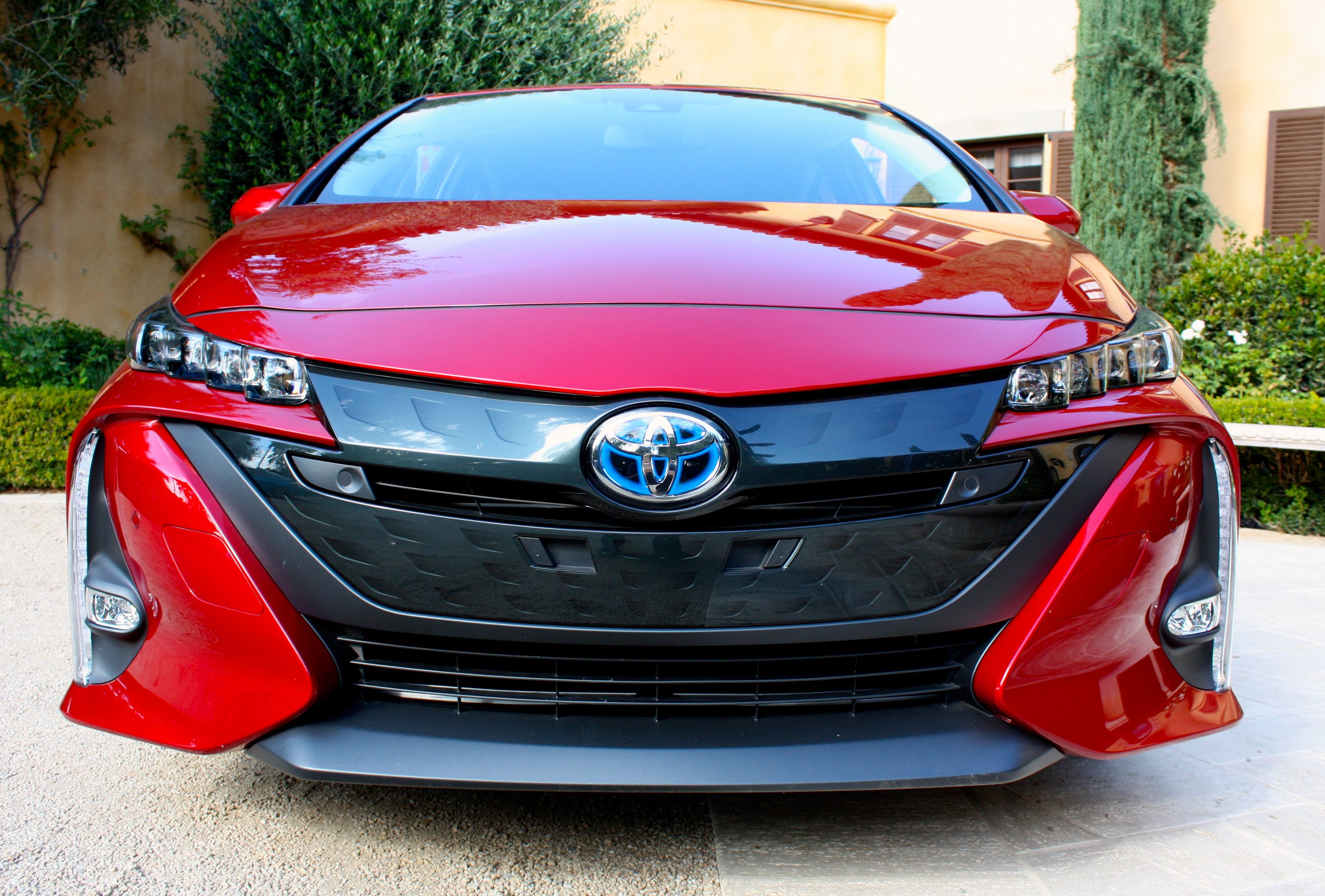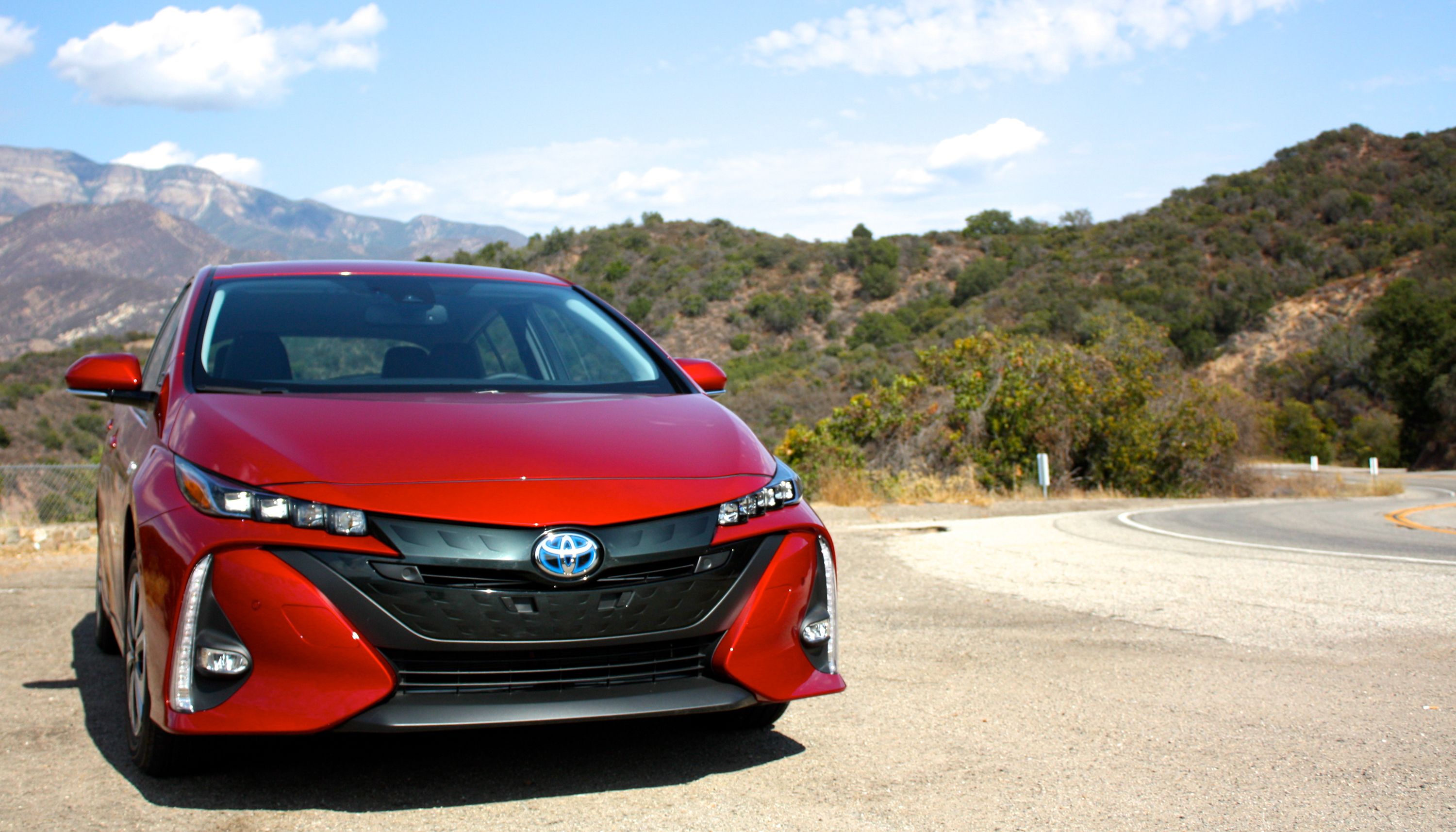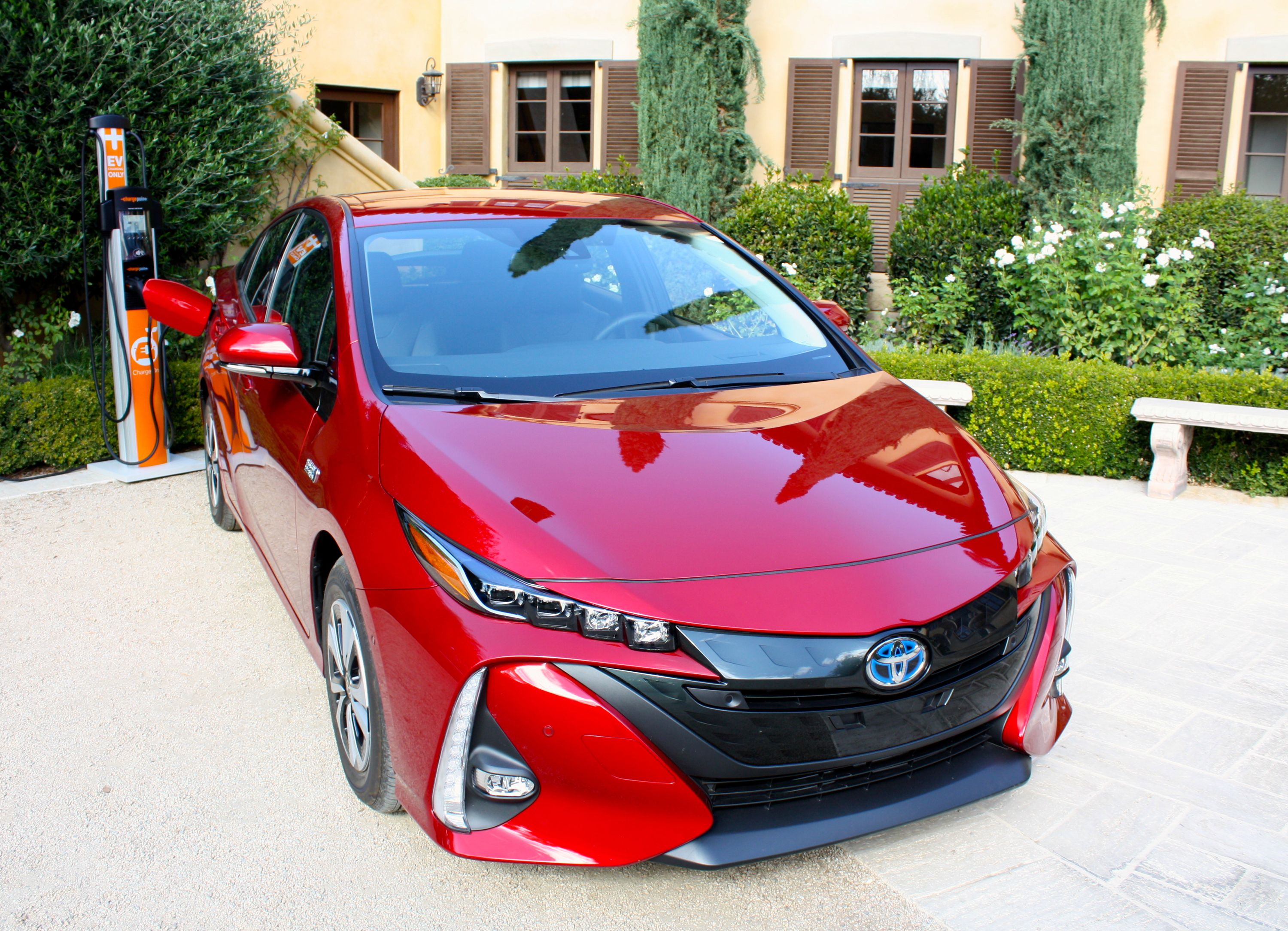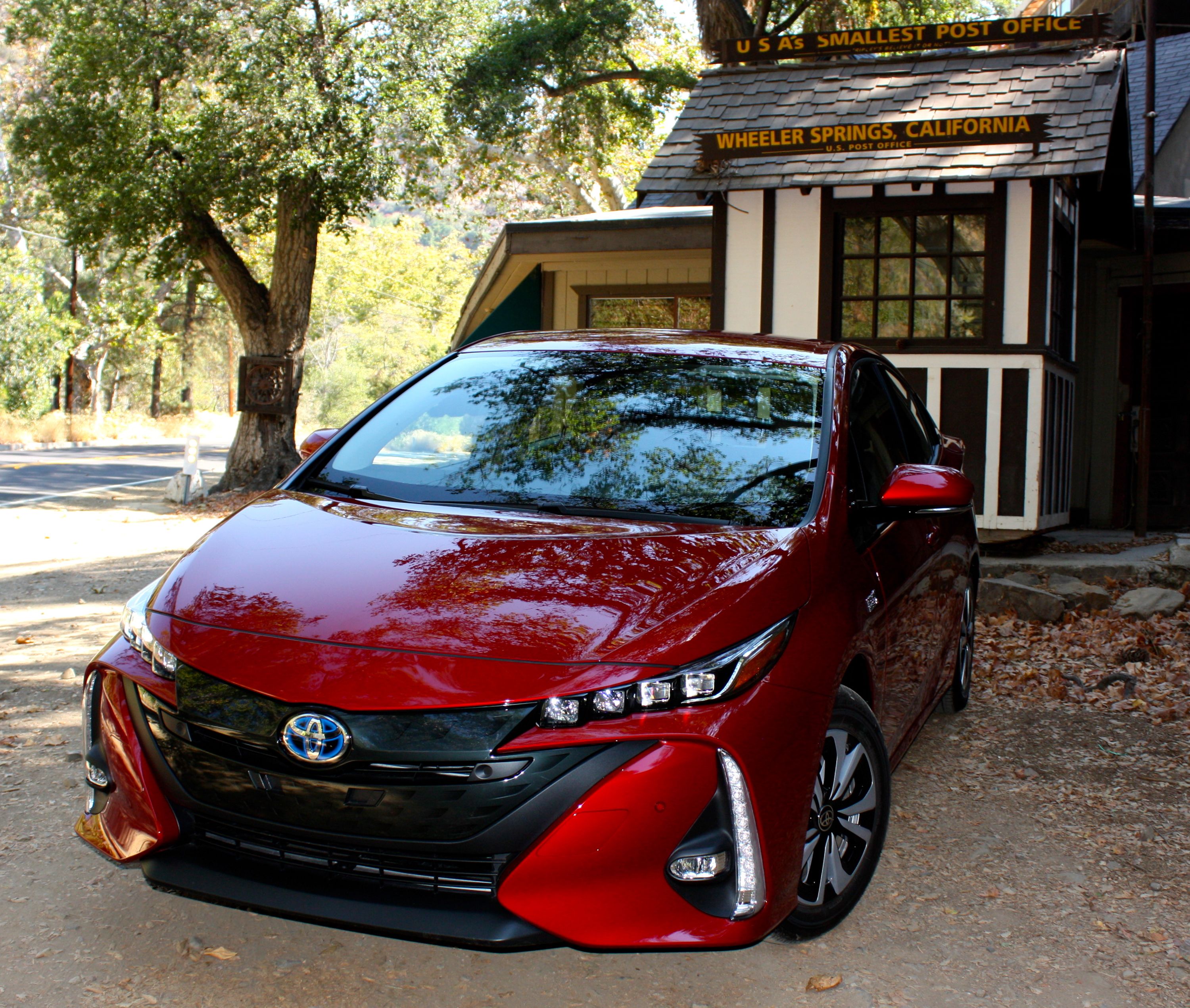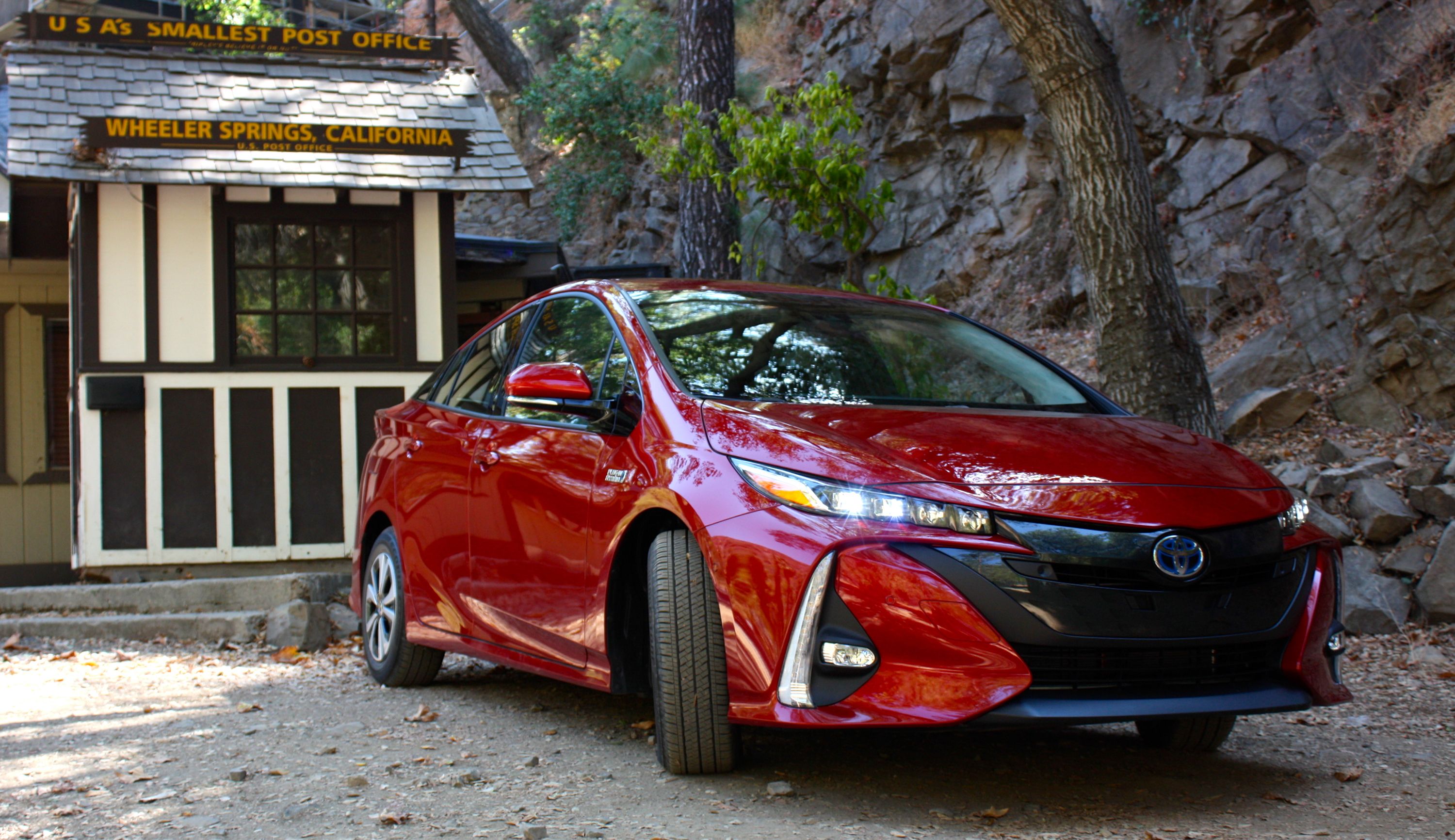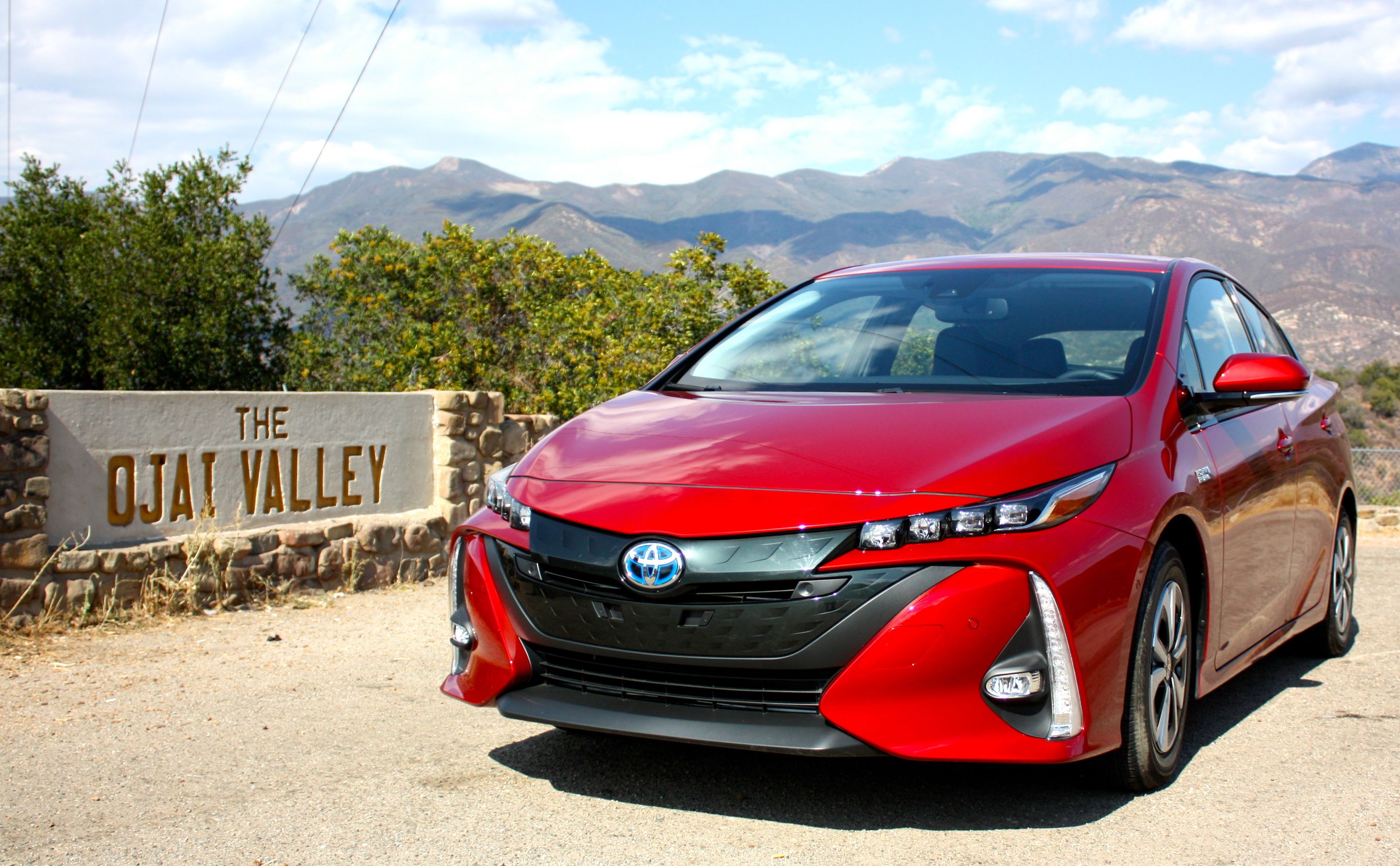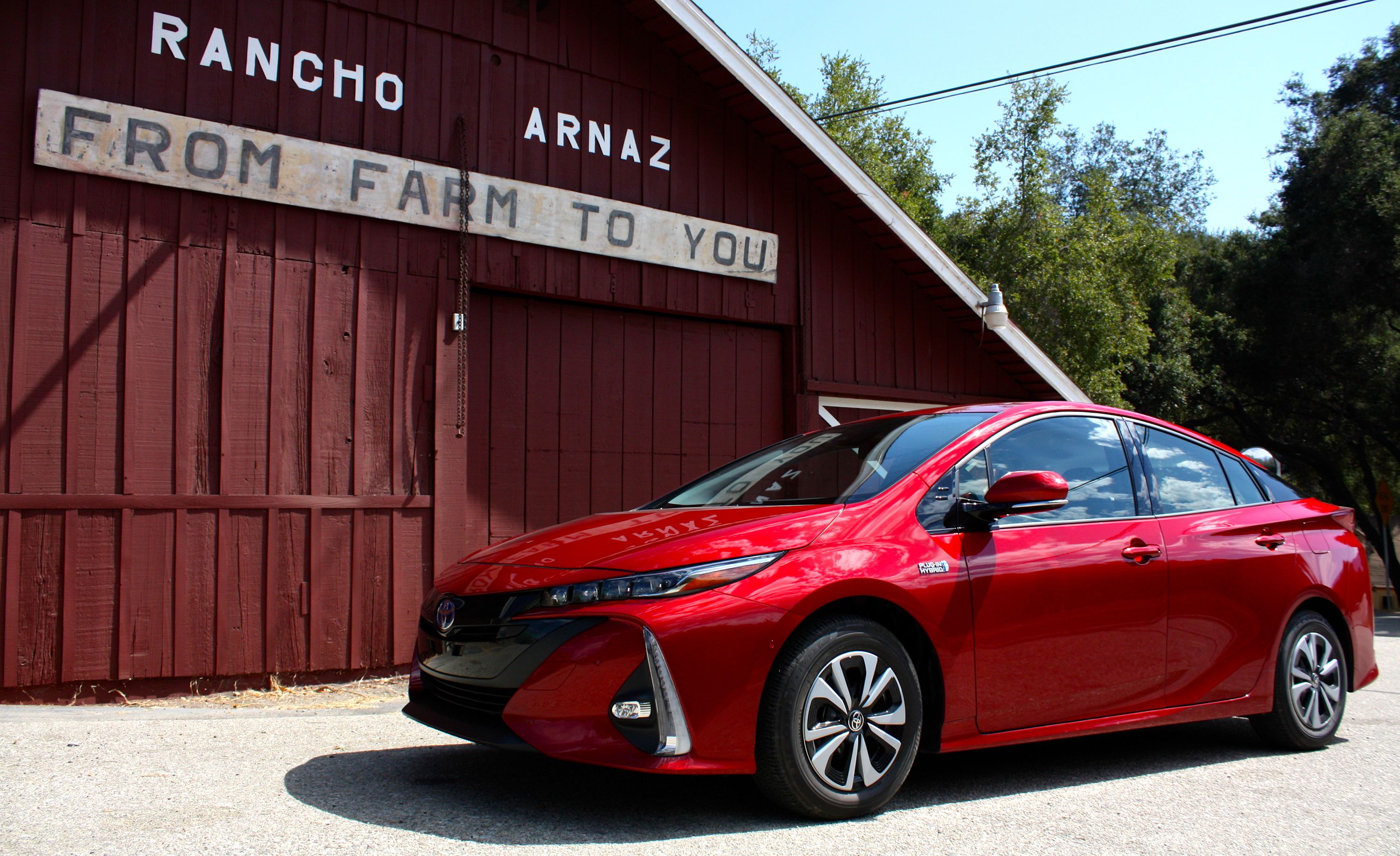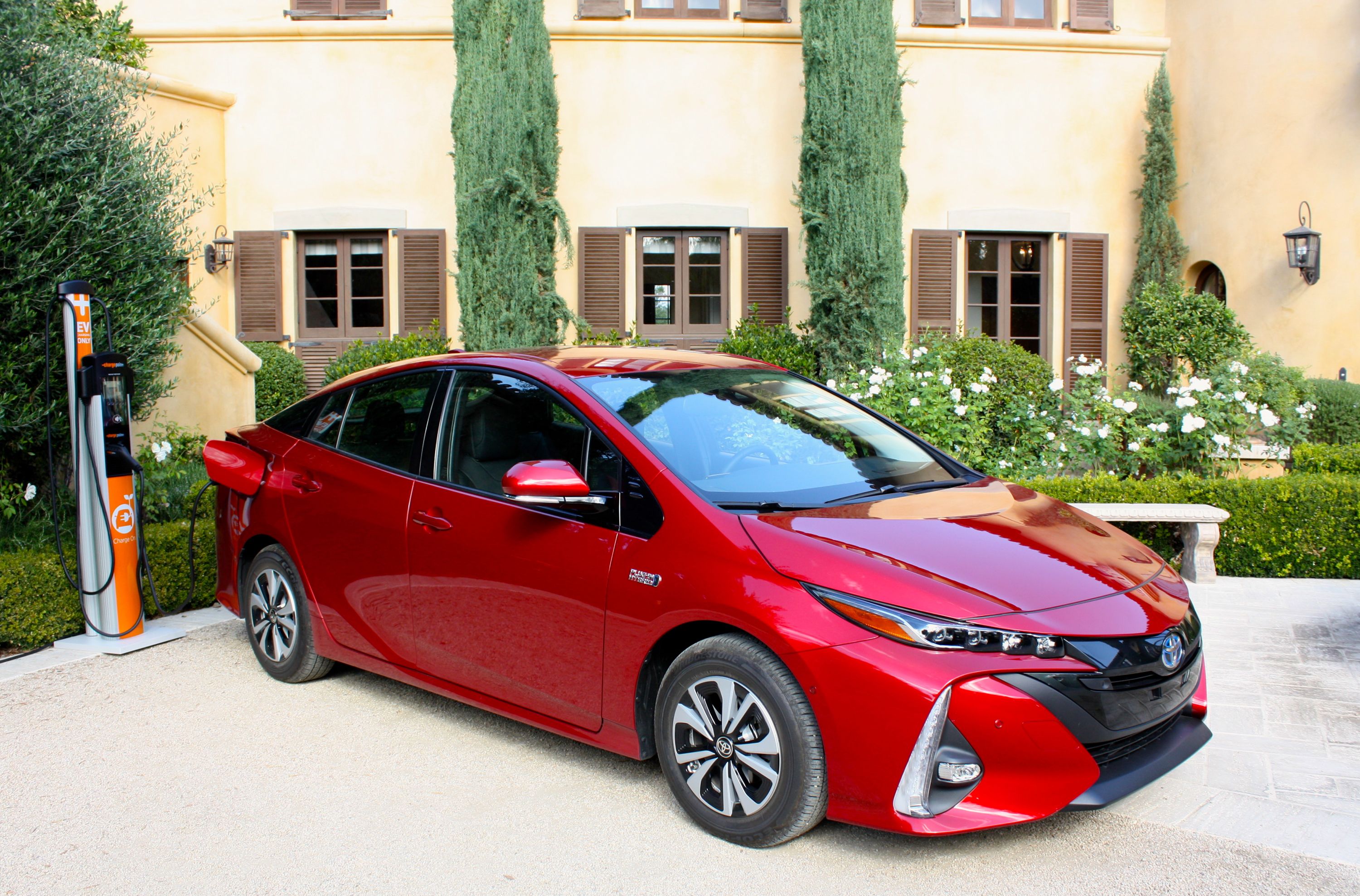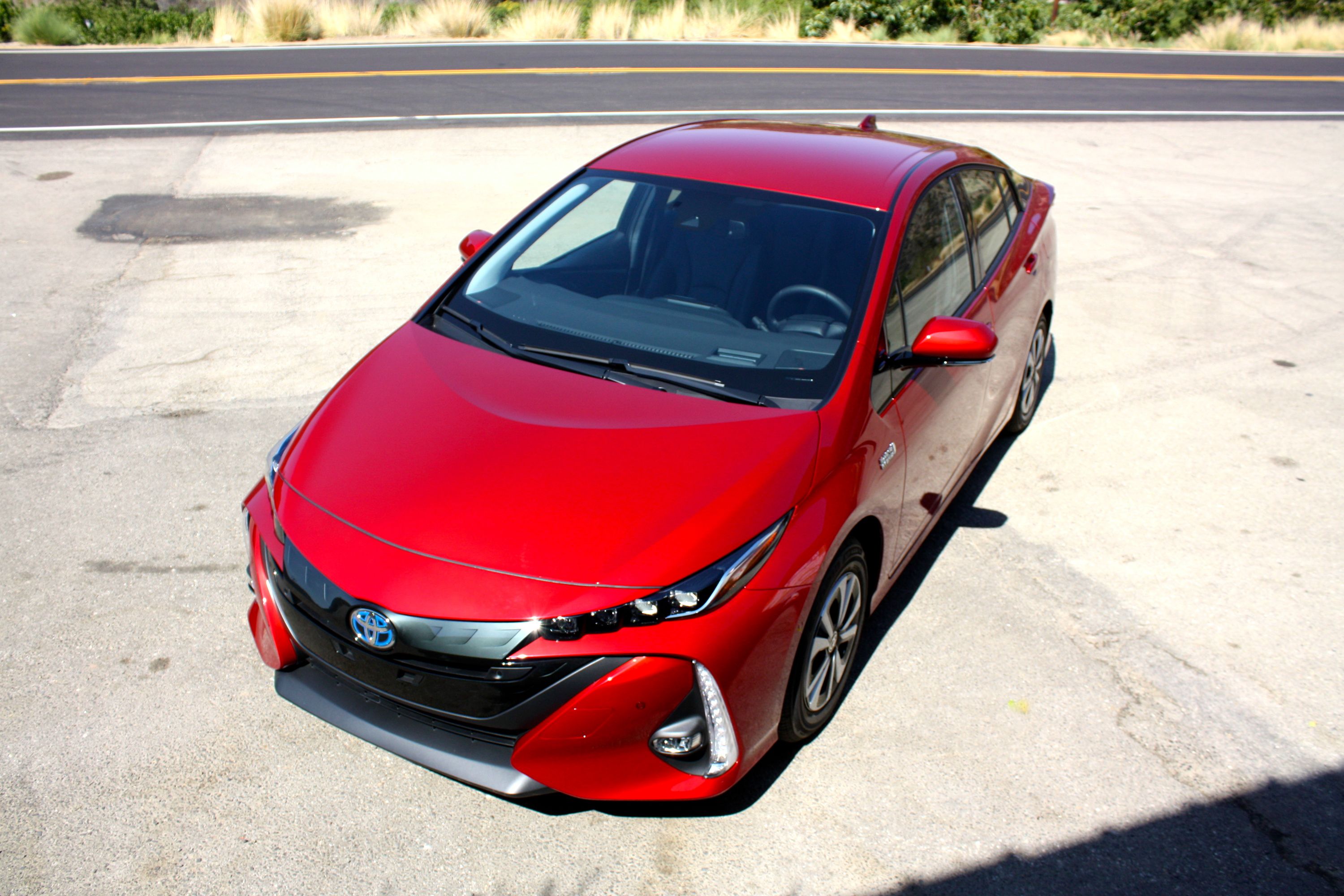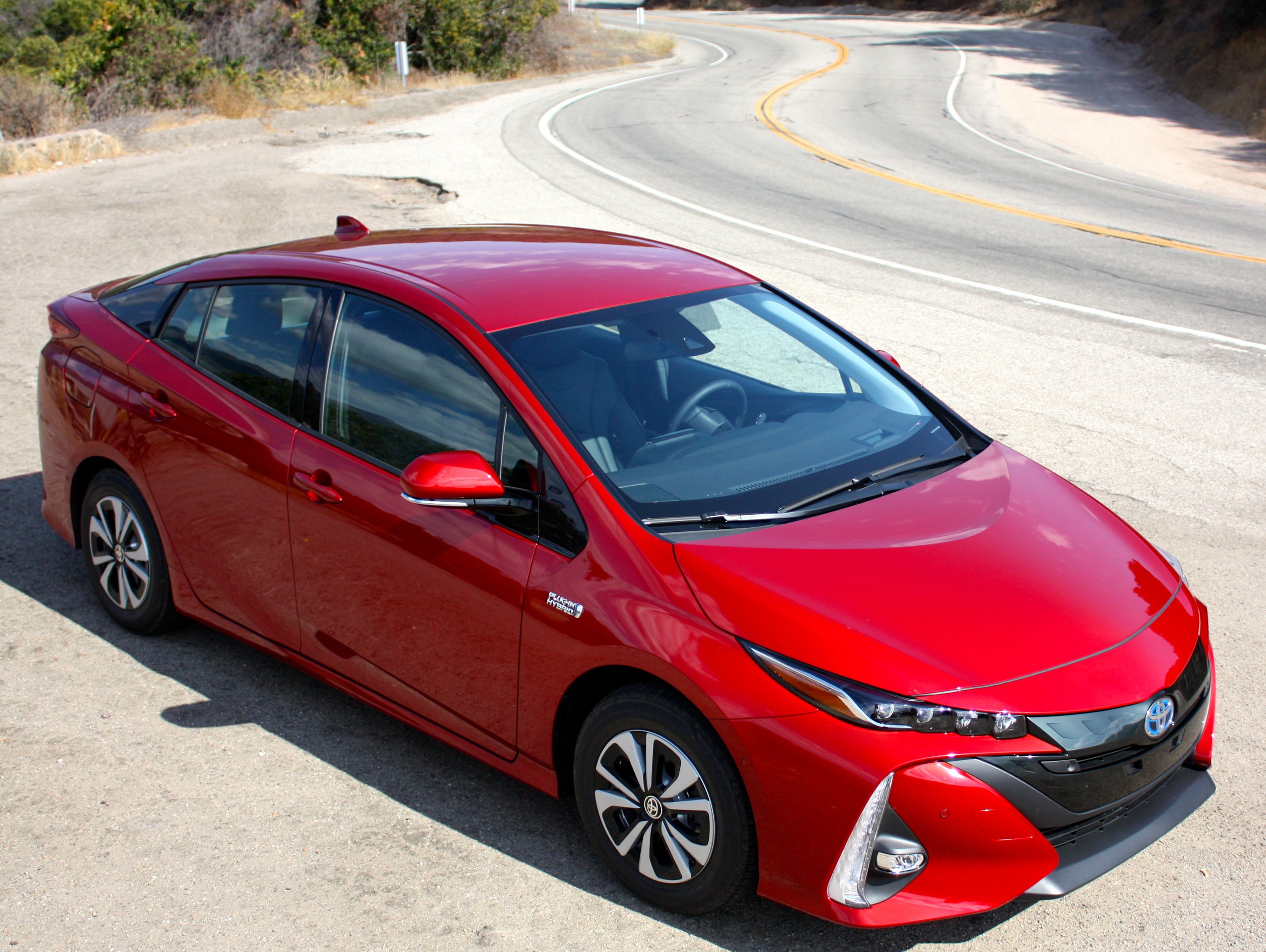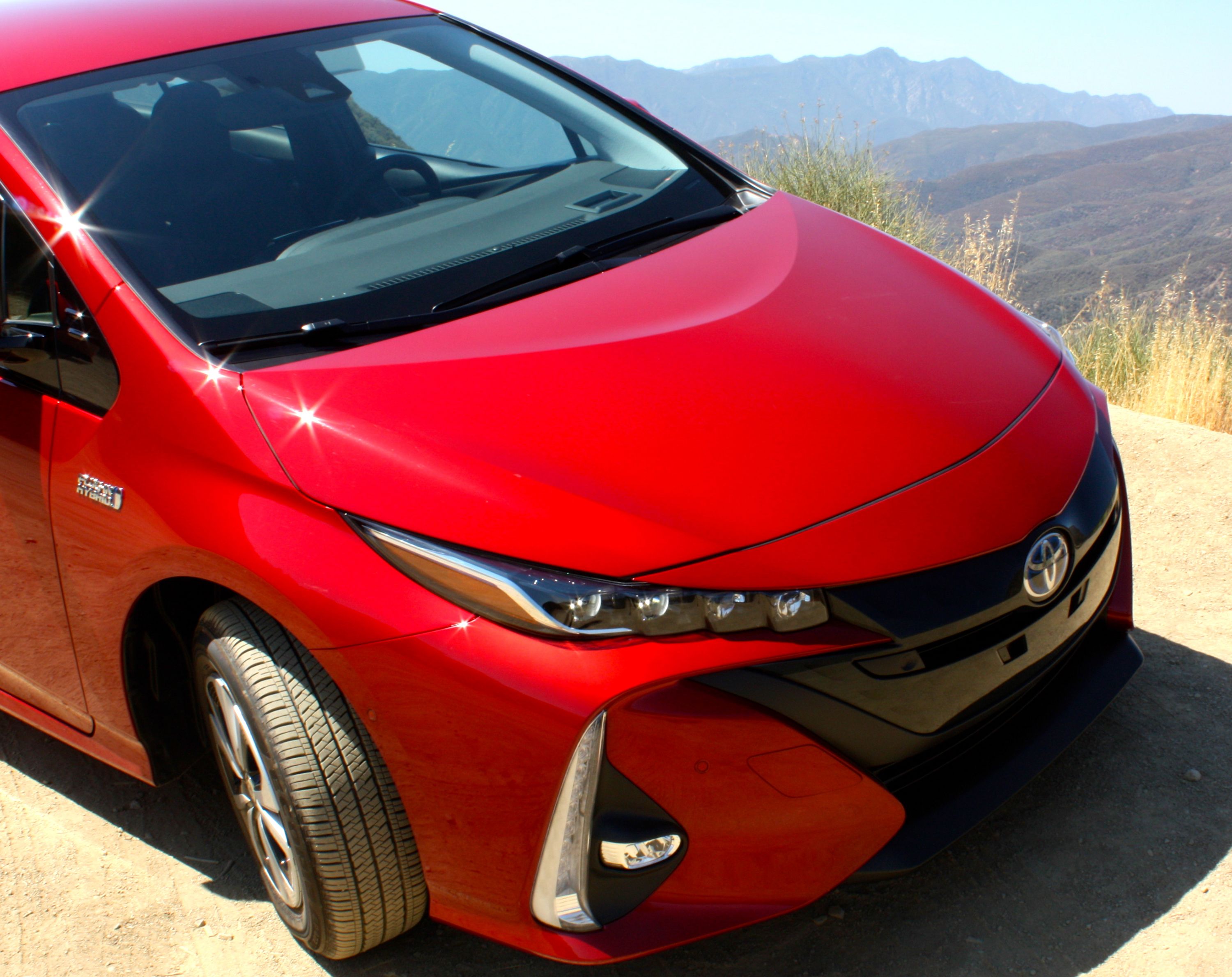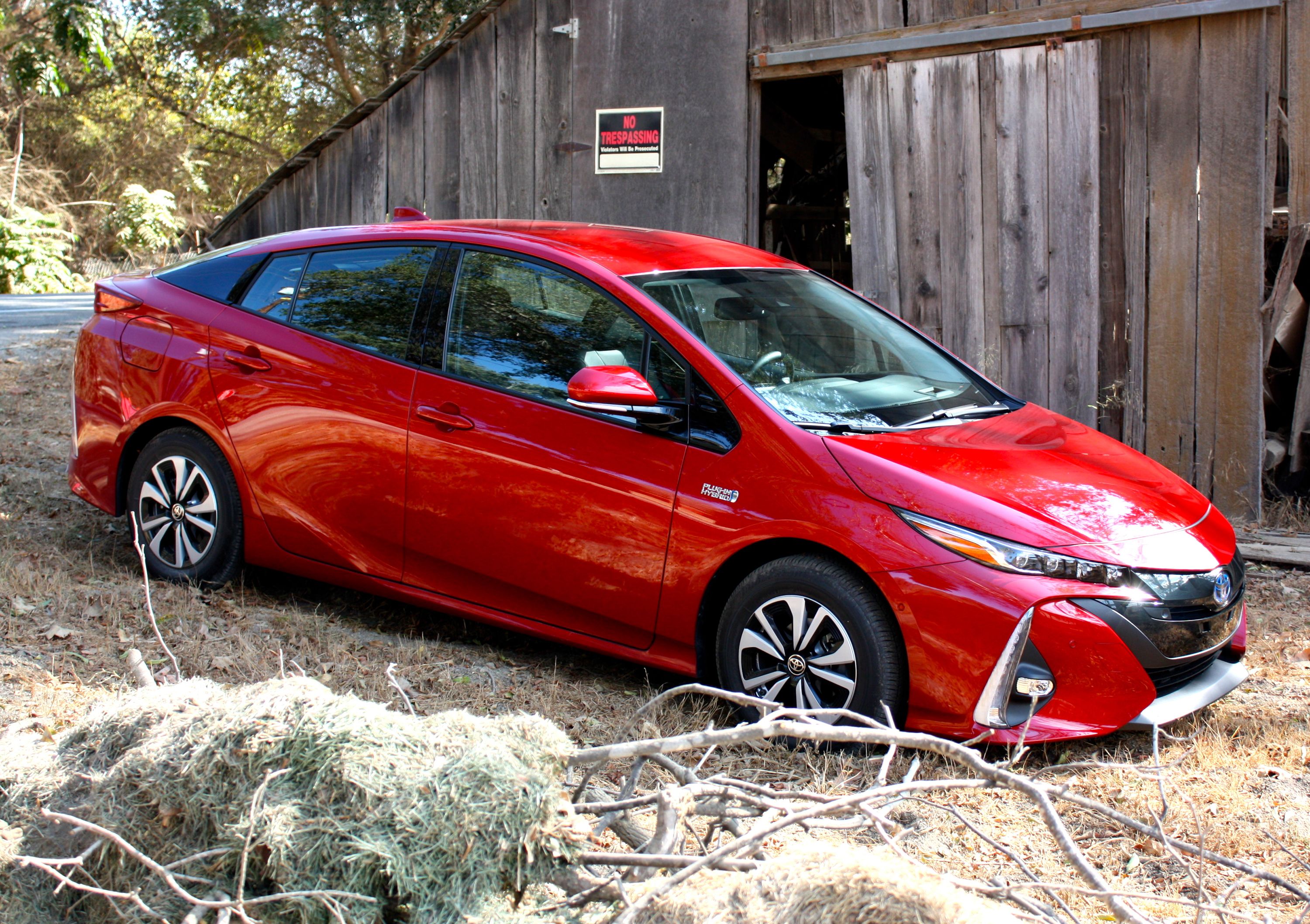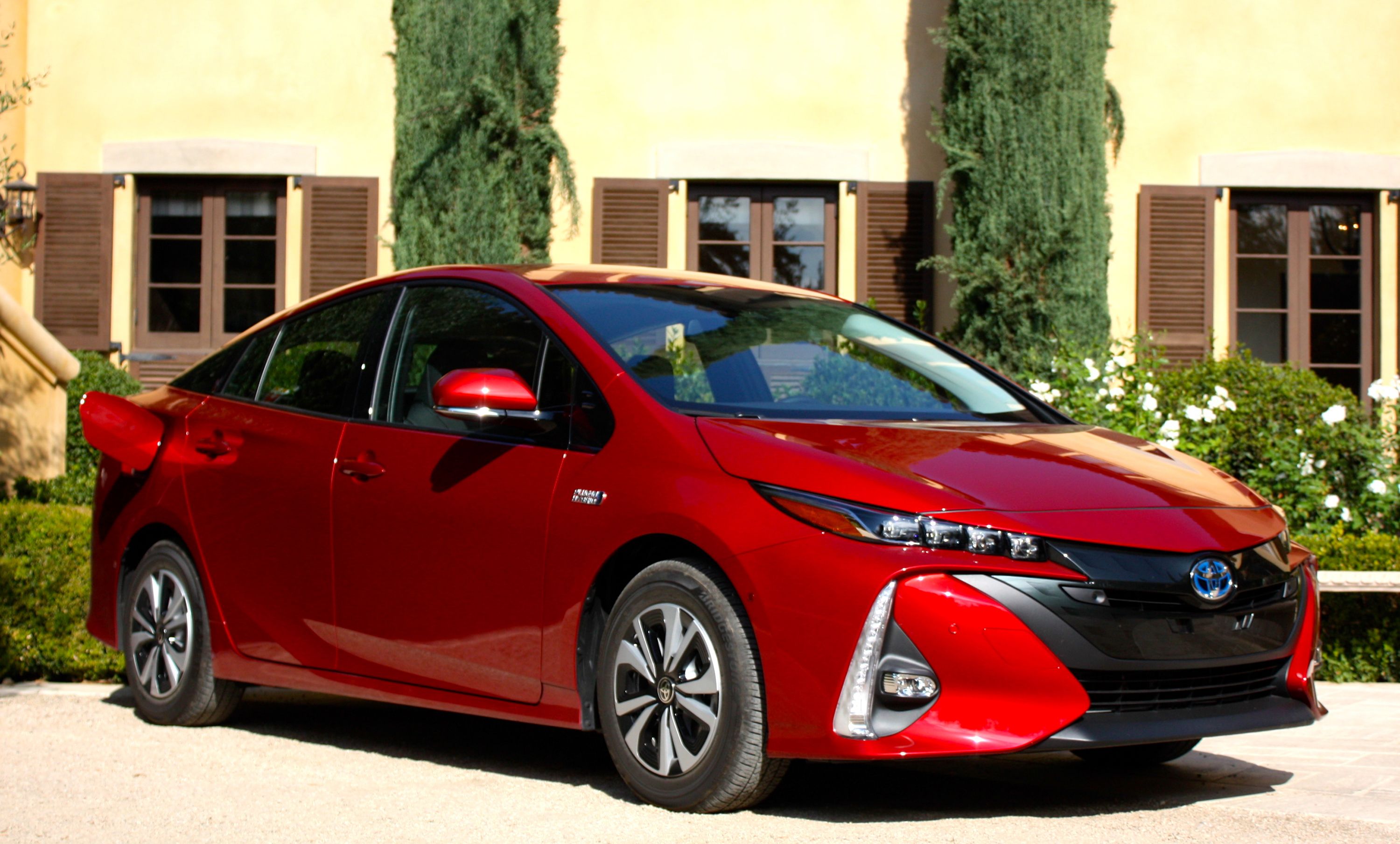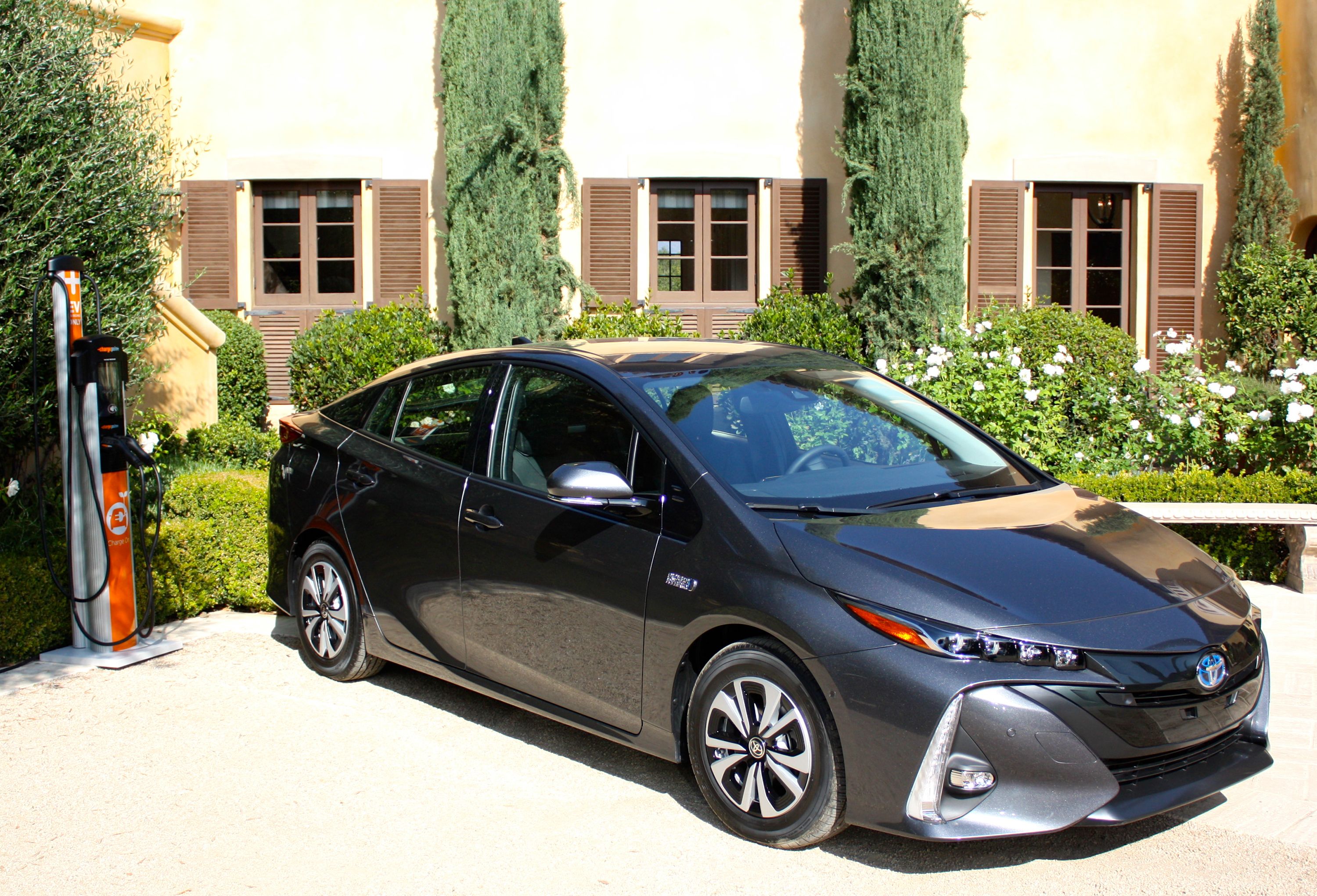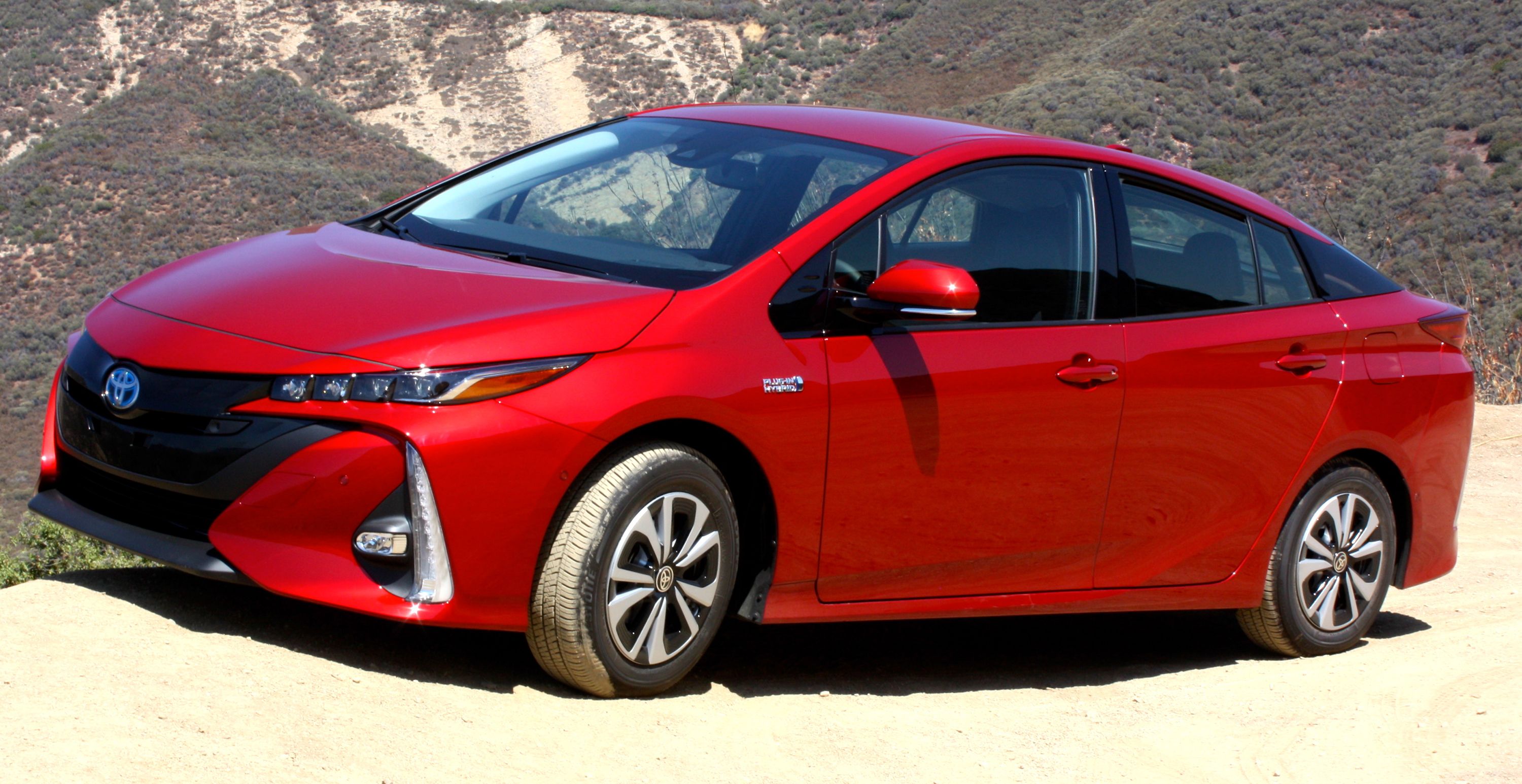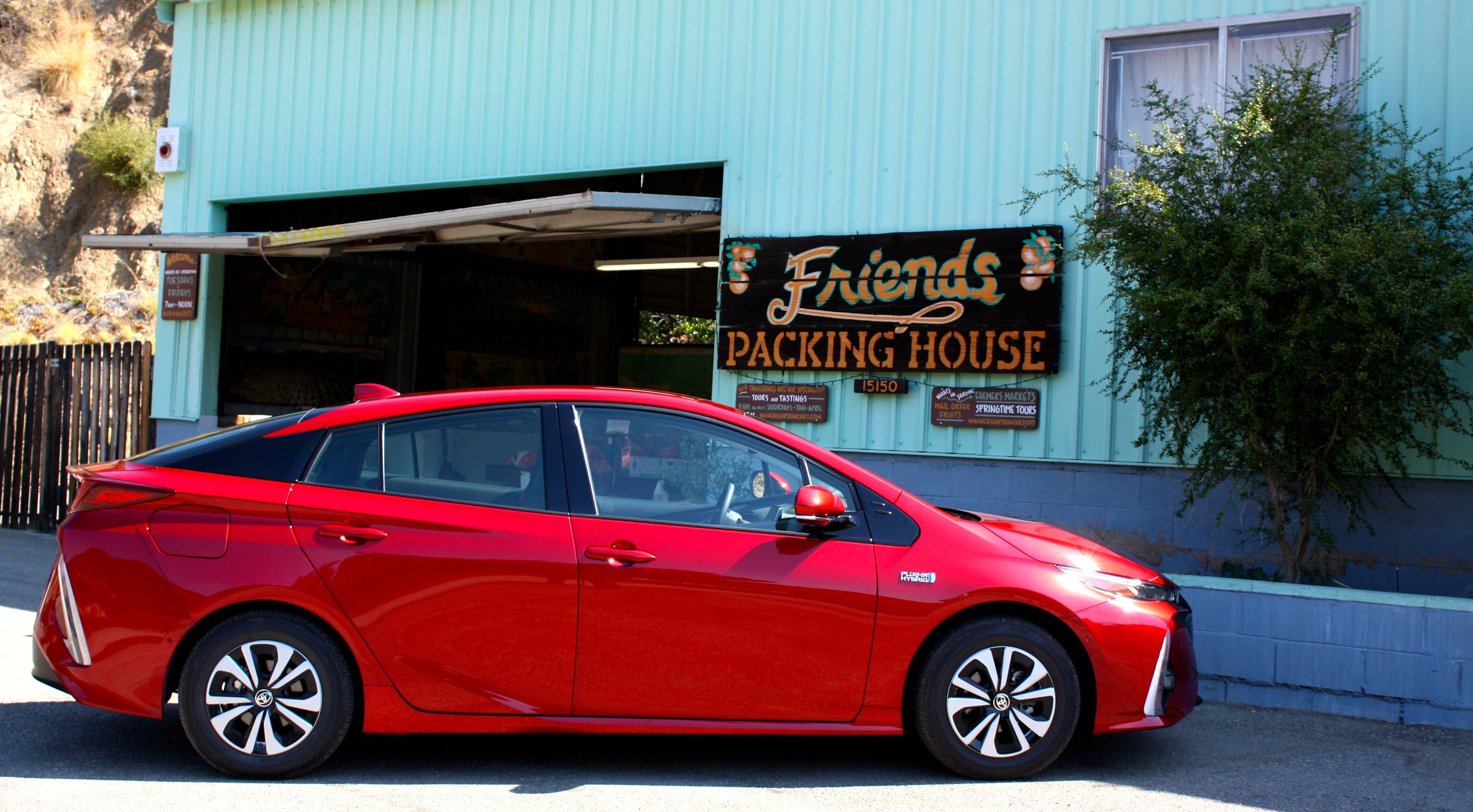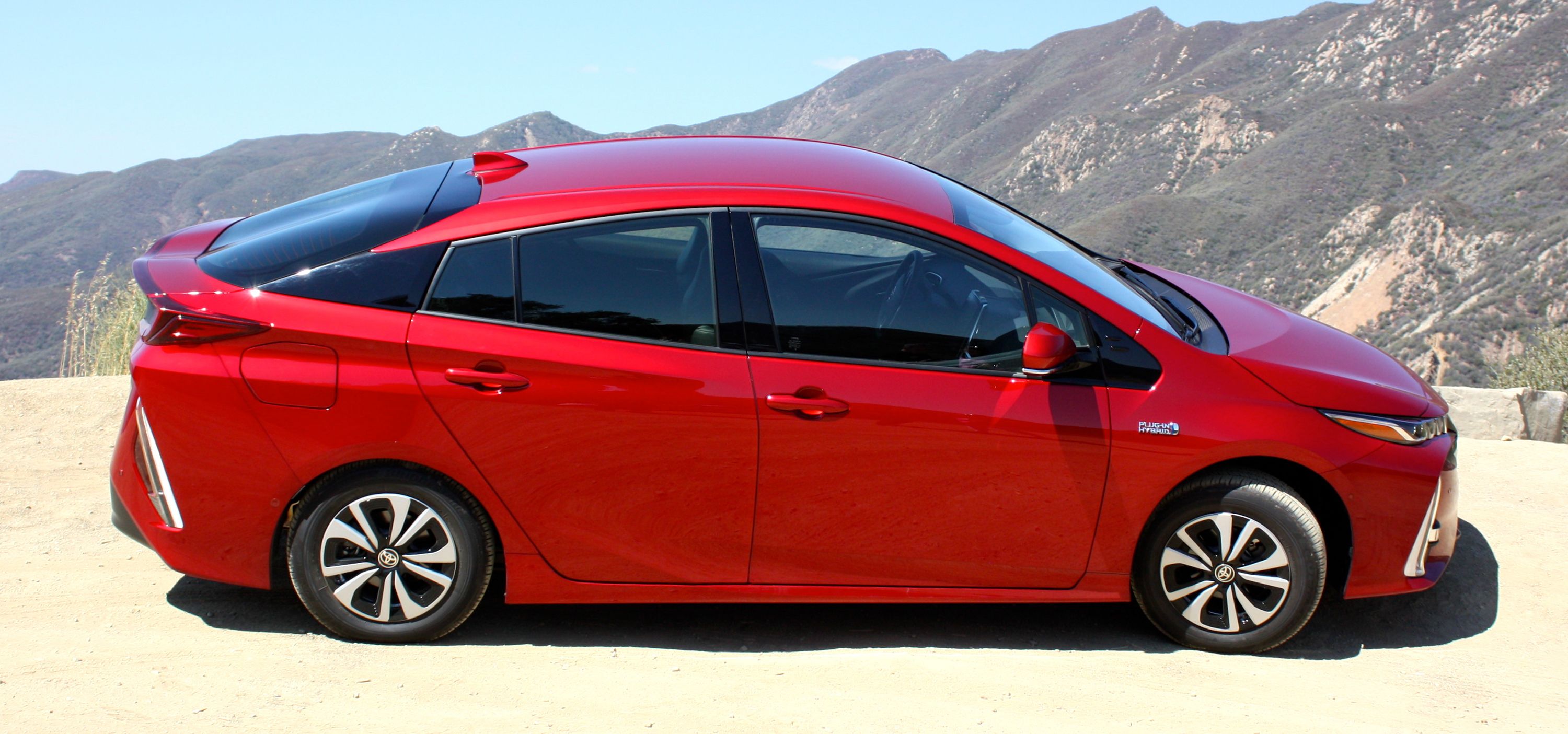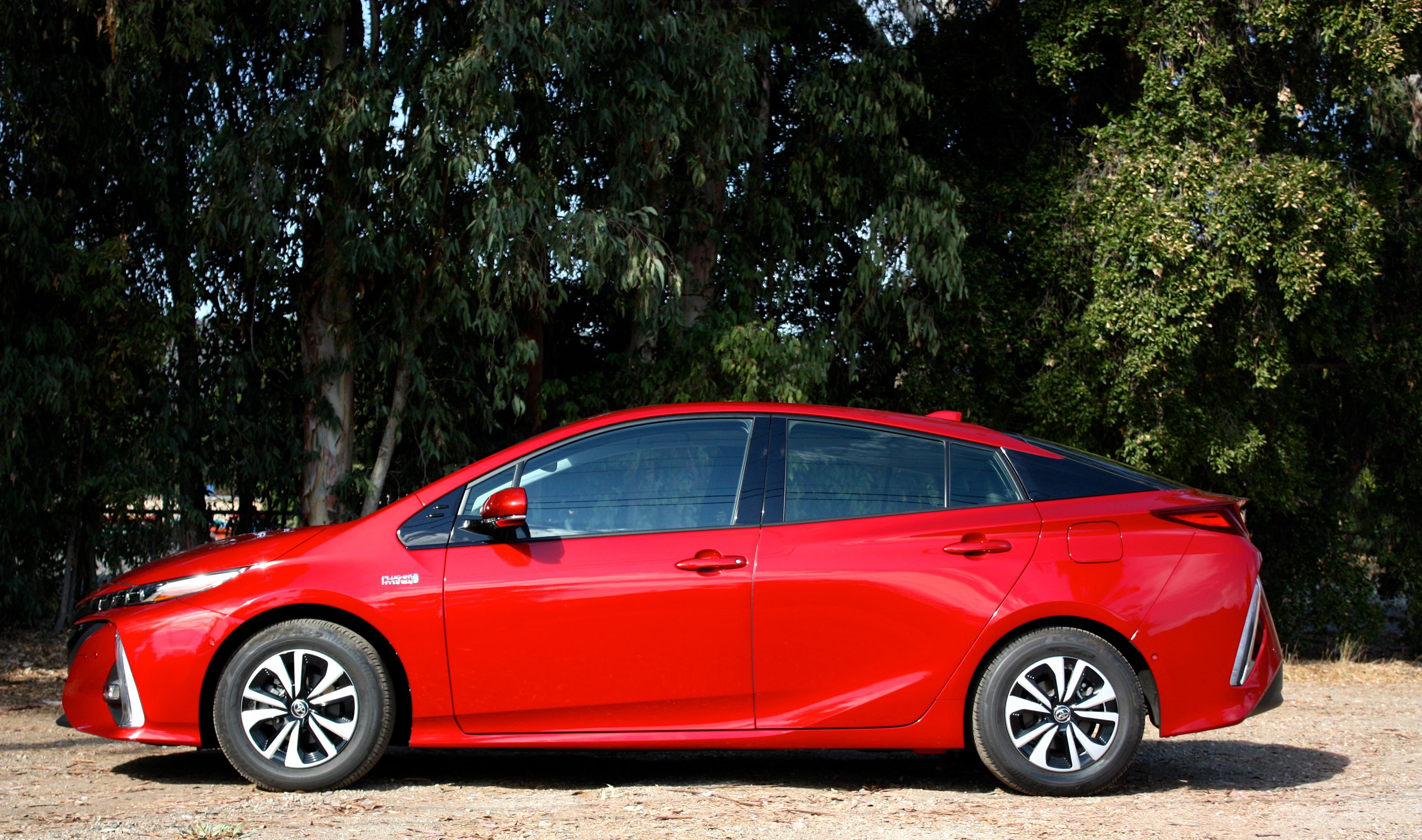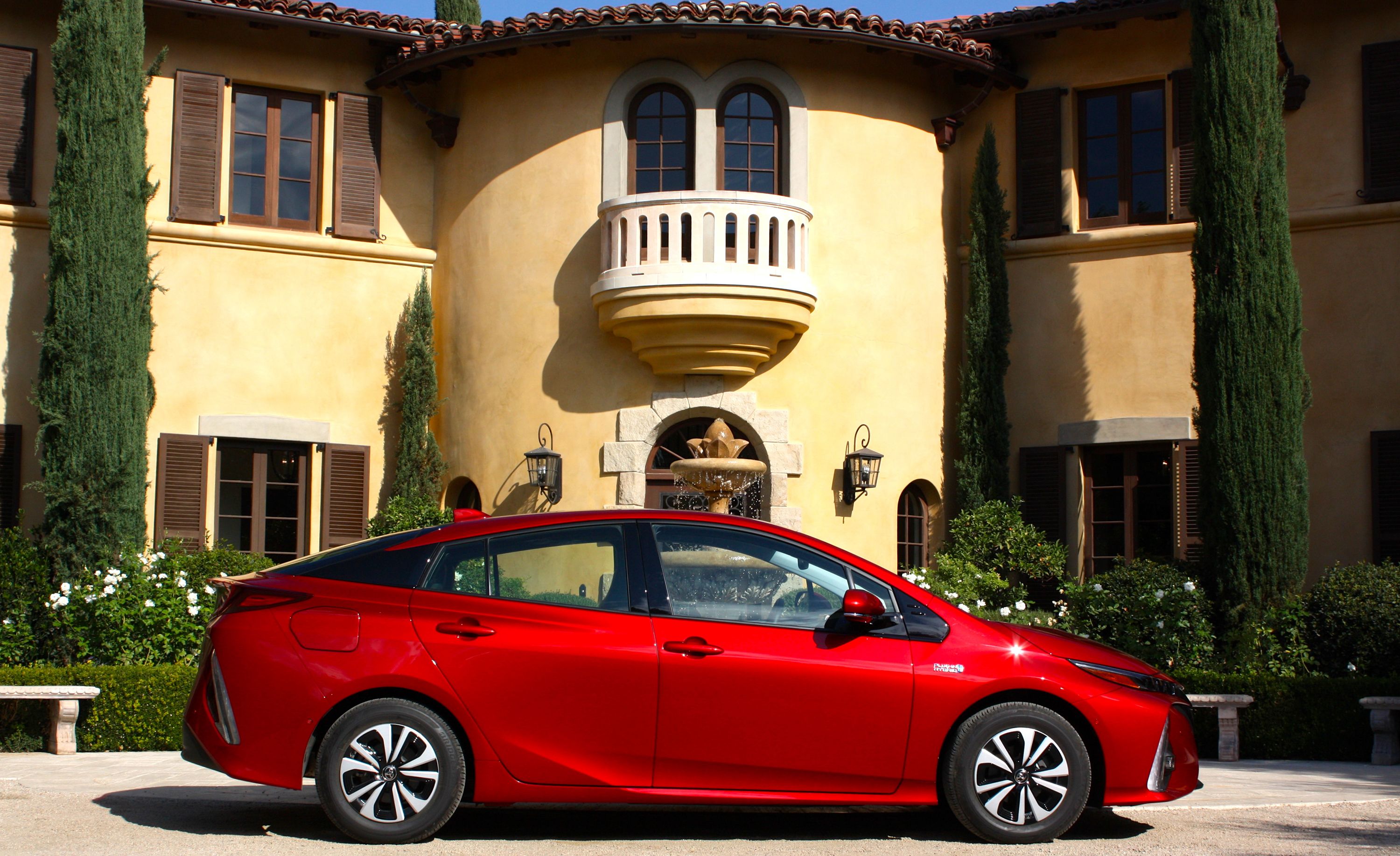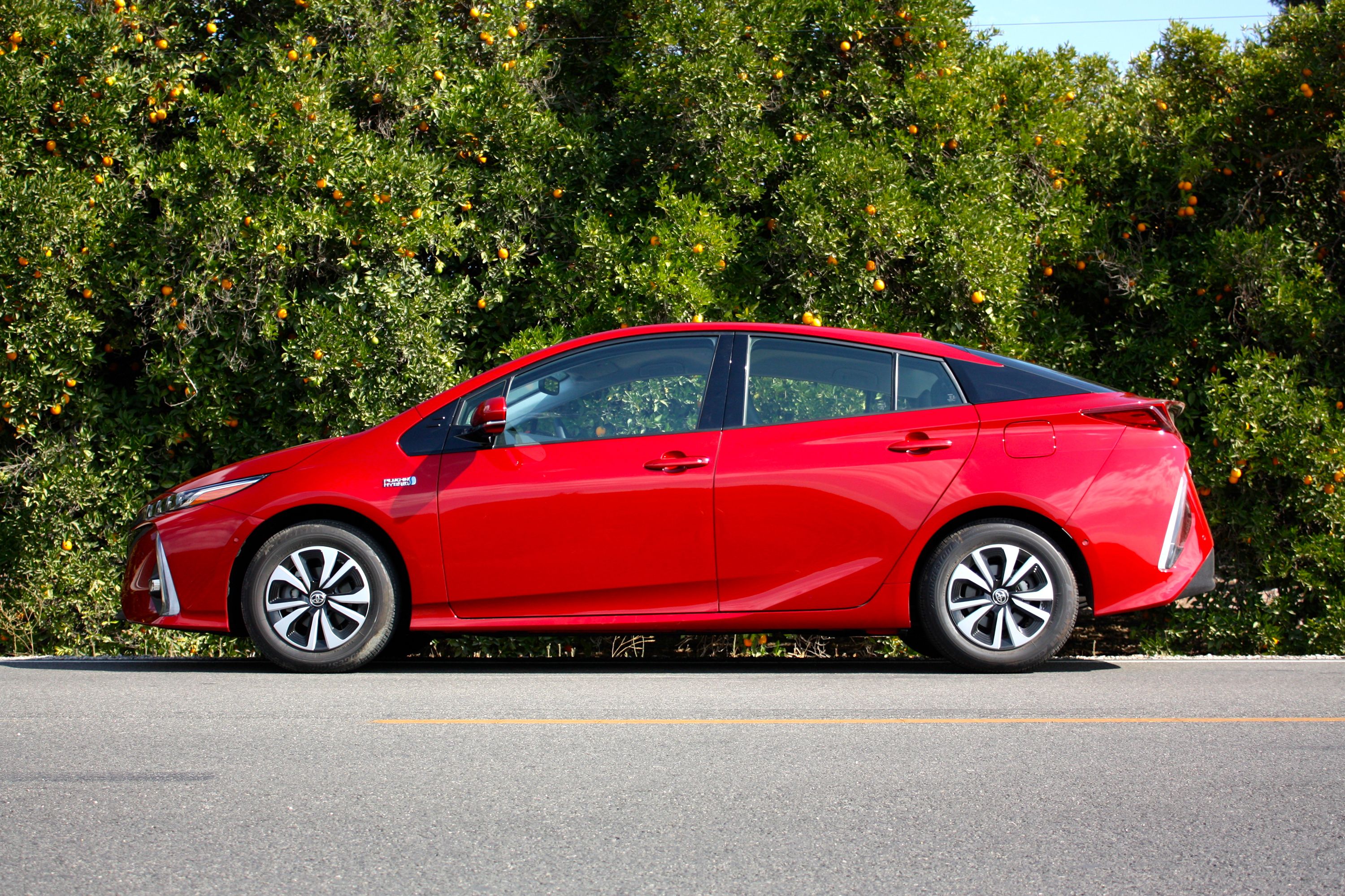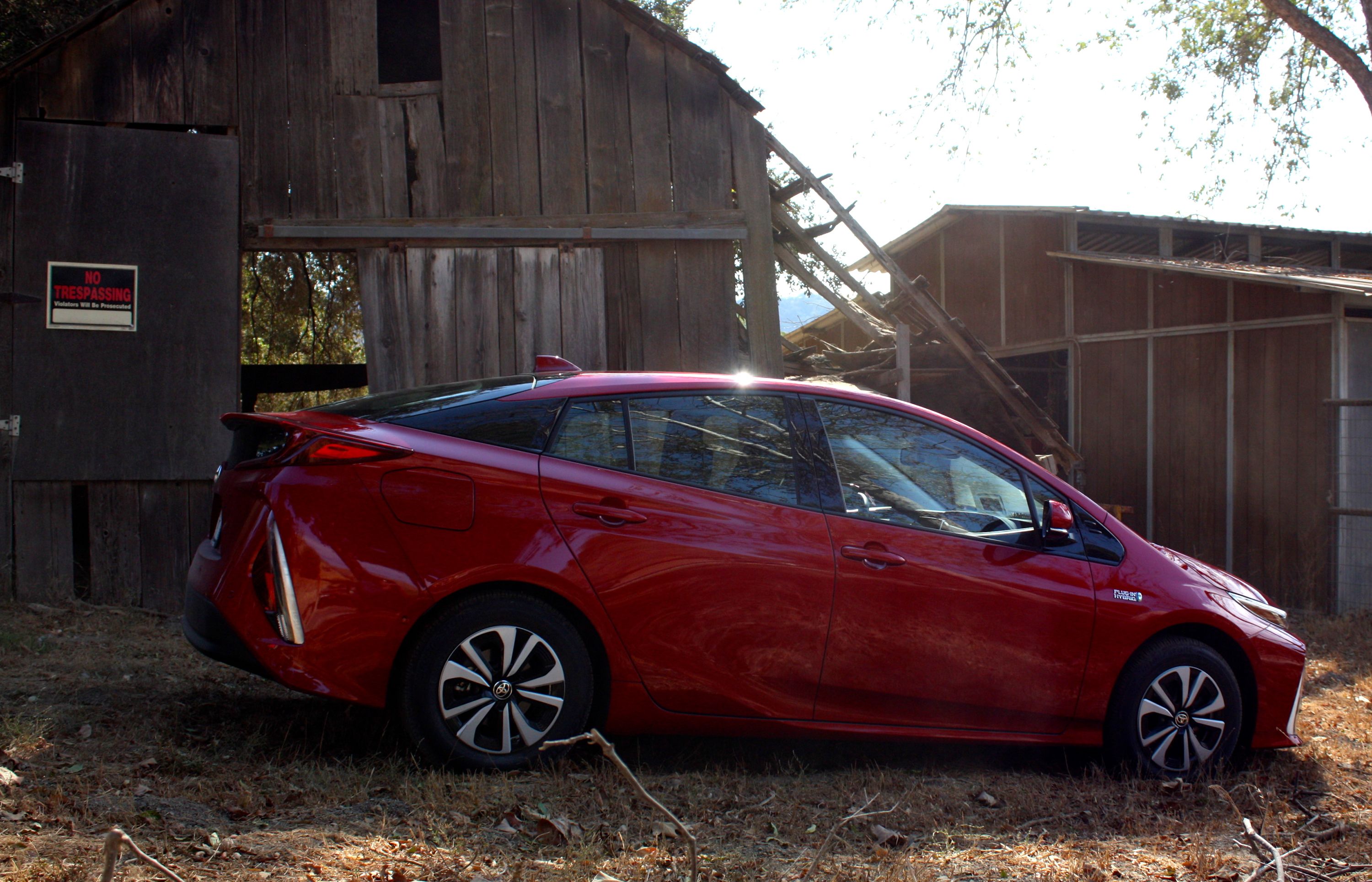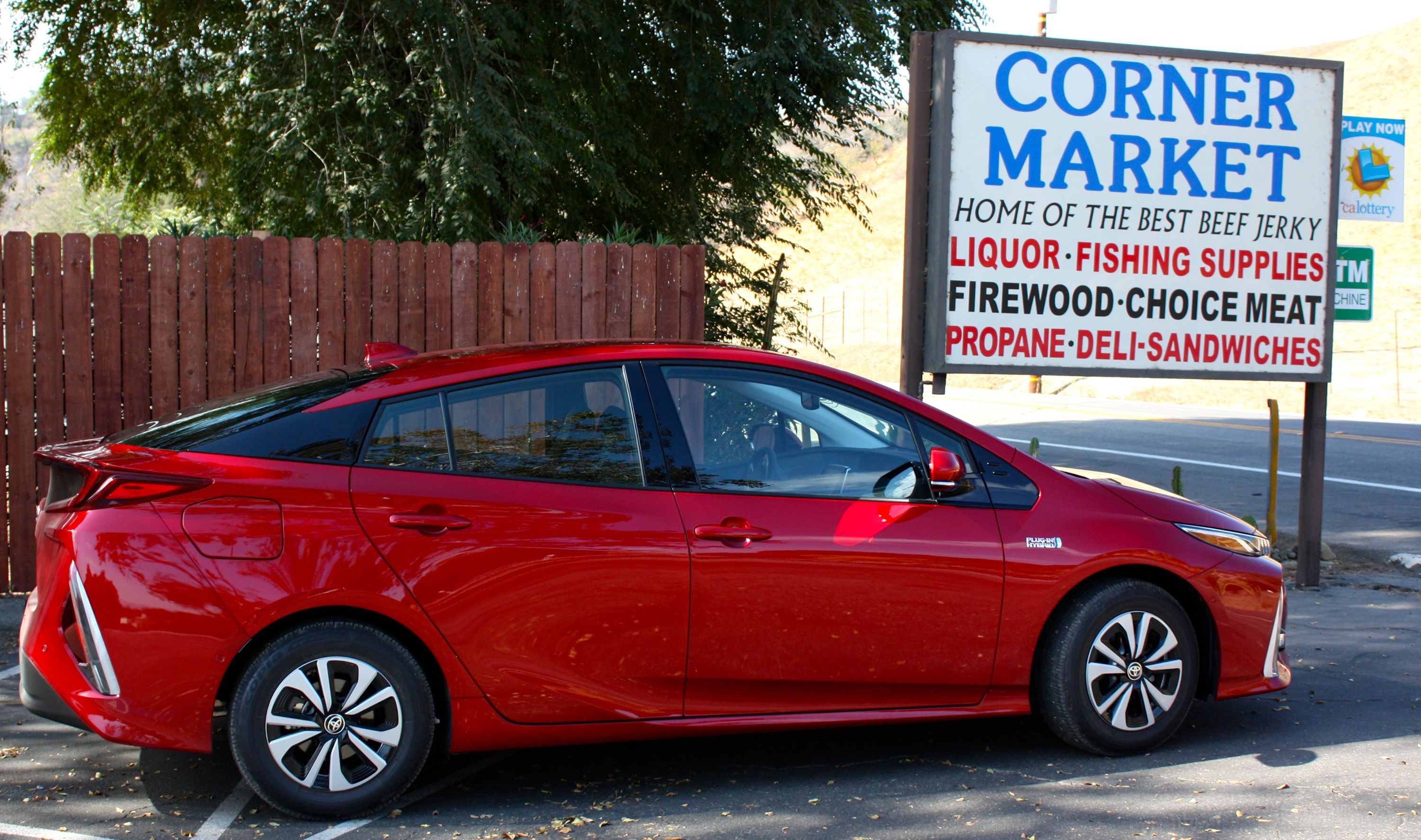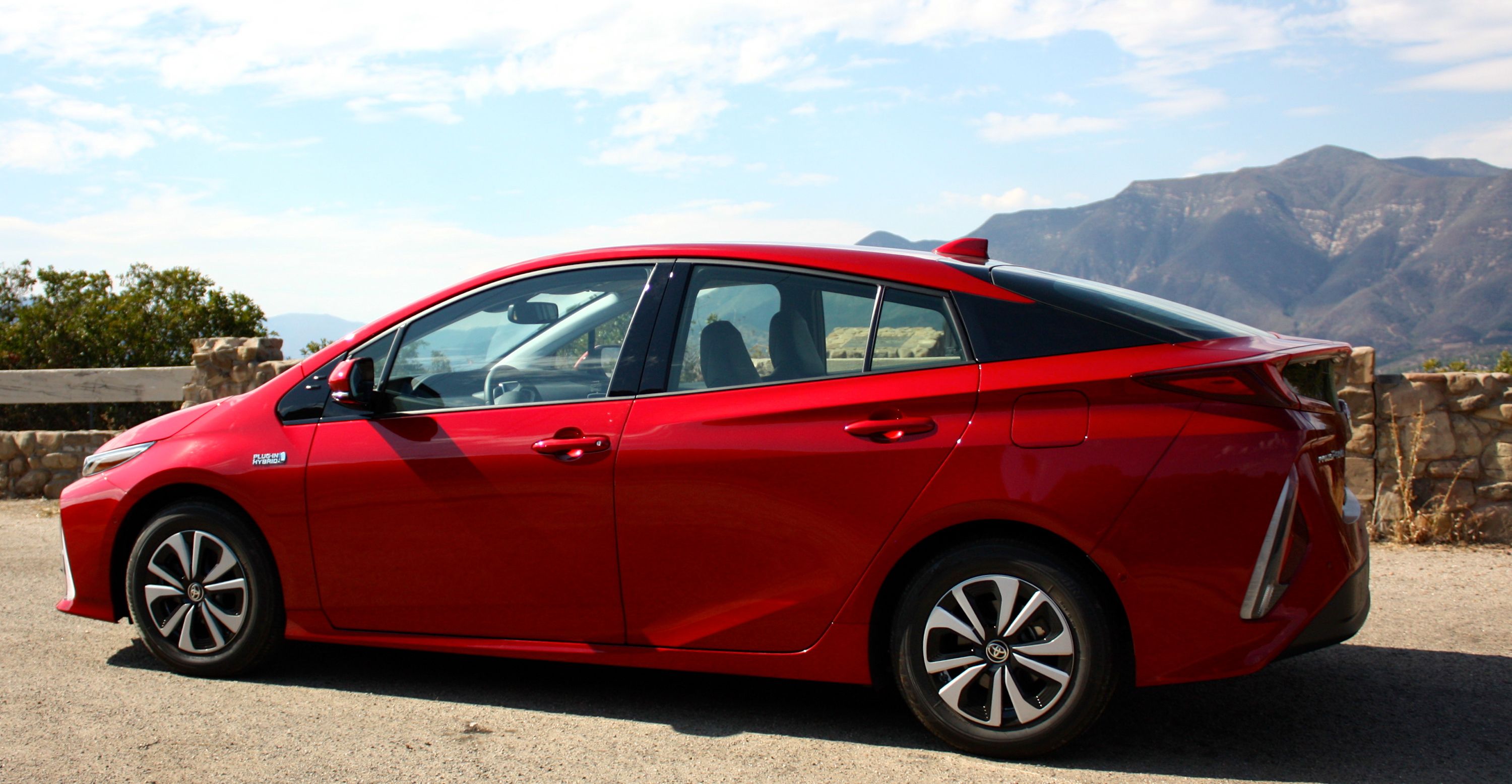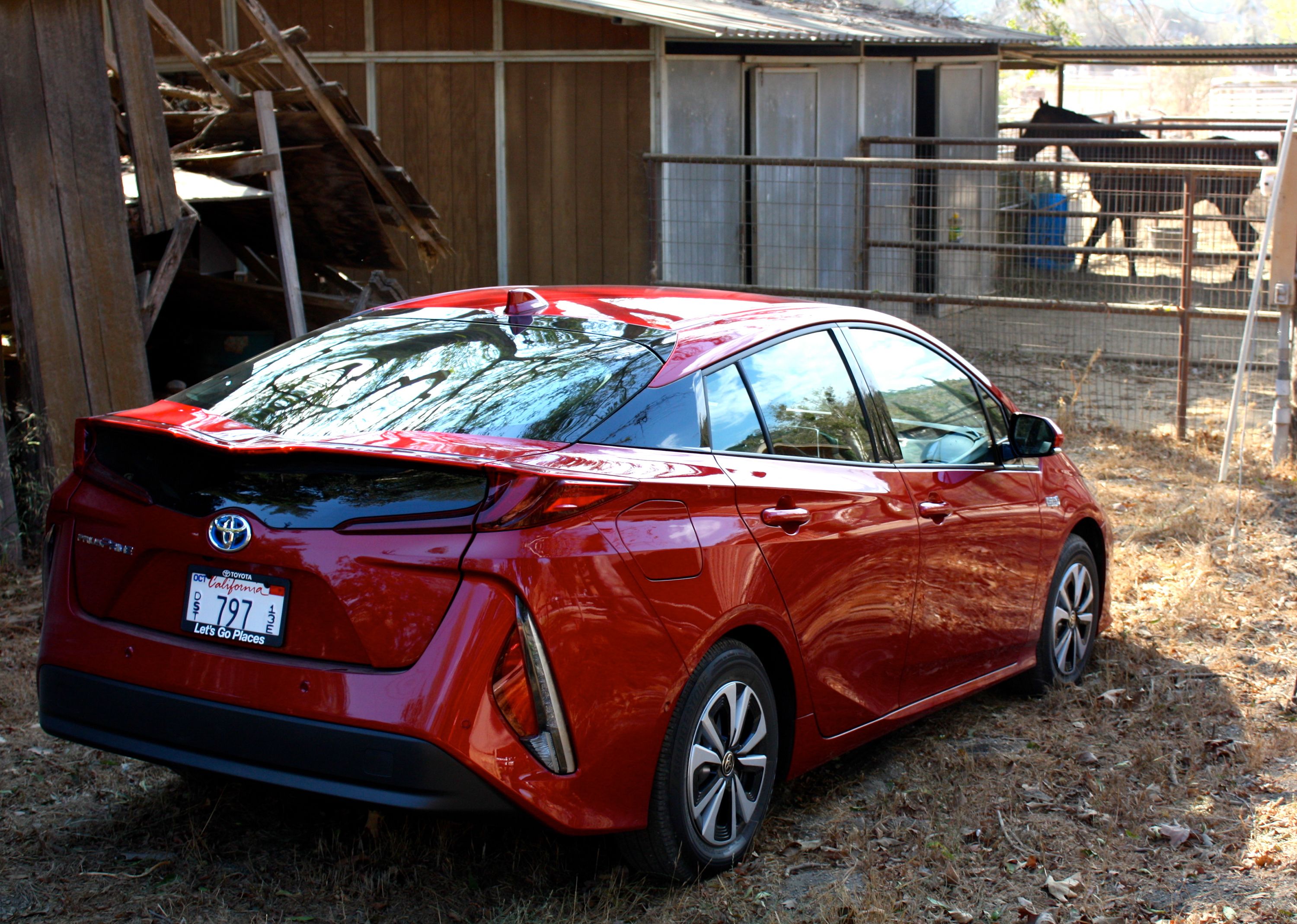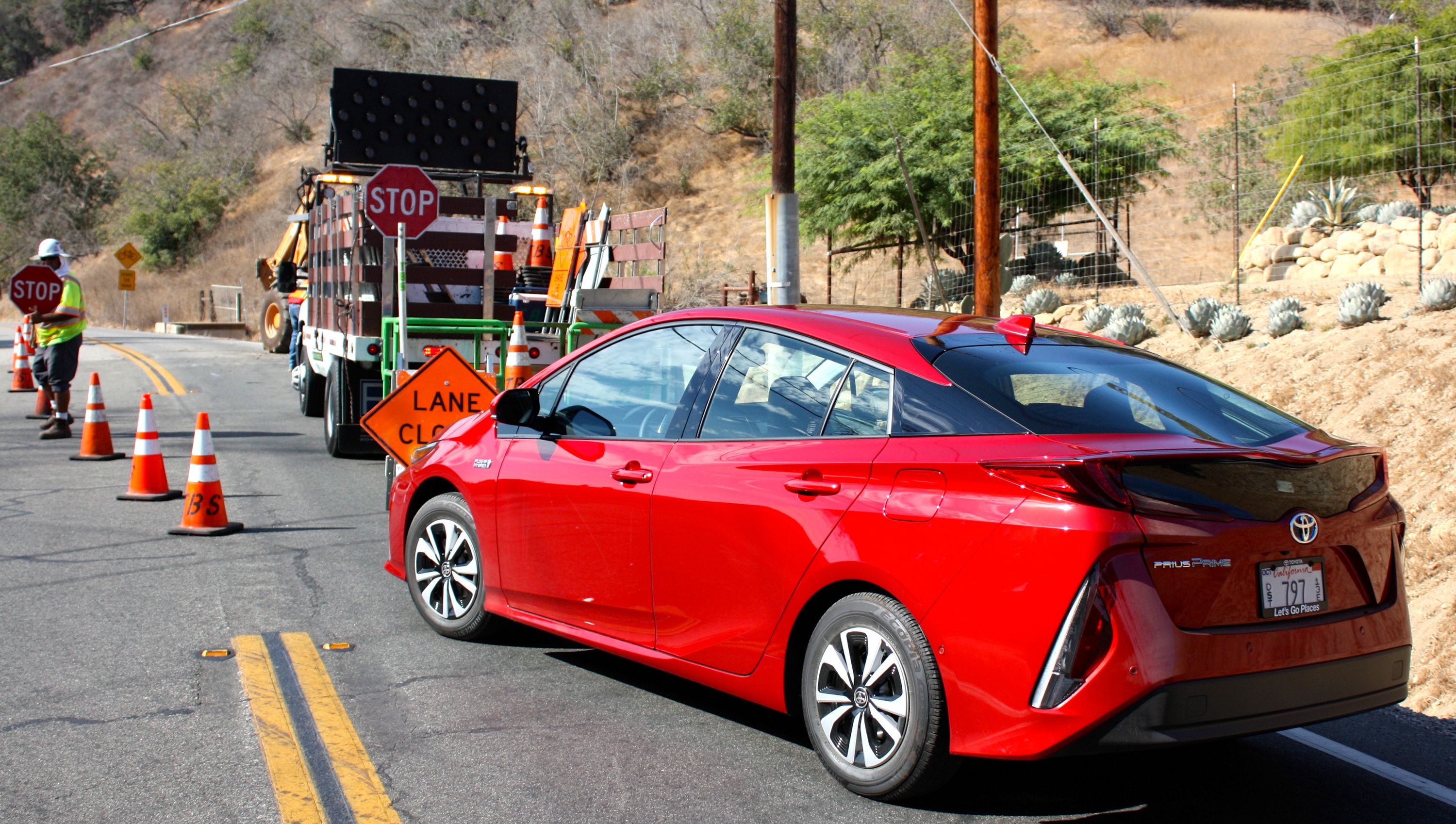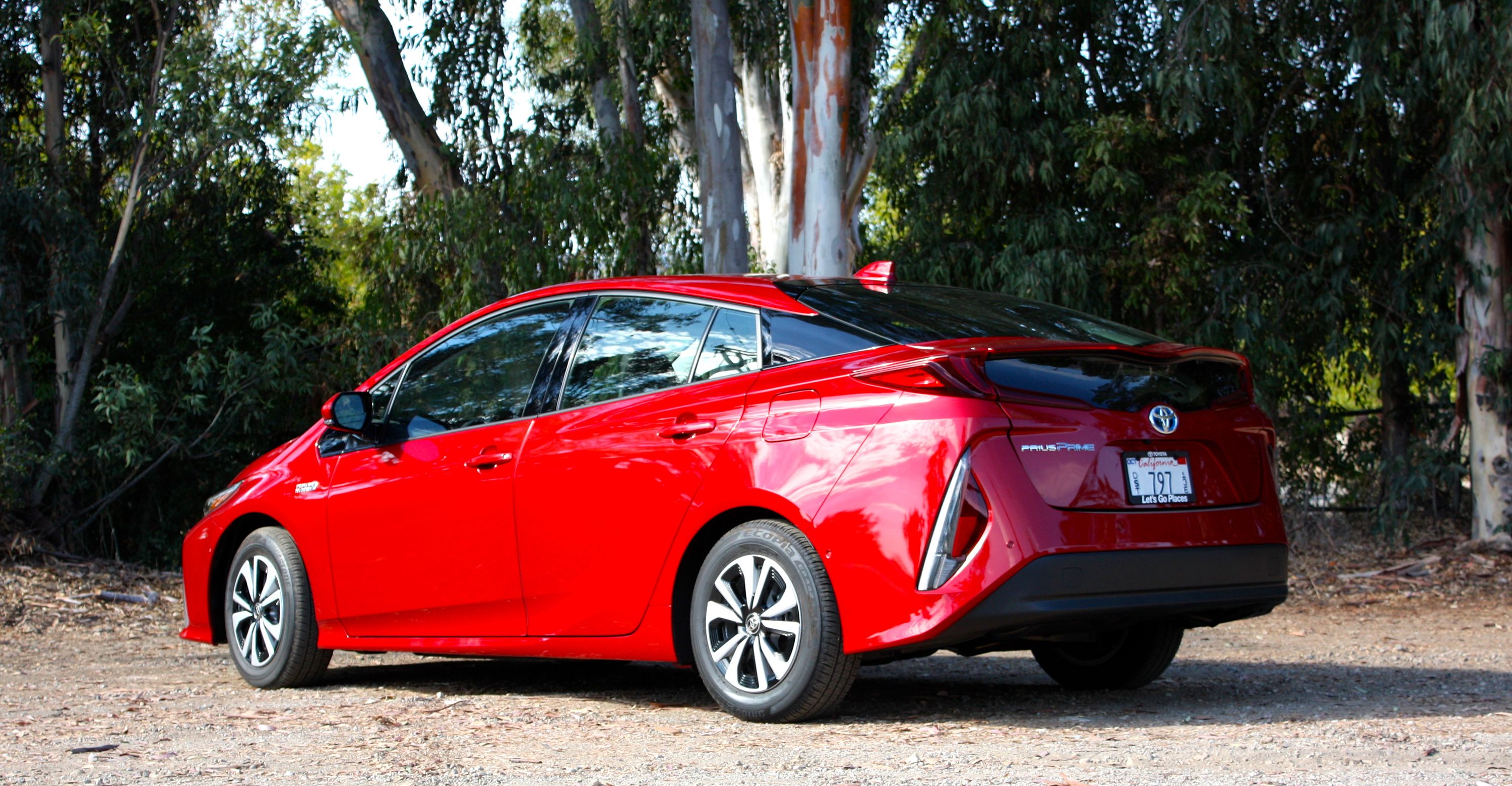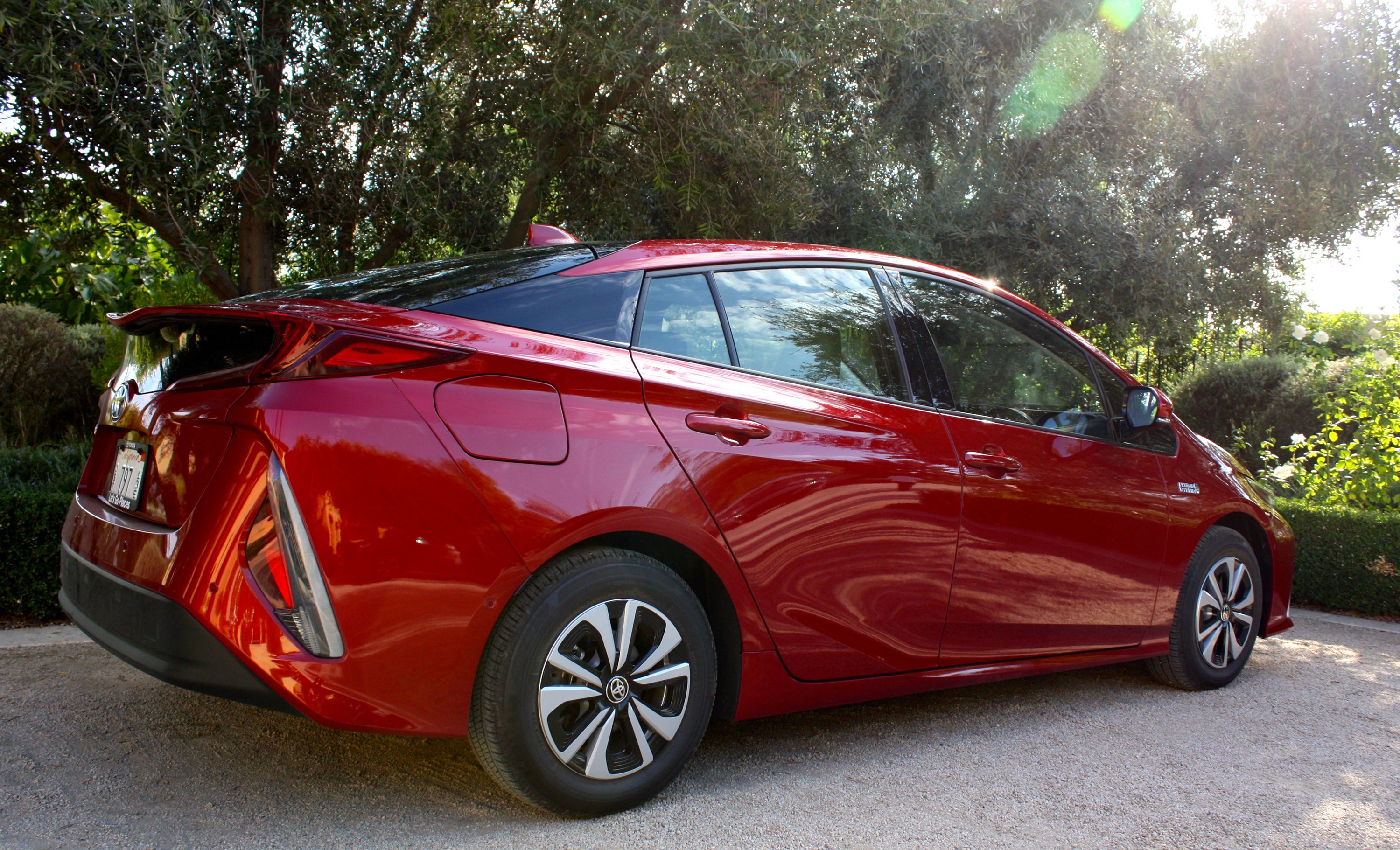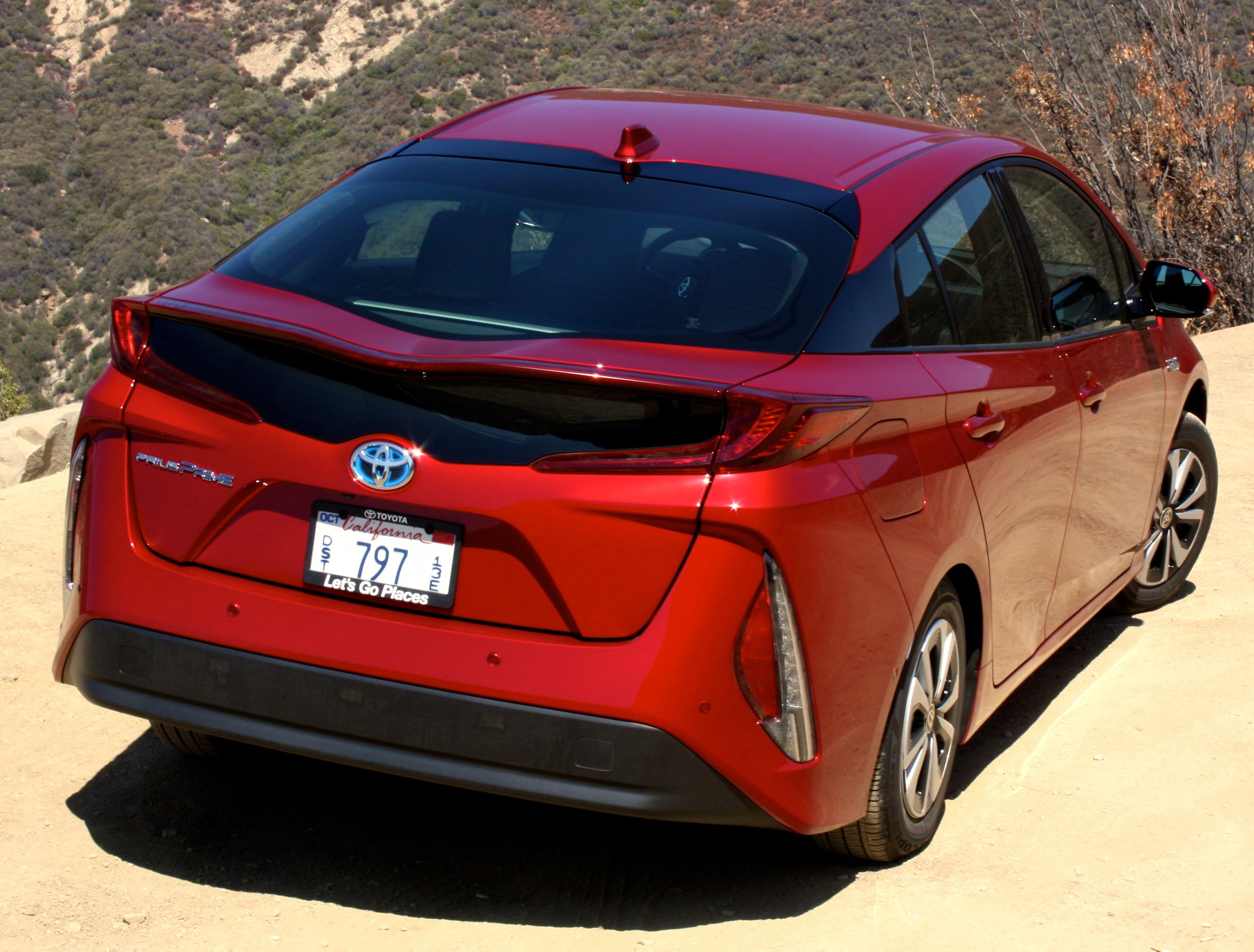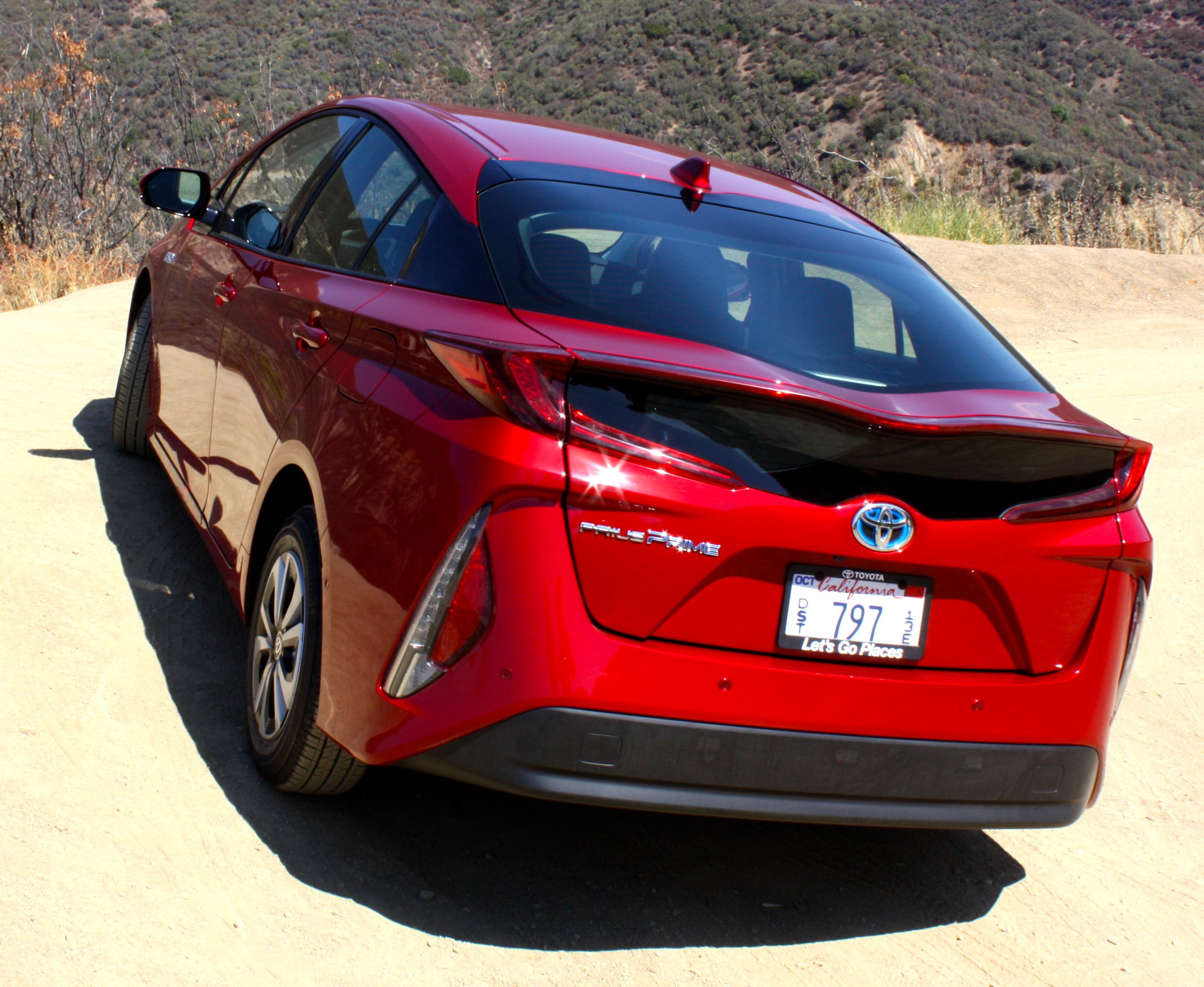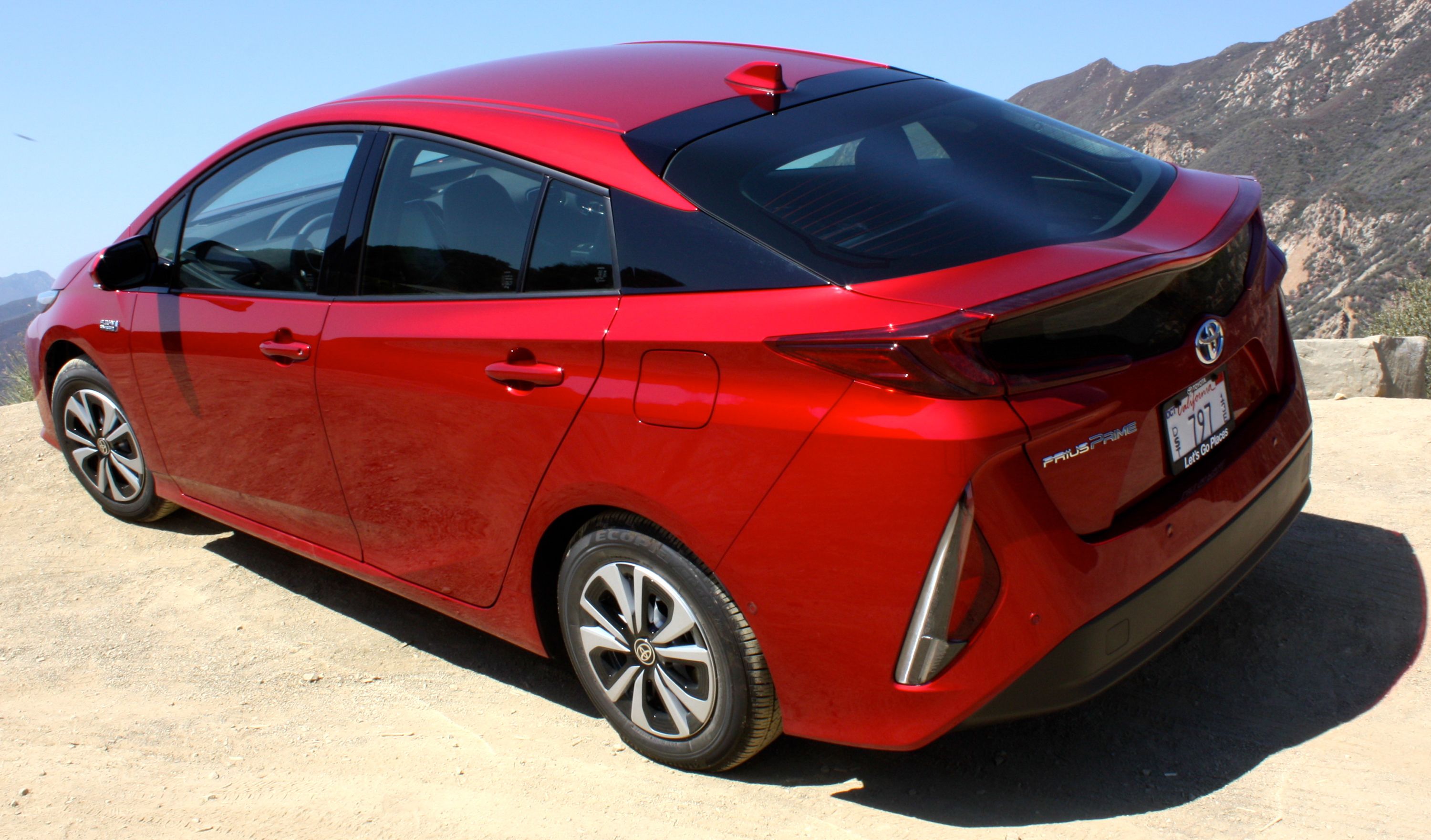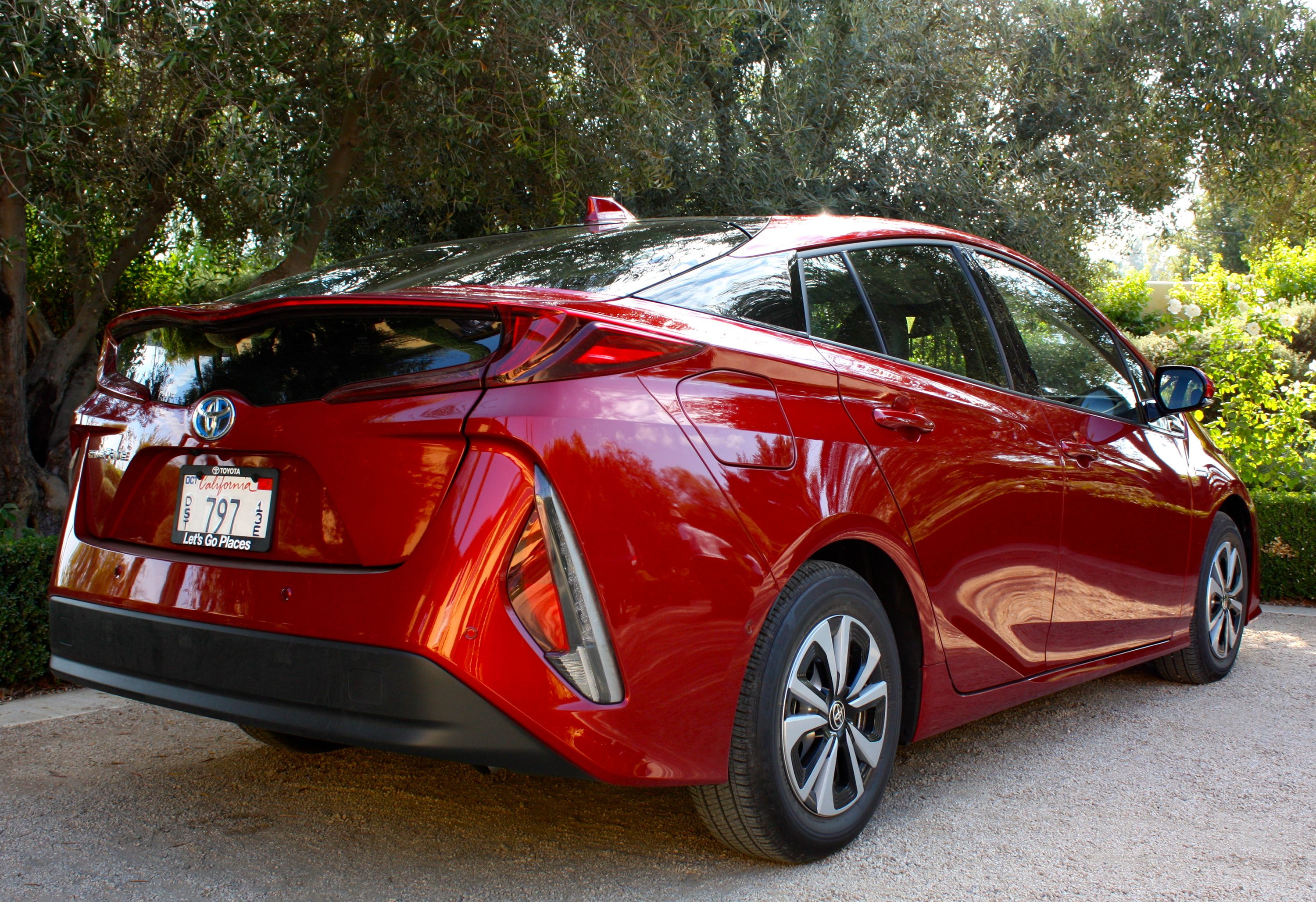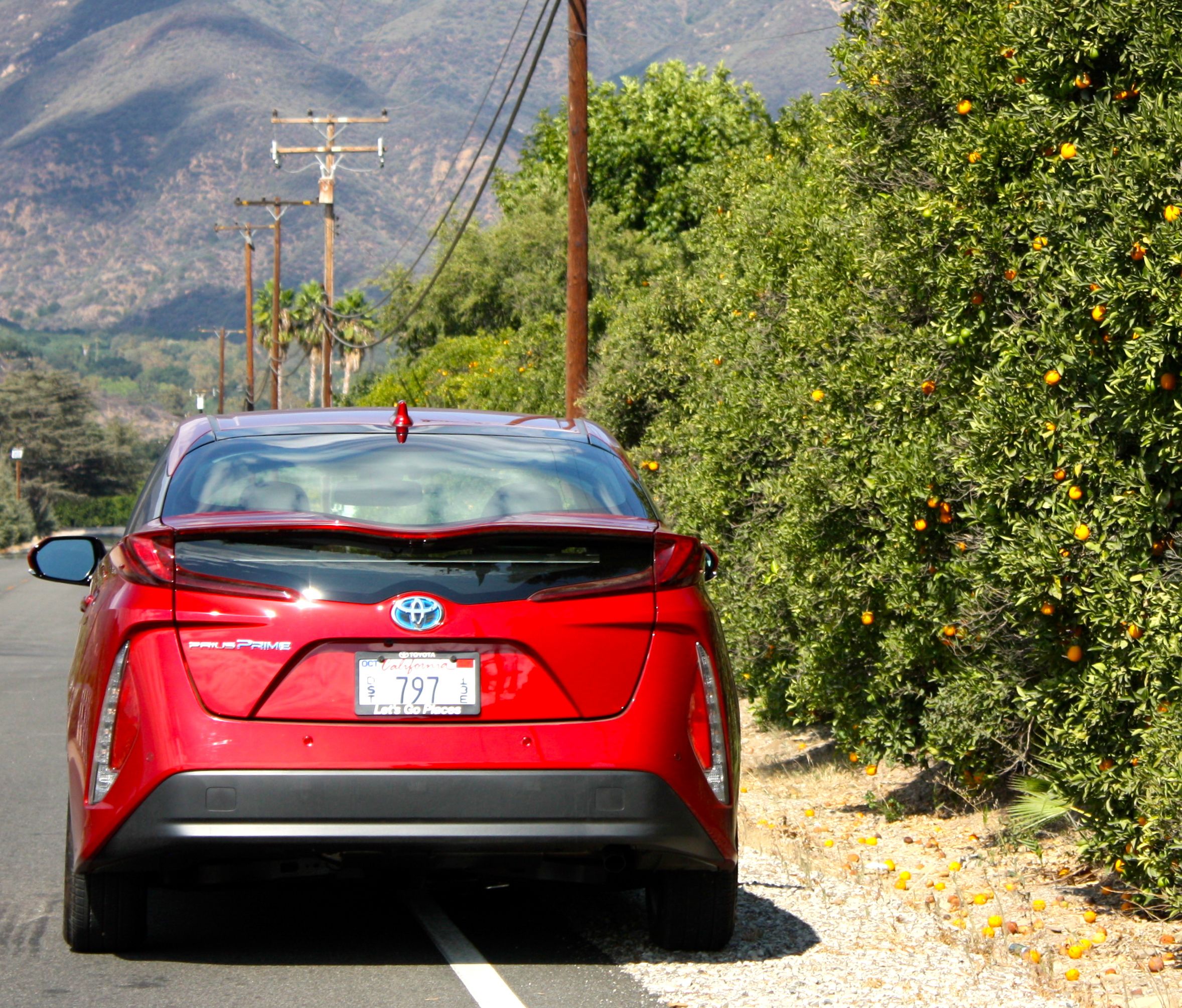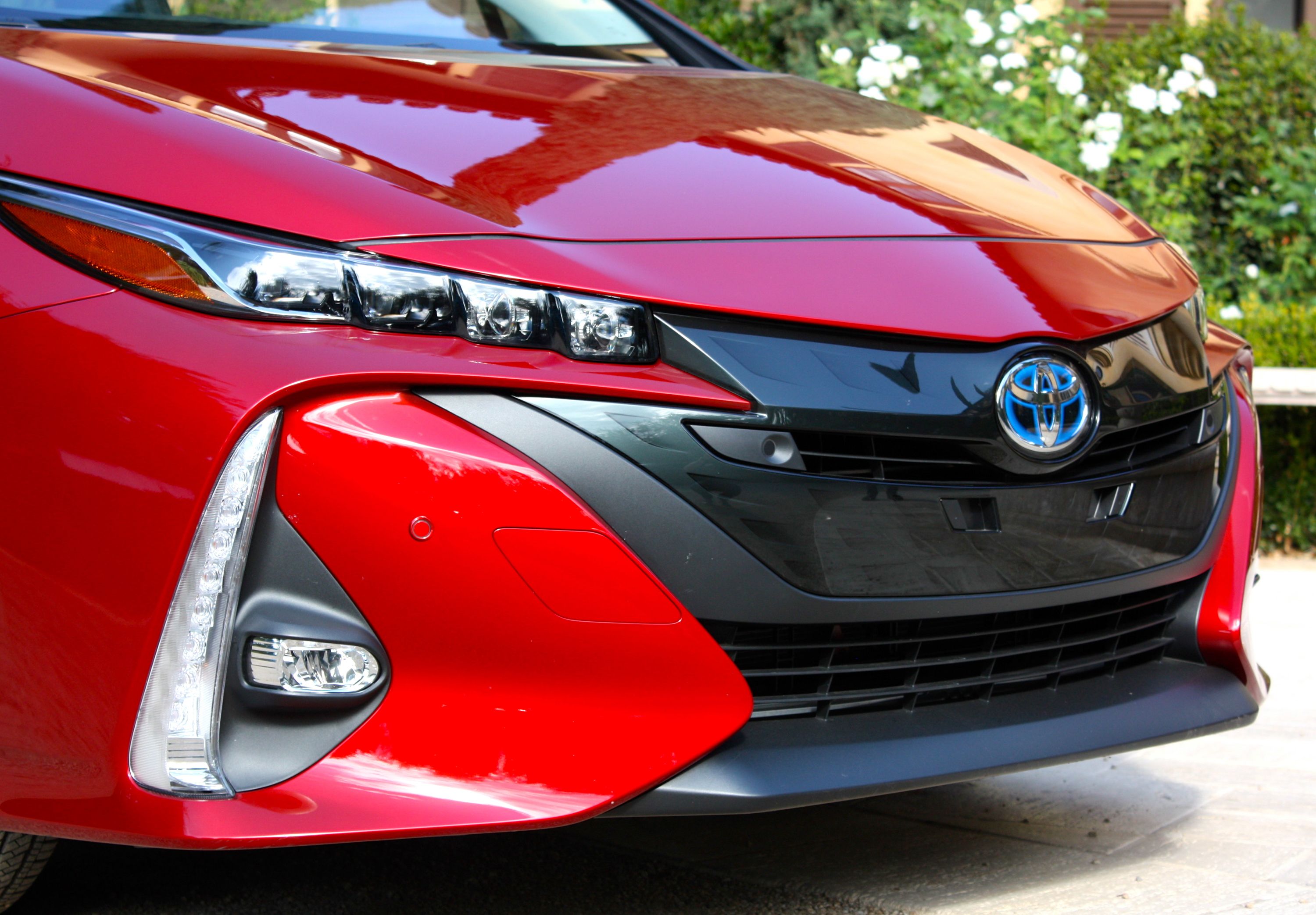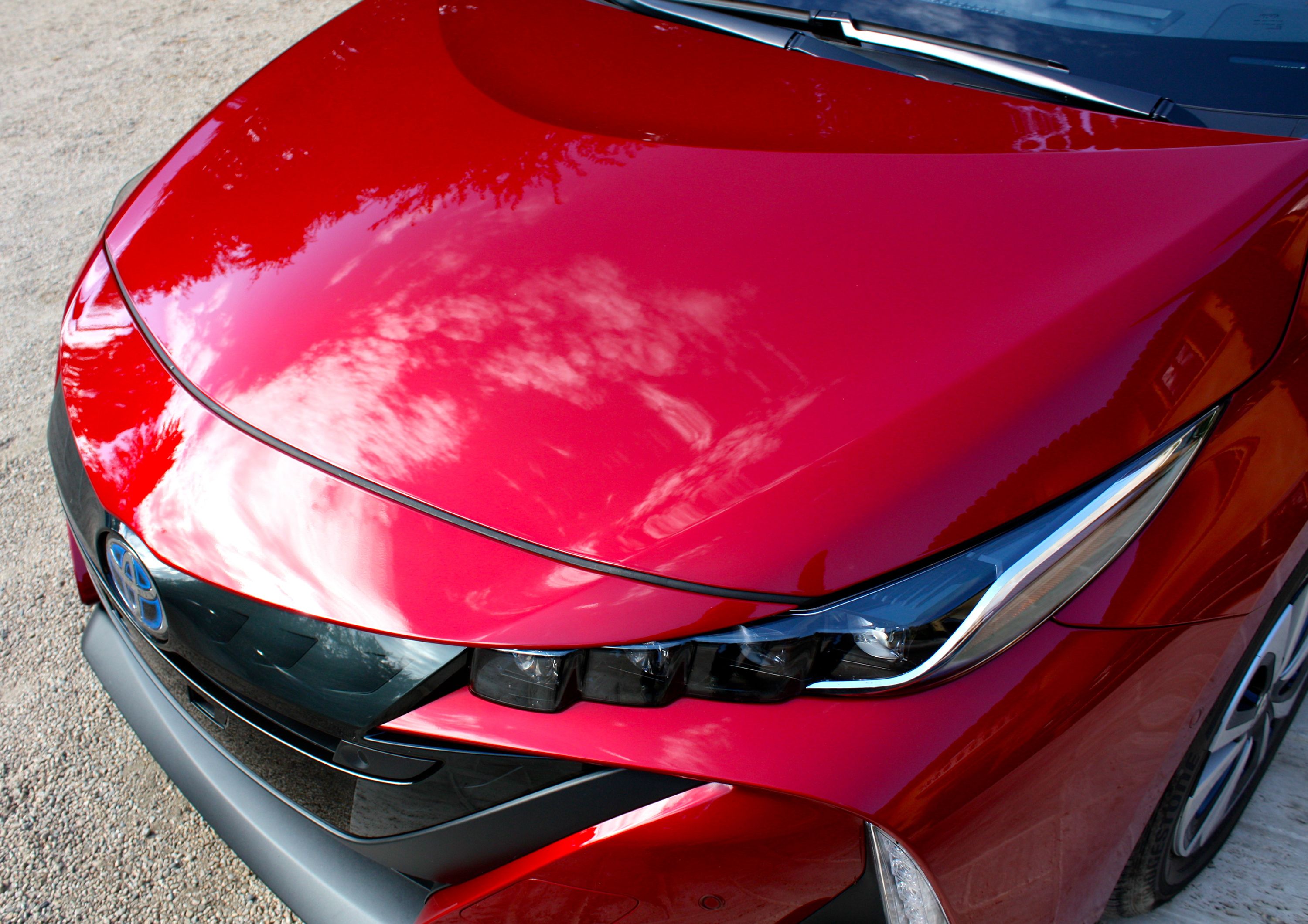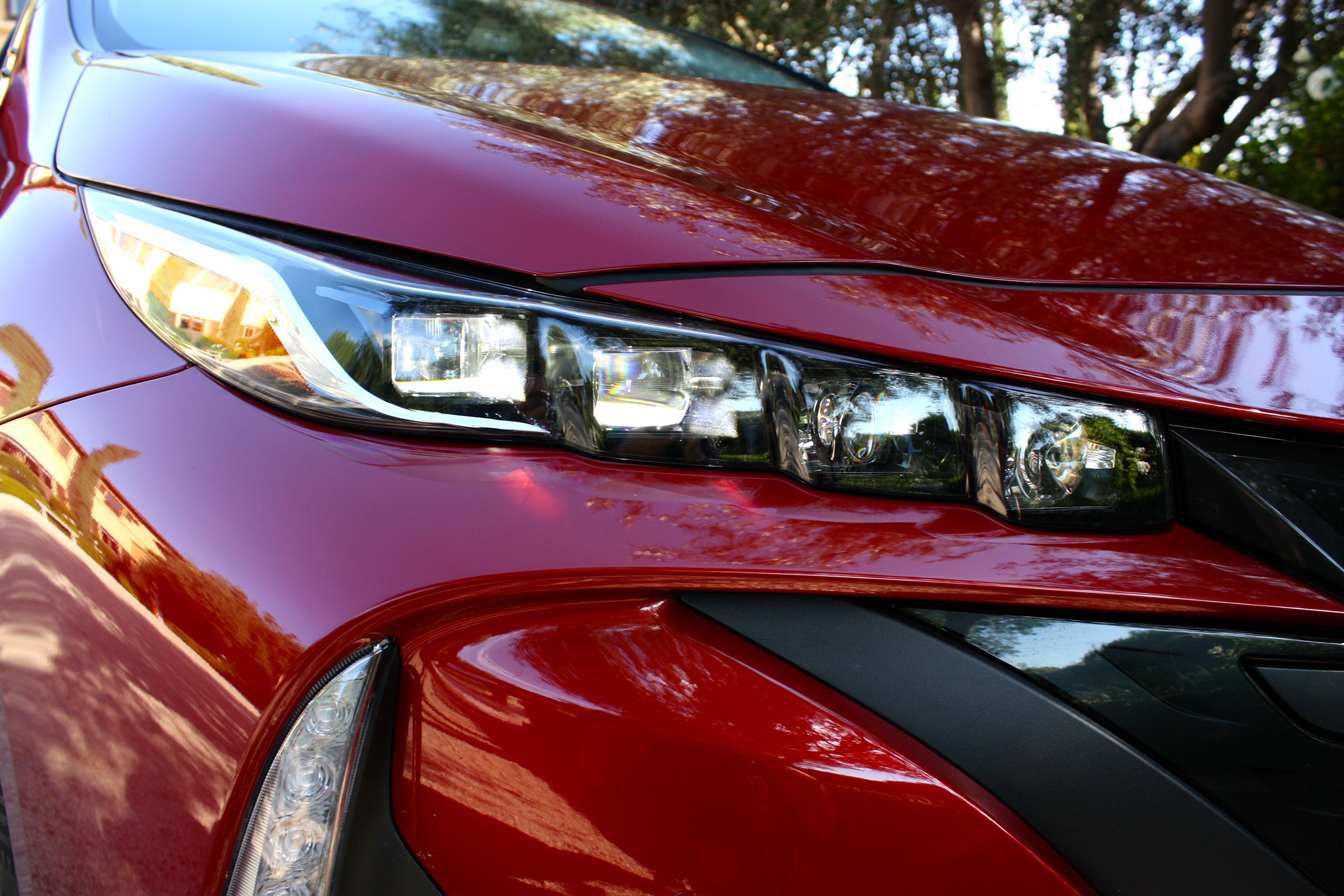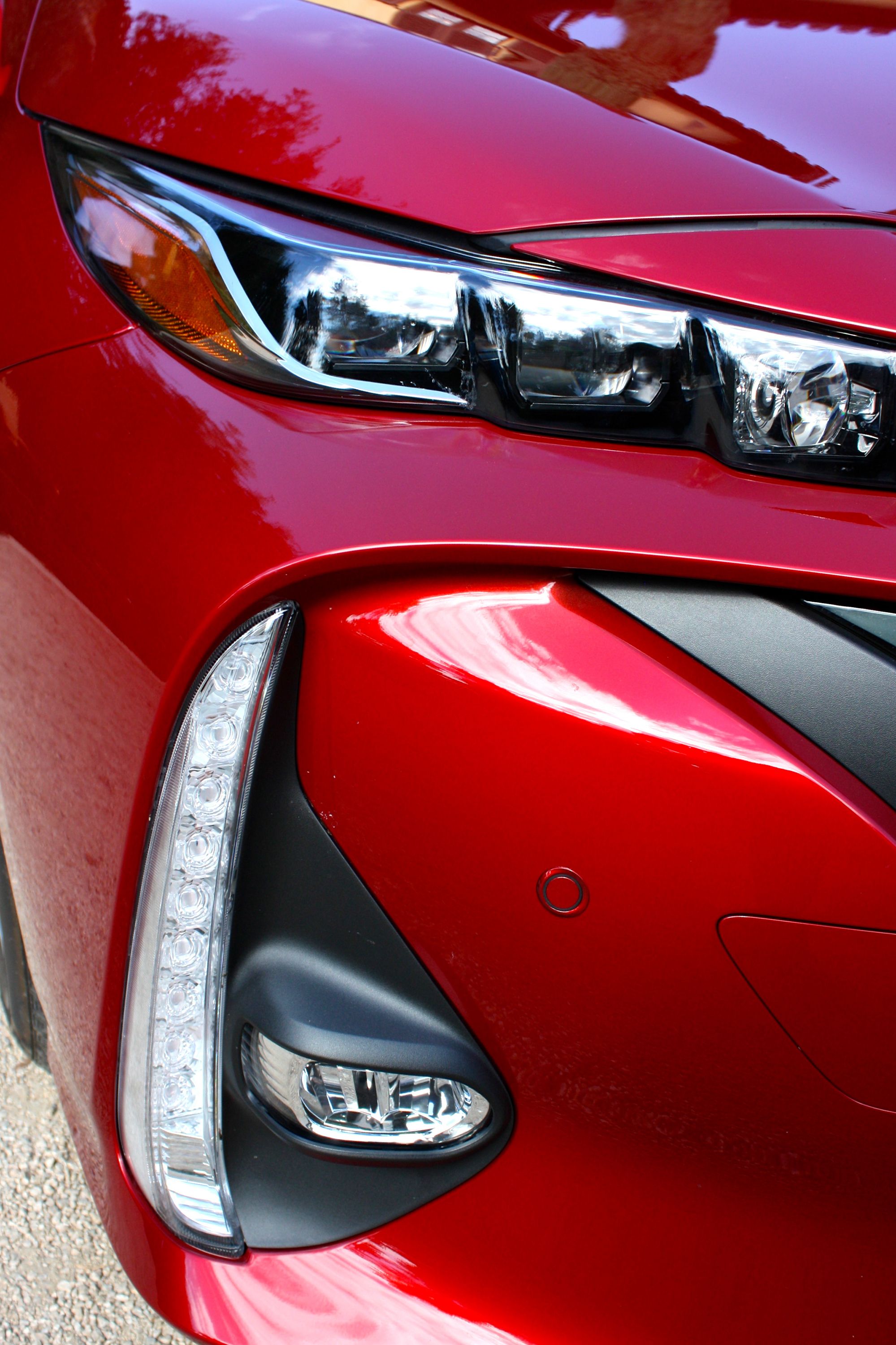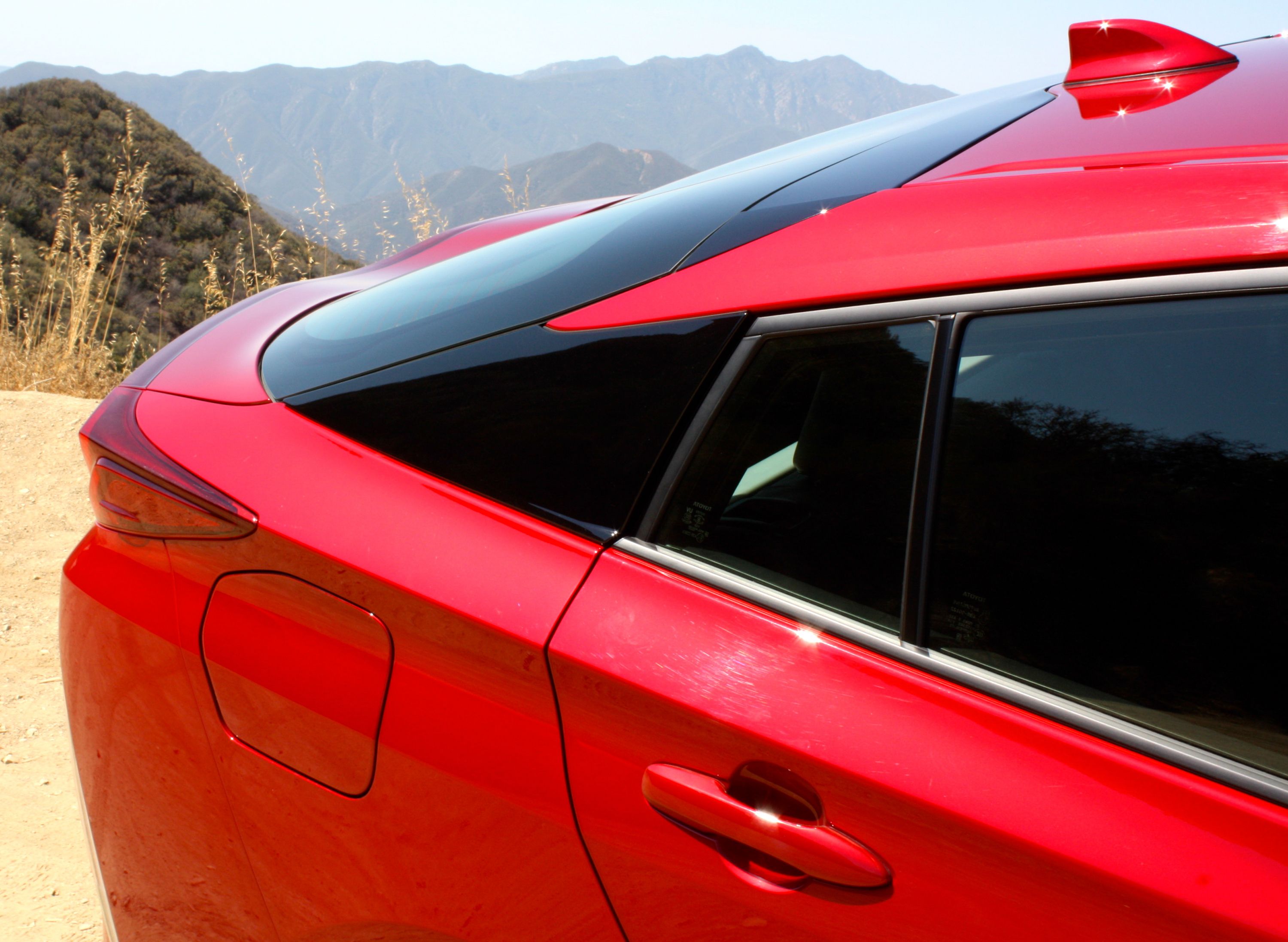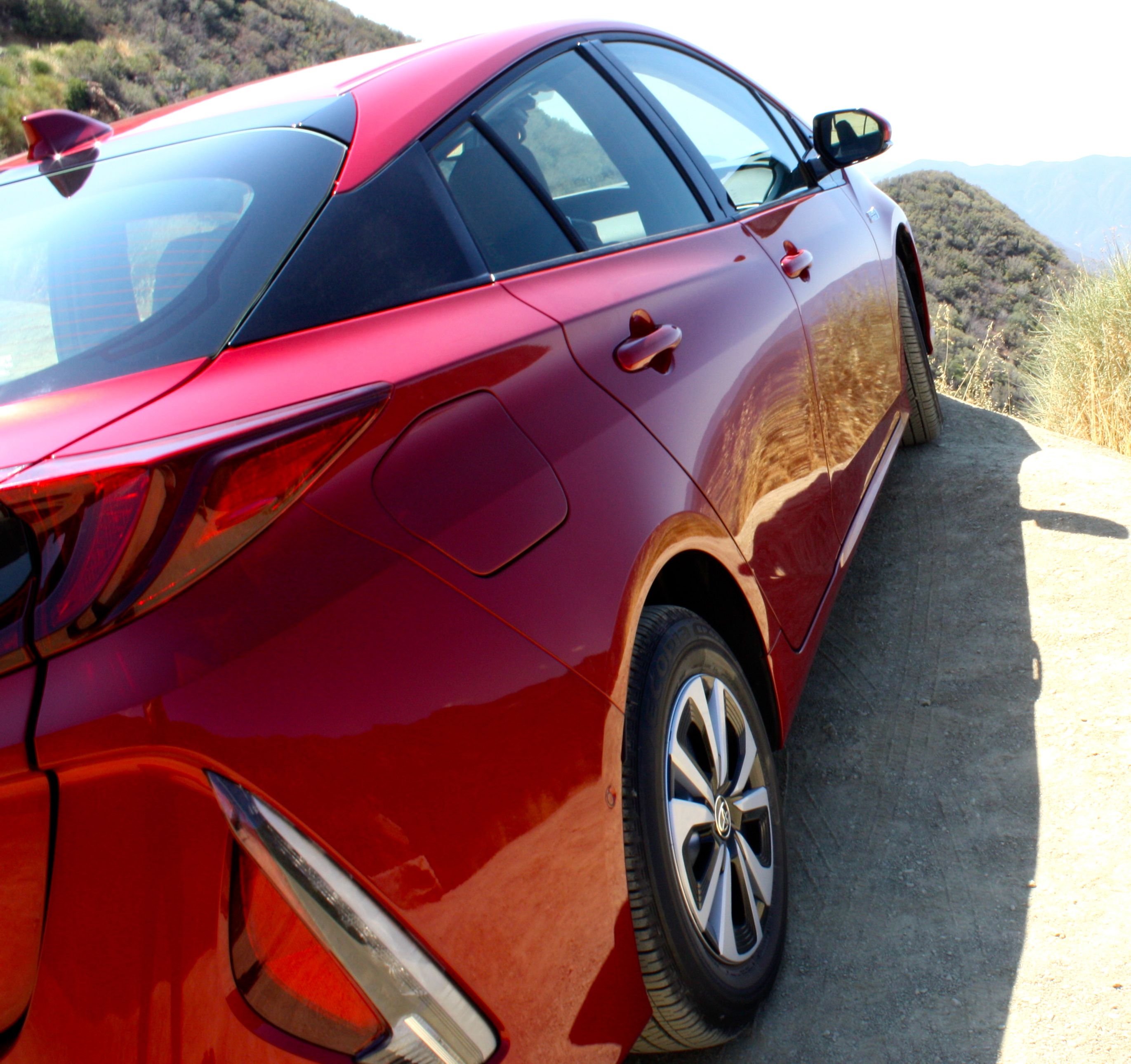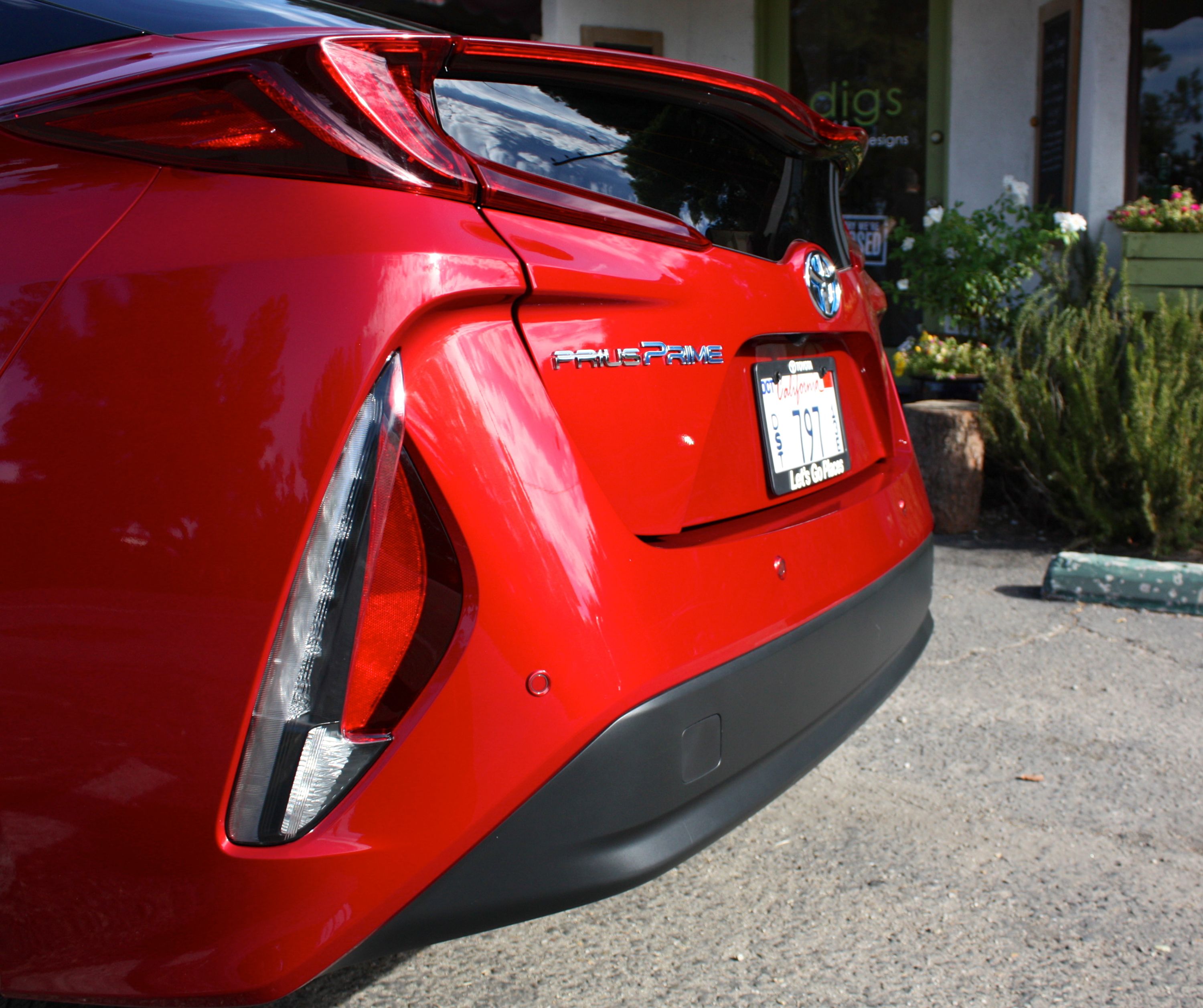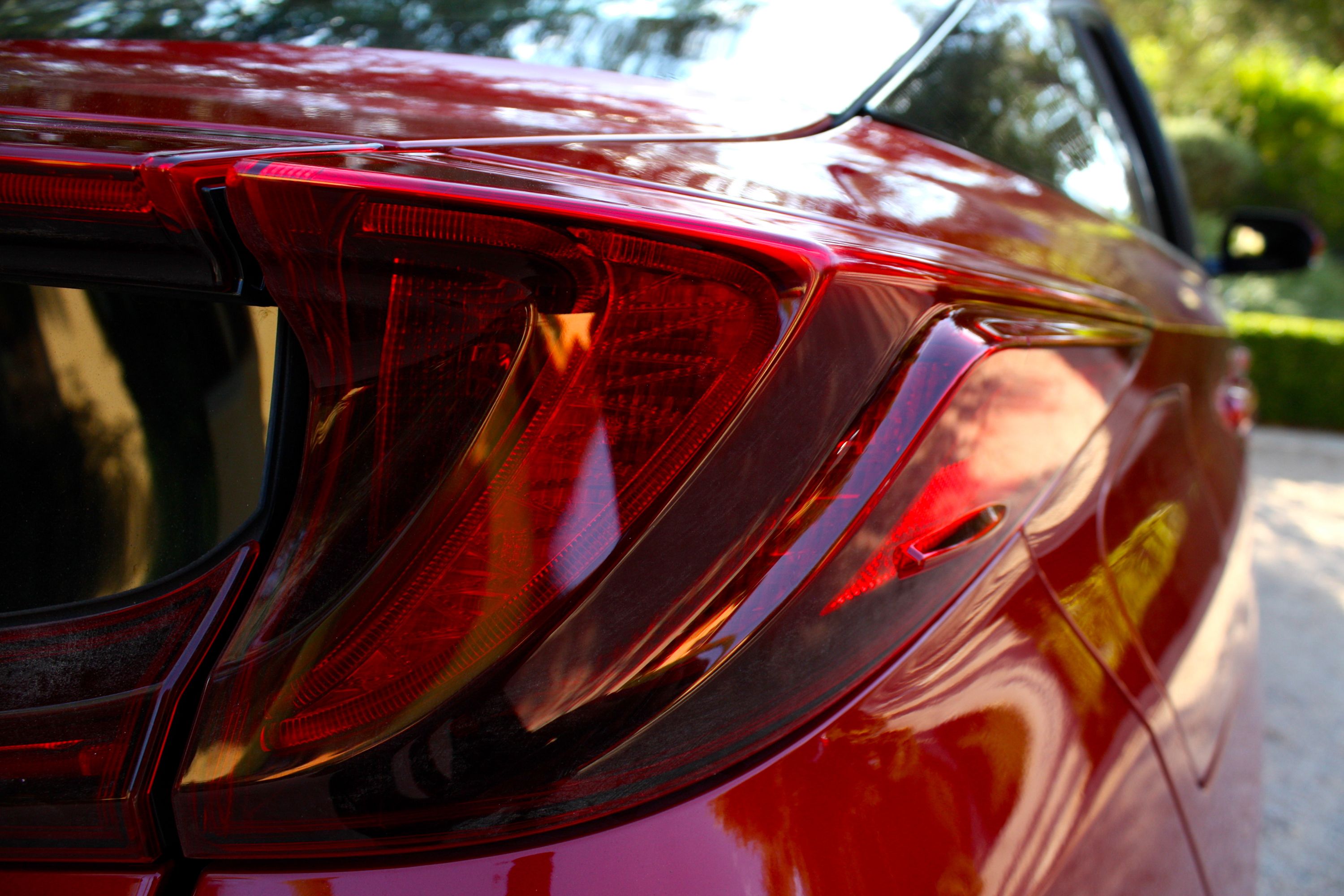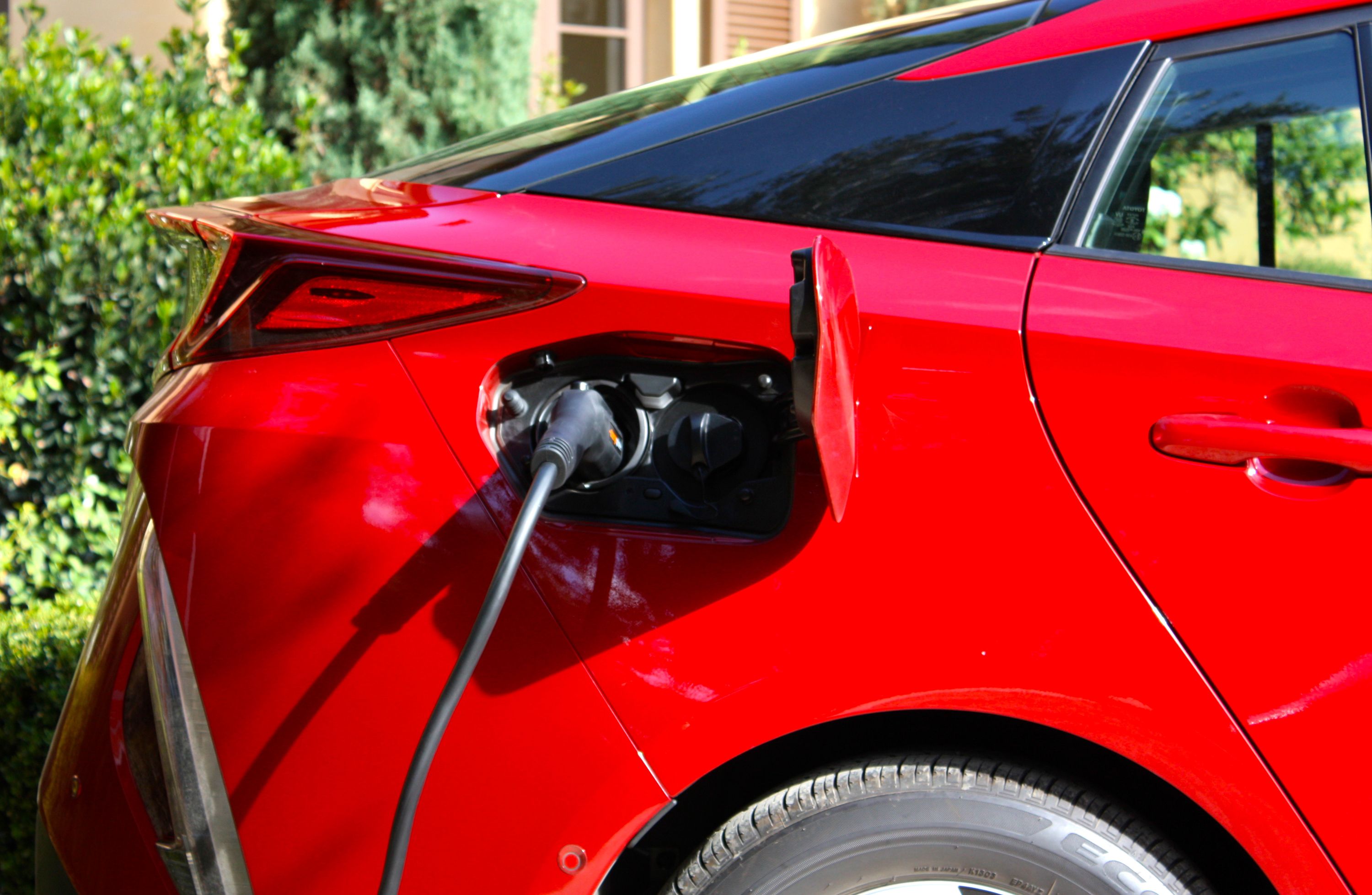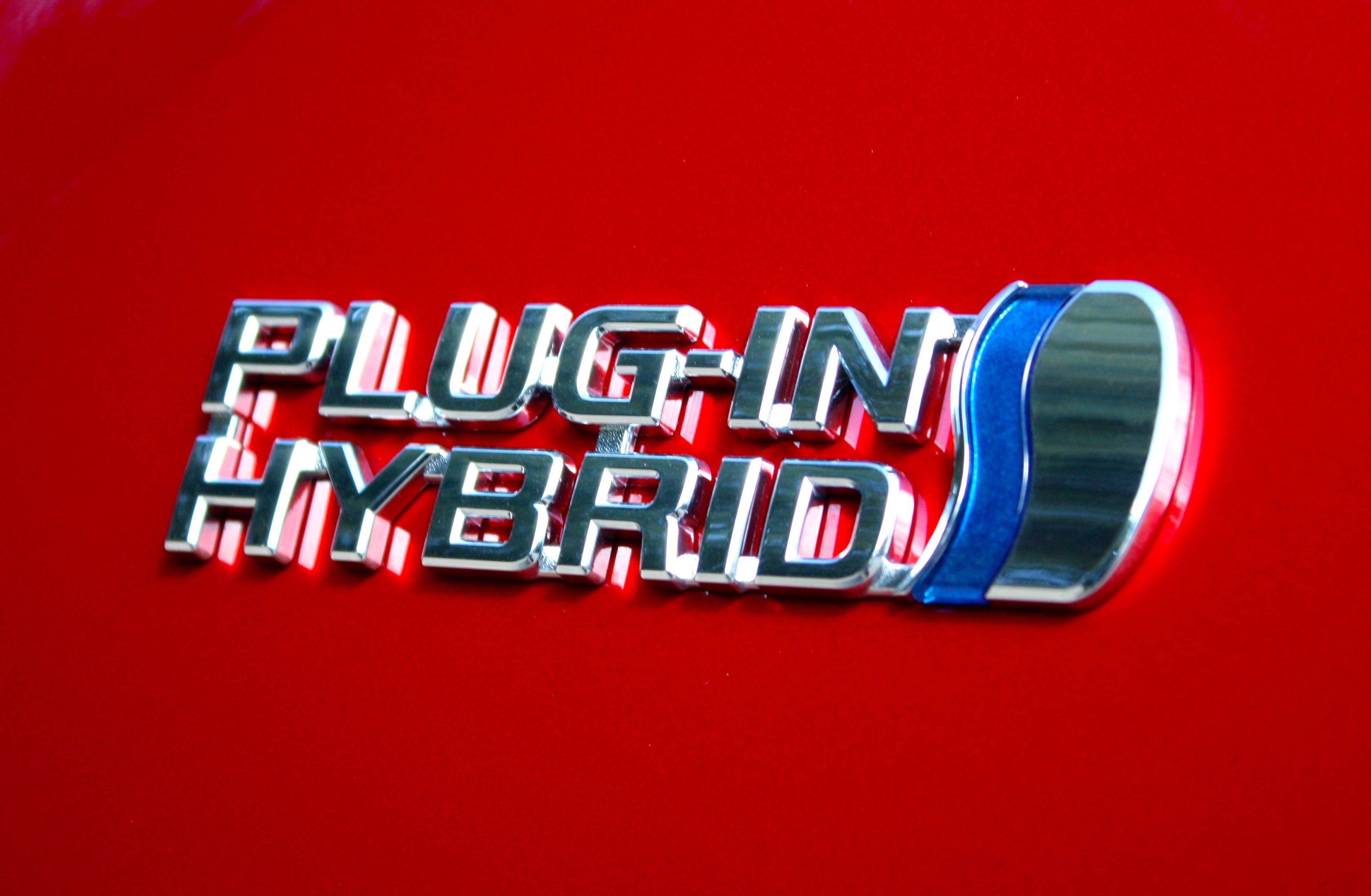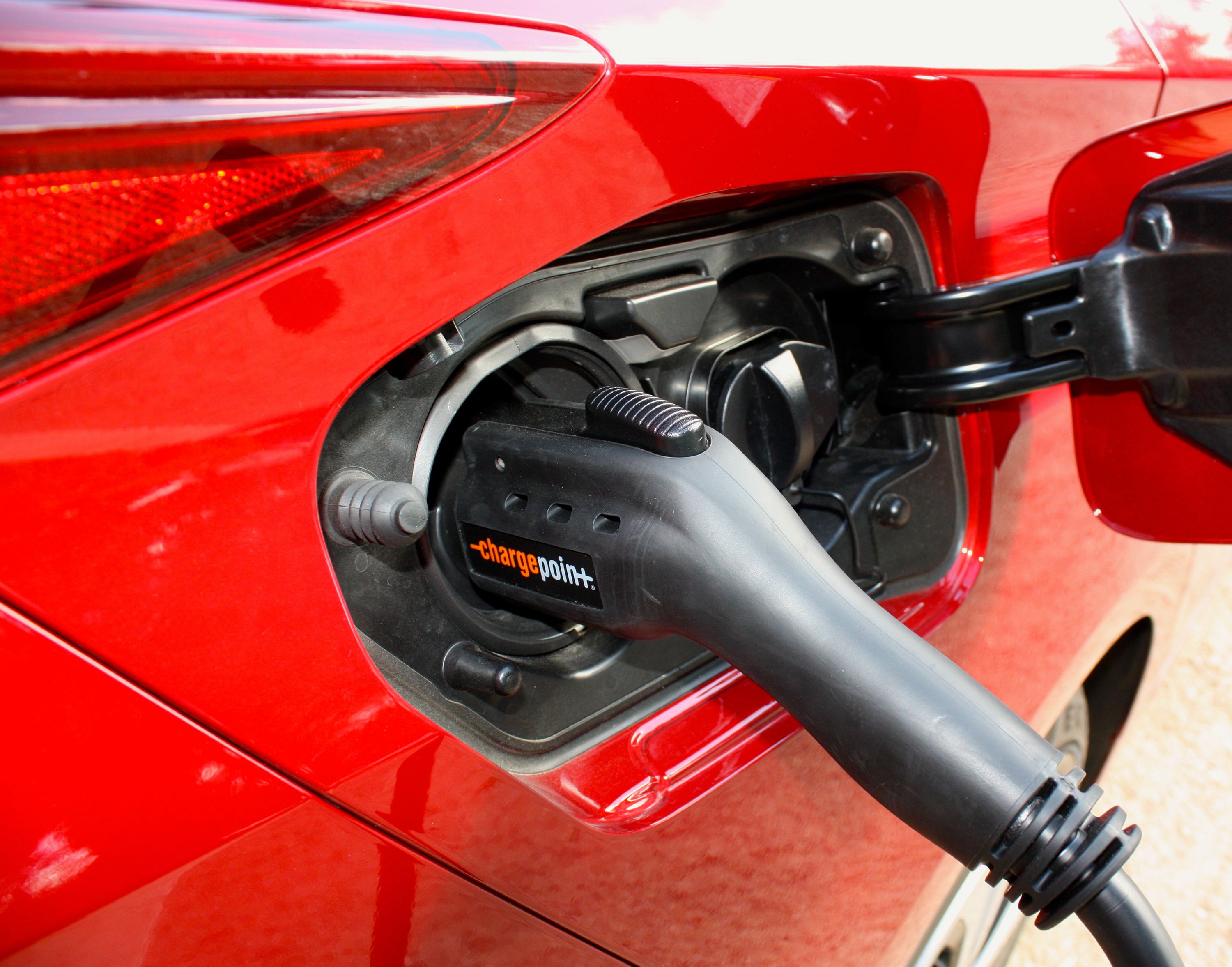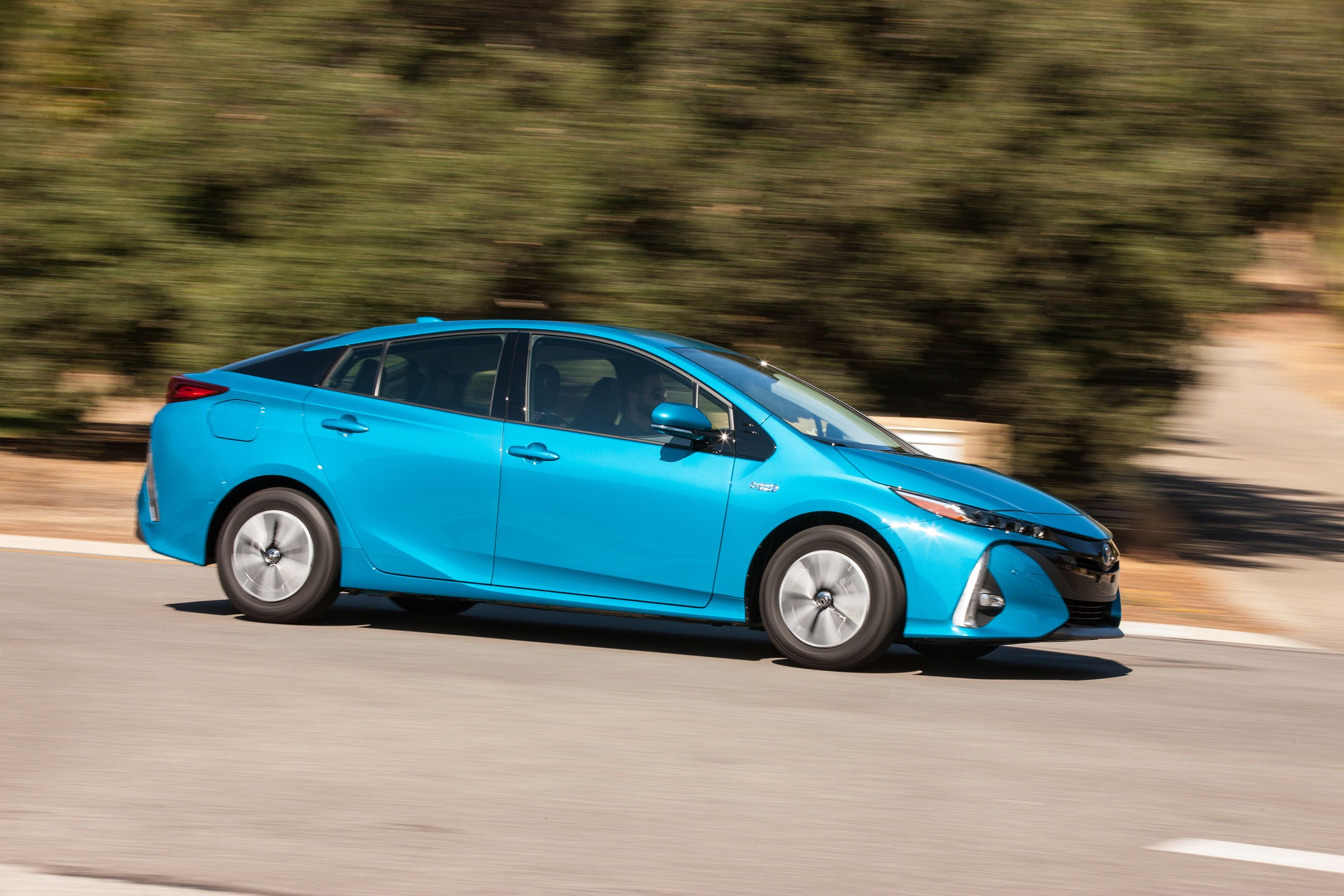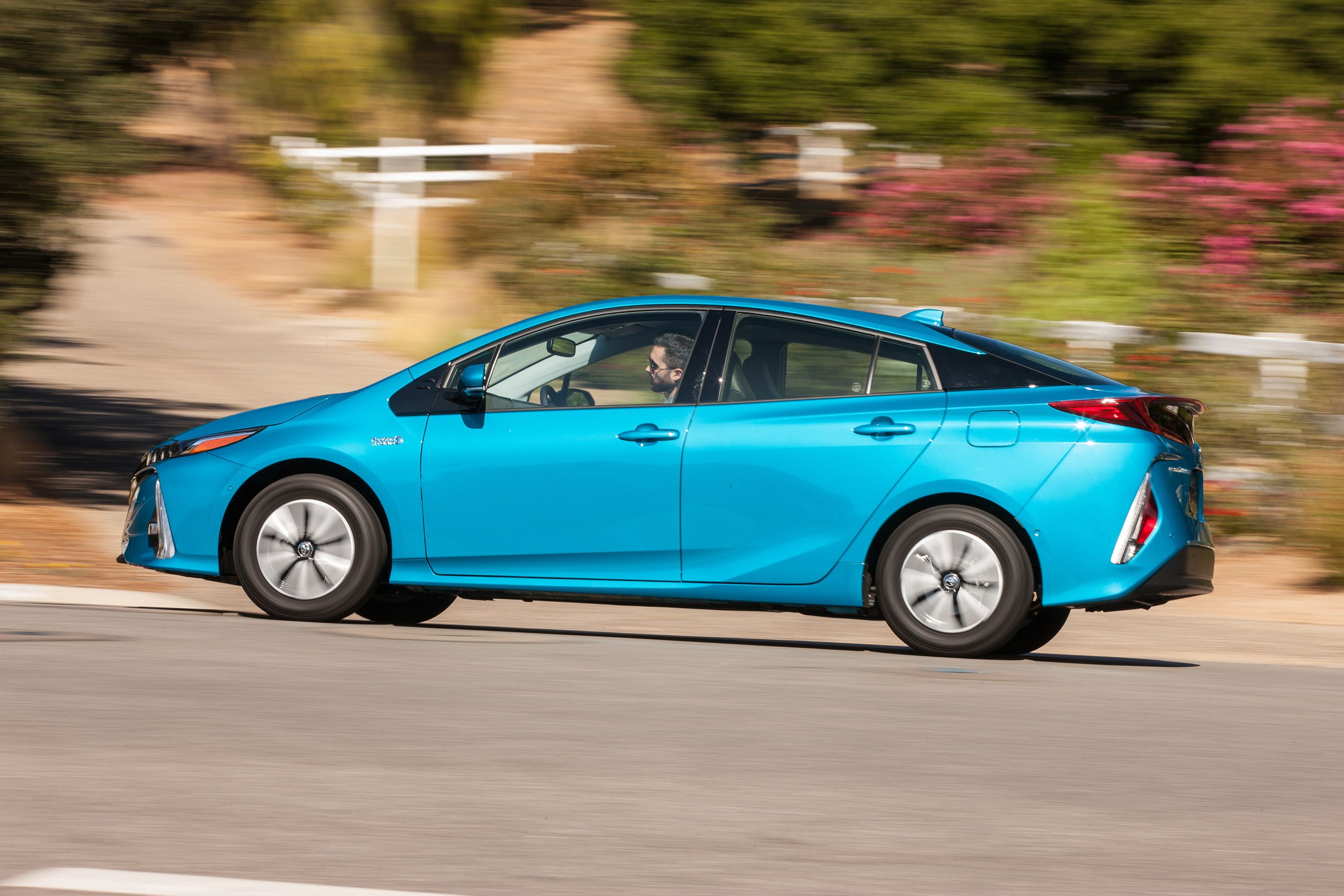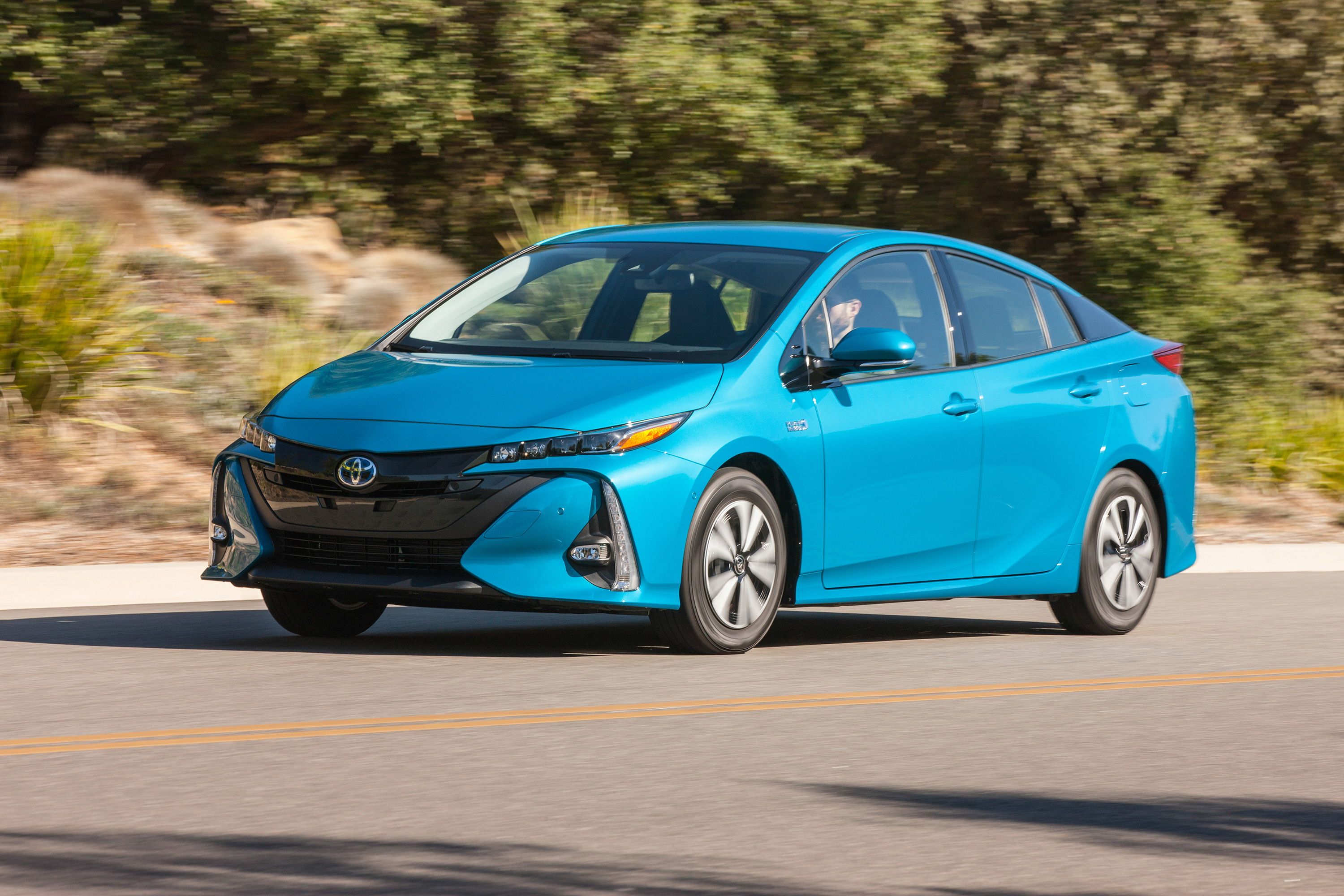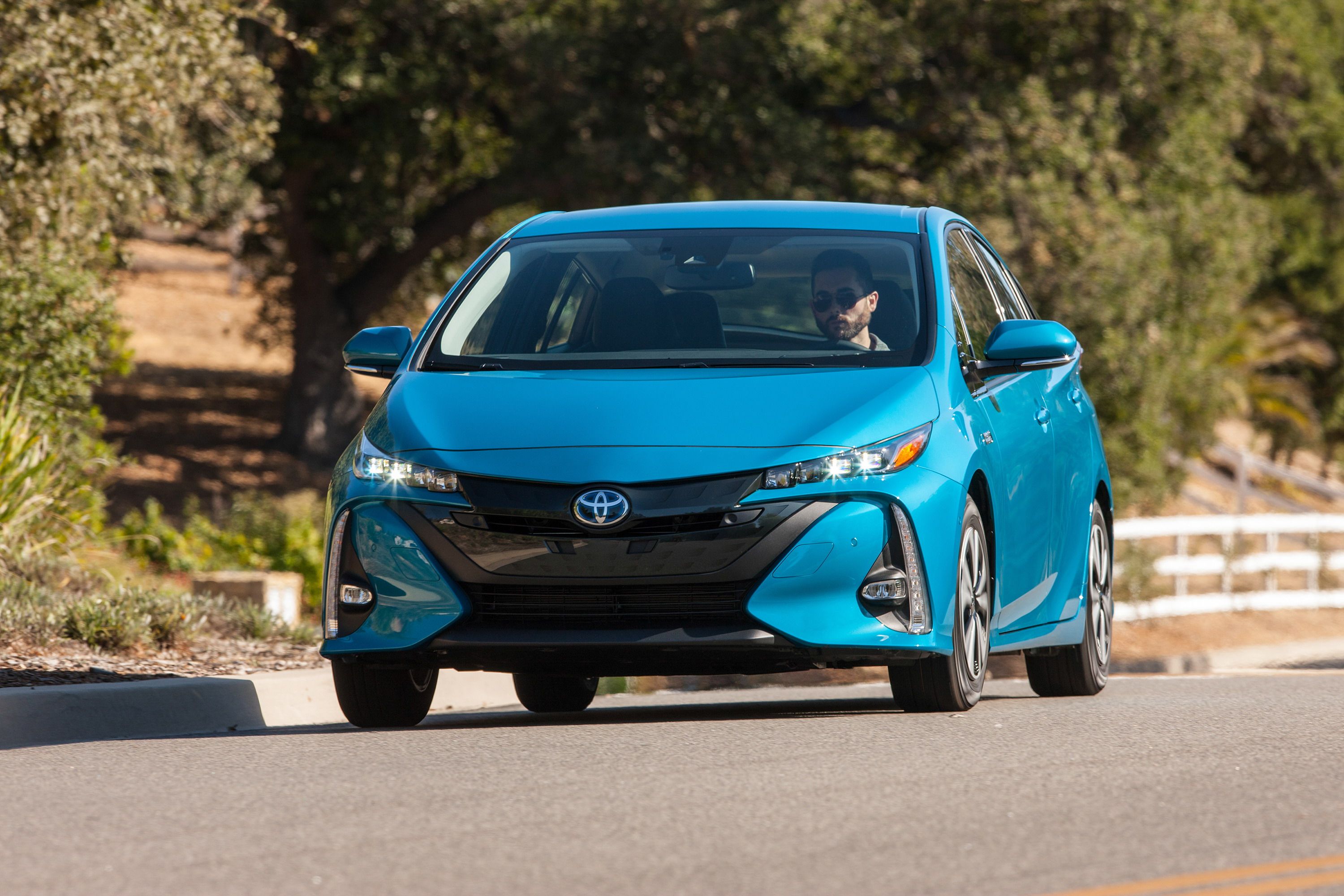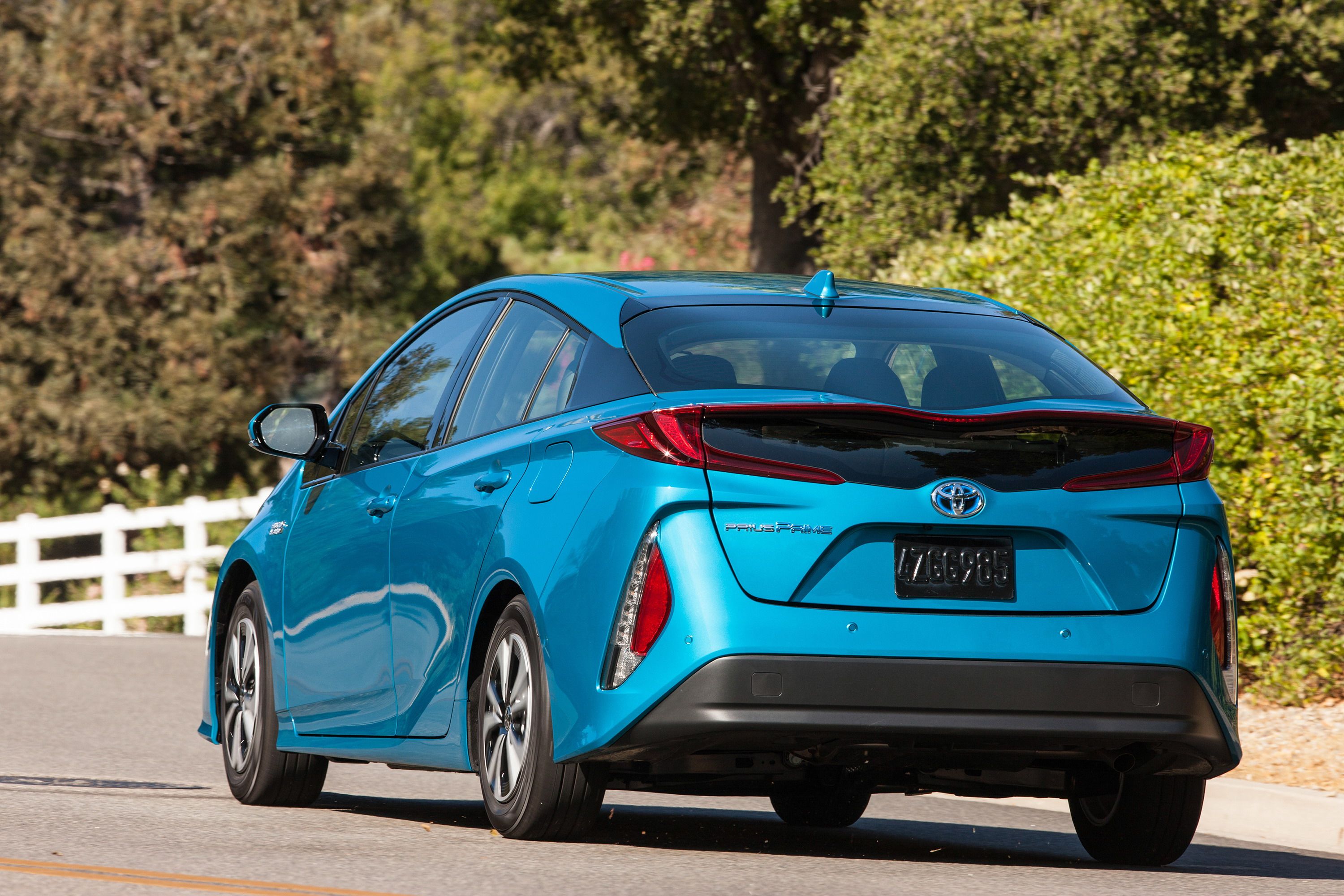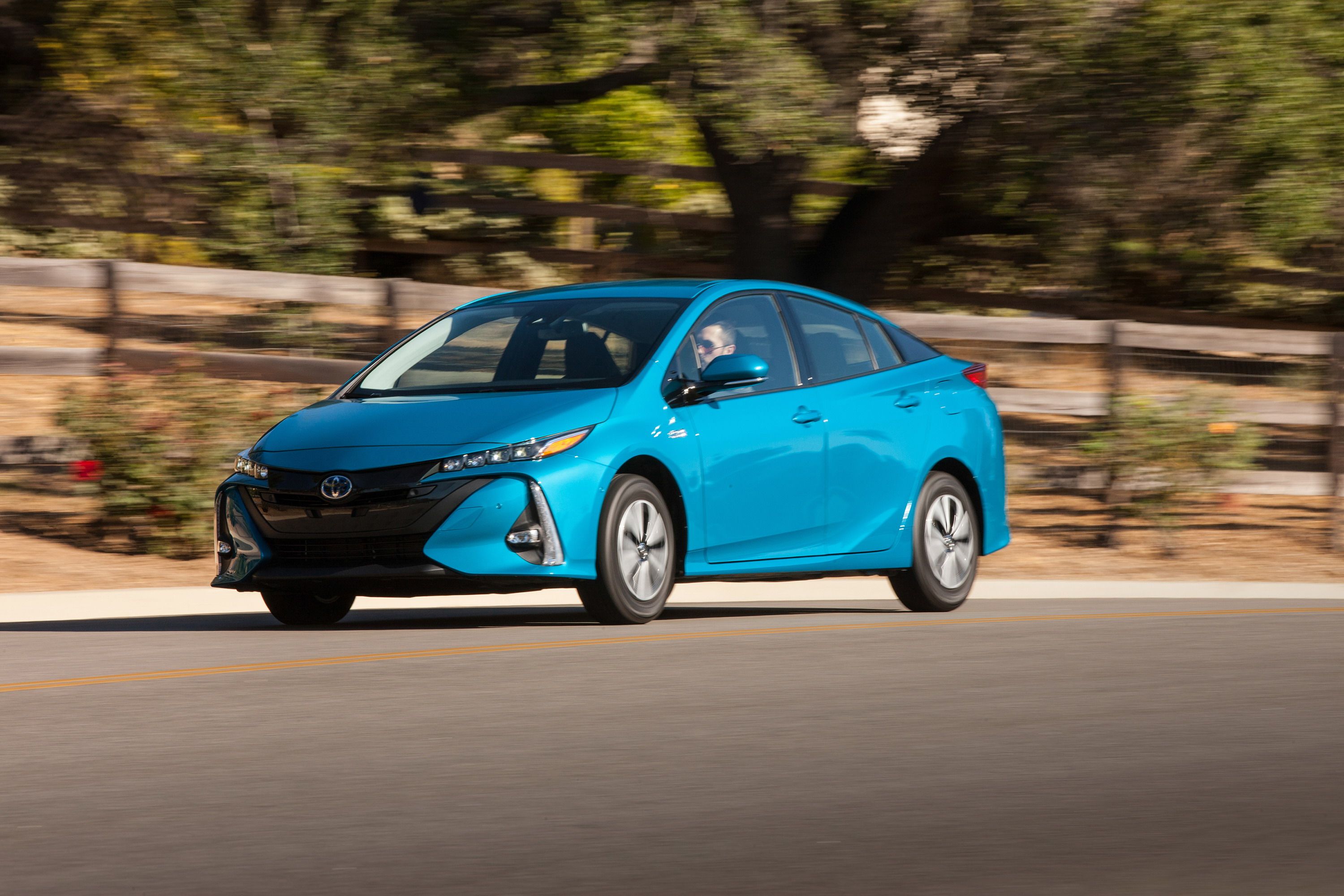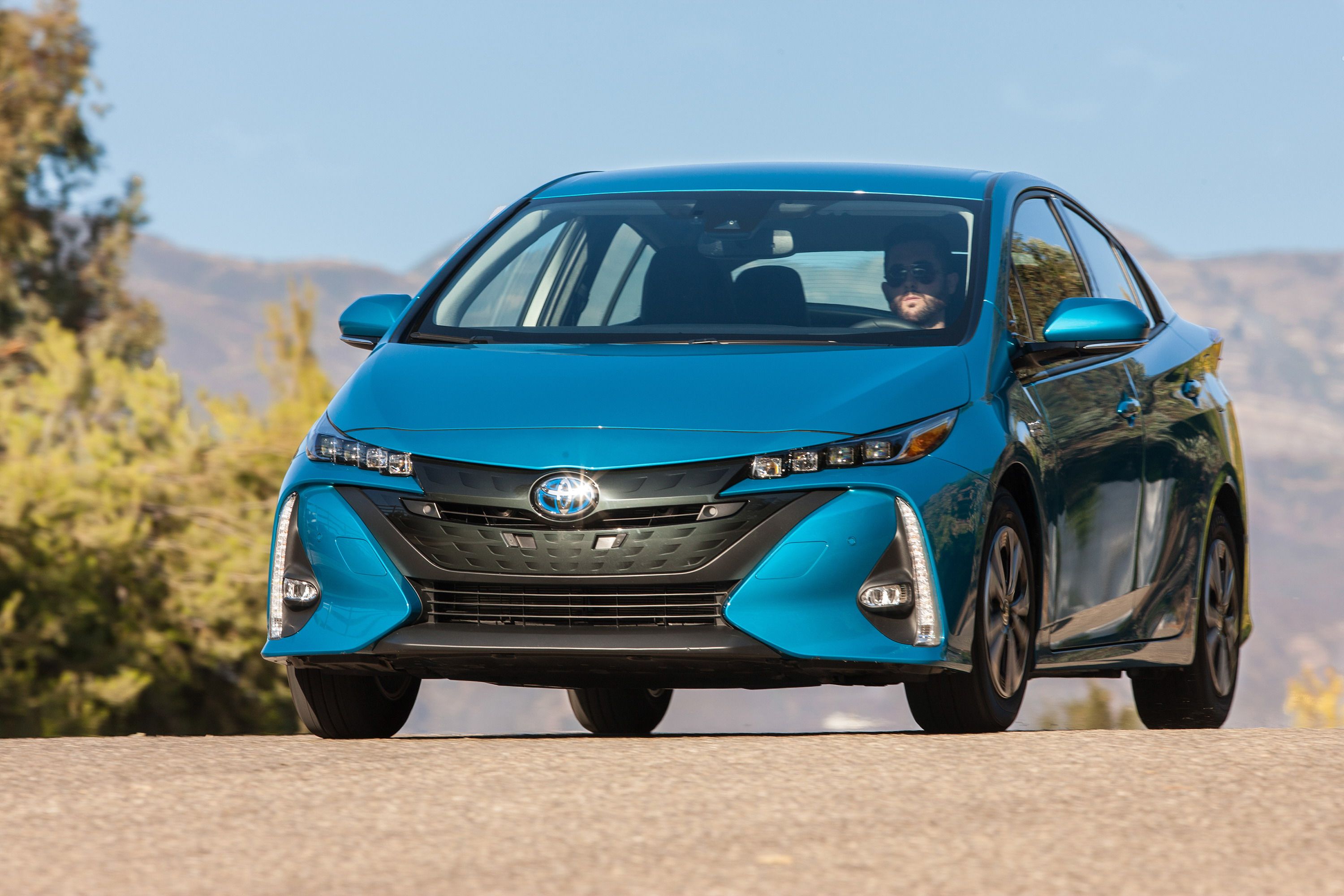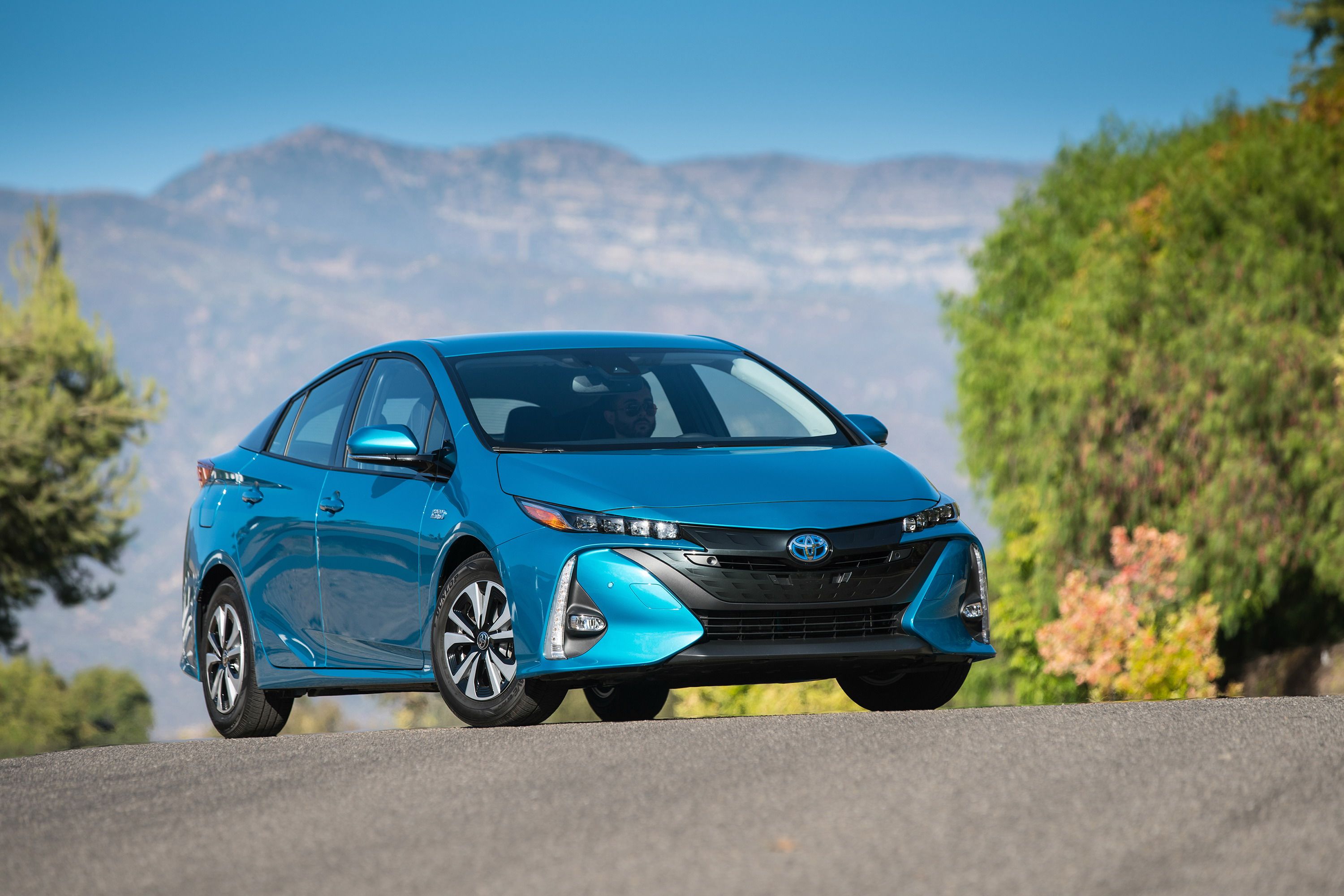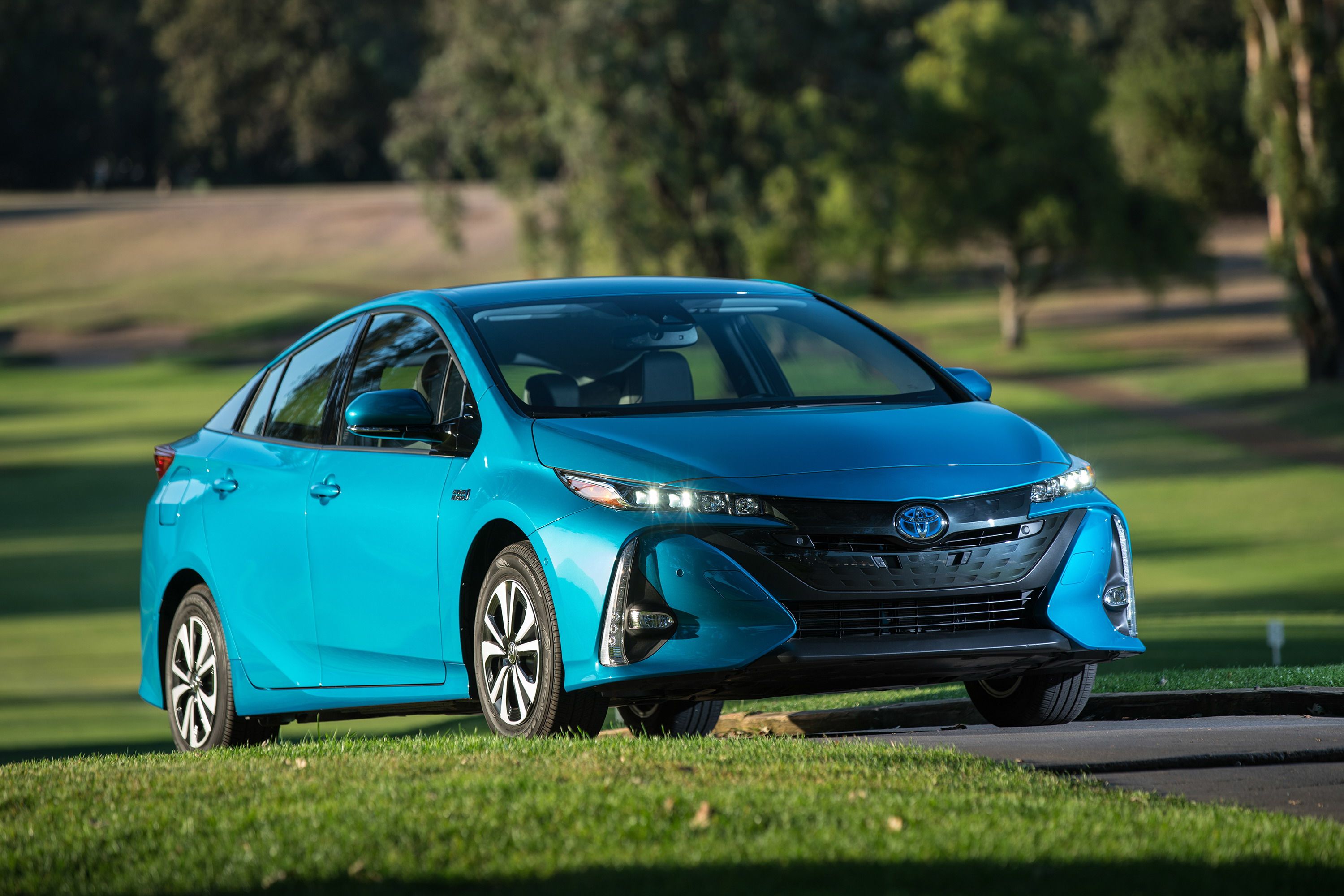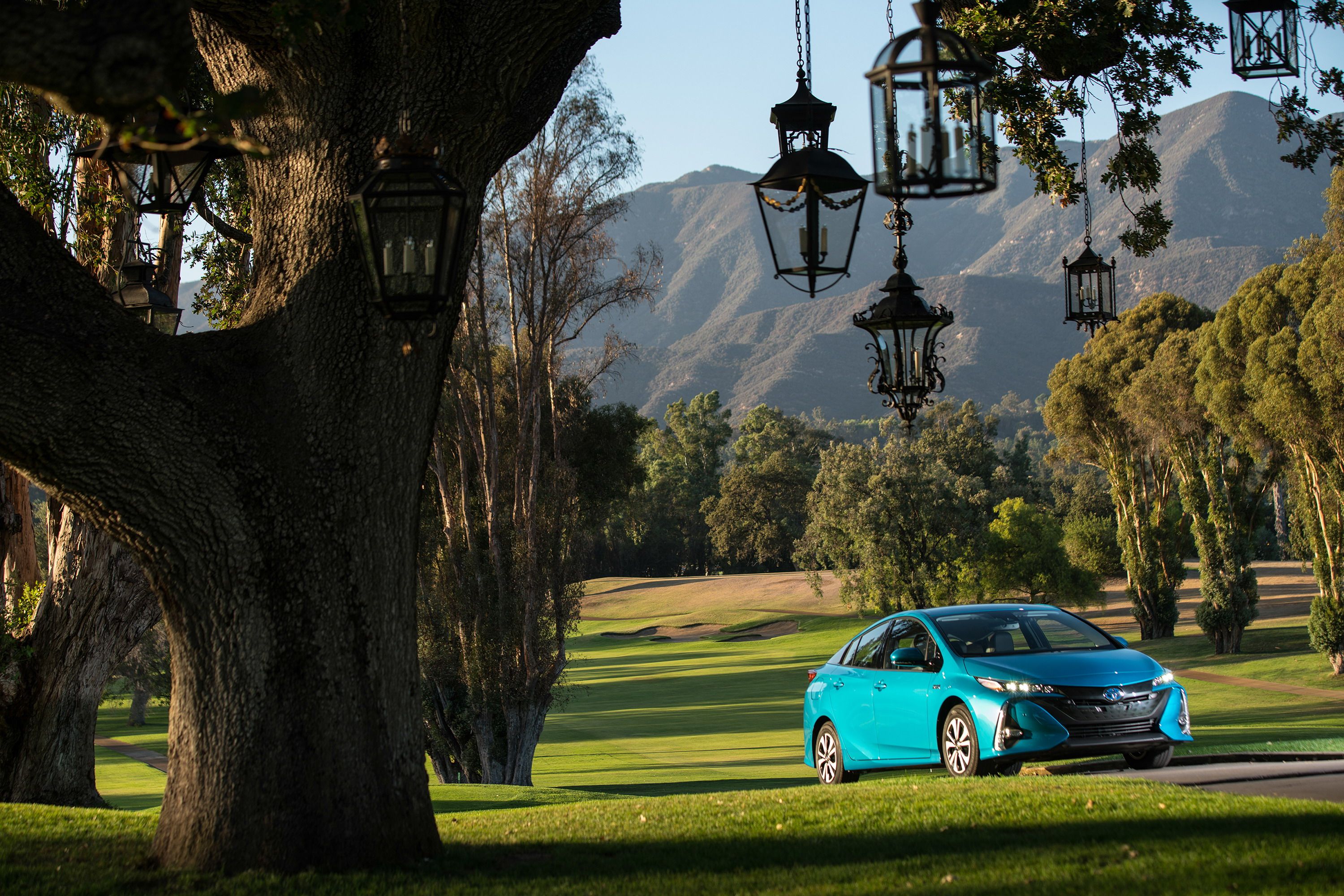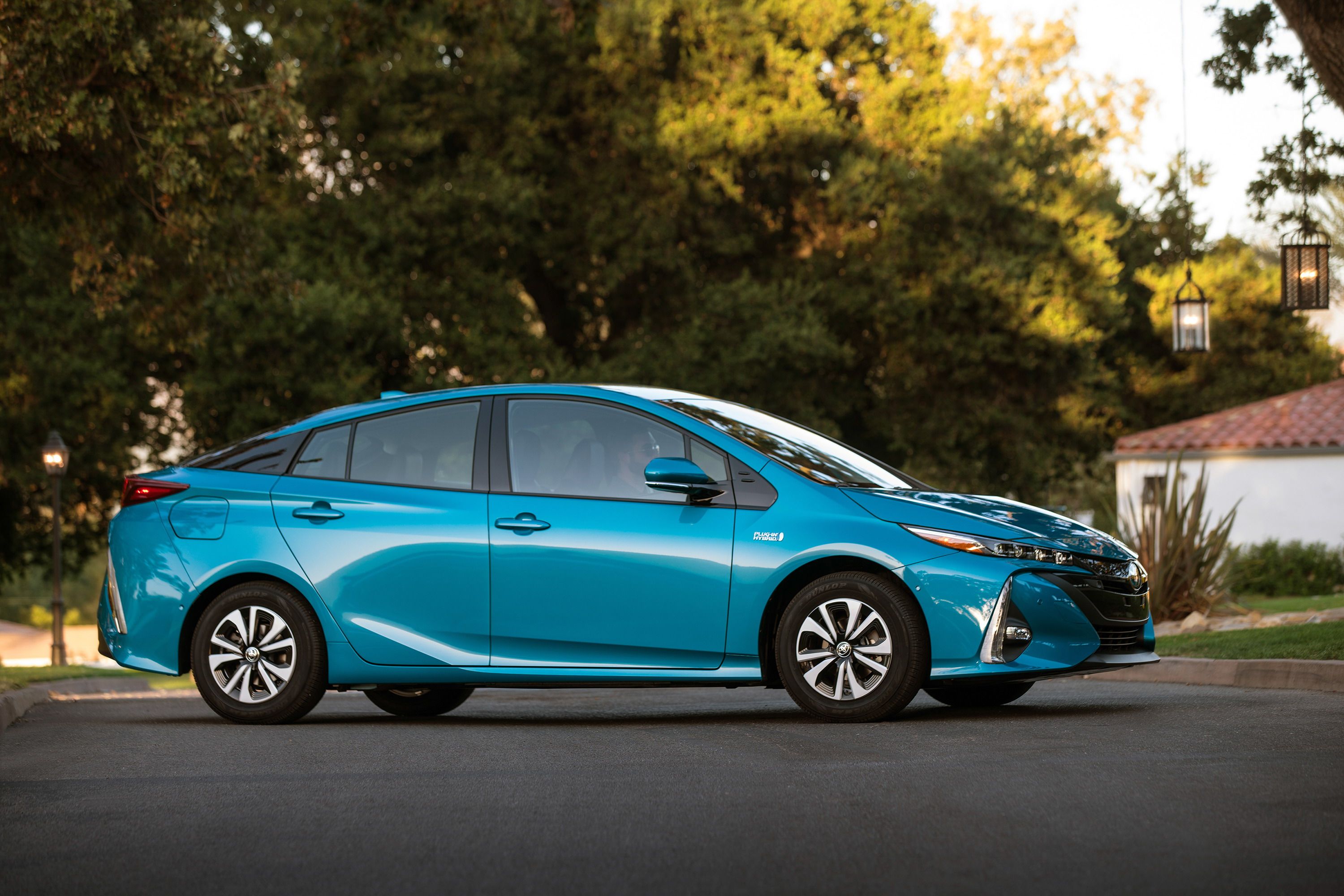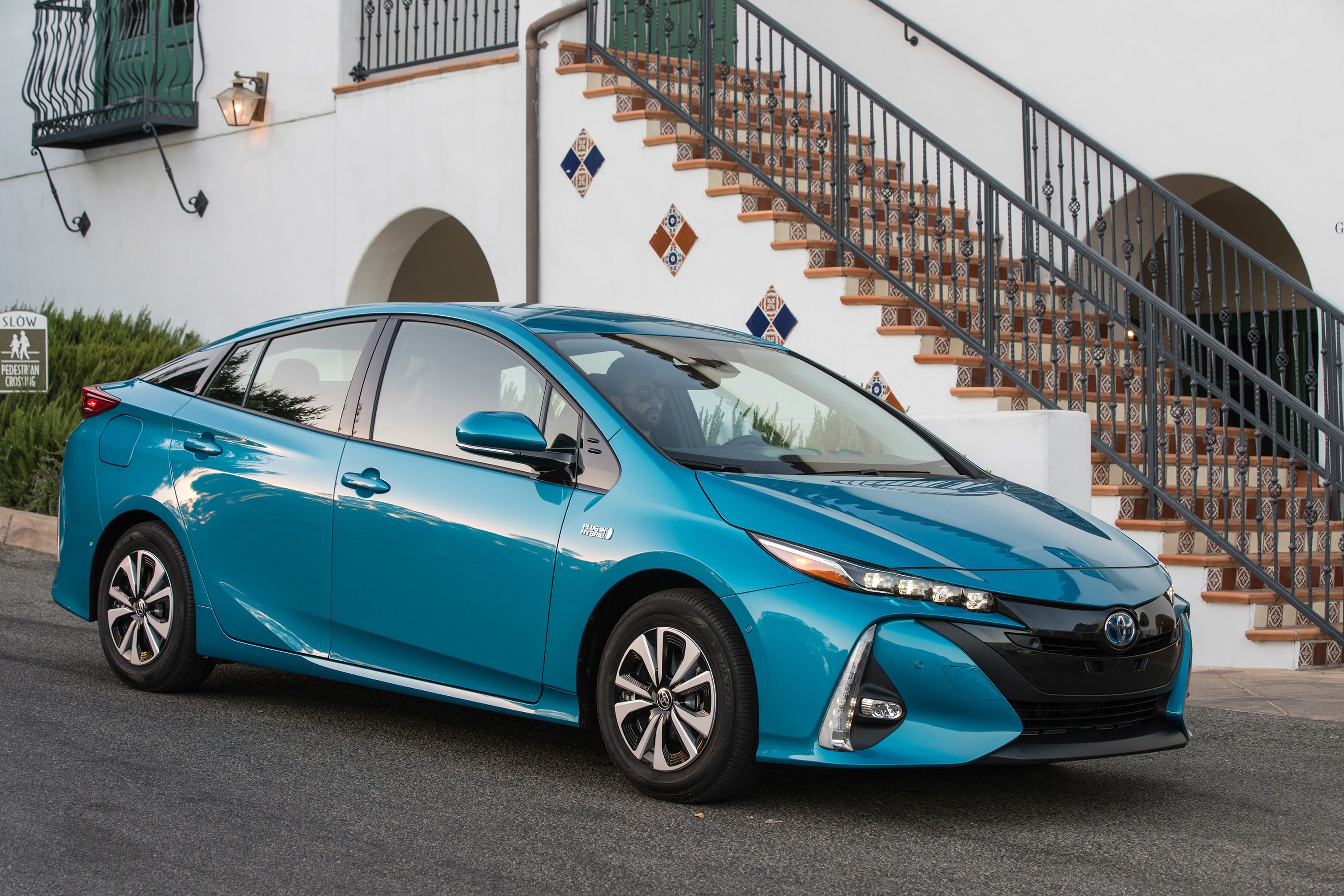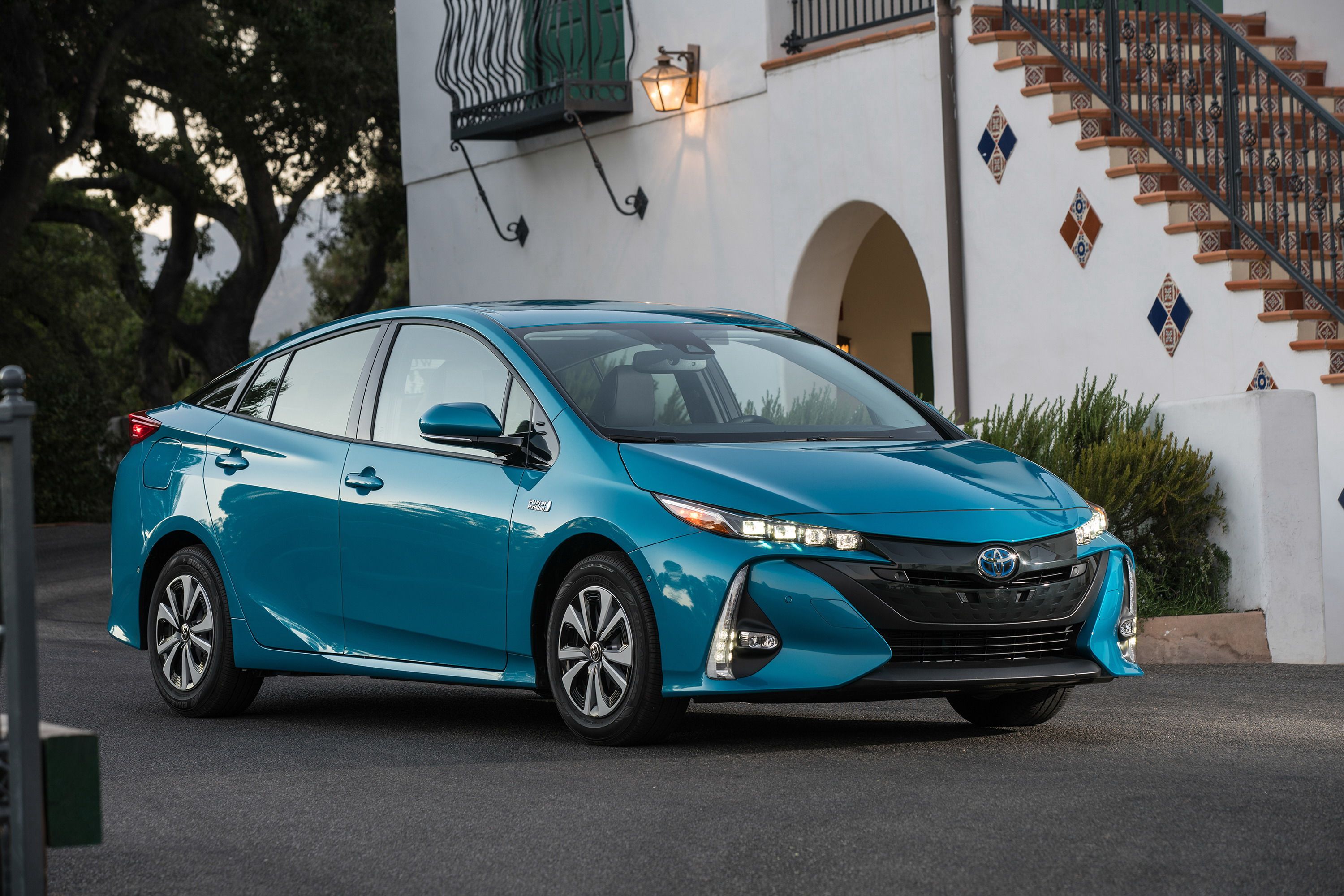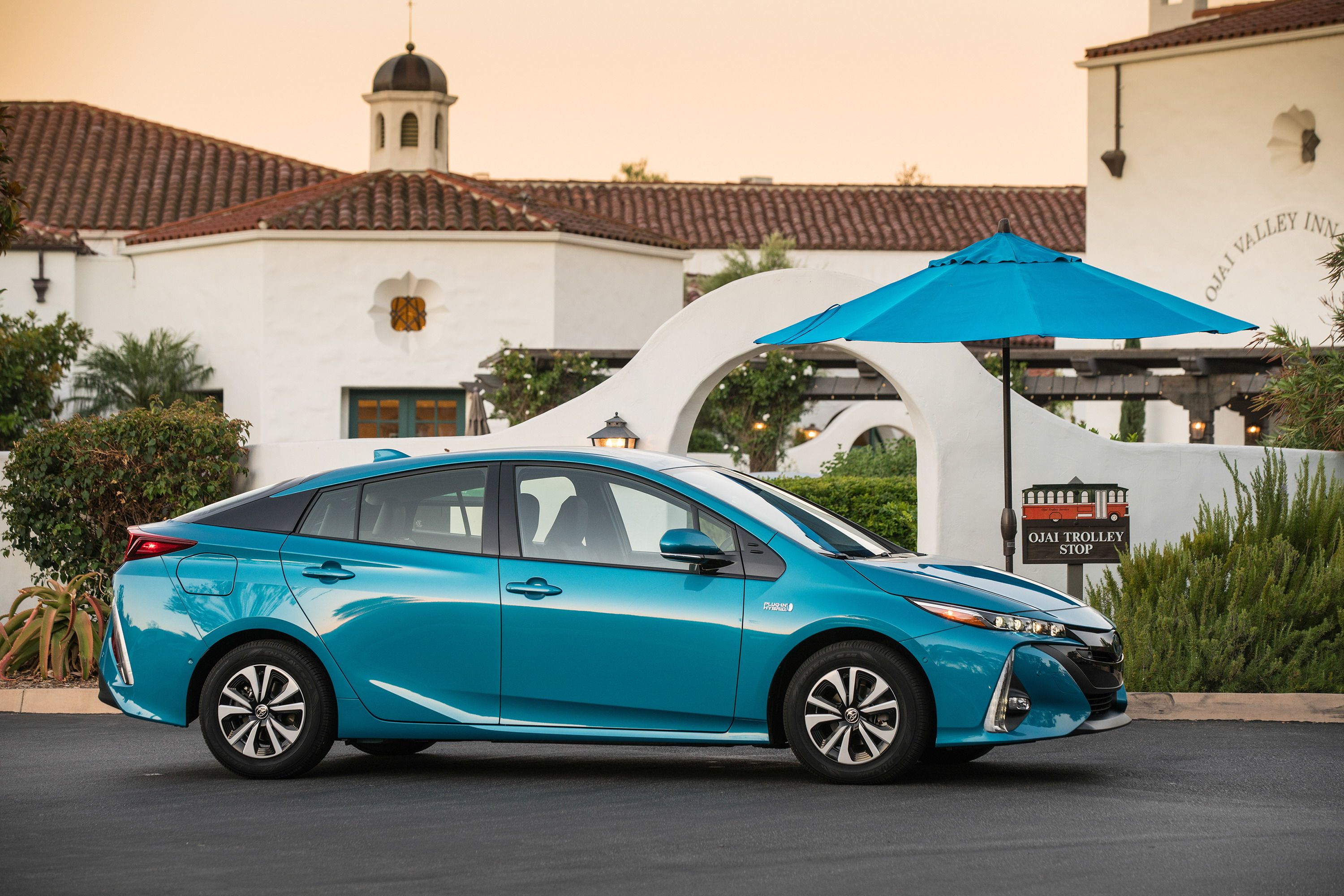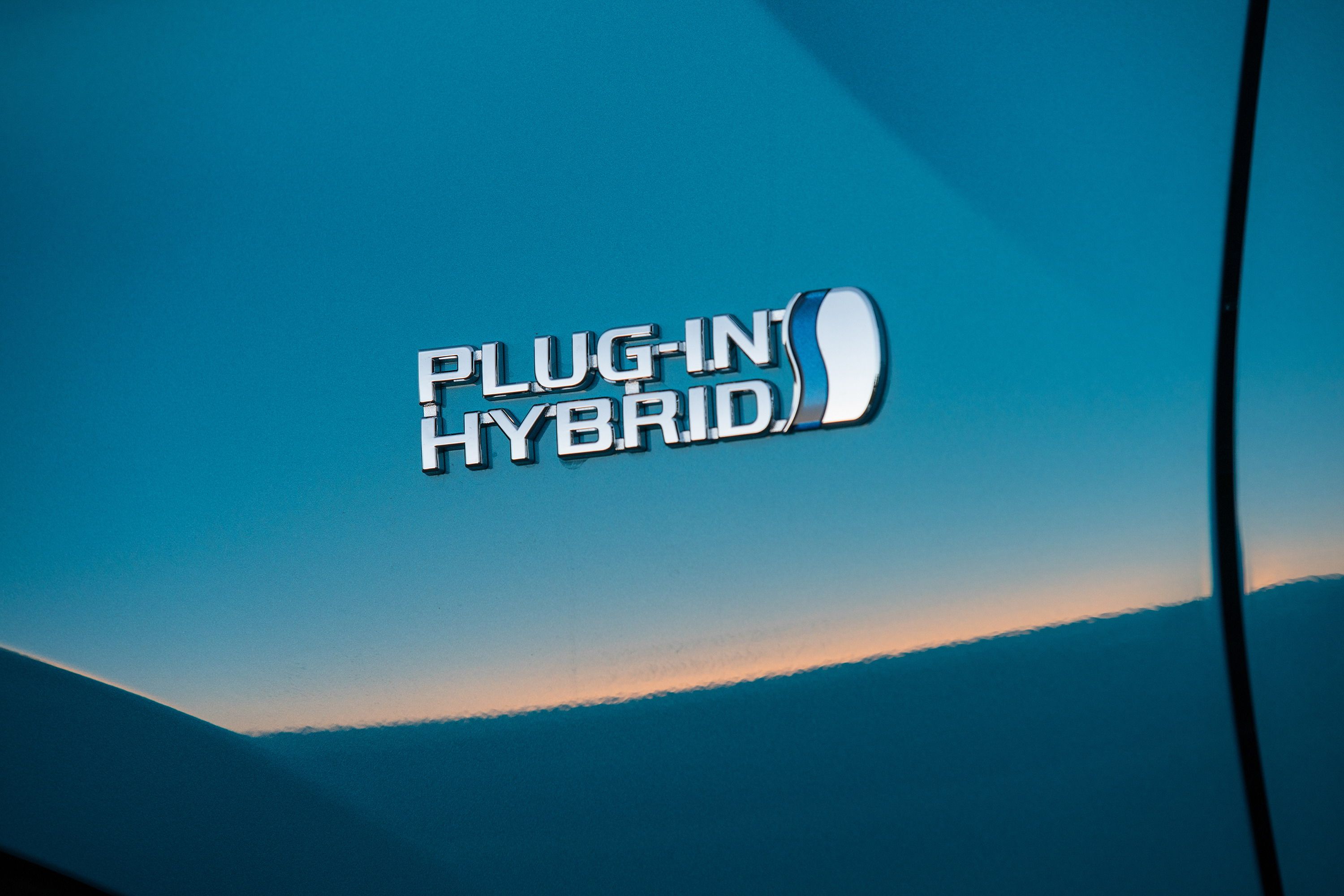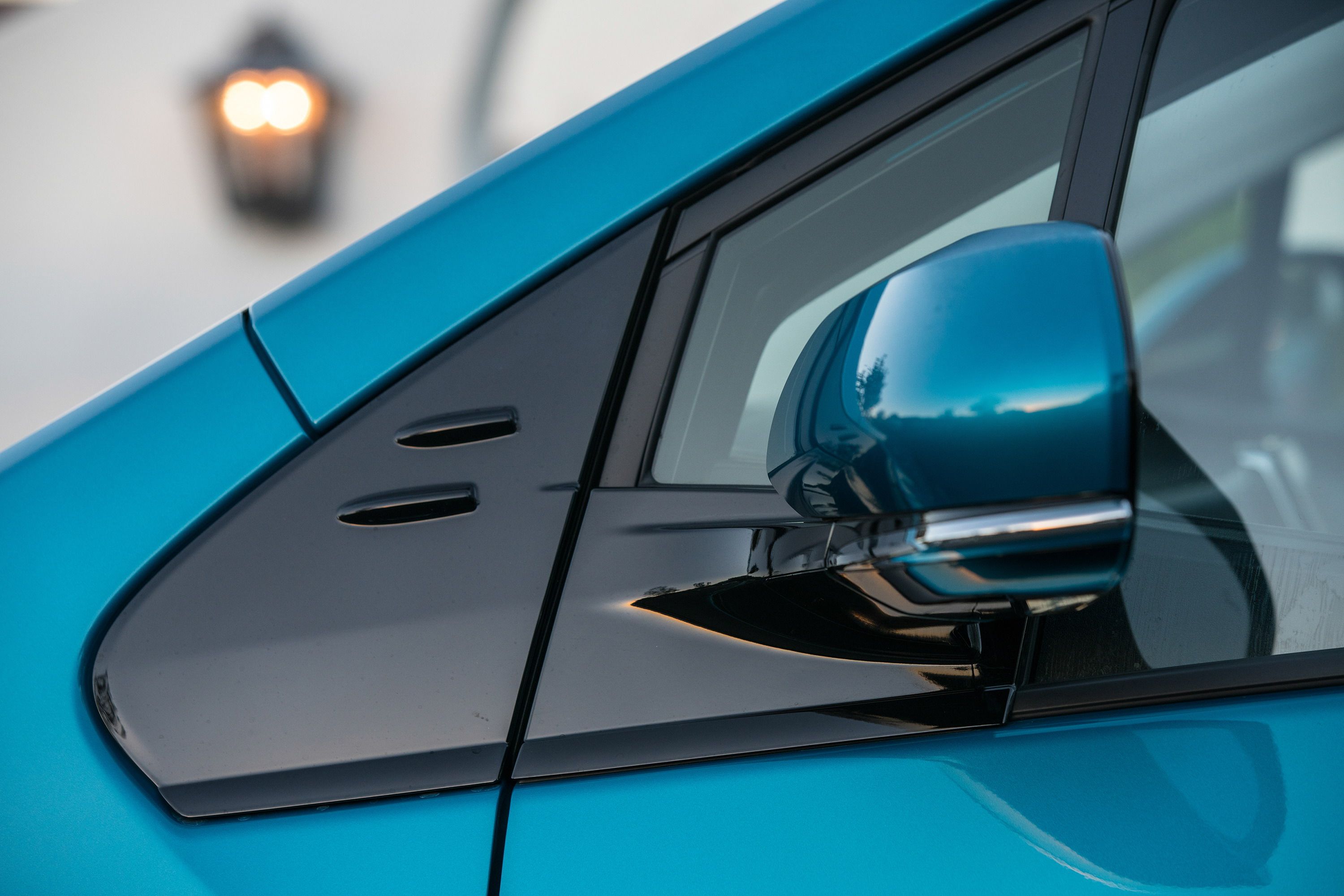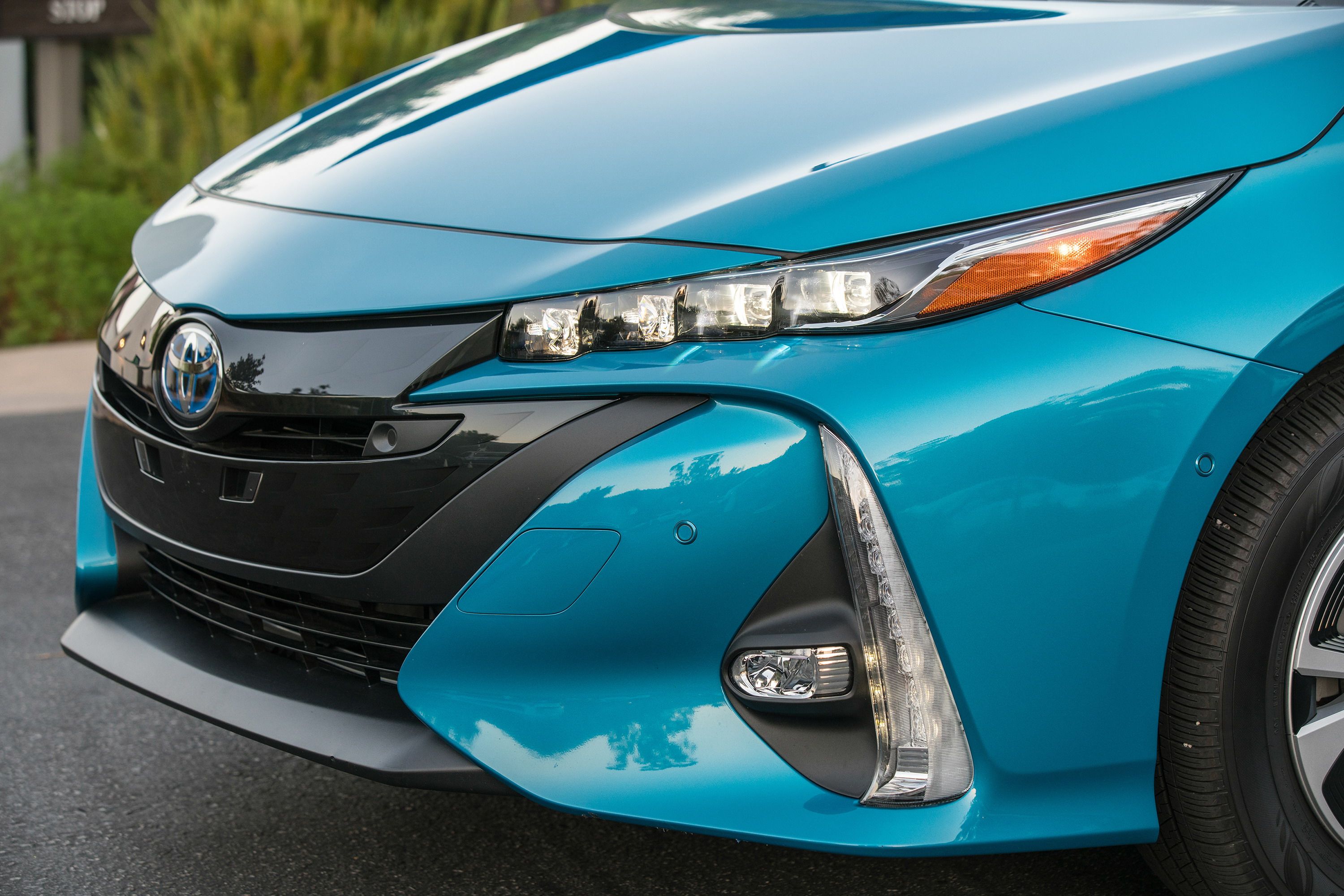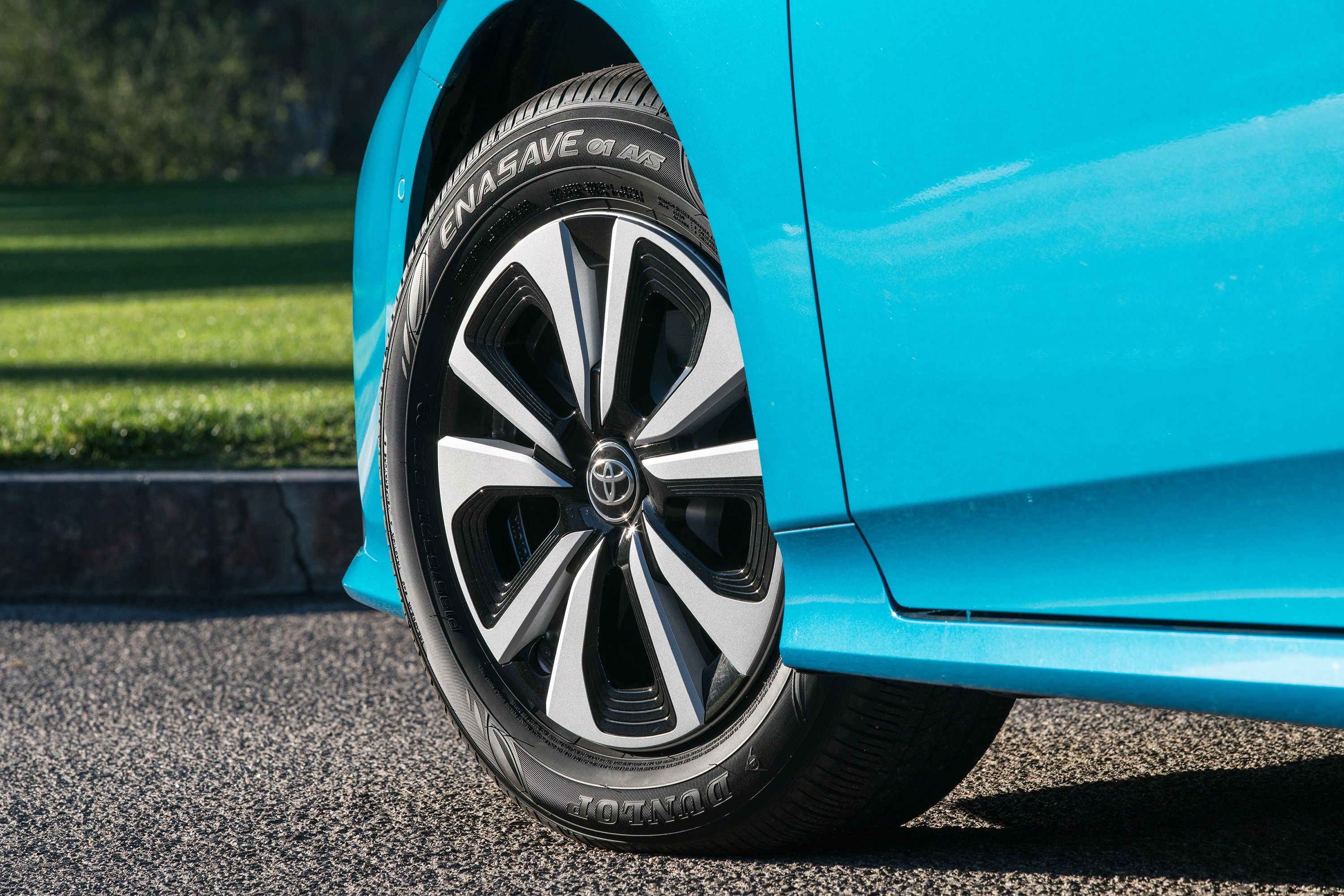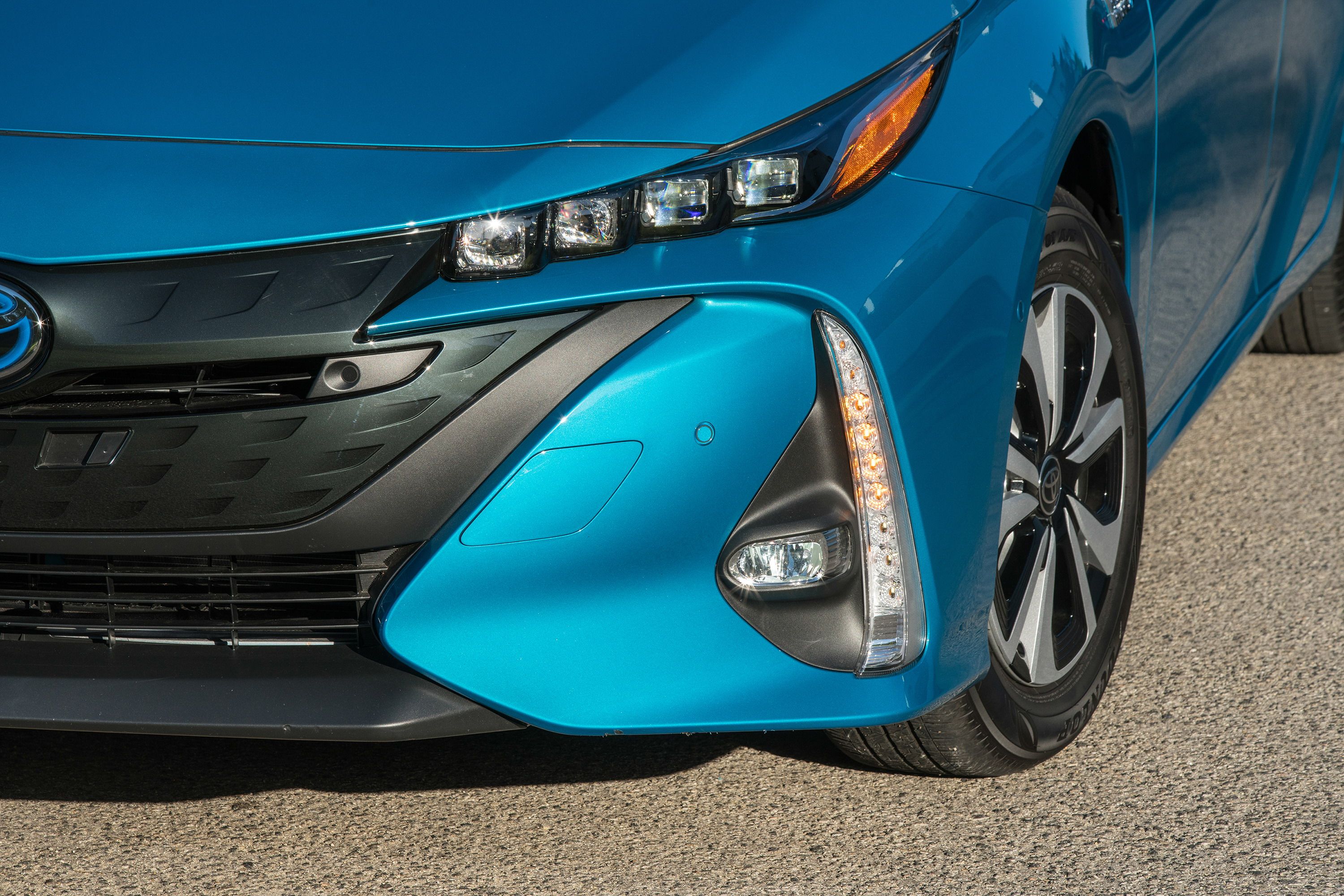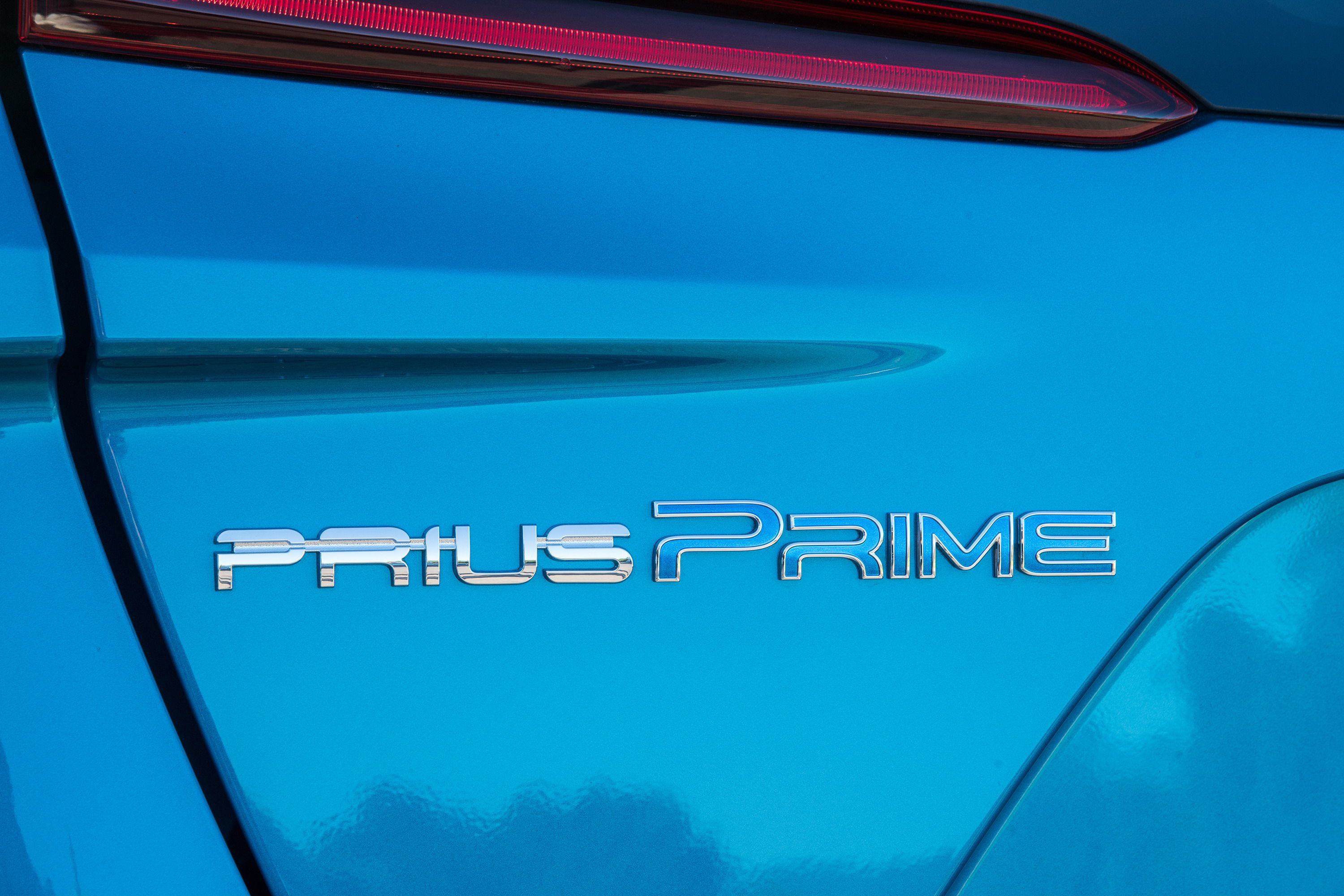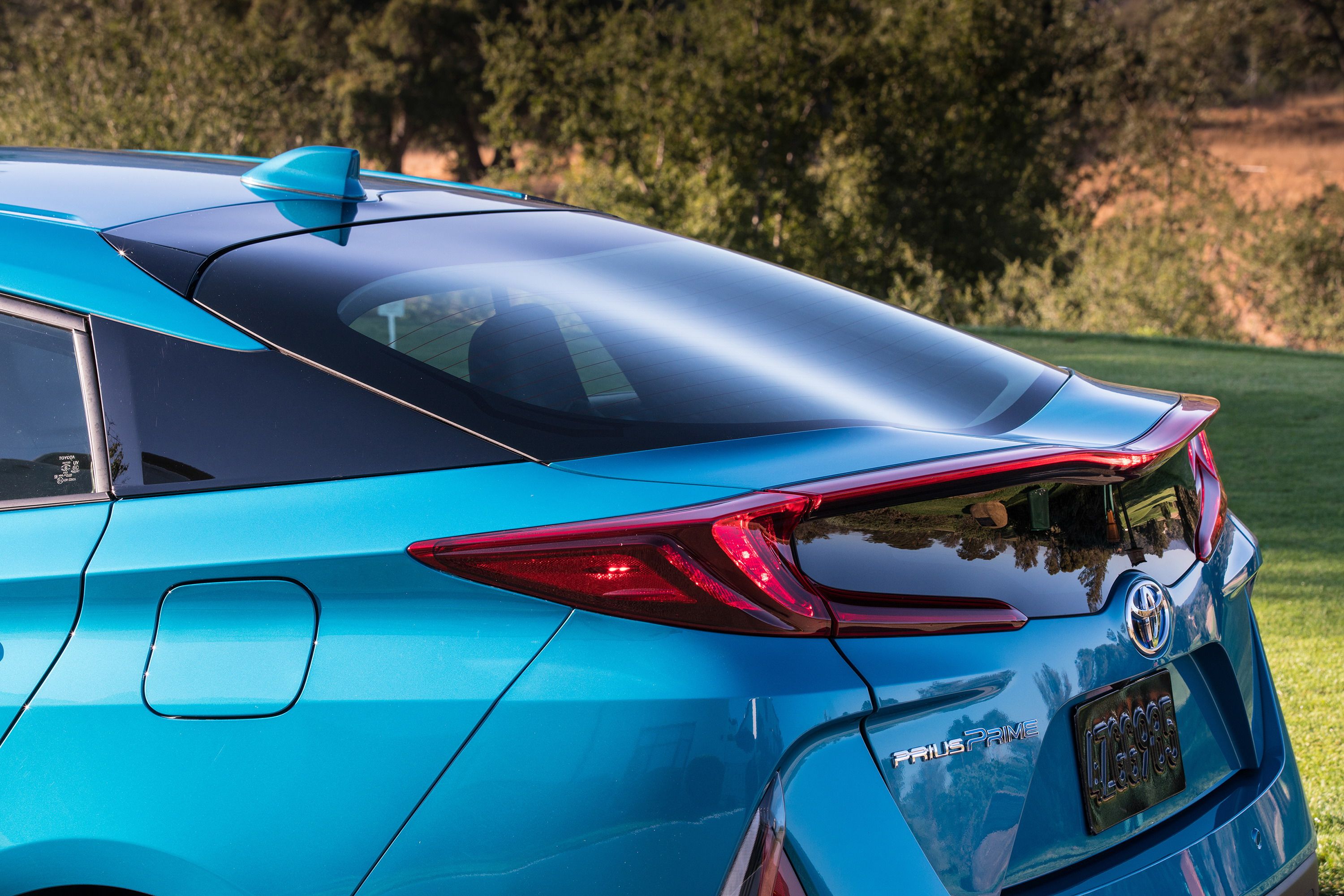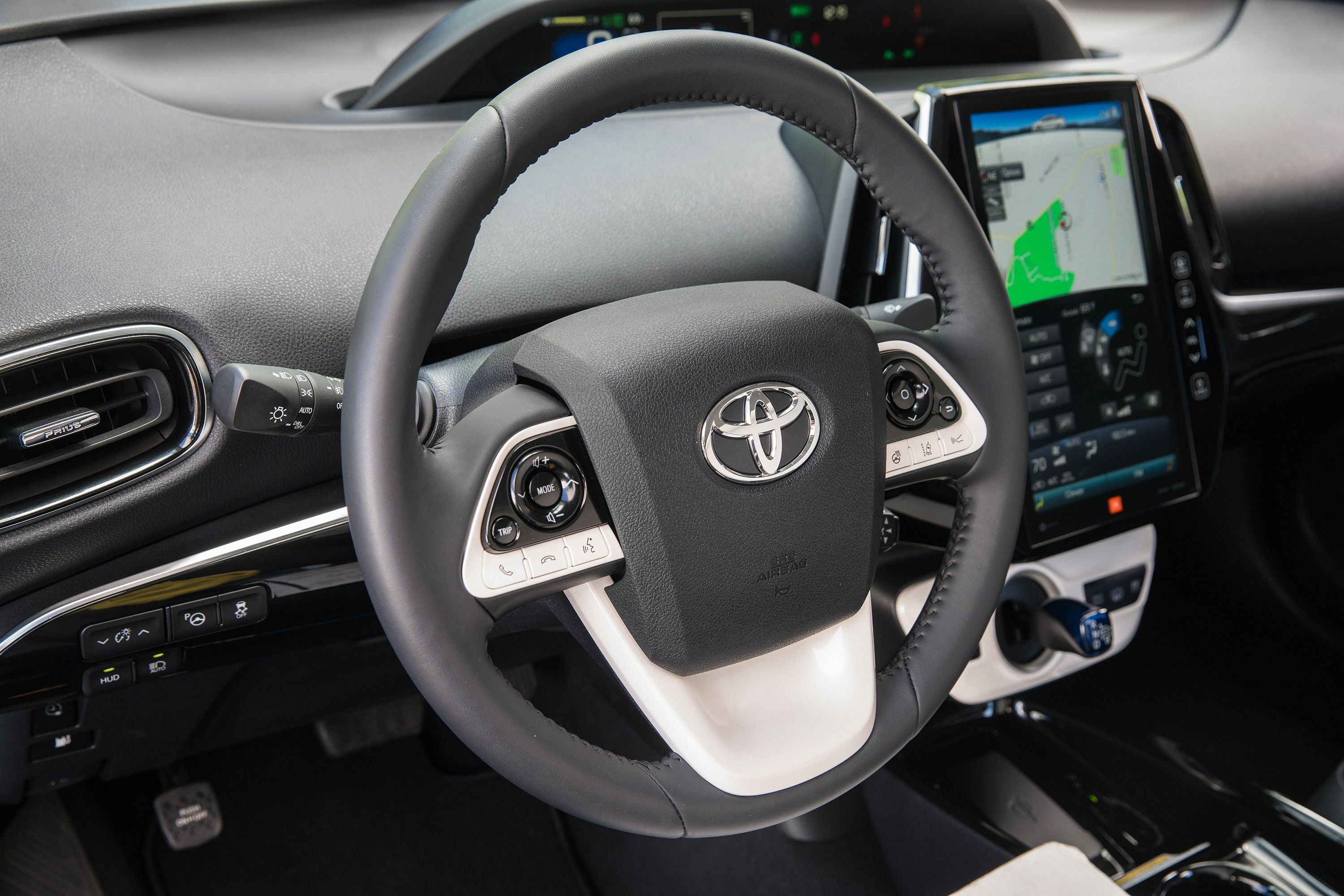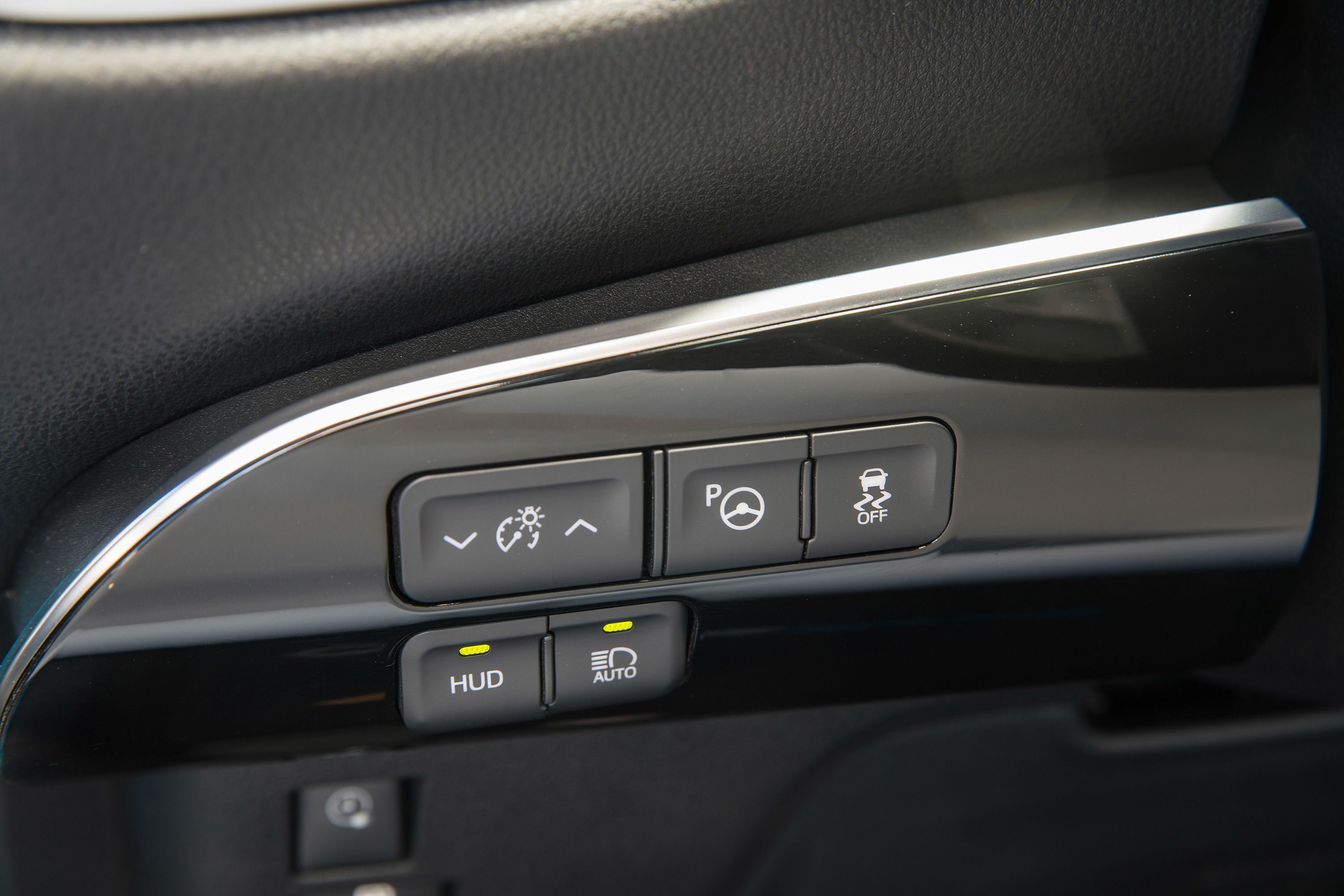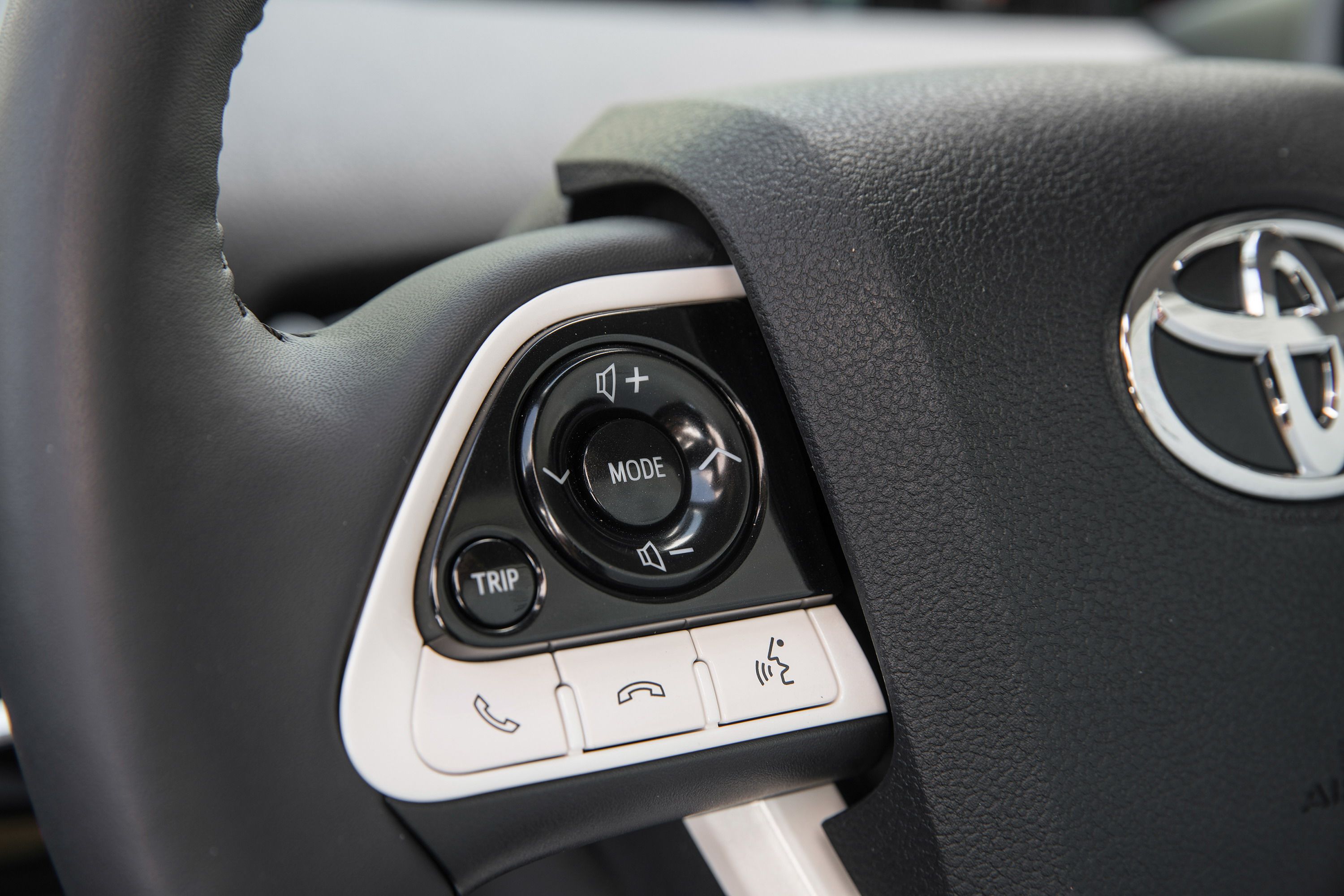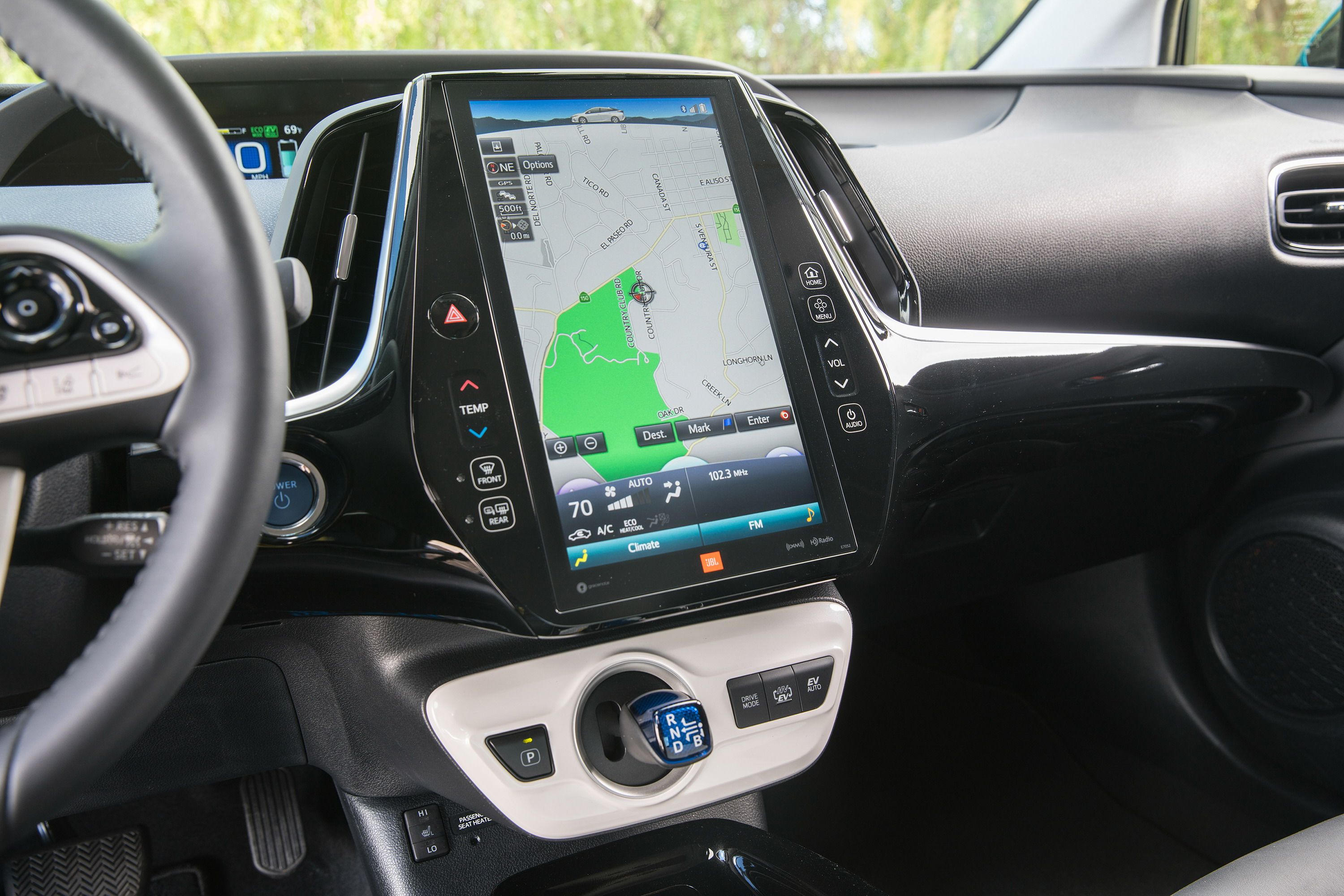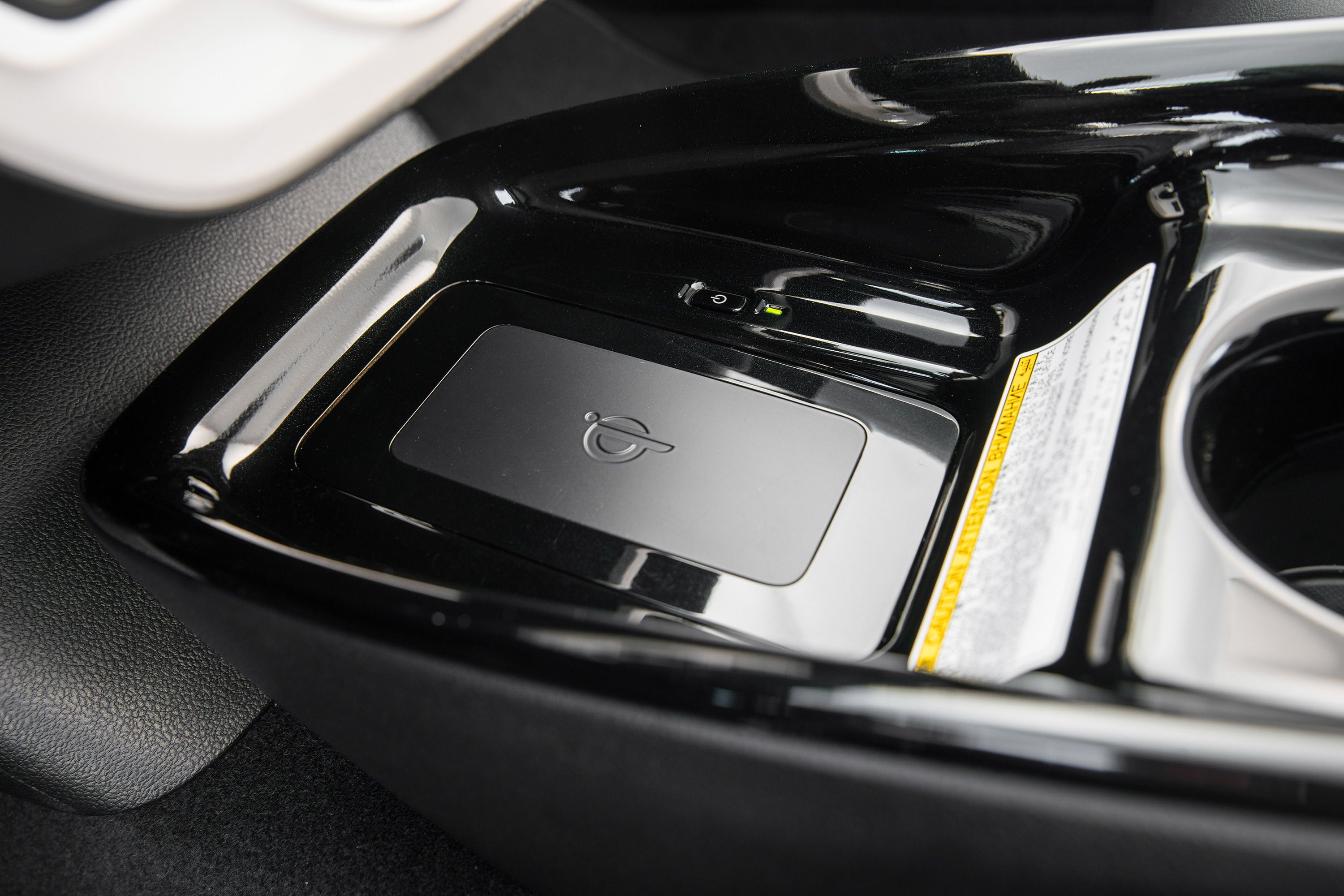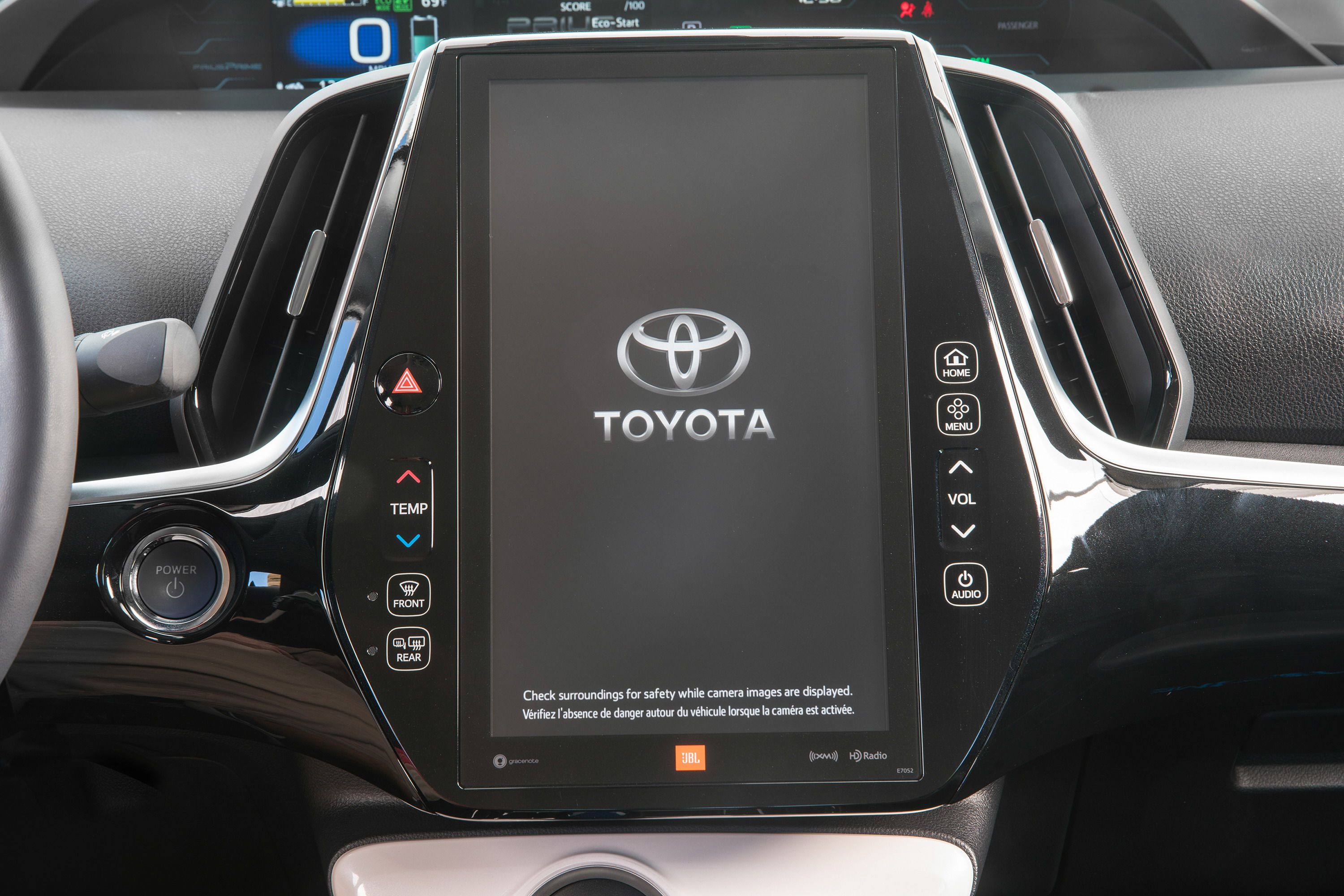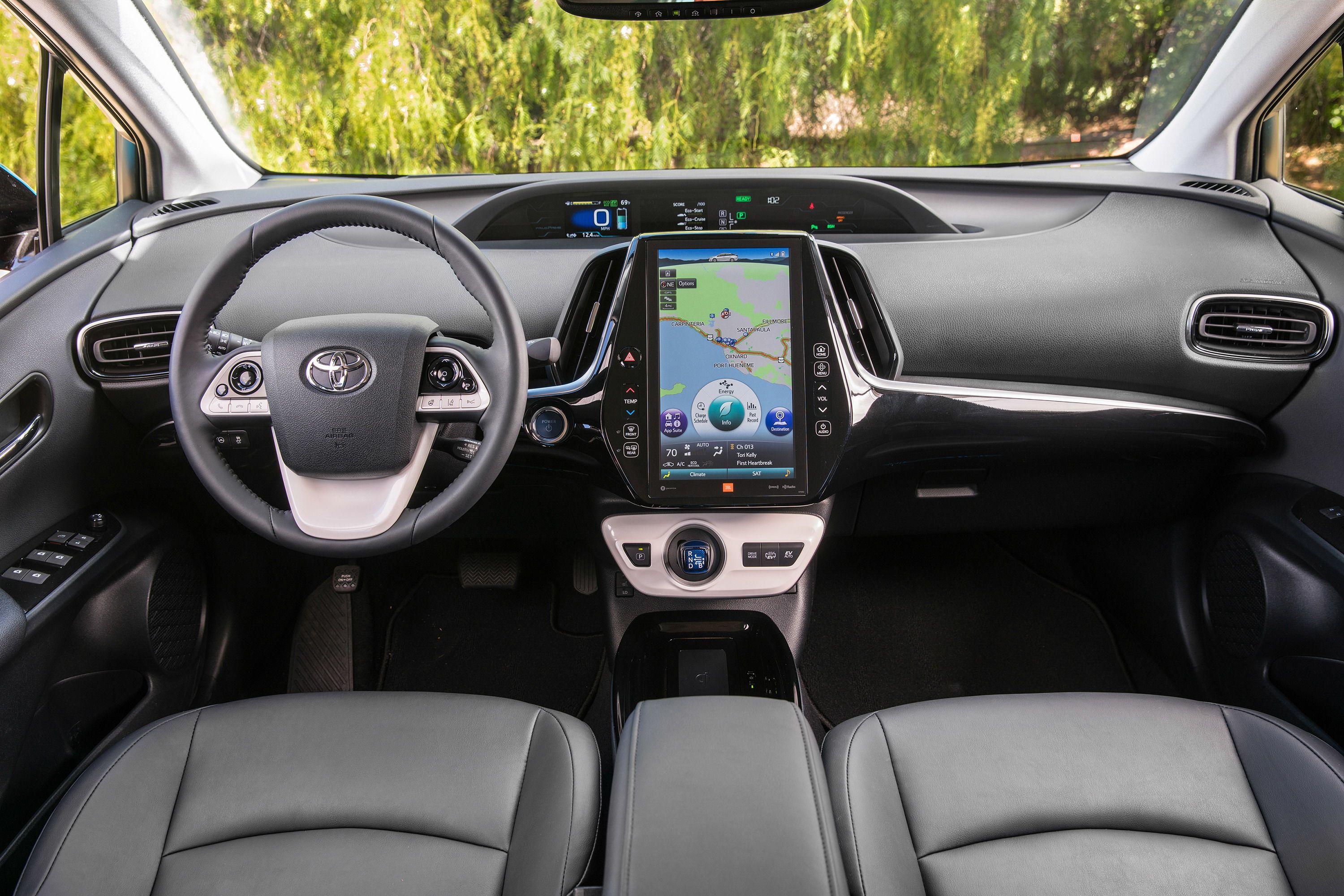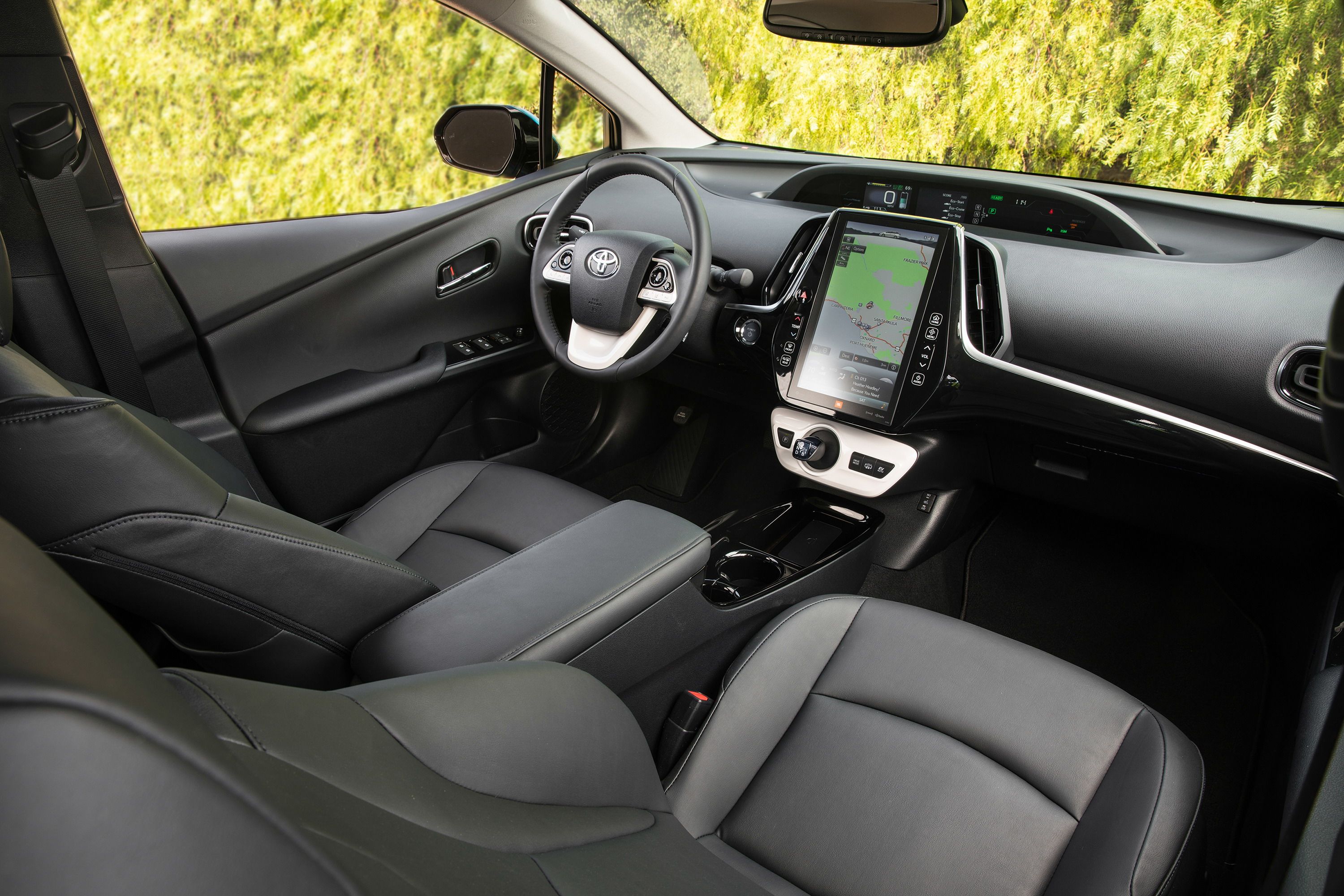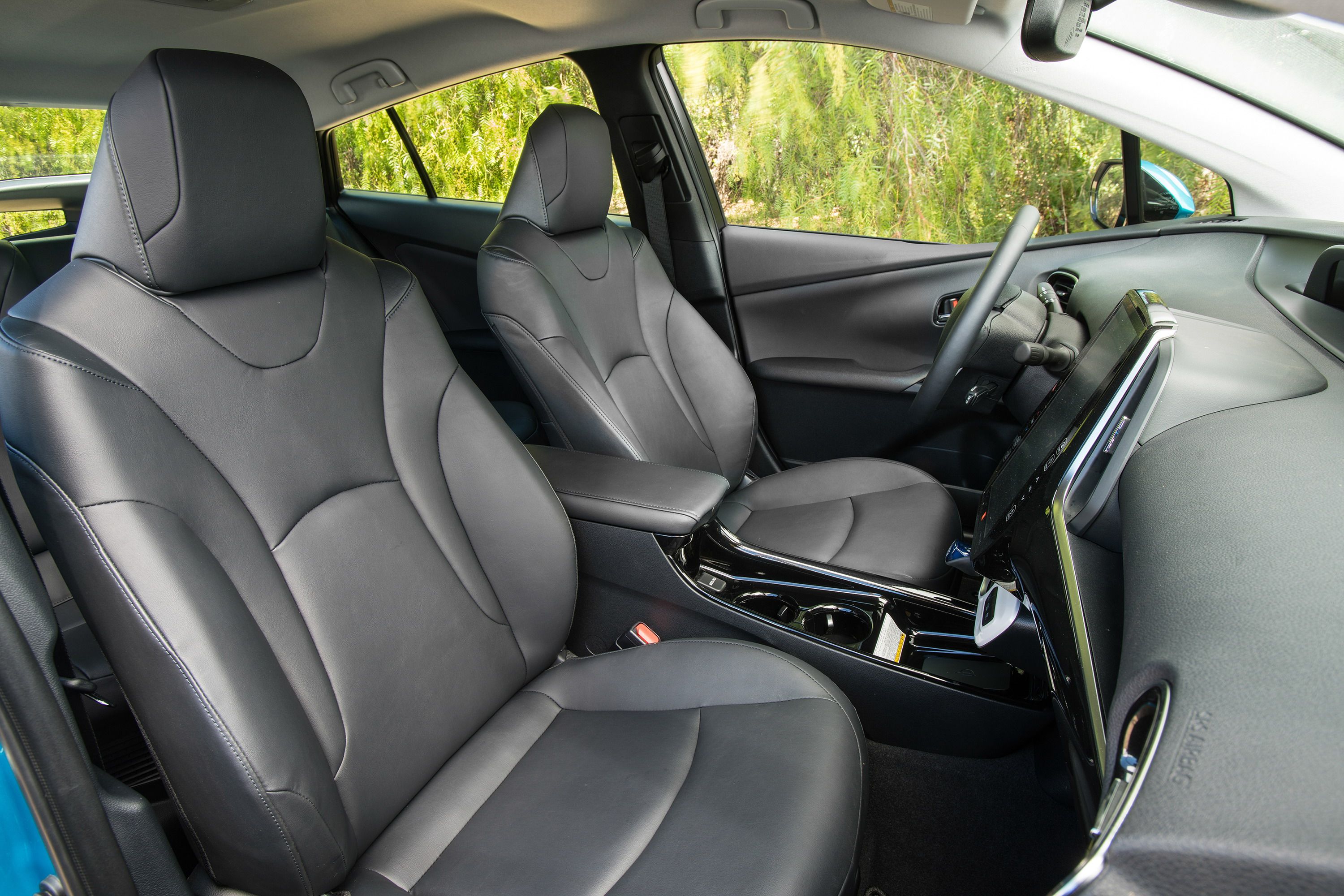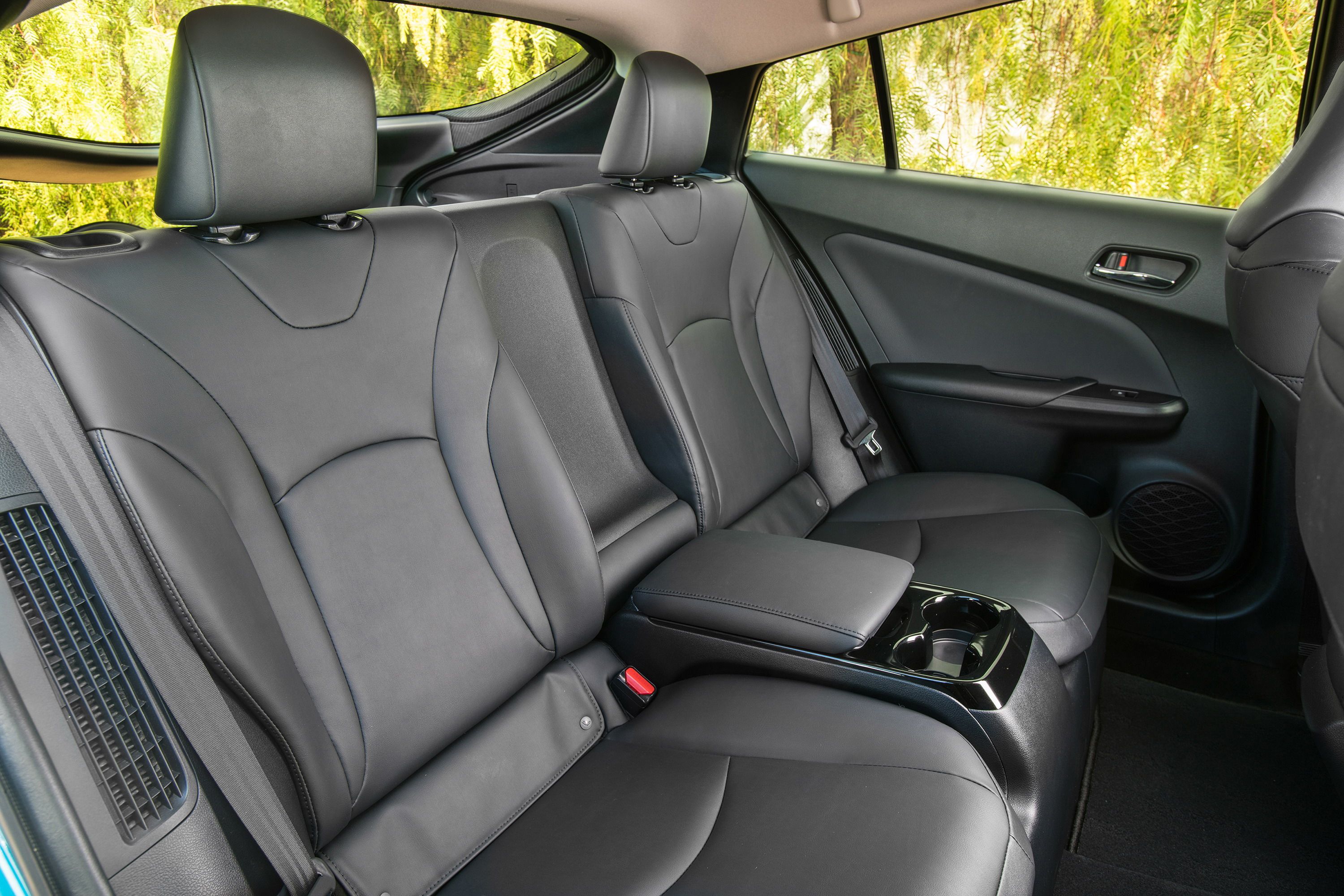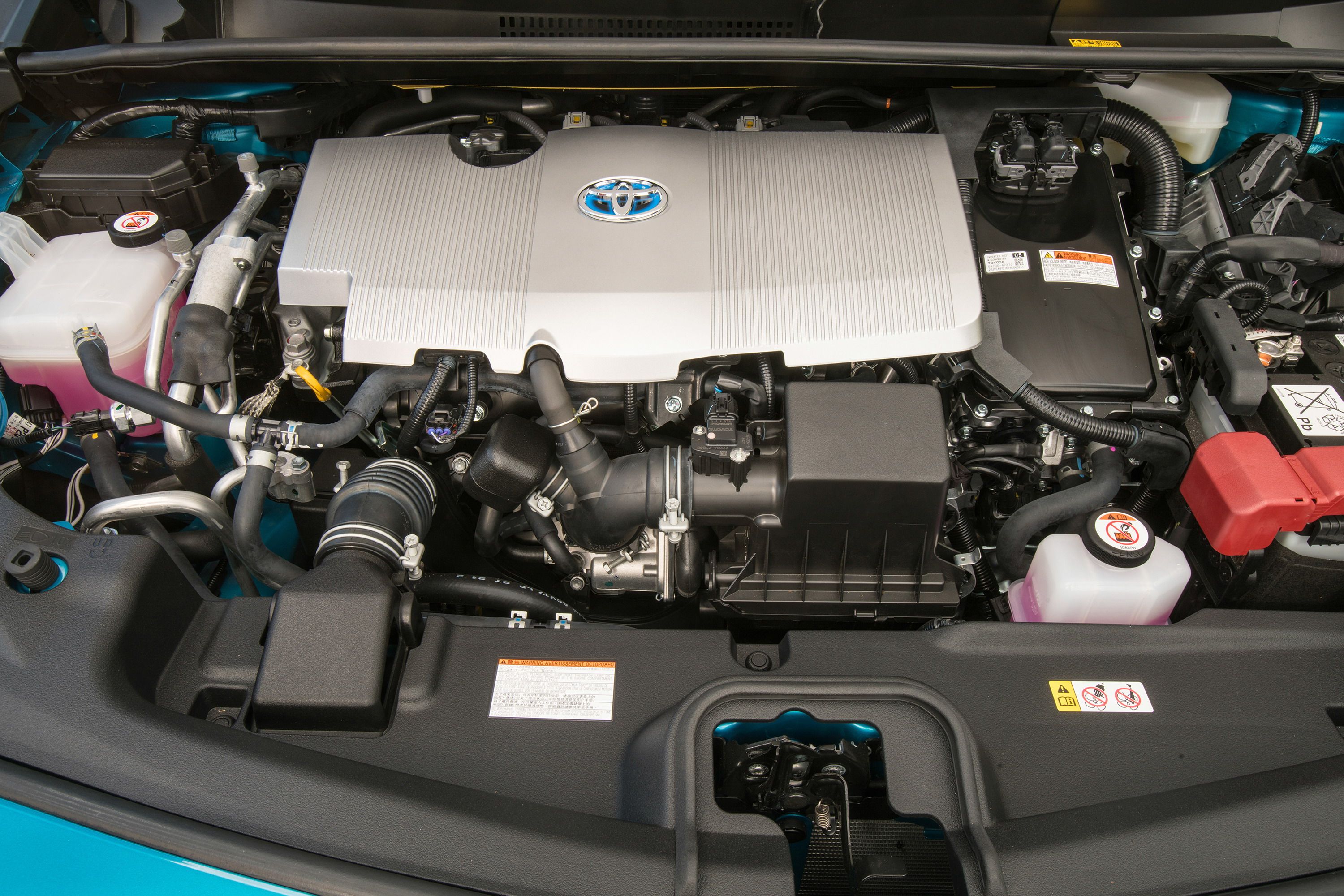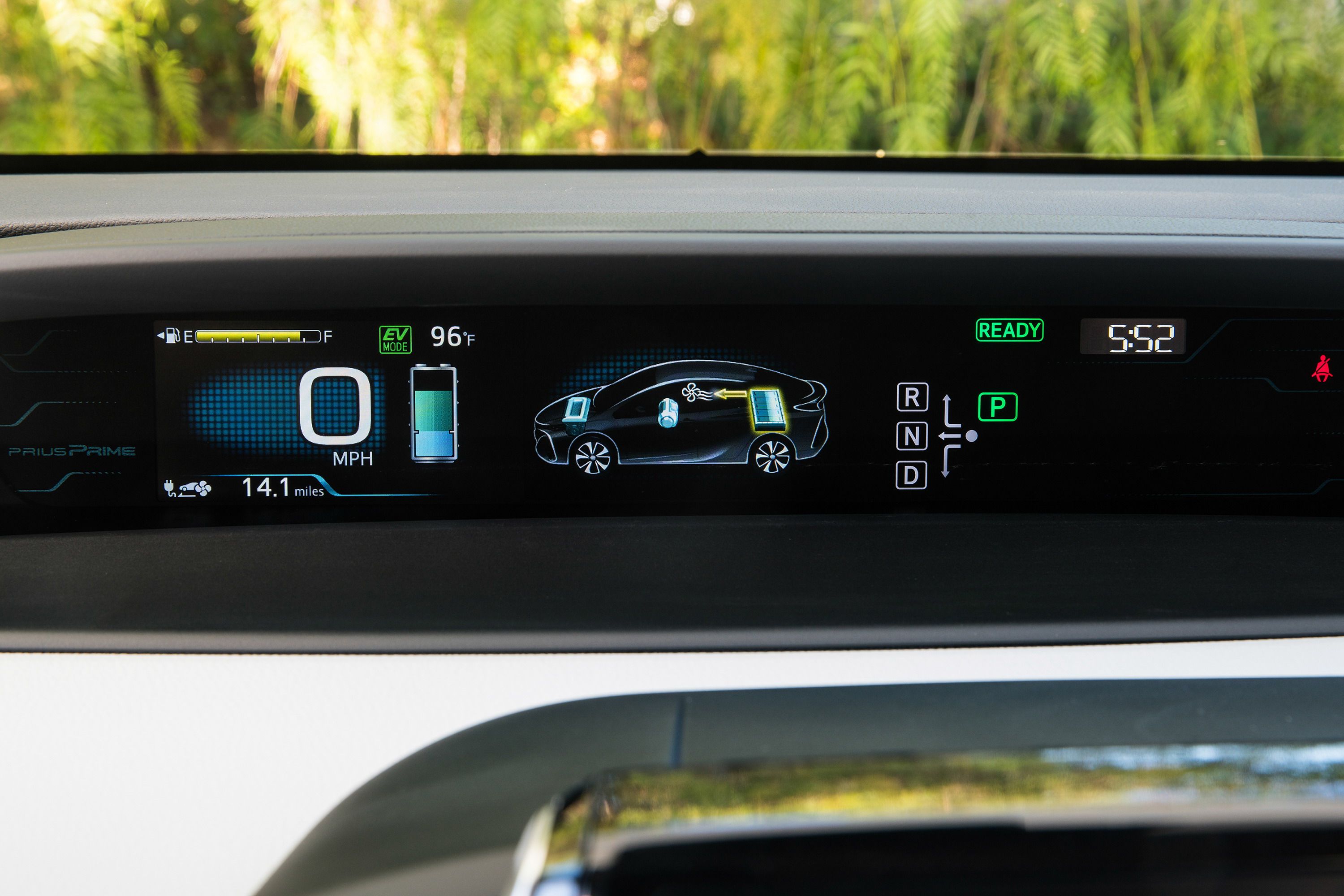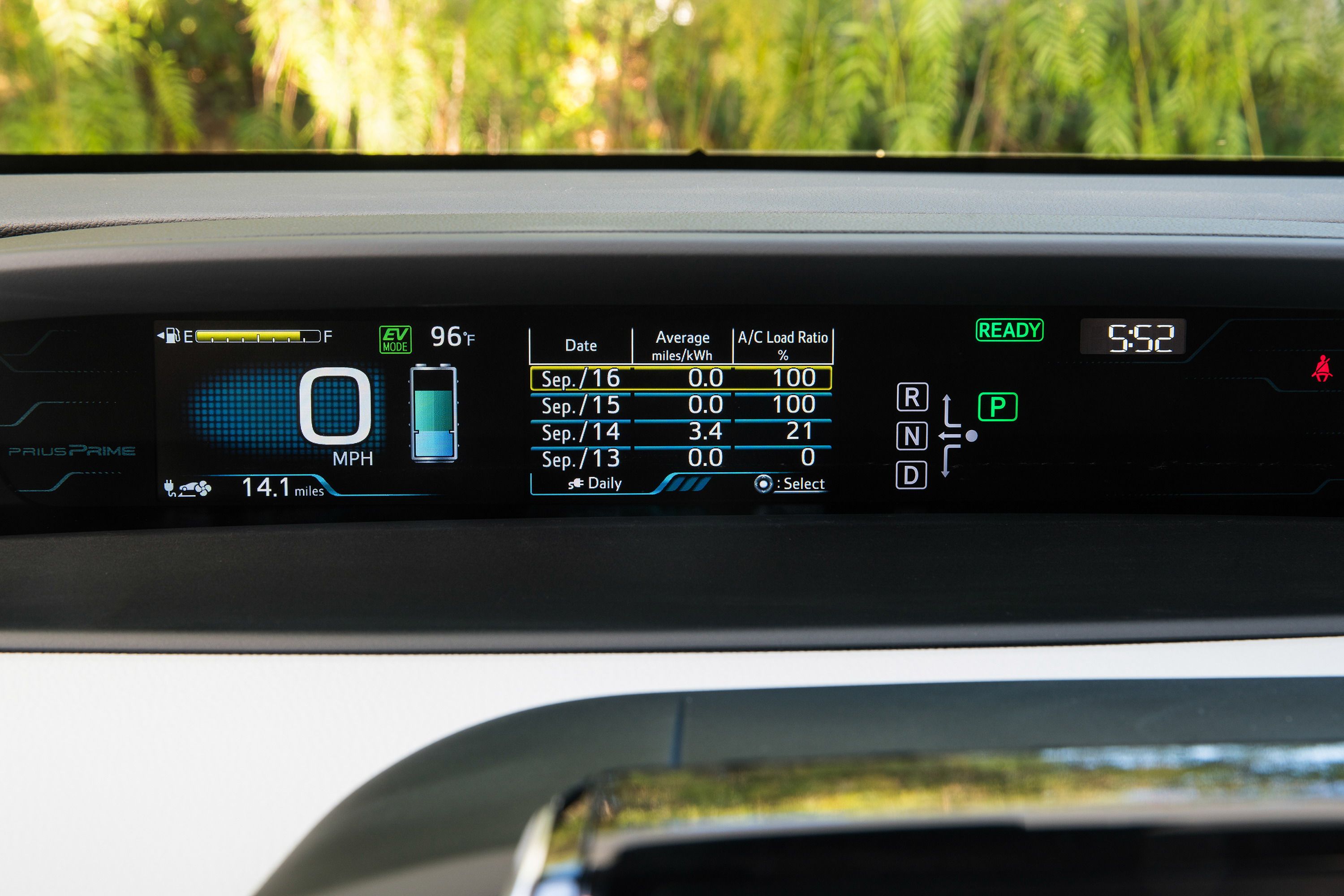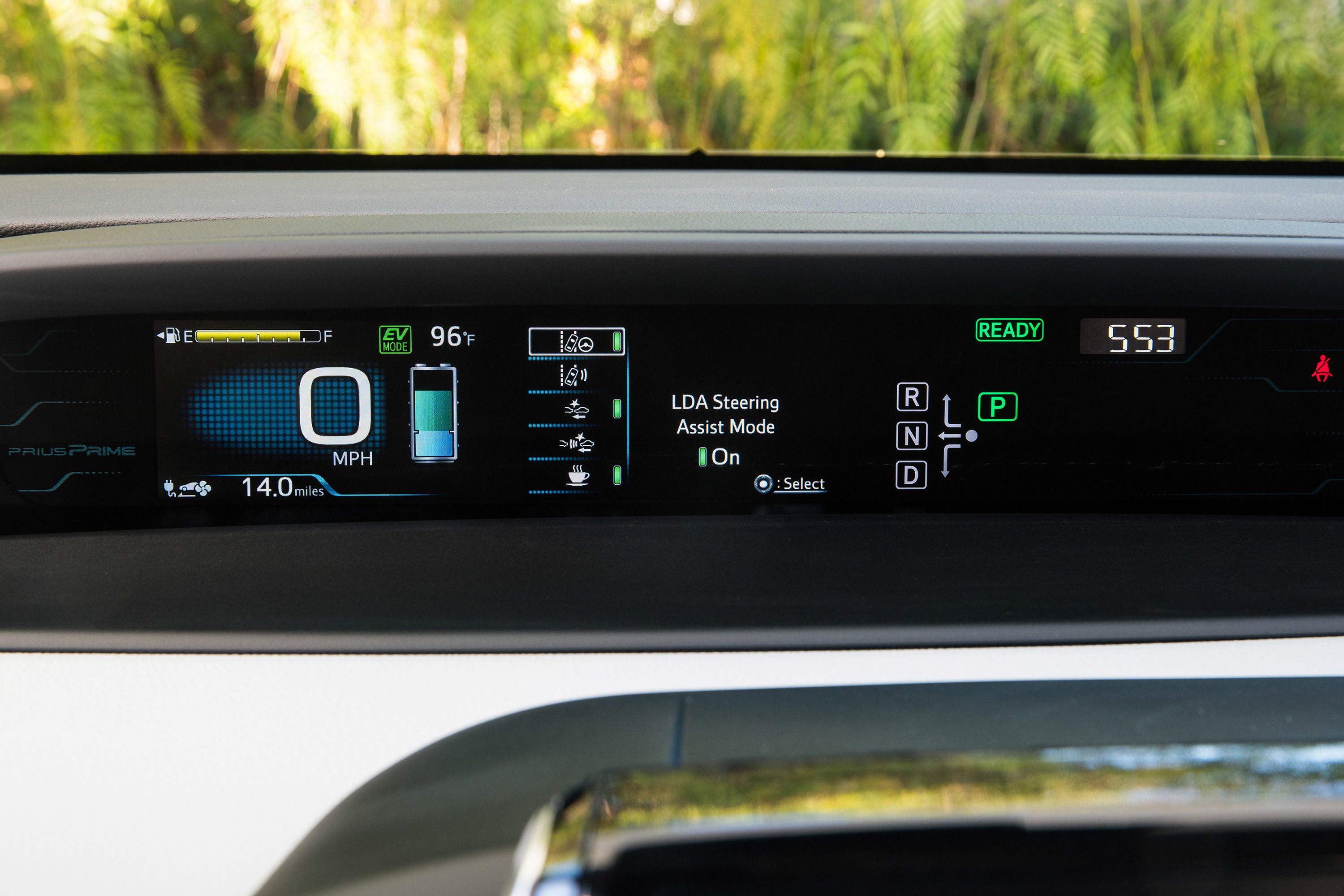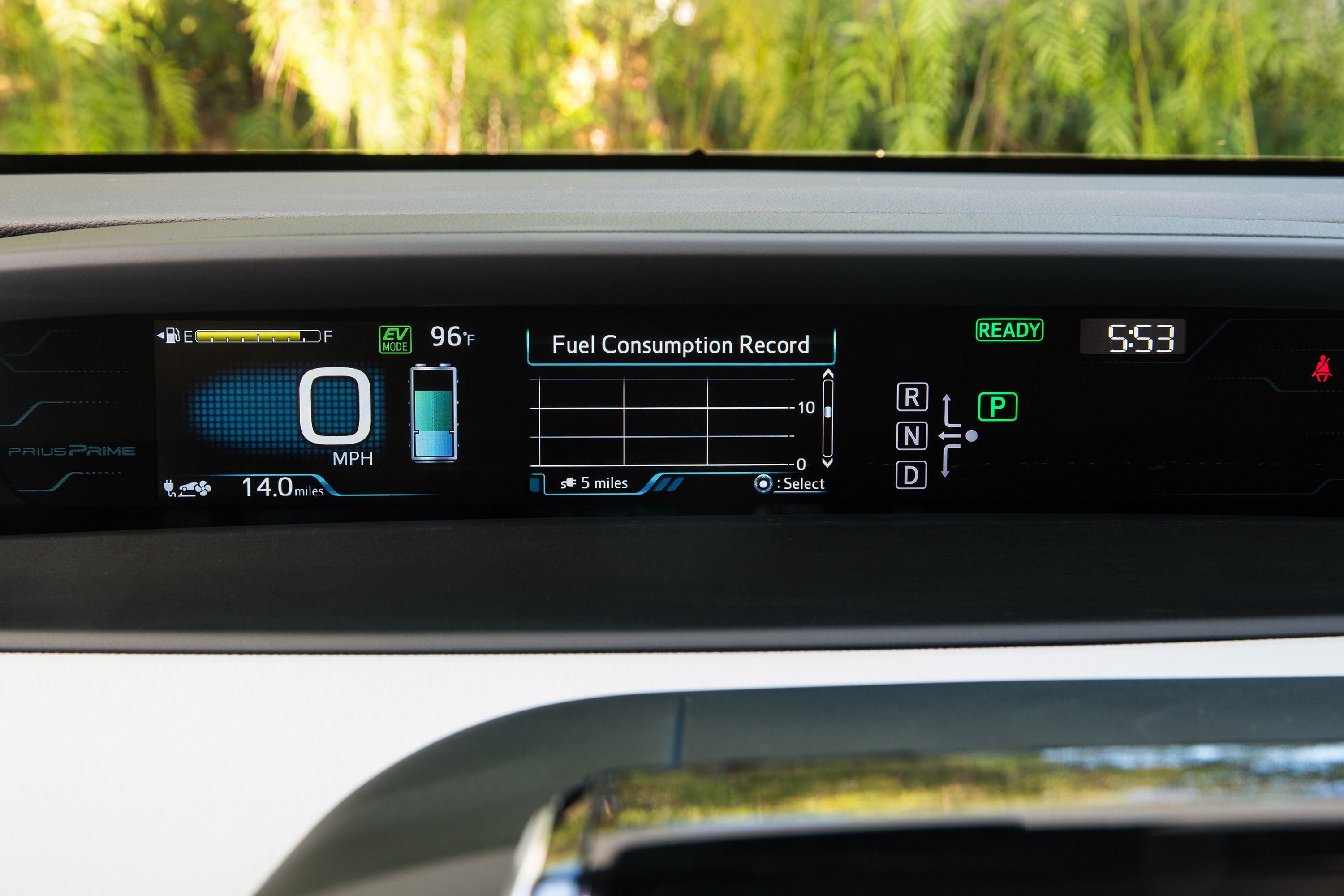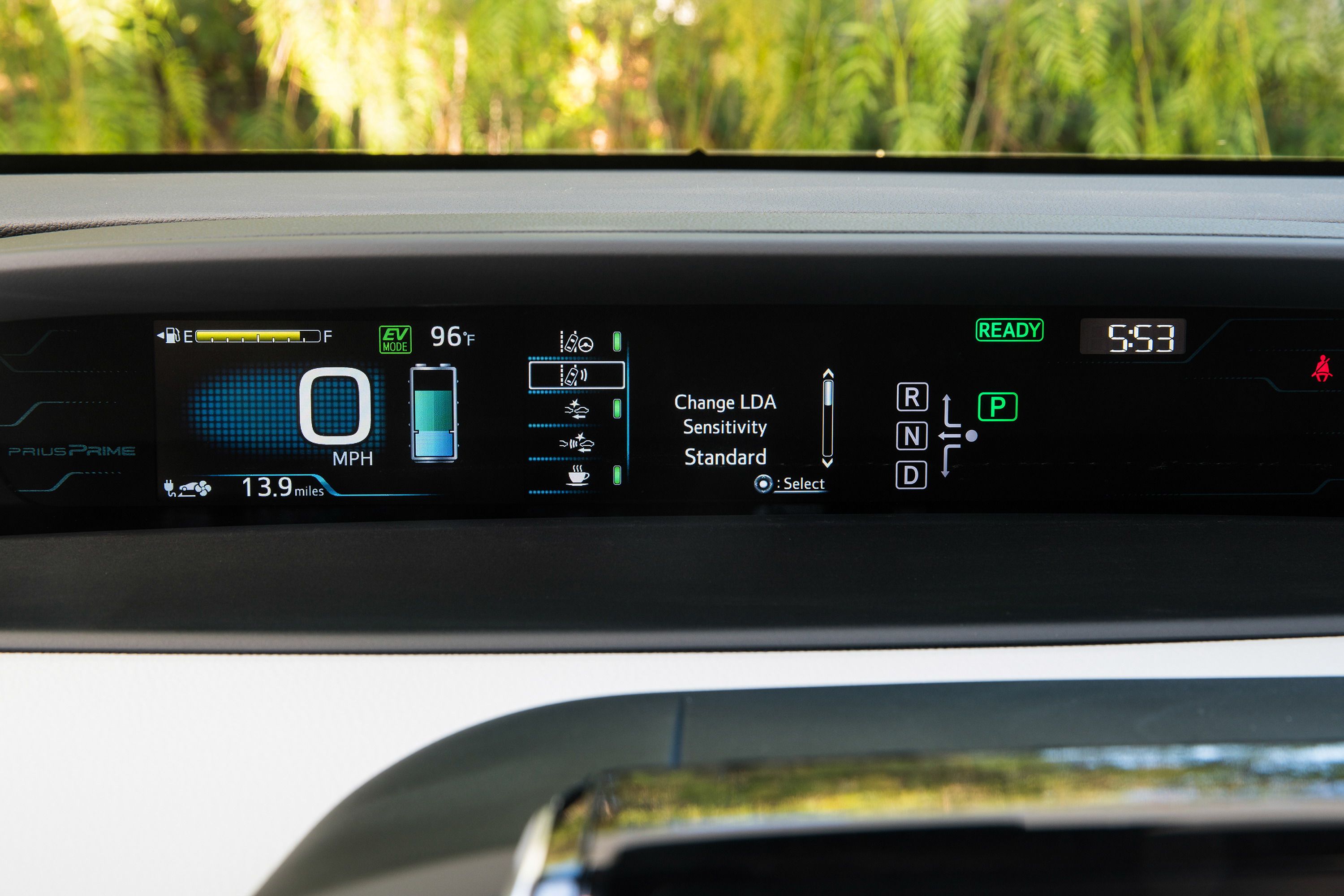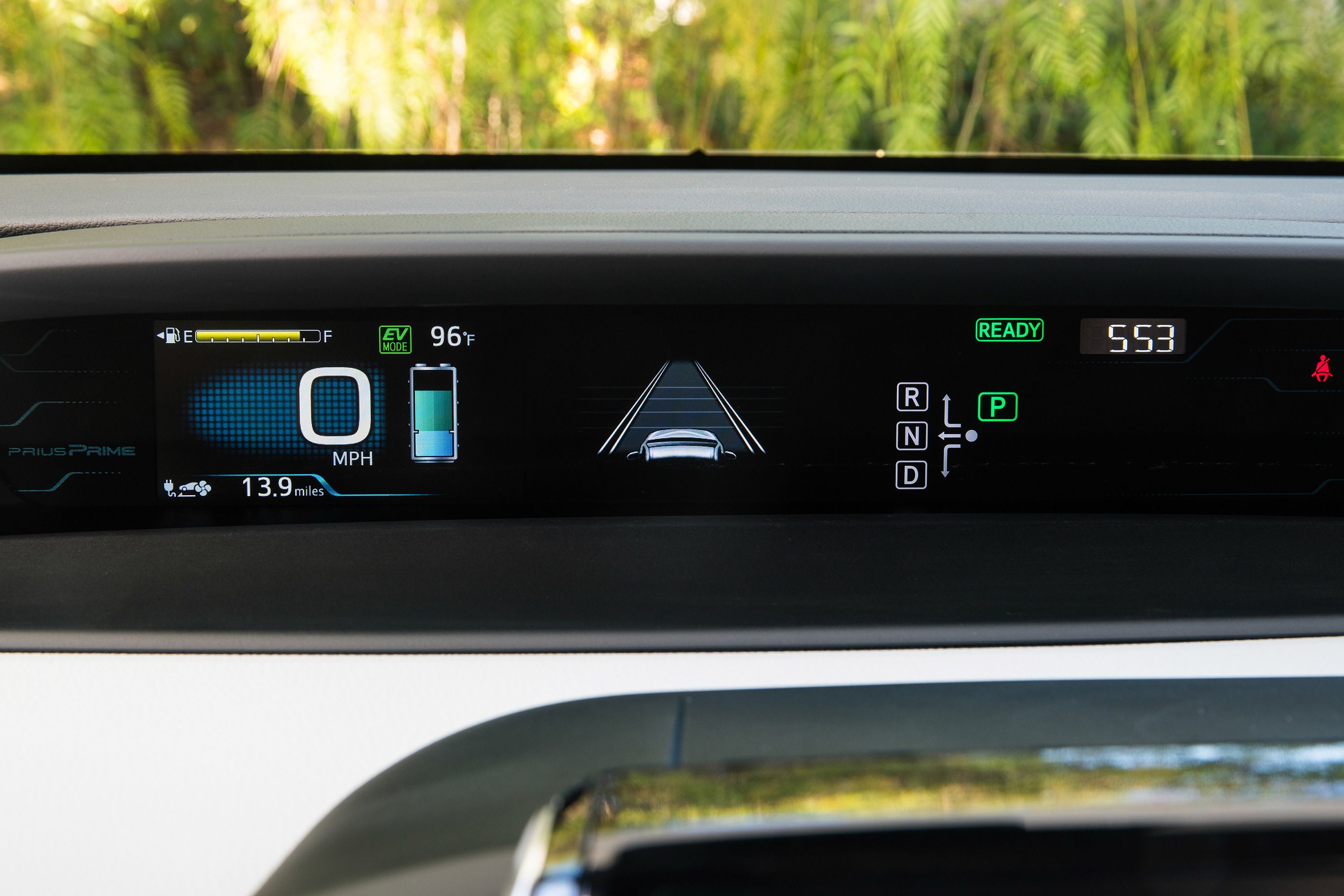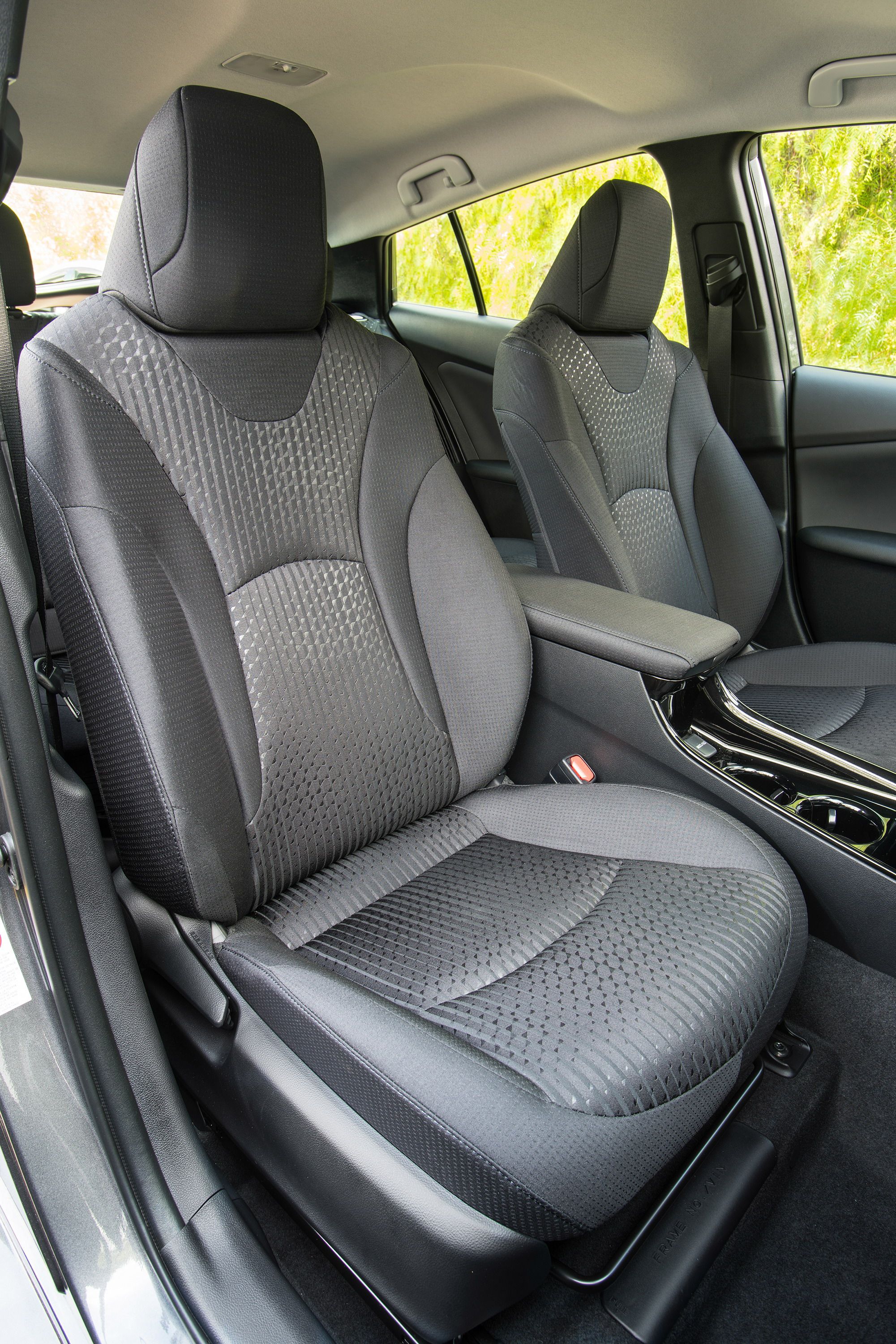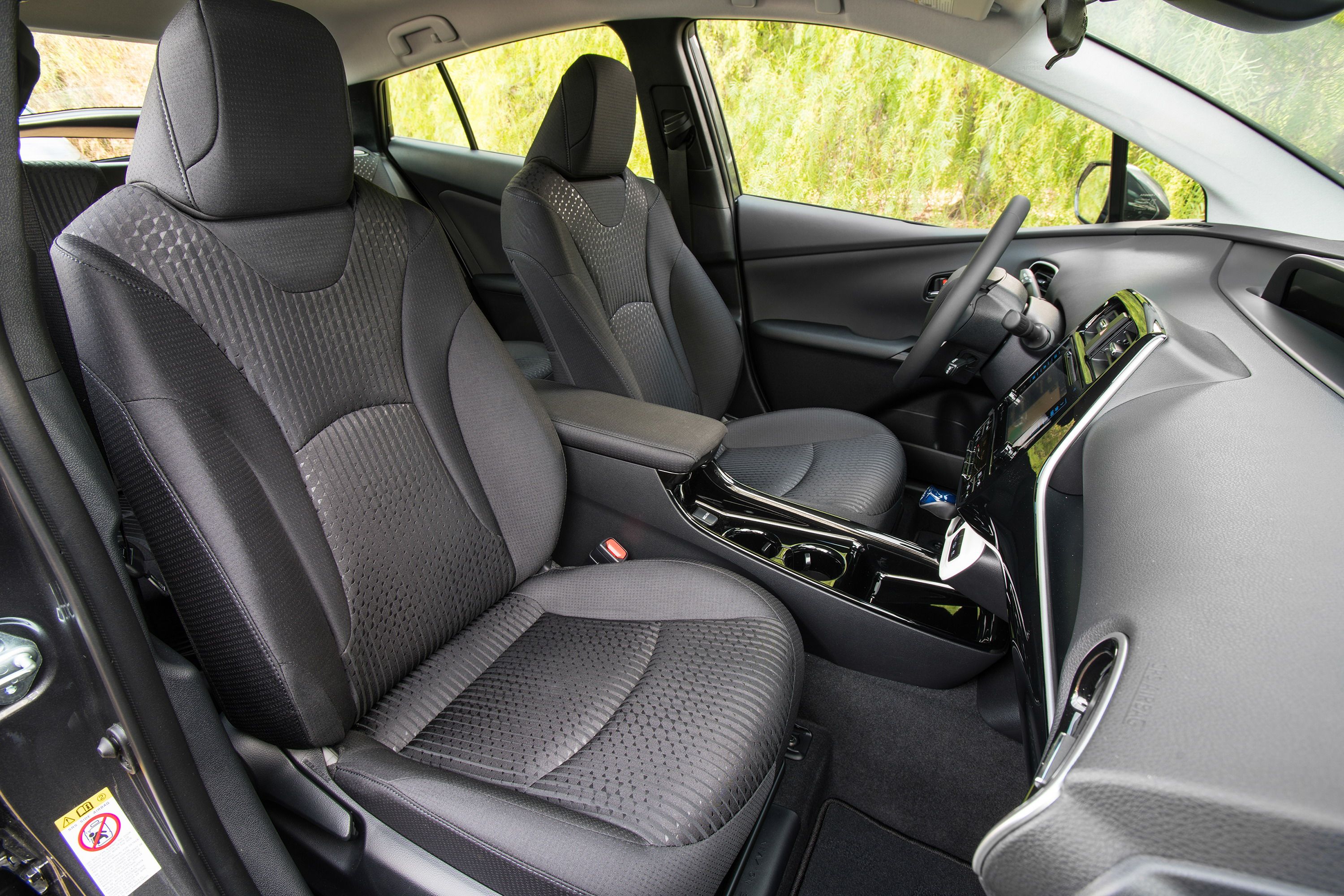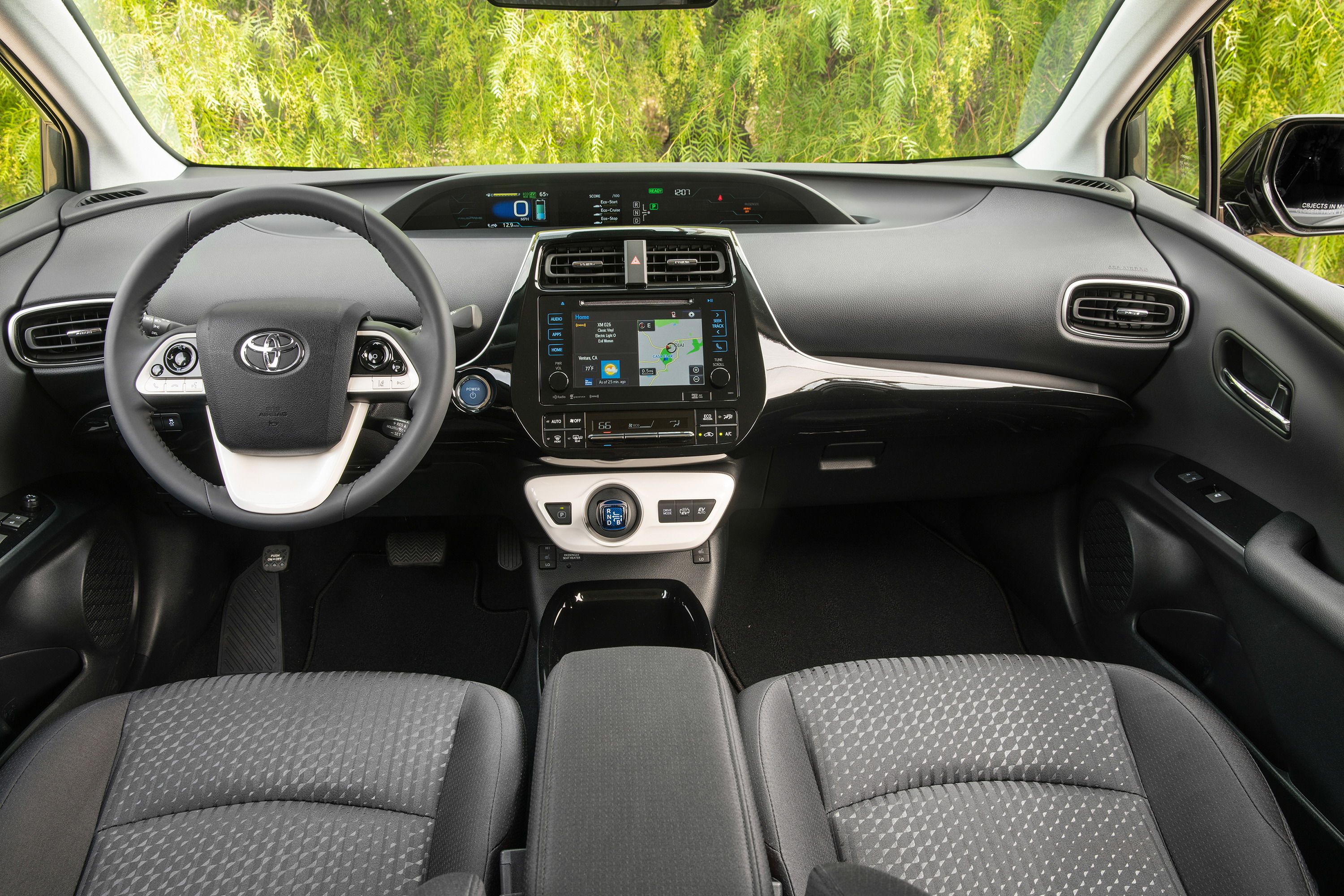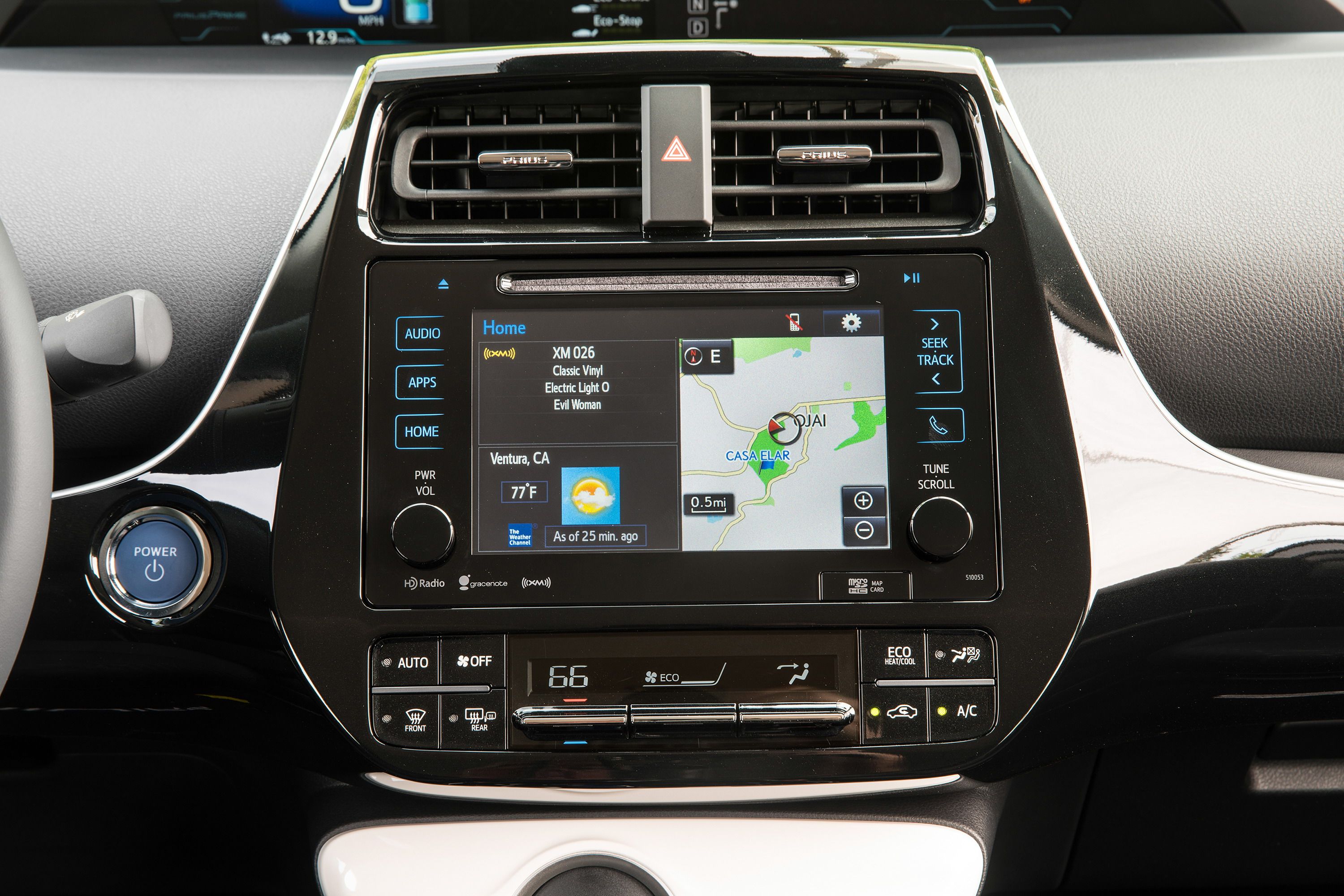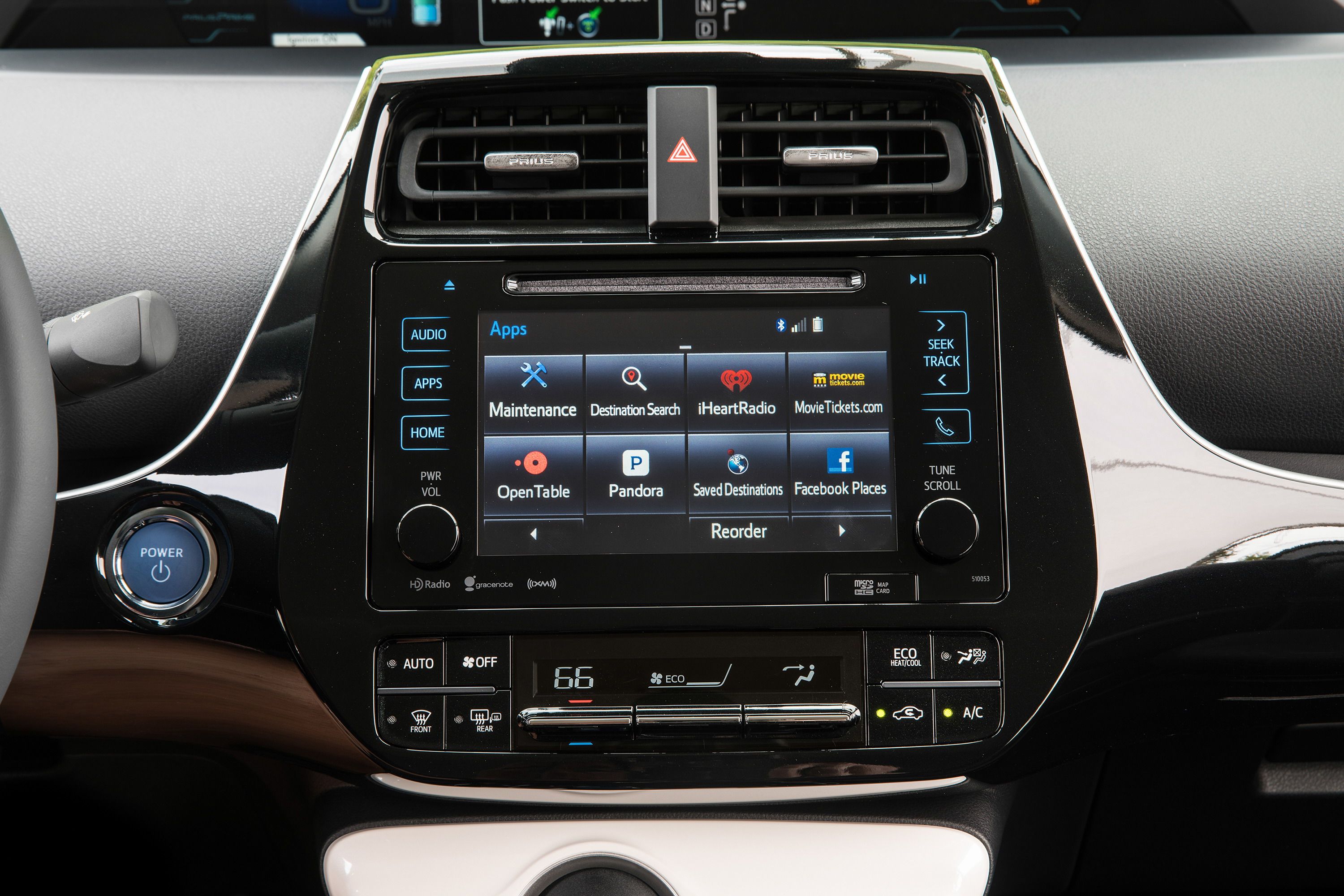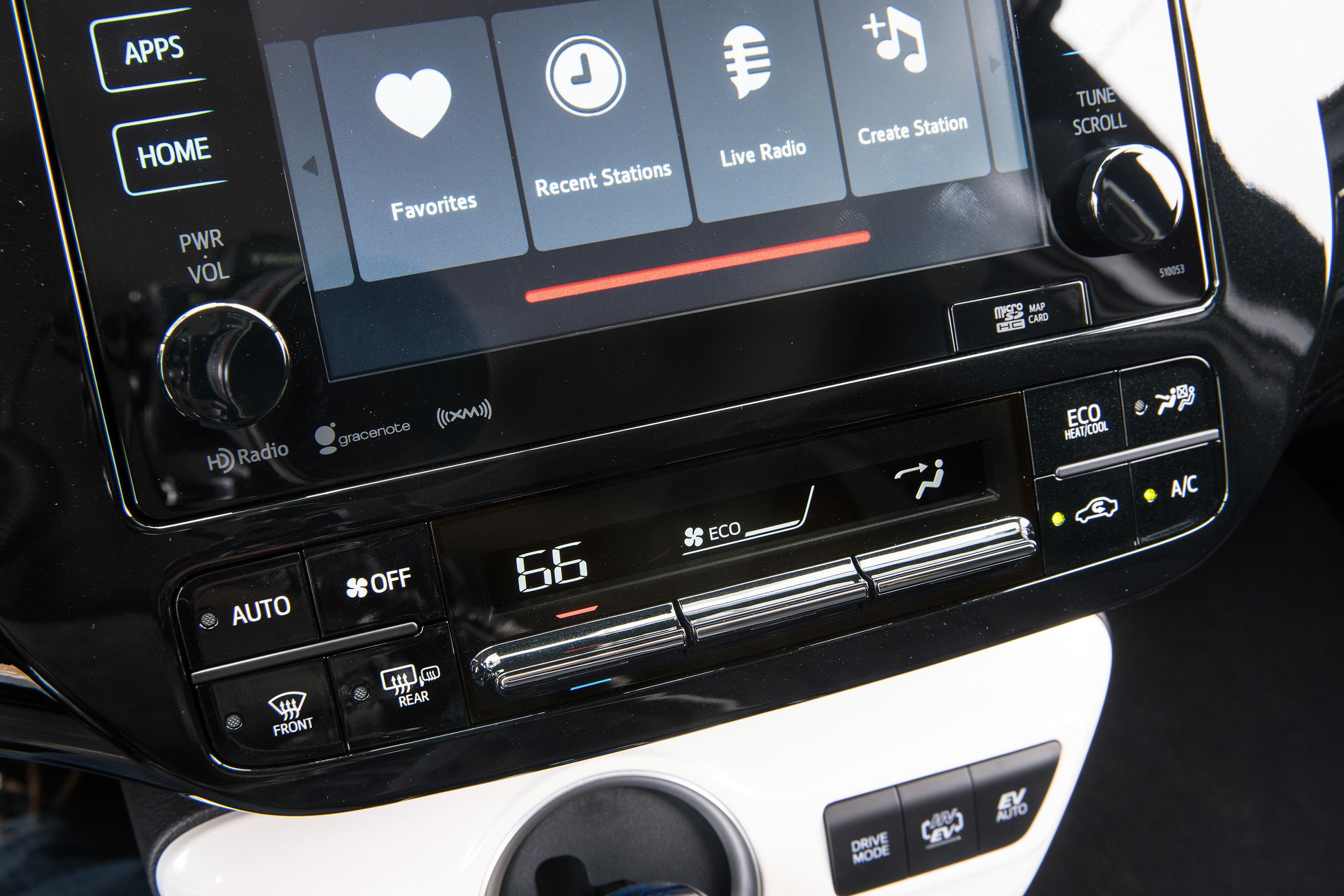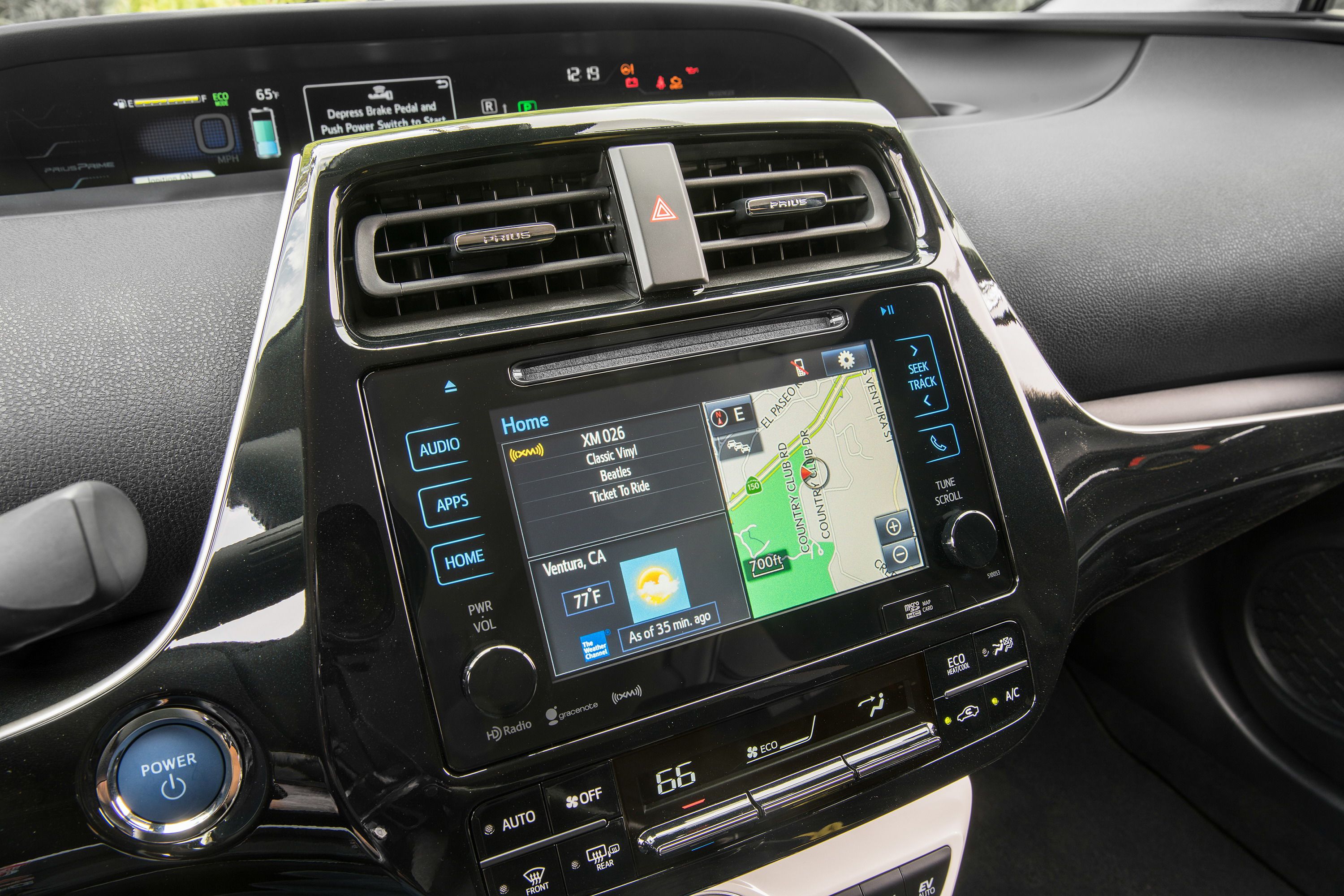Toyota announced the arrival of the four-generation Prius just last year, but of course, there’s always room for improvement, especially in the face of rapid advances in the world of all-electric transportation. But Toyota doesn’t do all-electric. Rather, the Japanese behemoth likes to pour its efforts into hybrids, and rightfully so when you consider the popularity of the ICE/electric motor combo nowadays. So how do you develop an industry leader without screwing up the formula? Enter the Prius Prime. Framed as the “ultimate” iteration of iconic gas-sipper, the Prime bears a new aesthetic, even more standard tech, and a revamped, hyper-efficient plug-in powertrain.
Toyota lauds the Prime as the “most technologically advanced, best-equipped” model ever offered under the nameplate. I got a chance to spend a day with it in Ojai, California, and no doubt, this thing gives off a definite sci-fi shuttlecraft vibe, just as previous iterations have before. But underneath the spacey ambiance, you get the feeling that all the Prime really wants is to be just another car on the road.
Confused? Read on, and I’ll explain…
Continue reading to learn more about the 2017 Toyota Prius Prime.
2017 Toyota Prius Prime – Driving Impression And Review
- Make: Array
- Model: 2017 Toyota Prius Prime – Driving Impression And Review
- [do not use] Vehicle Model: Array
Exterior
Let’s cut to the chase, shall we? The 2017 Prius Prime looks different. Very different. It’s unlike anything else on the road right now, and that includes other Priuses (Prii?). Toyota says it doubled down on the whole “make-the-Prius-standout” philosophy when designing the Prime, and, well… mission accomplished?
The fascia in front and back is utterly unique. Up front, the pointed headlights are studded with four squared projectors per housing, which swoop down into a blacked-out acrylic grille to form one continuous curved shape.
In back, you’ll find an aesthetic called “dual wave,” seen most prominently in the roof and hatch lid. There’s also a single, continuous LED taillight band that appears to enhance the double-bubble look.
As you might expect, the shape is quite slippery, offering up a 0.25 drag coefficient to help the Prime glide through the atmosphere without wasting precious energy. Supplementing the Cd are automatic grille shutters, plus standard 15-inch alloy wheels with aero-efficient, two-tone covers.
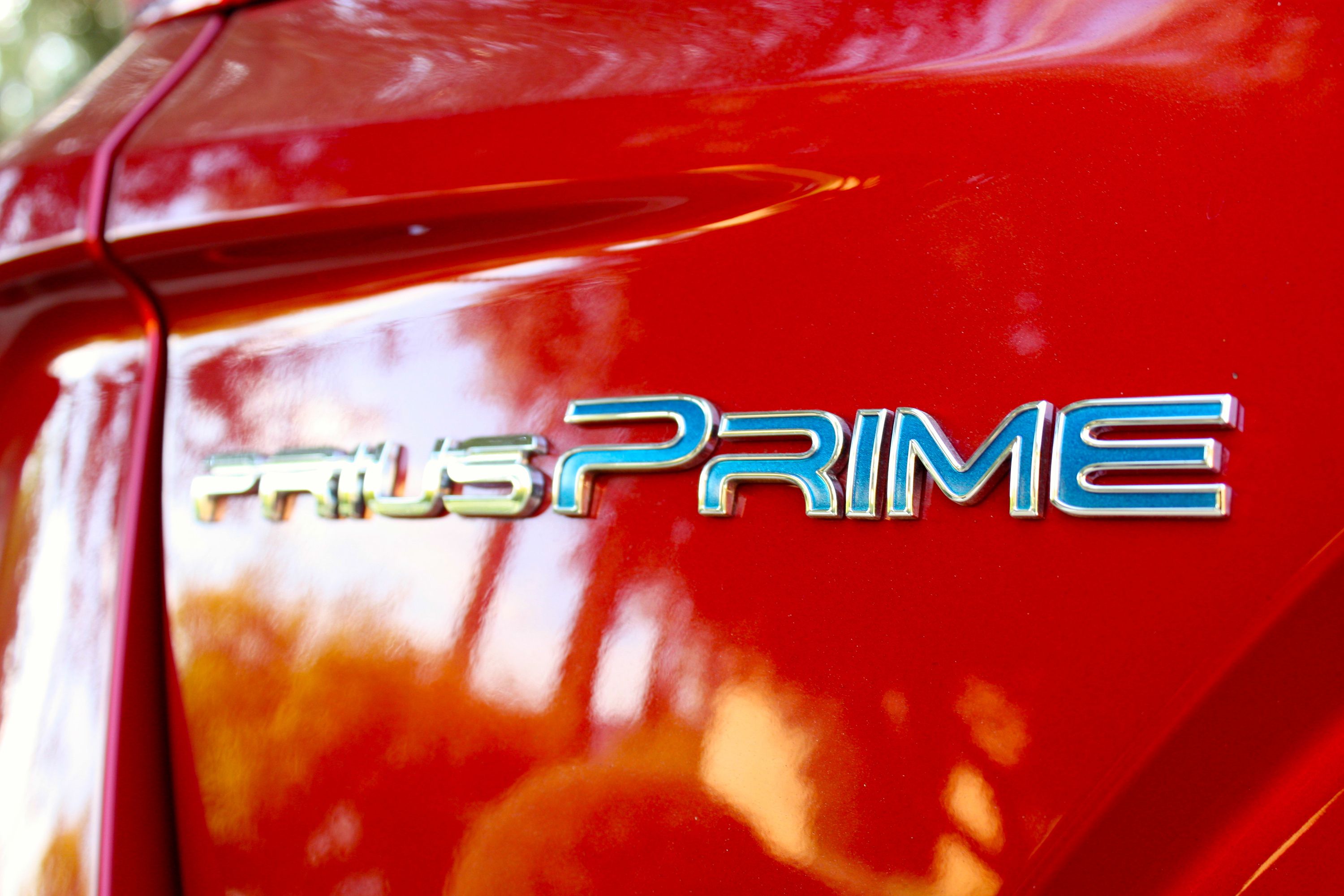
|
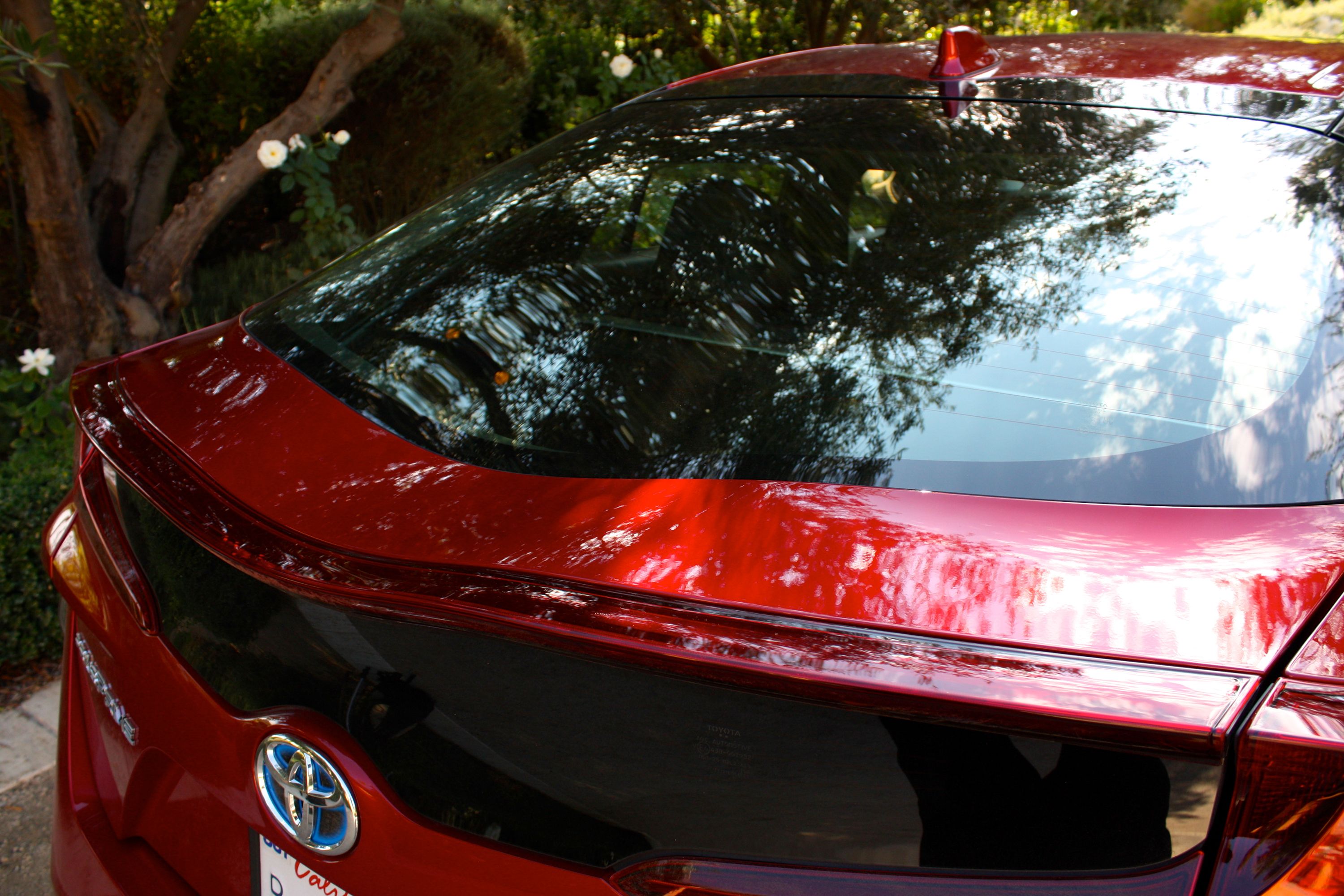
|
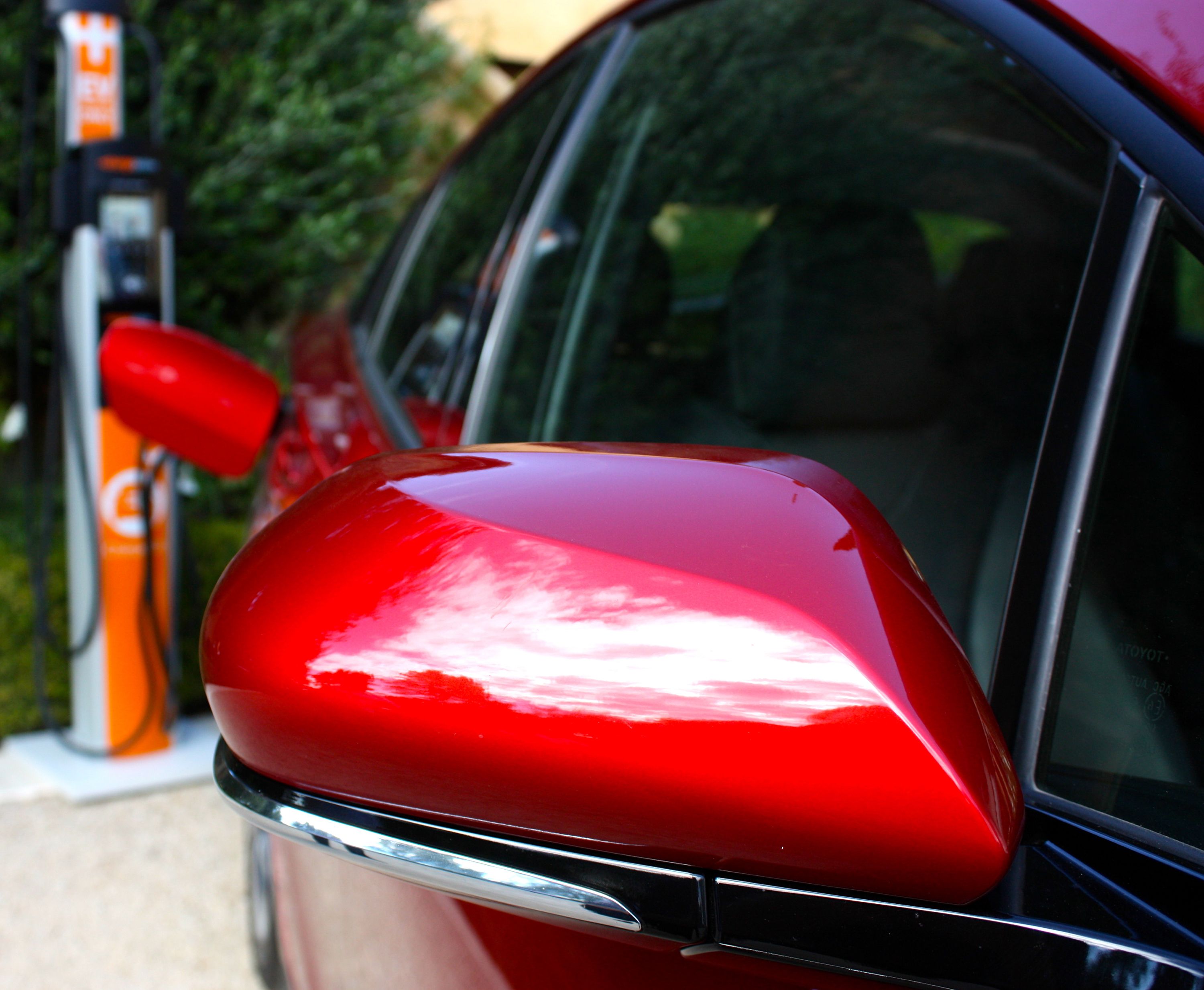
|
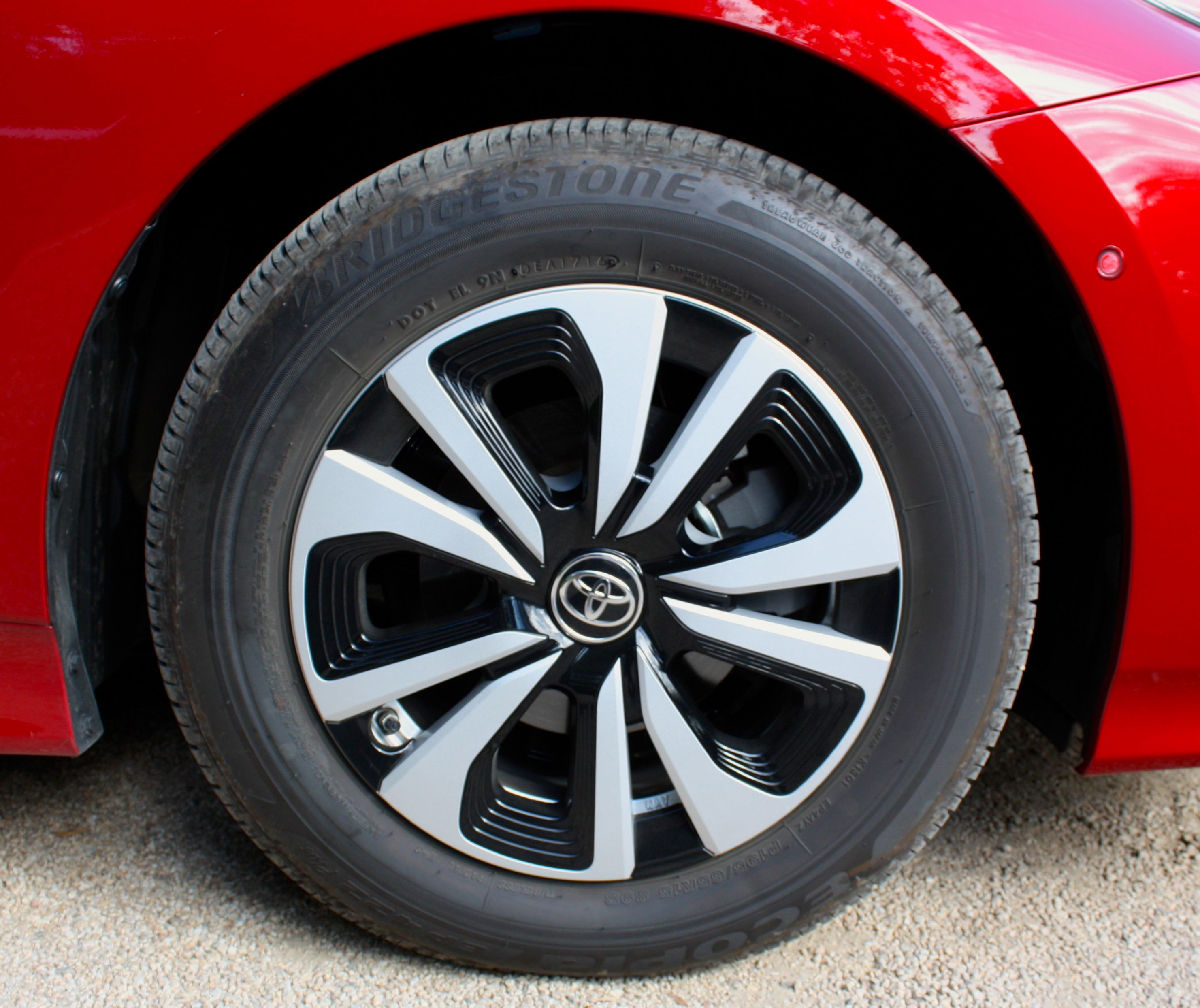
|
The Prime is also larger, measuring in with an extra 6.5 inches in length and 0.6 inches in width. Overall height was dropped by 0.8 inches.
There are six exterior paint colors to choose from. Standard hues include Classic Silver Metallic, Magnetic Gray Metallic, Titanium Glow, and the Prime-exclusive Blue Magnetism. The two remaining colors, Blizzard Pearl and Hypersonic Red, are available for extra outlay.
Impression
After Toyota lifted the veil on the restyled four-generation Prius last year, I applauded its efforts in designing something that pushed the envelop a little bit, writing, “I’ll take the weird over the bland pretty much every time.”
That sentiment hasn’t changed. I would still prefer a car that’s unique and ugly, as opposed to commonplace and bland. That said, the Prime is pushing that preference to its limit.
Busy doesn’t even begin to describe the front end on this thing. It’s like an air-traffic controller juggling flaming chainsaws while running for public office and raising a two-year-old. Sure, it’s very high-tech, but in the end, it’s really a face only a mother could love.
Toyota says the Prime takes its styling cues from Mirai, which makes sense when you look at this thing. But again – it’s not the sort of inspiration most folks would turn to. Something tells me the comments section will agree.
I get it though. Toyota wants to build its brand recognition with a cohesive look between its hybrids and hydrogen car. But to be honest, I think a better direction would have been to focus almost entirely on cutting down on drag, with styling coming second, basically prioritizing function over form. At least that way there would be an excuse for the ugliness.
Still, the eco-zealots will probably like it. This thing makes a statement, no doubt about it, so if you want people to notice your environmentally conscious conveyance, then the Prime is sure to fit the bill.
Interior
Inside, you’ll find more or less the same layout and design motif as previous Prius models. The first thing to catch your eye will be extensive utilization of black and white contrast, particularly on the top trim level.
Seating capacity is capped at four, with a broad armrest/cup holder combo occupying the middle of the rear bench. Nearly 20 cubic feet of cargo space is on offer with the rear seats in use, while the bench comes with a standard 60/40 split. The Prime also gets more headroom thanks to lower mounting for the engine, motor, and seats.
To keep the cabin at the right temperature, users can activate the A/C remotely using the key fob or a smartphone app. On the flipside, the Prime uses a heat pump to keep it toasty when running in EV mode, as no internal combustion means no excess heat. The front seats come with an electric heating function as standard.
Keeping it quiet is sound insulation for the windshield and glass, plus high exterior aero efficiency, which combine to reduce both wind and road noise while on the move. Toyota’s supple SofTex synthetic leather sees extensive use throughout, covering many surfaces that were previously plastic.
The three-spoke steering wheel is also covered in SofTex, and comes equipped with controls for the audio system, climate control, multi-information display, and hands-free calling. Other features include Smart Key entry, a push-button starter, two 12-volt power outlets (one in front, one in back), wireless phone charging, and a USB power outlet. There’s also a standard backup camera.
One of the coolest additions is an available 11.6-inch HD multimedia display in the dash. Mounted vertically, the display offers tablet-like functionality and simply dominates the center console, replacing many hard buttons and knobs. A 7.0-inch central display comes standard.
High on the dash you’ll find a 4.2-inch horizontally mounted multi-information screen – standard stuff, as far as the Prius is concerned. This is where you’ll find all the hybrid-centric info and eco readings, such as an Energy Monitor, Climate Control Indicator, average Eco Score, Eco Savings Record, and an Eco Diary. Rounding it out is a full-color heads-up display.
Standard infotainment gear includes a six-speaker Entune audio system, with navigation, plus broad app support. There’s also AM/FM, an external audio input, USB 2.0 with iPod support, voice recognition, Bluetooth connectivity, and Siri Eyes Free.
Finally, customers have plenty of optional equipment to pick and choose from, such as HD radio, Sirius XM, more speakers, and more connectivity.
Impression
Inside the cabin, I really like how Toyota stuck with the sci-fi shuttlecraft theme. The multiplicity of screens look really cool, and the broad dash gives it a command center sort of feeling.
Speaking of the screens, the upgraded 11.6-inch unit works quite well in this car. Like we said in an earlier news piece, the portrait layout and large size reminds us of something Tesla might do, and it’s likely Toyota is following the California brand’s lead in terms of what people expect from a premium, high-tech electrified automobile.
That top-shelf attitude is repeated elsewhere inside – there’s slightly less cargo room than before, and one less seat to stuff a passenger, but the tradeoff is a cabin that feels more spacious and comfortable. And that’s precisely what you want with a more lavish trim level.
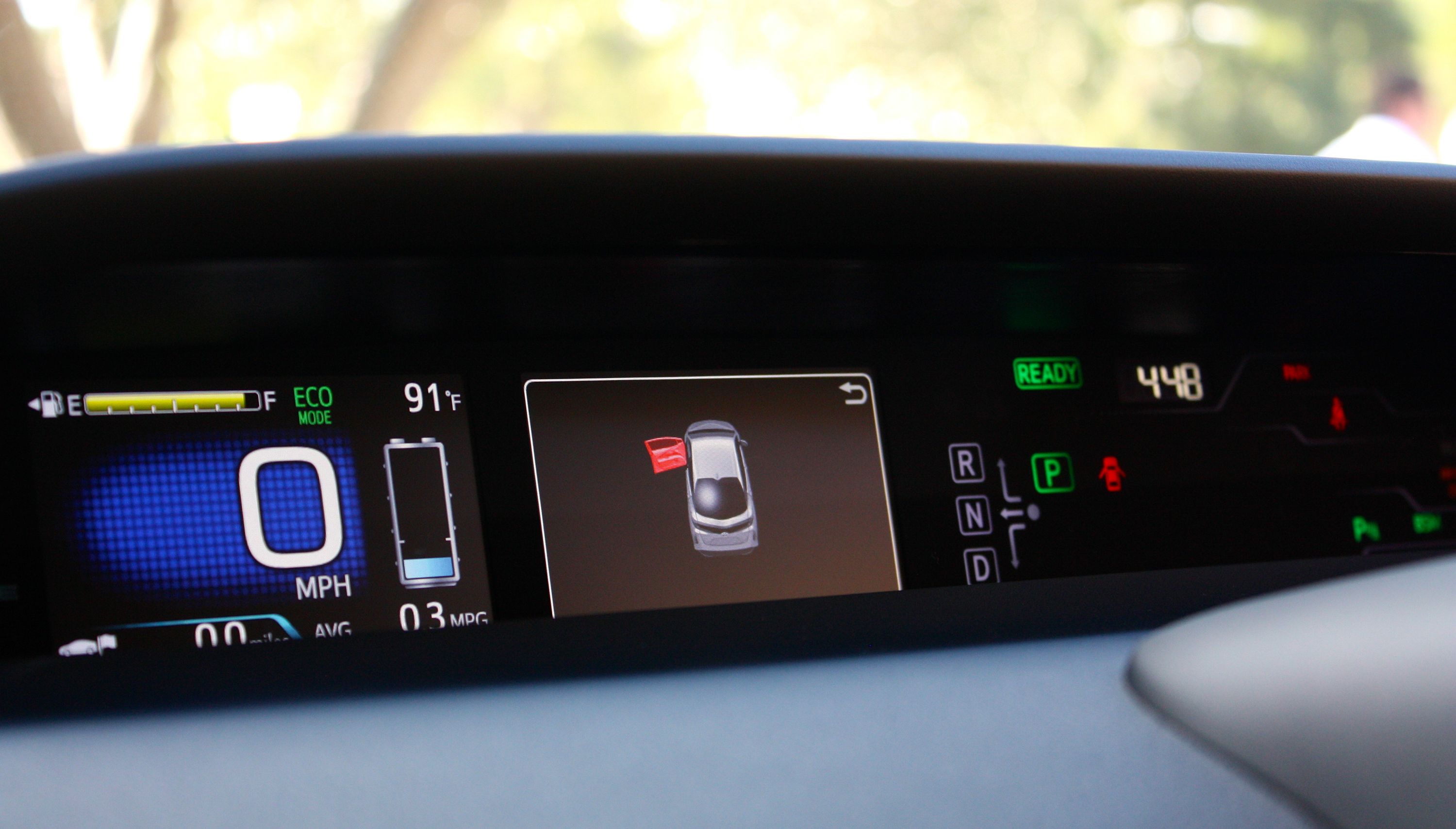
|
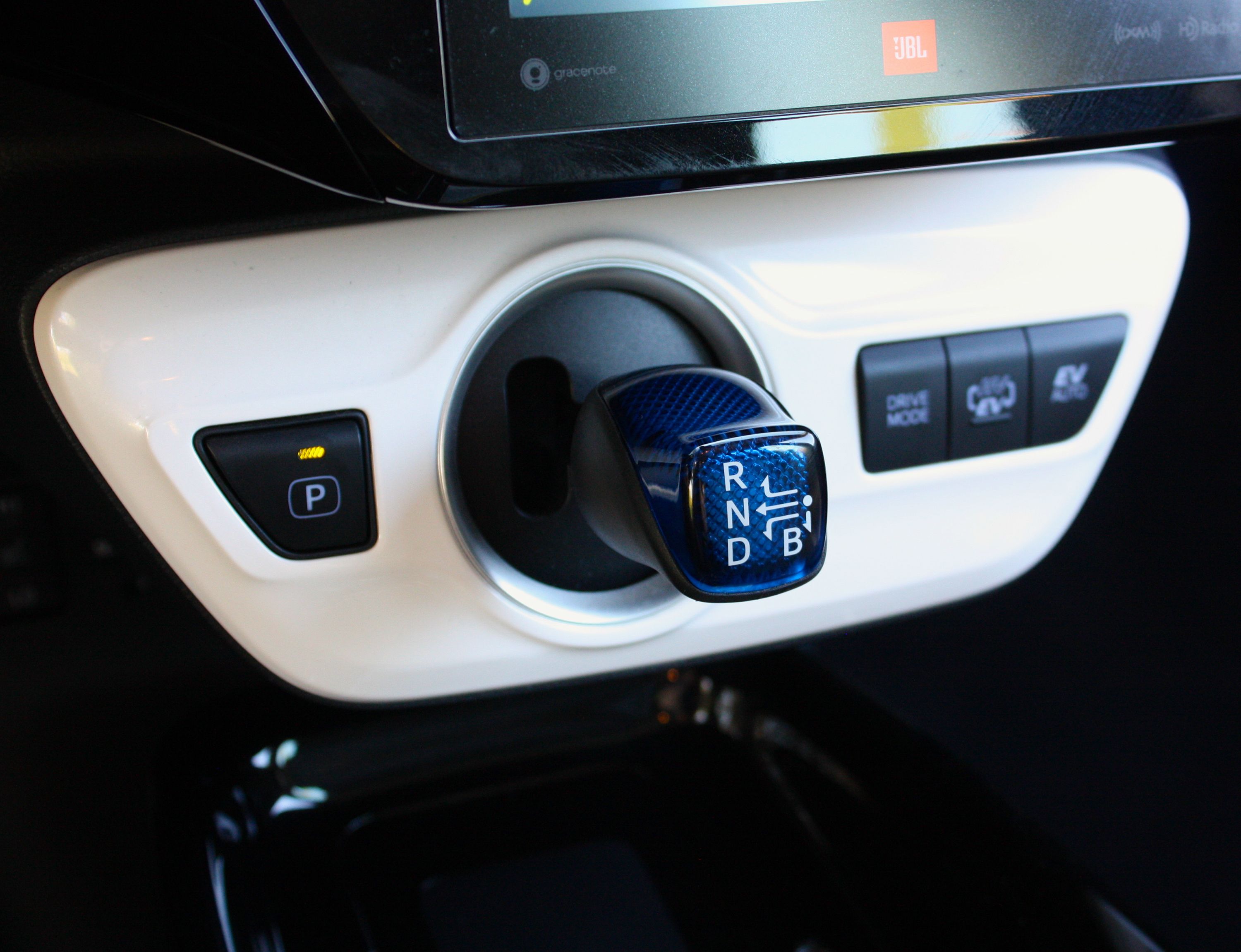
|
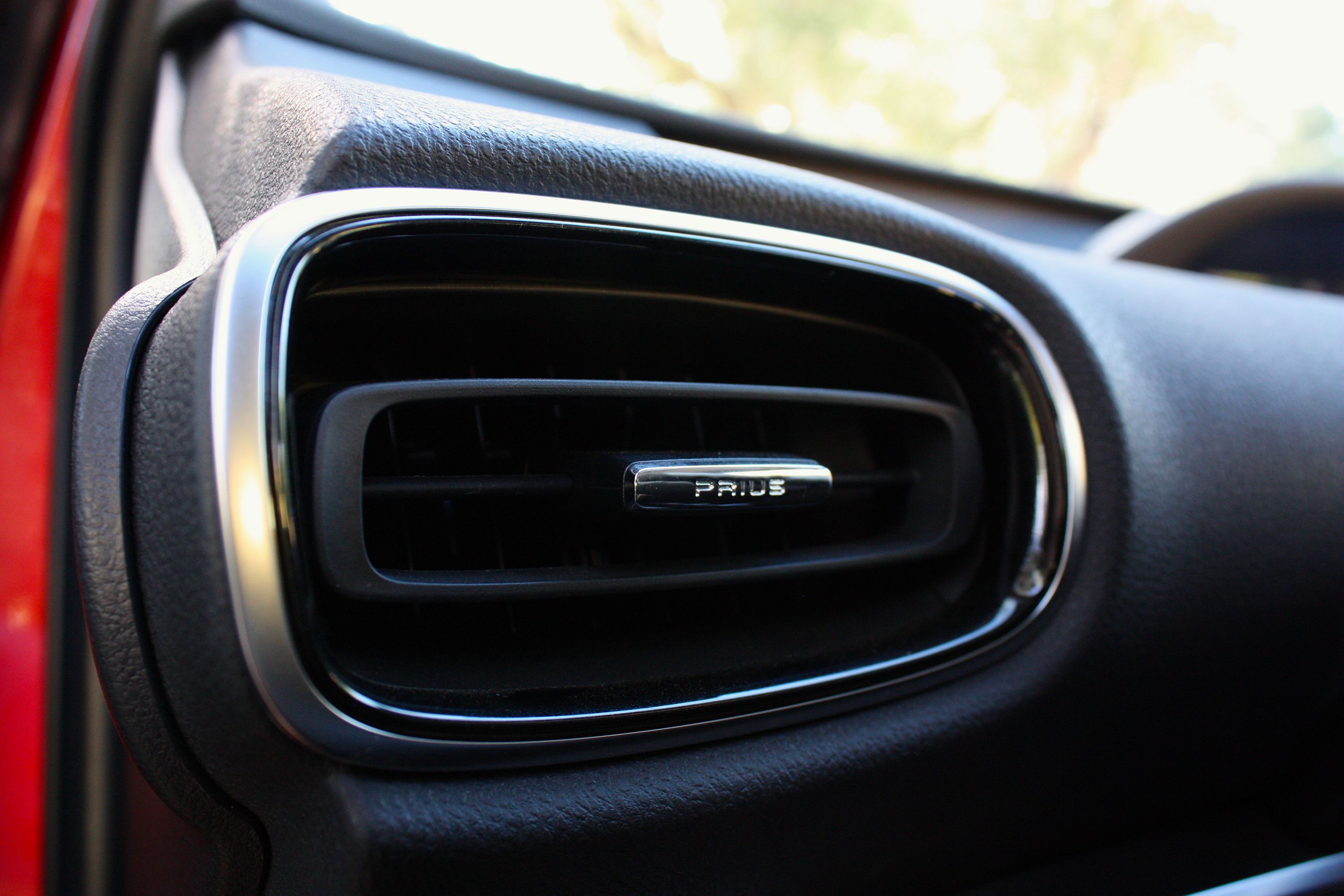
|
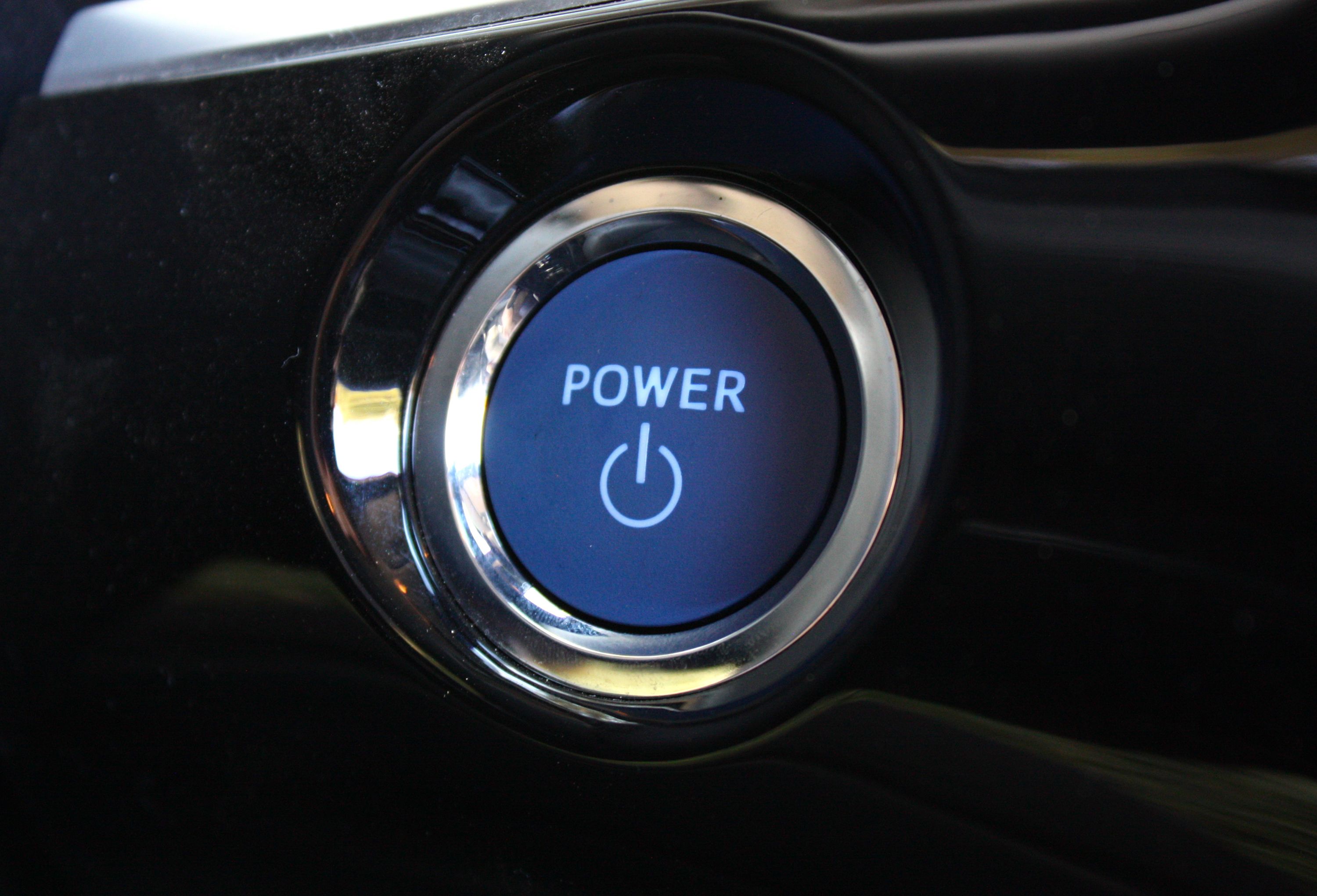
|
That impression of luxury continues with the upgraded materials, as well as a noticeable improvement to the car’s overall NVH (noise/vibration/harshness). Last year when I drove the fourth-gen Prius, I was put off by how loud it was on the road, and the ride was simply too harsh for an efficiency-minded commuter.
The Prime improves on all these fronts, in particular the ride quality, possibly due to the model’s higher curb weight. I’d judge it to be acceptable – not great, but pretty good overall.
One area that wasn’t improved is rear visibility. It’s a good thing the backup camera comes standard, because it’s damn near impossible to judge where the back end is from the driver’s seat.
What stands out most to me is how the Prime won’t compromise on the good stuff just because it’s a hybrid. It’s a theme we first saw with the release of the fourth gen, and judging by the Prime’s pleasant cabin space, it looks like Toyota is moving in the right direction.
Drivetrain
New styling outside and a better place to sit inside are all well and good, but I’d be lying if I didn’t say the powerplant is what matters most in a Prius.
On the internal-combustion side is a 1.8-liter Atkinson-cycle four-cylinder engine, the same ICE seen previously on the Prius. The engine uses a 13.0:1 compression ratio, an exhaust gas recirculation system, and a hyper-efficient water pump to keep gasoline usage at a minimum. In fact, Toyota says the 1.8-liter can achieve a remarkable 40 percent thermal efficiency, which is roughly 10 to 15 percent higher than the industry average. And that’s on regular low-octane pump gas, by the way.
On the electricity side is a new 8.8-kWh lithium-ion battery pack, which offers double the capacity as the outgoing Prius PHEV. The battery takes about 5.5 hours to top off when plugged into a regular household socket, or you can connect to a 240-volt source to reduce the charge time down to two hours. Regenerative braking ups efficiency even more while on the move.
Further upgrades include a new dual-motor drive, which uses a one-way clutch to engage both the gas engine and electric motor for motive power. Routing it all to the front tires is a planetary-type CVT.
The end result of all this new stuff is an estimated 124 MPGe, an impressive 26-percent increase compared to the preceding Prius PHEV. That figure is also the highest miles-per-gallon-equivalent of any PHEV on the road today. Regular hybrid driving is equally impressive, with 55 mpg in the city, 53 mpg on the highway, and 54 mpg combined.
Range-wise, you’re looking at 25 miles between plugs in all-electric mode. That’s enough to satisfy up to half of U.S. commuters, which means no gas consumption whatsoever between home and the office. Dip into the dino juice, and you’ll get a mighty 640 miles with a full tank and a full battery.
Impression
Clearly, the Prius Prime gets tons of miles. There’s even available predictive software that will analyze recurring driving routes and recommend optimal braking and acceleration strategies to max out the mpg.
But putting all the numbers aside, what’s it like to actually drive? Well, as you might expect, there’s not a whole lot of excitement on offer if skipping trips to the pump doesn’t get the juices flowing. Output is rated at a net of 121 horsepower, which means the Prime isn’t very fast. A run from 0-to-60 mph should take around 10.5 seconds, which is acceptable for commuting. You won’t fear onramps, and there’s instant electric torque as soon as you crack the throttle, providing a nice little squirt when needed. Just don’t expect to smash your neighbor’s Model S in a drag race.
That said, the car is very easy to drive, both on the freeway and around town. Beyond the extra little low-end kick, it feels pretty much like any other passenger car. And that’s a good thing.
Chassis And Handling
Like the other fourth-gen Prius models, the Prime is built on Toyota’s New Global Architecture, or TNGA. That means it’s both stiff and relatively lightweight, with lots of hot-stamped, high-tensile strength steel, and laser screw welding. Further weight reduction comes from various aluminum components, while the rear hatch is made from carbon fiber.
During the most recent generational changeover, the Prius also got a double-wishbone suspension. In front are MacPherson struts. The steering is an electrically-assisted rack-and-pinion set-up, while power-assisted disc brakes are in all four corners. The tires measure in at 195/65R15.
Impression
When Toyota ushered in the fourth-gen Prius last year, I was invited to drive it out on an autocross course. Although initially skeptical, it all made sense after tackling the cones in the new and old model back-to-back – simply put, the new car’s handling is hugely improved thanks to the new independent rear suspension.
Such was the case this time around when I started flogging the Prime out in the canyons of Ojai. Once again, I was surprised by the car’s agility, and although it wouldn’t be my first choice for an autocross event, it wasn’t a total pig either.
Once again, Toyota has brought the Prius further from the compromises that plagued previous generations, creating something more refined and easier to drive.
Safety And Convenience
The Prime gets Toyota’s Safety Sense P, a suite of active safety technology that’s standard across the line. This includes Pre-Collision System with Pedestrian Detection and Automatic Braking, Lane-Departure Alert with Steering Assist, Full-Speed Dynamic Radar Cruise Control, and Automatic High Beams. There’s also Rear Cross Traffic Alert for higher trim levels.
I reviewed Safety Sense when I drove the 2016 Prius last year. Check out the Safety And Convenience section here.
If you’re prone to tire punctures, it’s worth noting the Prime is equipped with a tire repair kit rather than a spare donut, most likely to help it cut weight and save space.
Prices
There are three trim levels to choose from, starting with the Prime Plus at $27,100. Up next is the Premium, which is $28,800. Finally, there’s the Advanced, which goes for $33,100.
Competition
Chevrolet Volt
First introduced for the 2011 model year, the Volt is a big contender for PHEV supremacy. Not only does it look sleek and stylish, but it’s got the all-electric juice to outdistance the Prius, with up to 53 miles offered between plug ins. The tradeoff is in price, with the base model starting at a worryingly high $33,995.
Read the full review here.
Ford C-Max Energi
The C-Max has been around since 2003, but the plug-in hybrid variant, which Ford has dubbed the Energi, first saw light in 2012. Unlike the hatchback Prius, the C-Max offers a larger, mid-size MPV body style. Up to 20 miles of emissions-free driving is possible with a topped-off battery pack. Like the Chevy, the Ford is also rather expensive, starting at $32,460.
Read the full review here.
Conclusion
The Prime should be considered the latest milestone in Toyota’s ongoing crusade to transform the hybrid into just another drivetrain. It’s quickly becoming the third choice between gas and diesel, shucking its associations with the peculiar, and gradually gaining acceptance in the mainstream.
At the same time, this Prius proudly flaunts the things that make it stand out. The styling is one good example, as is the interior.
So then, what exactly is it?
It’s an improvement on the formula, with more of the good, and less of the bad (styling notwithstanding). It’s a solid solution for the hypermiler on the go, a flexible transportation bubble that actually drives like a regular car.
In a phrase, it’s the best Prius yet.

